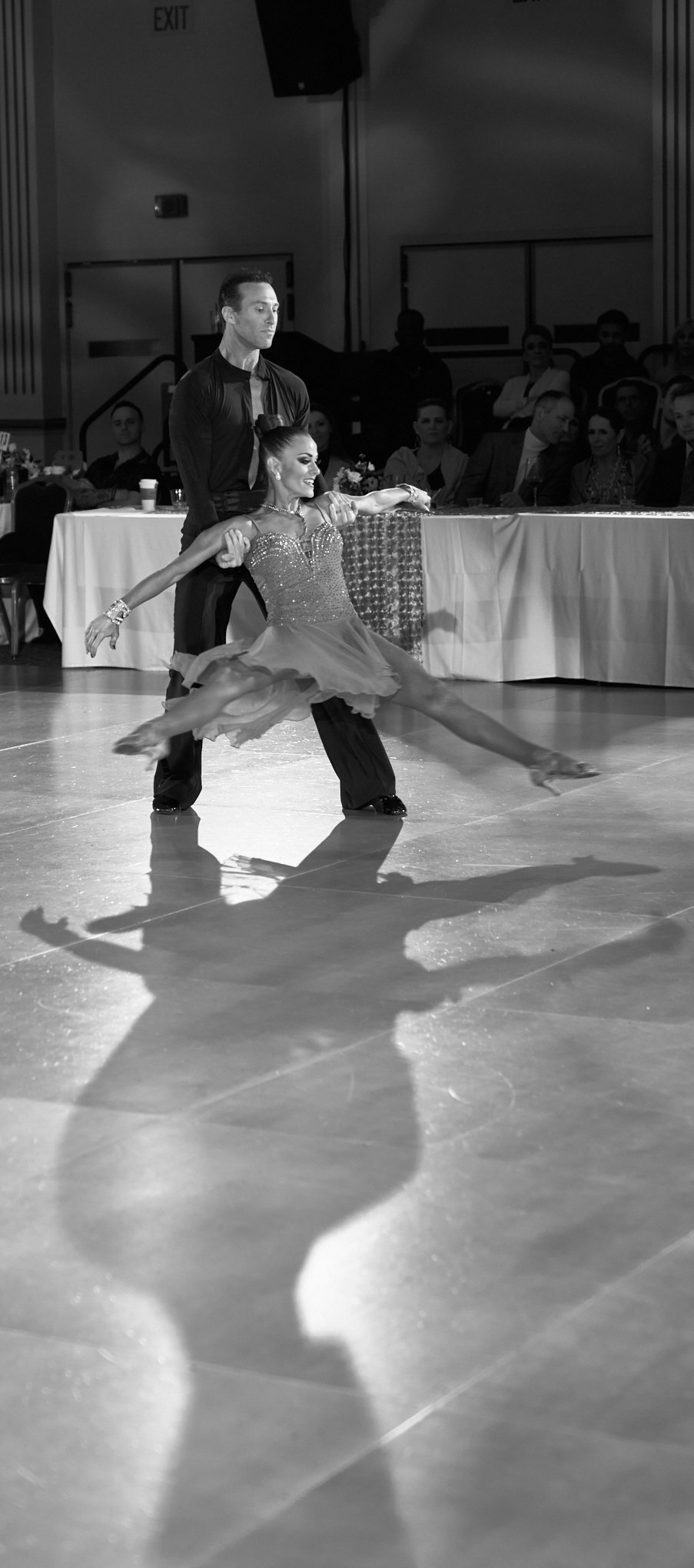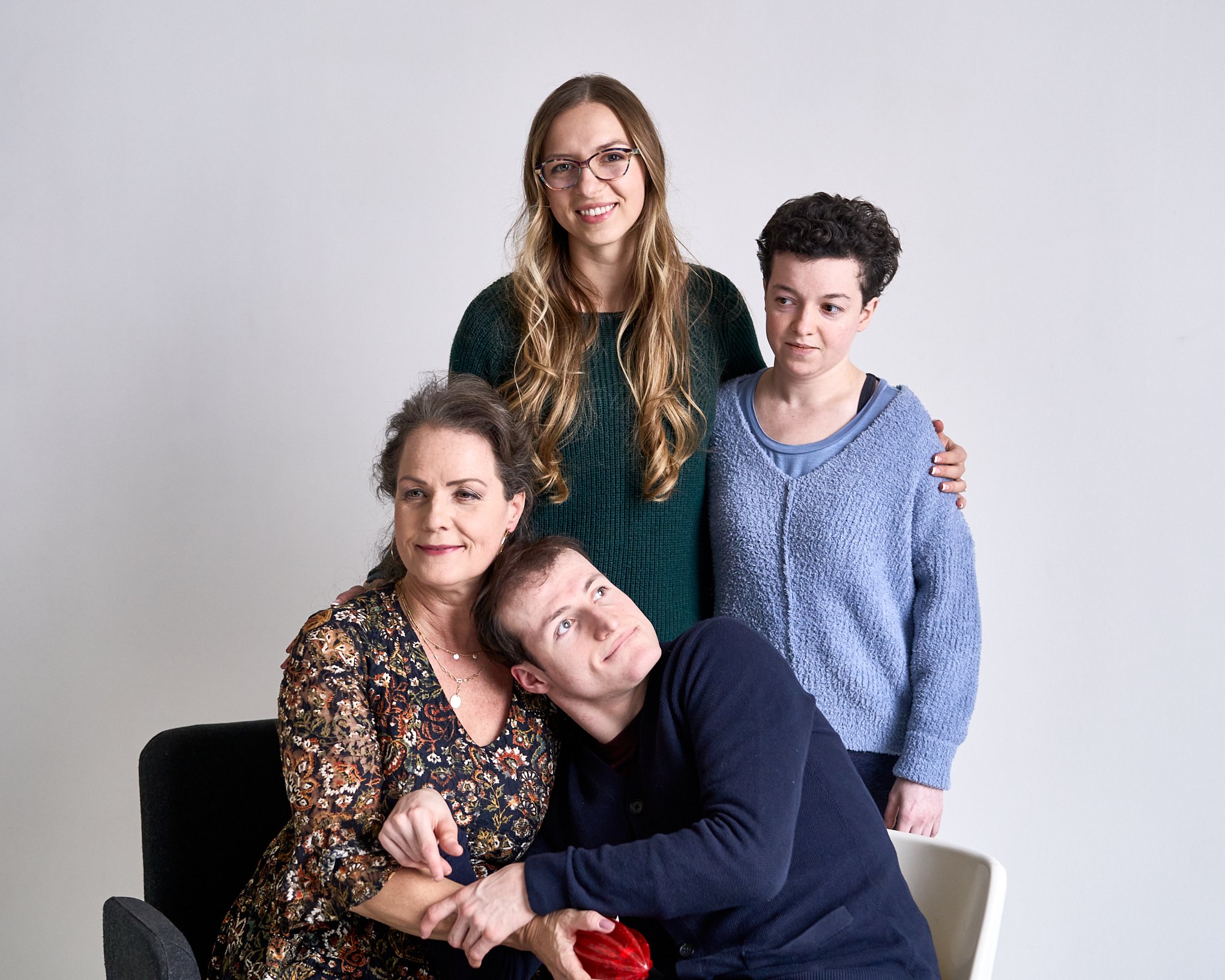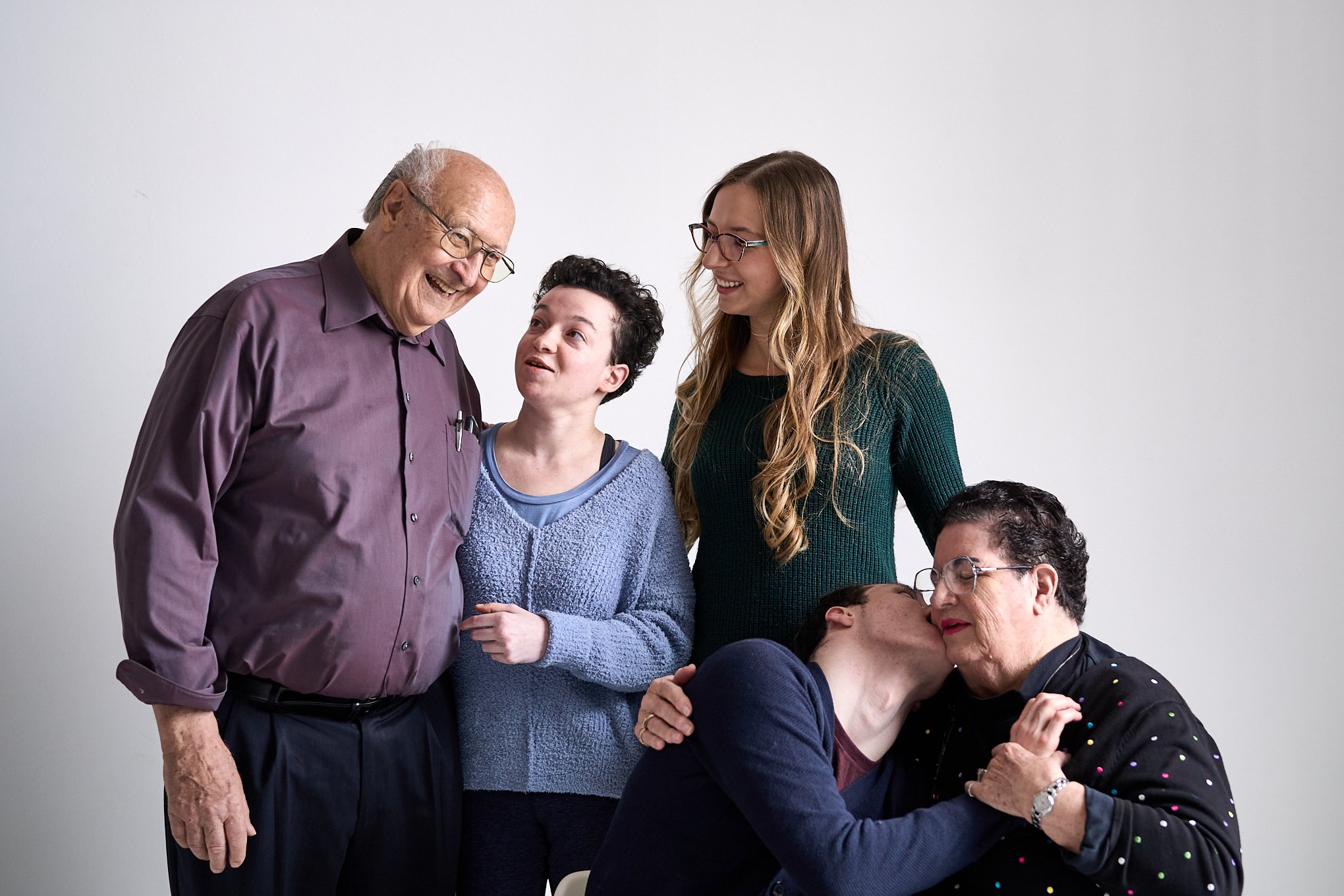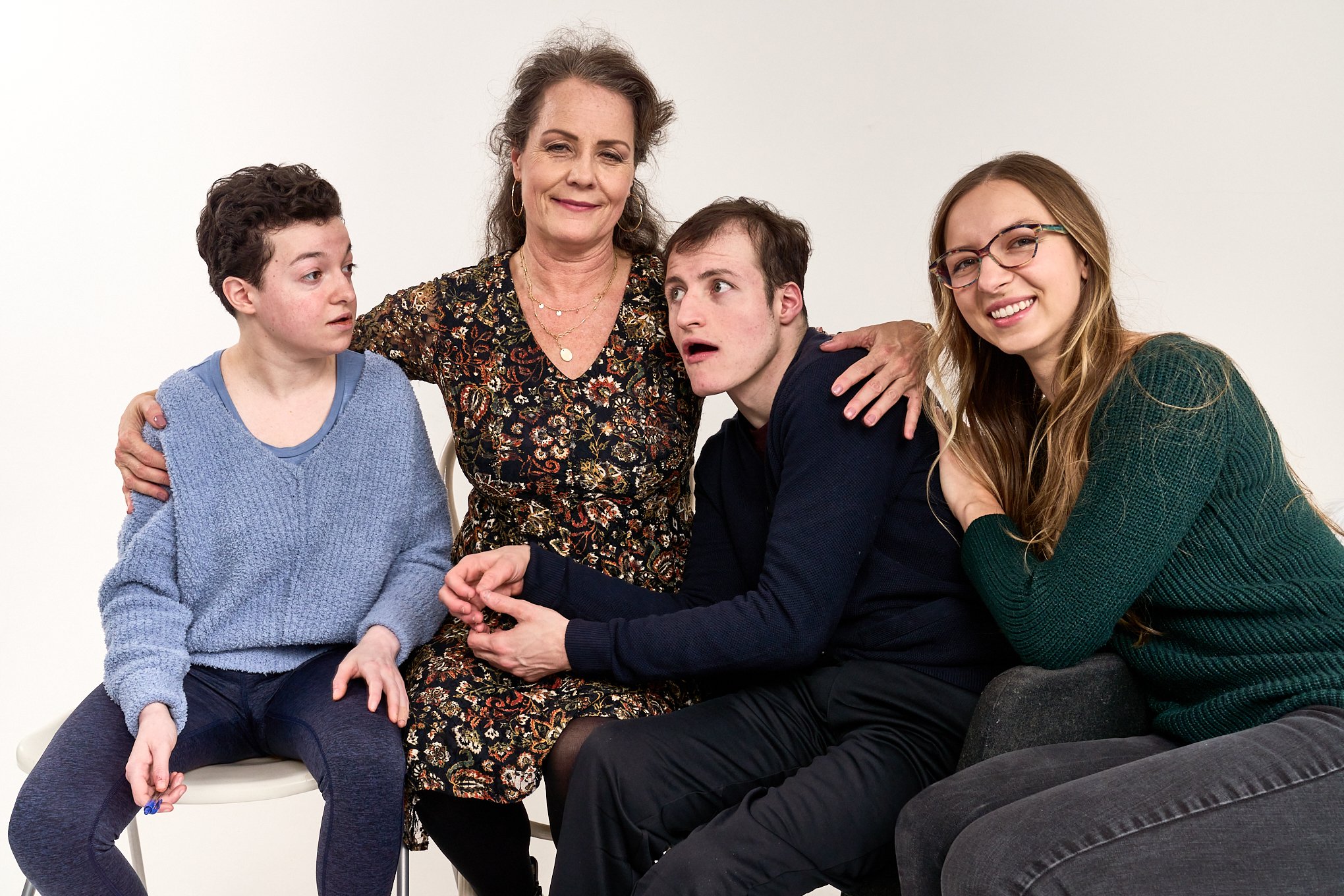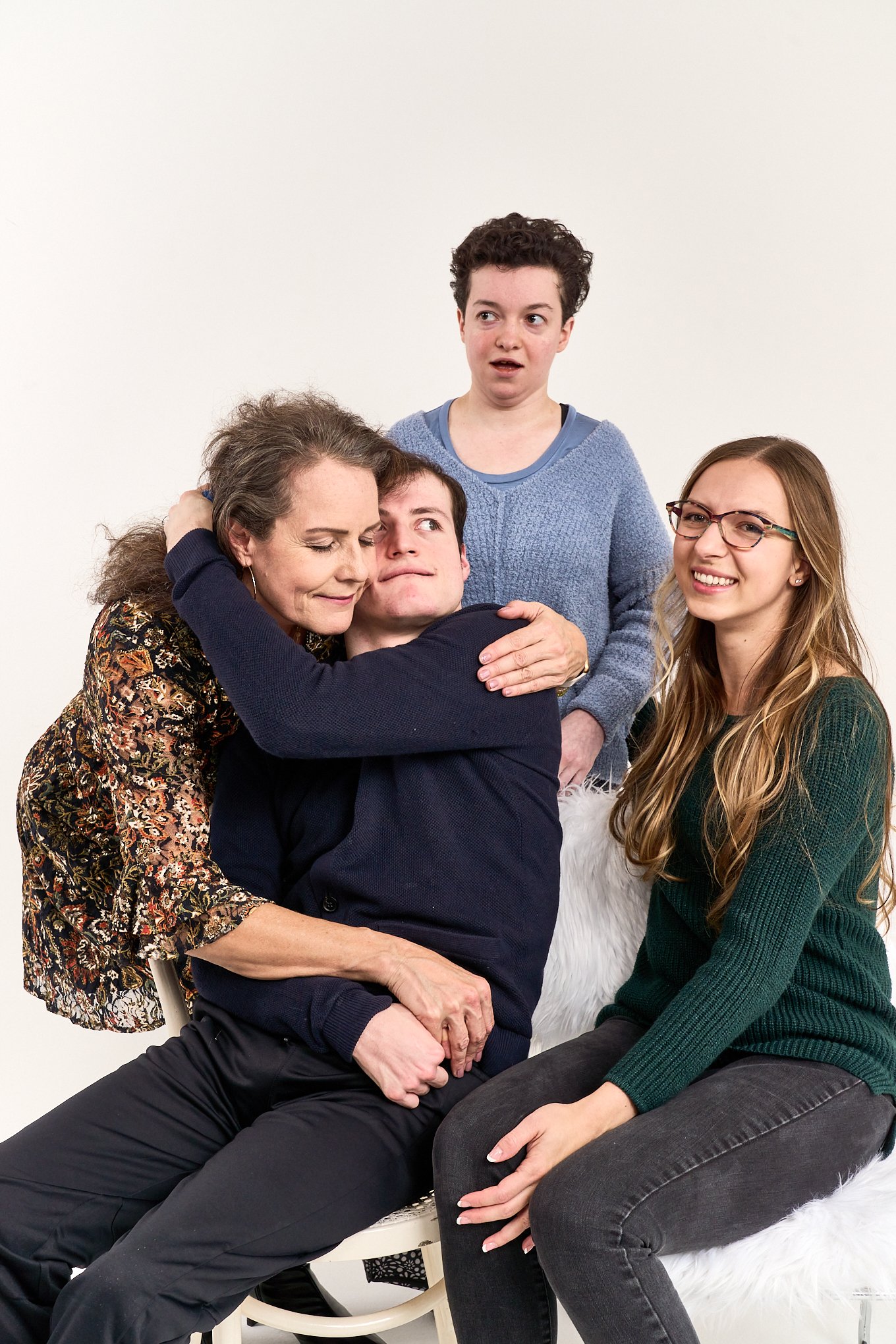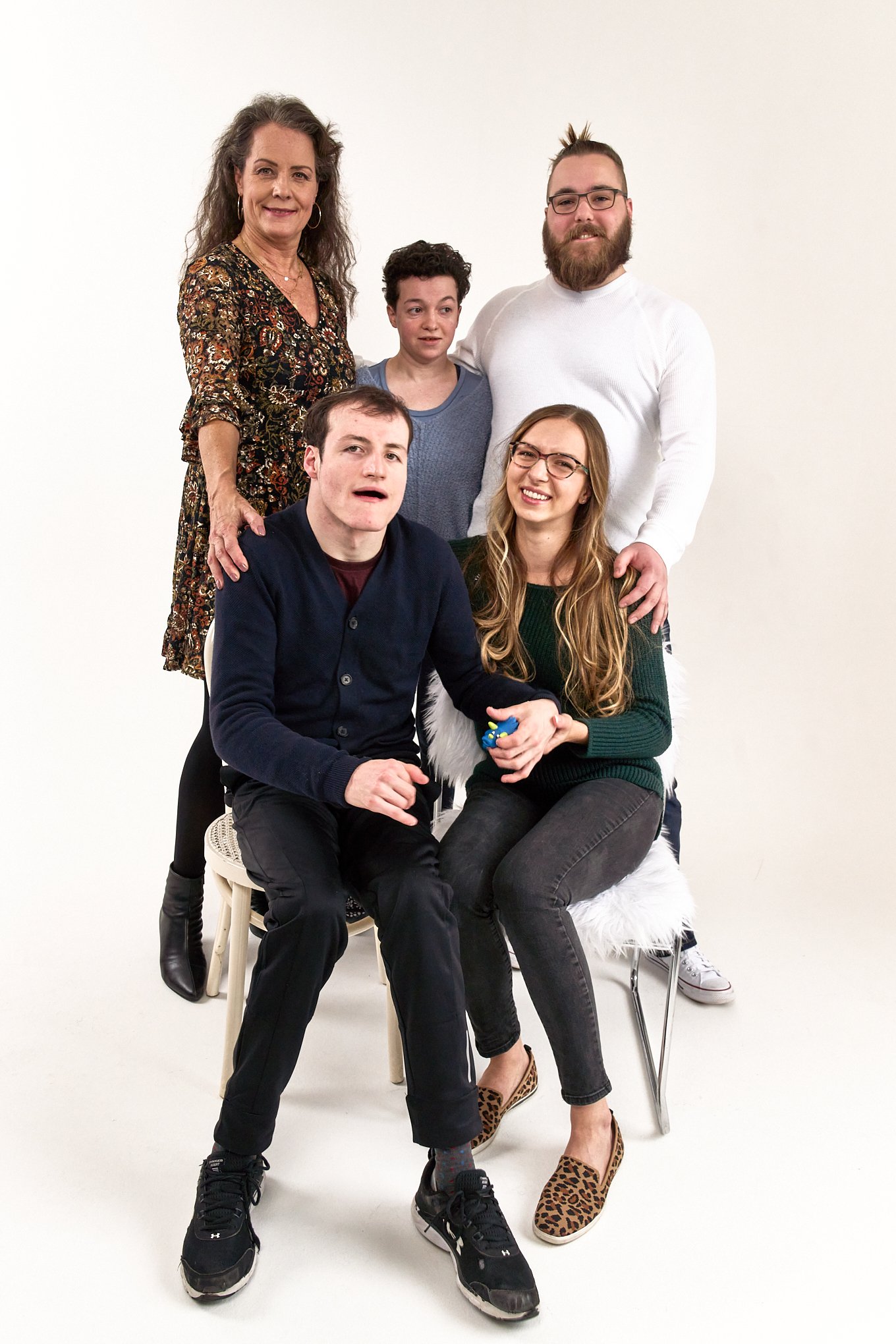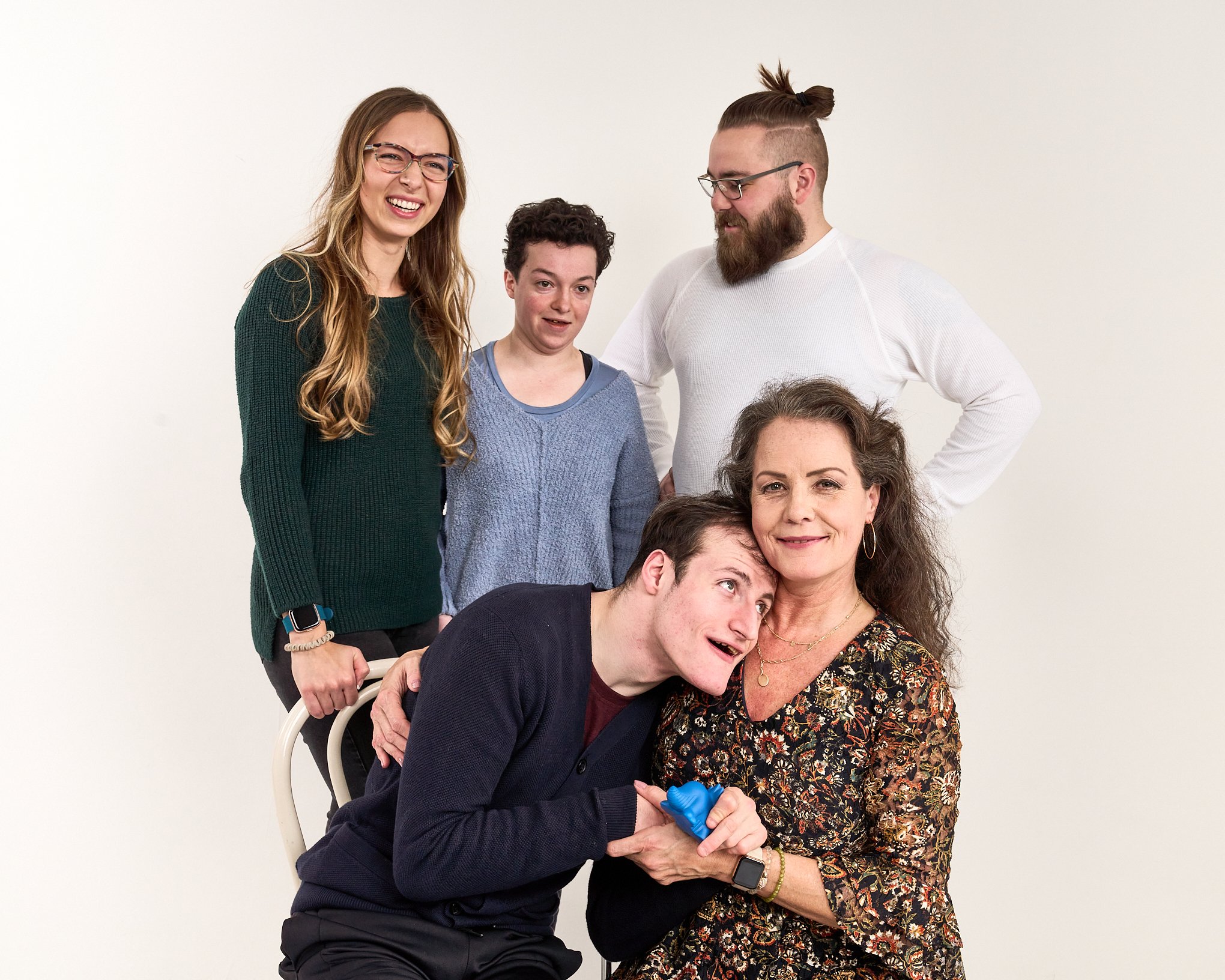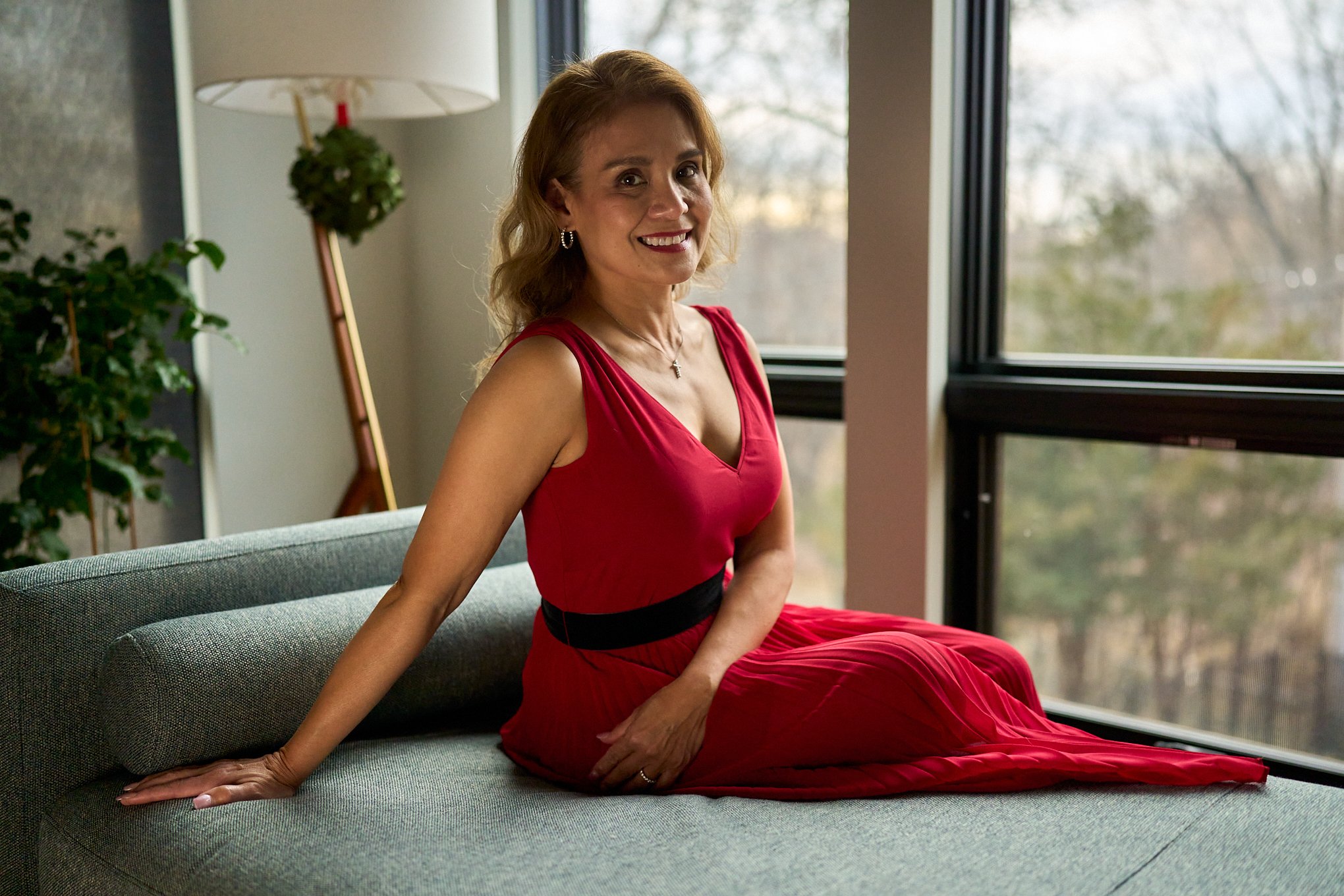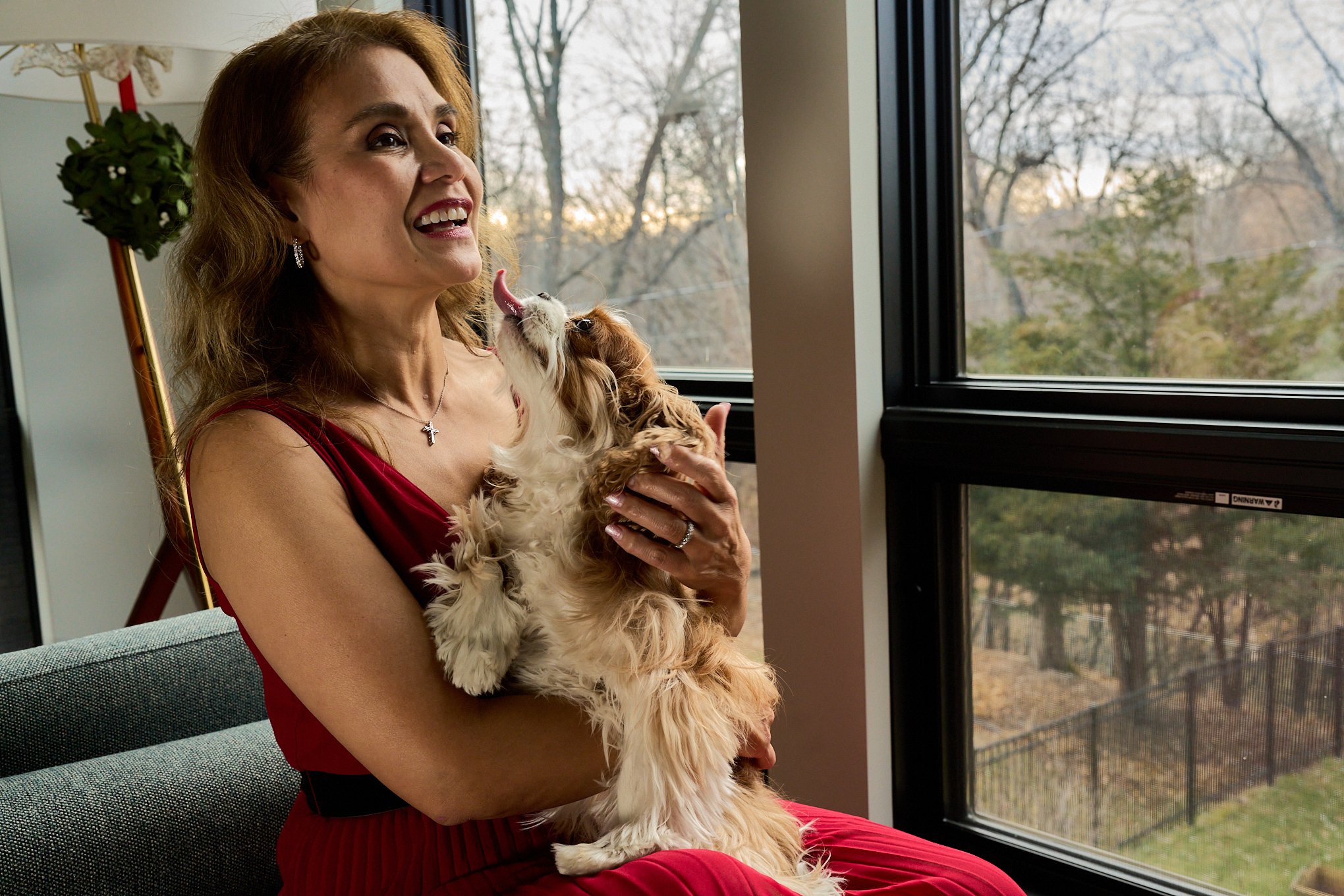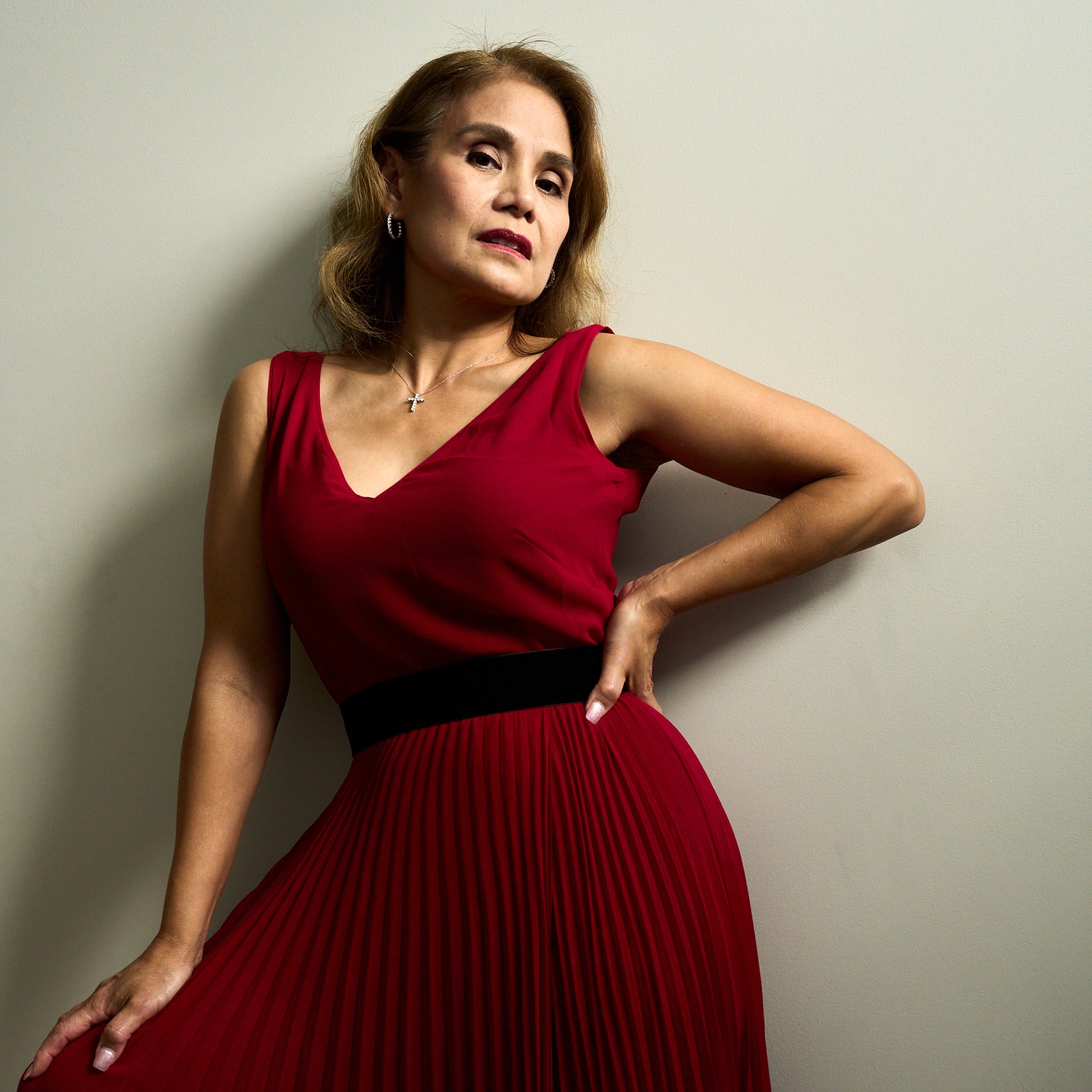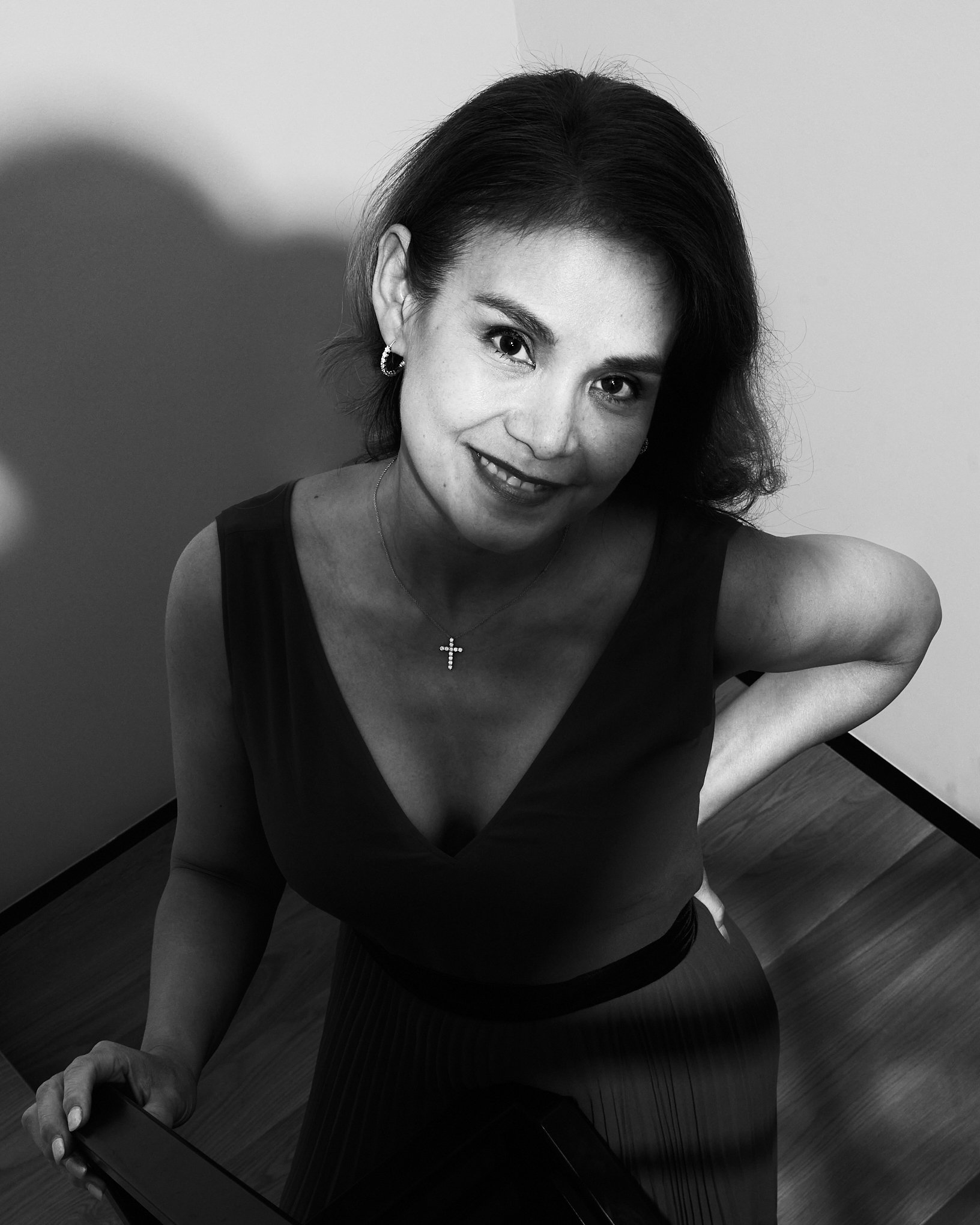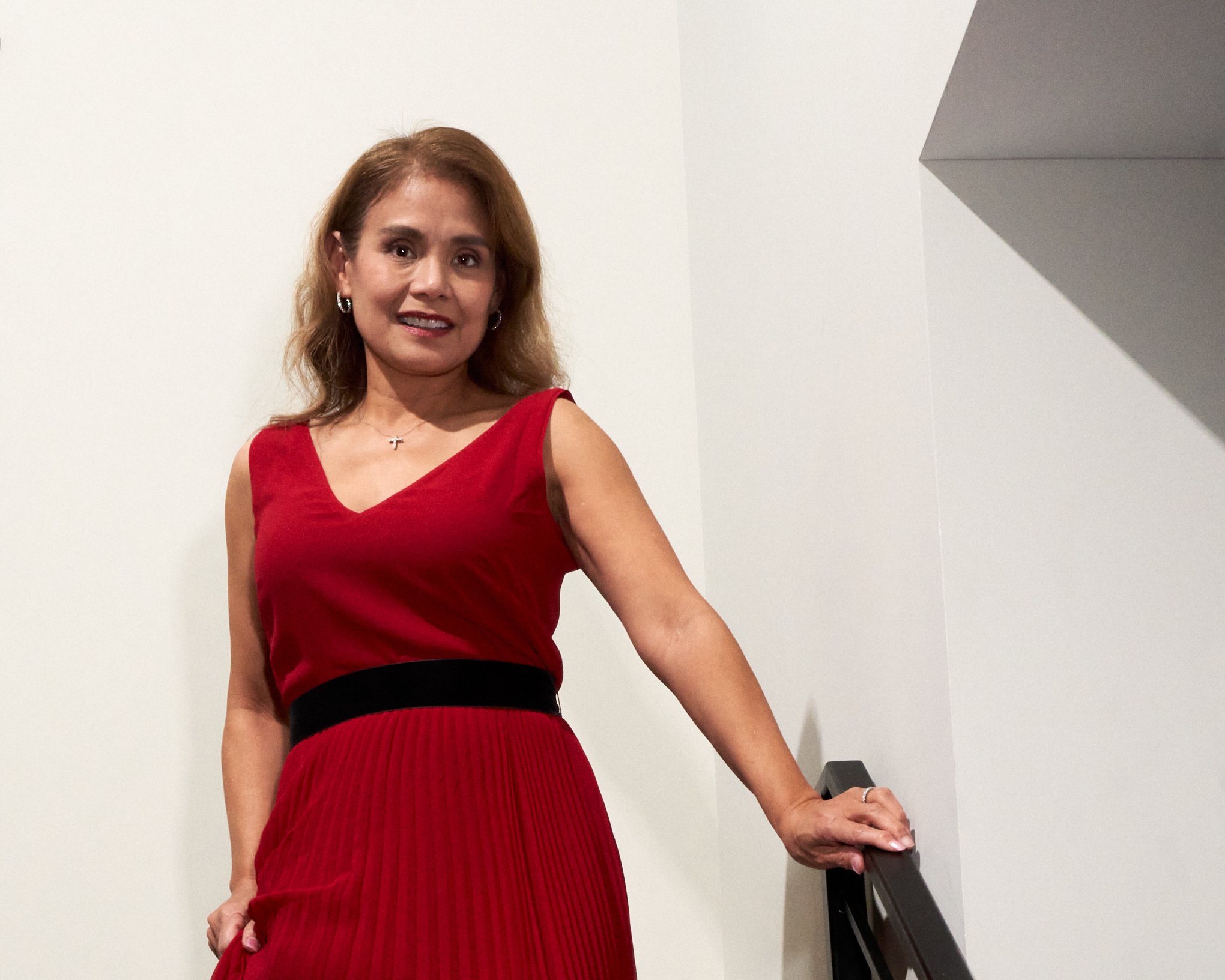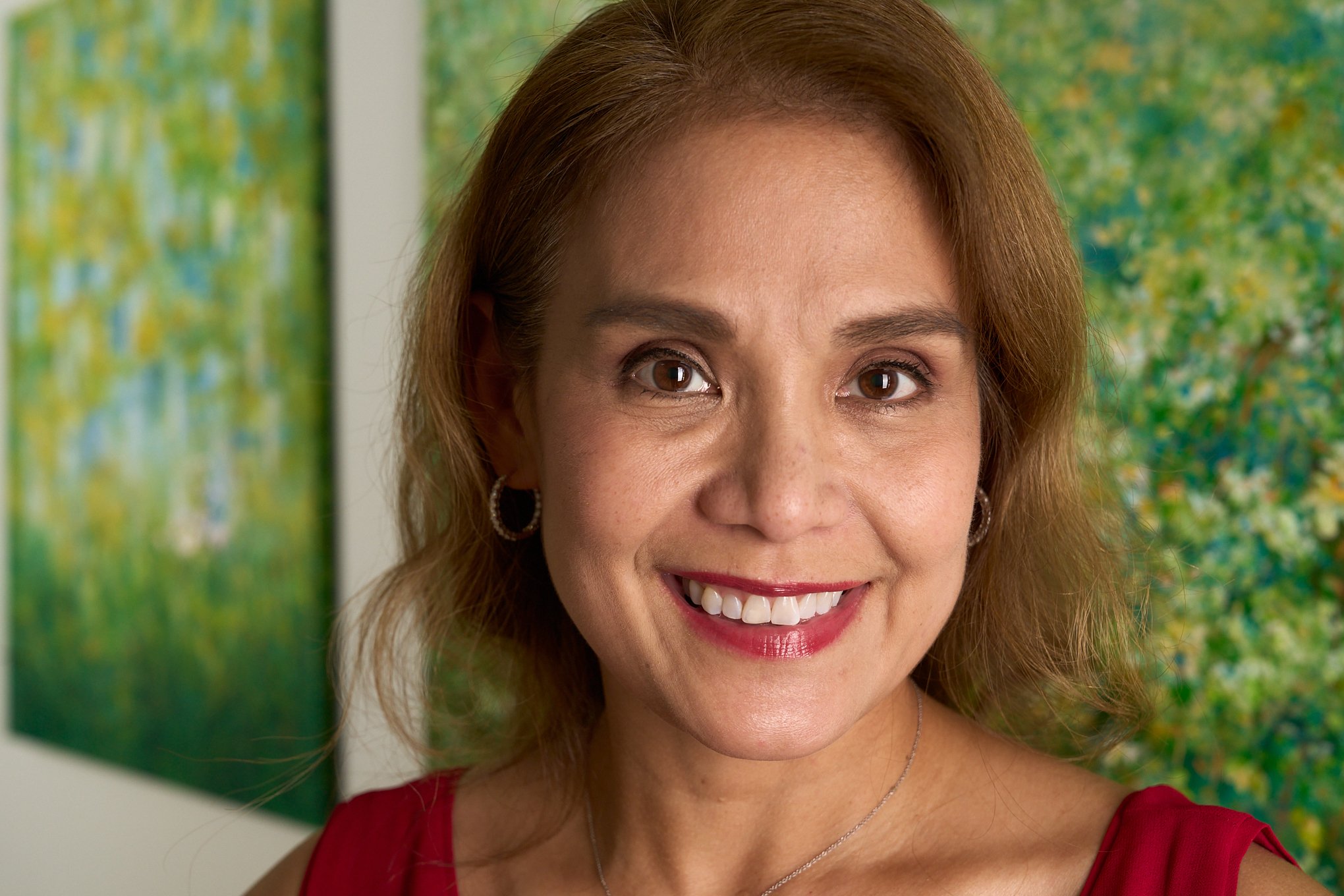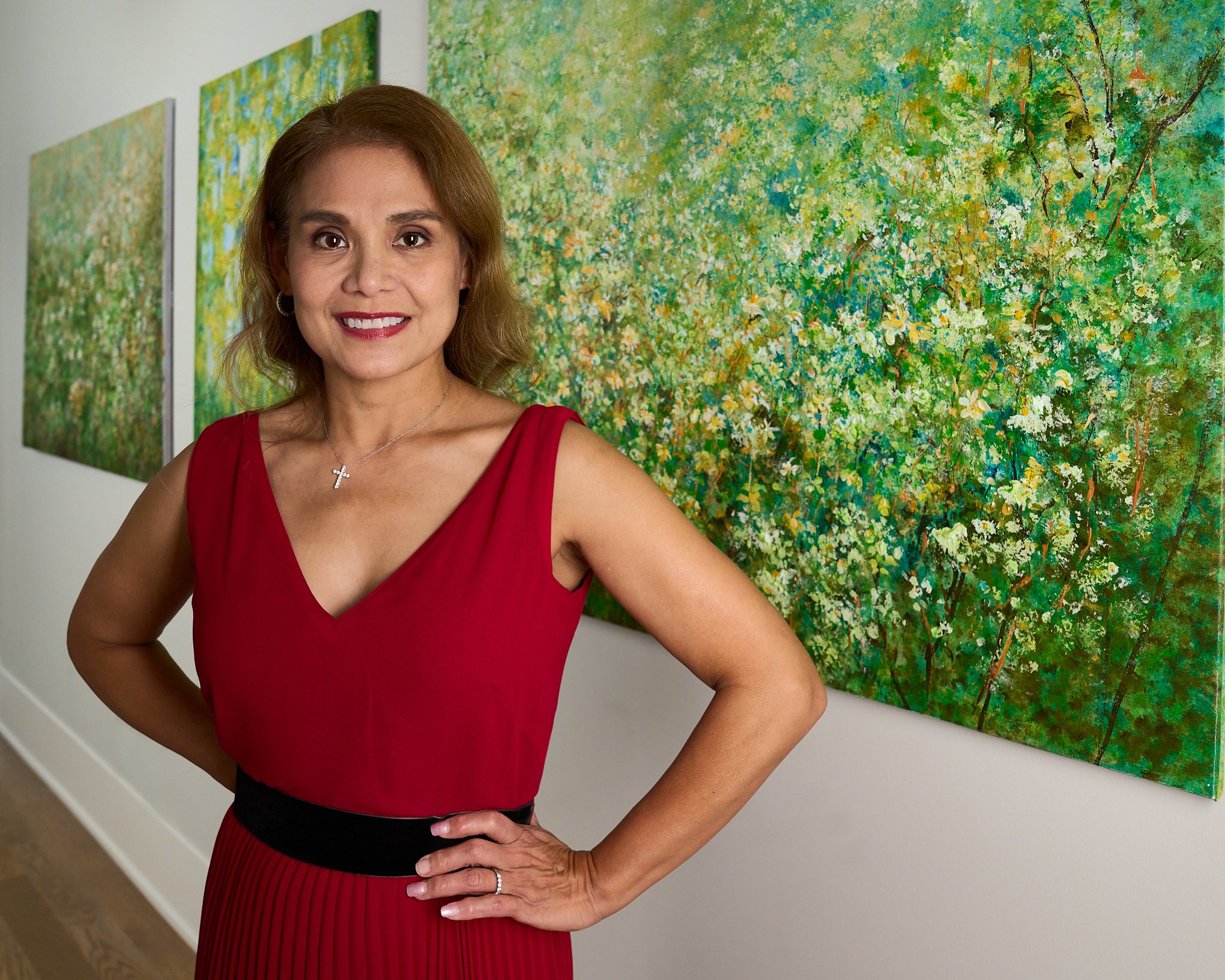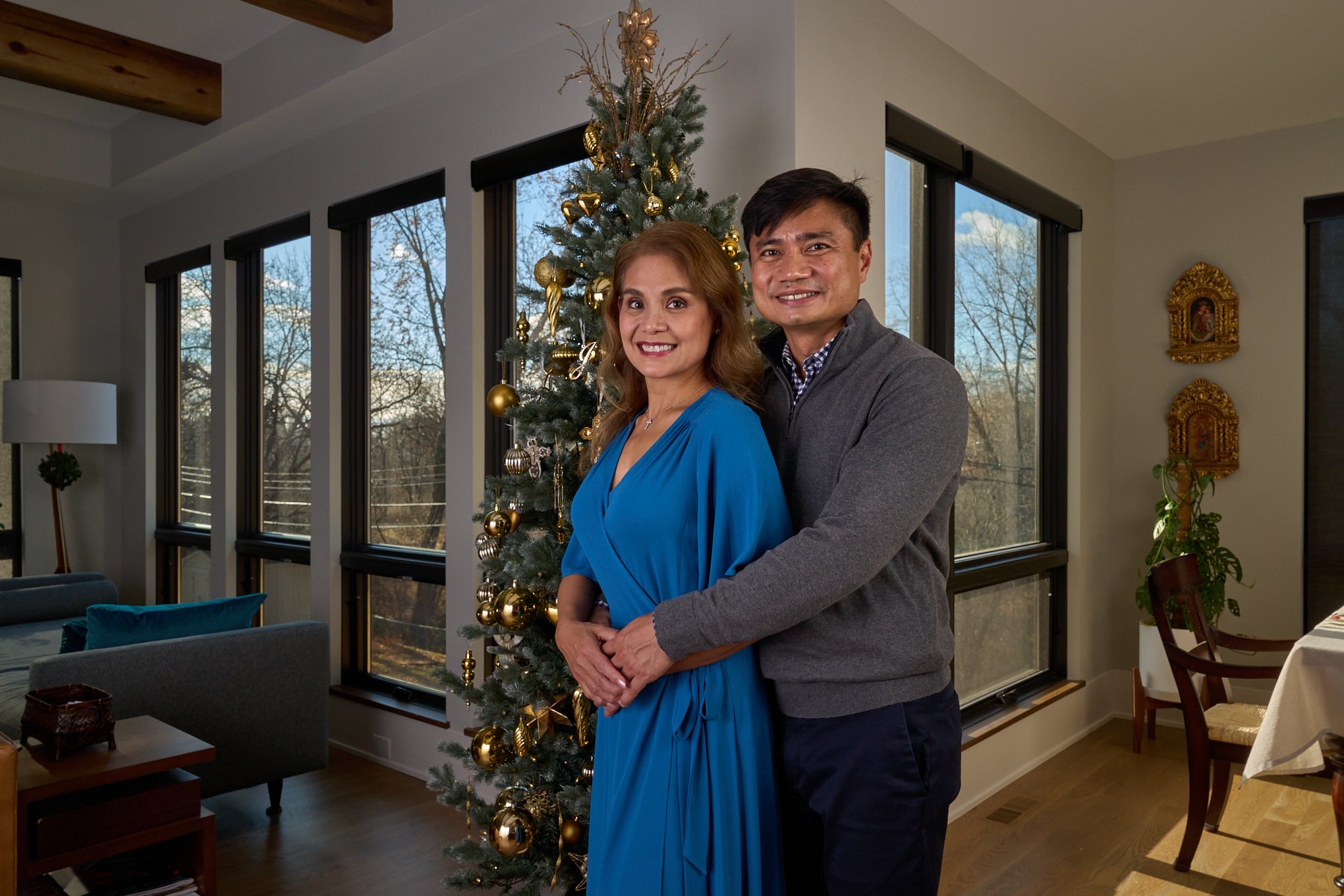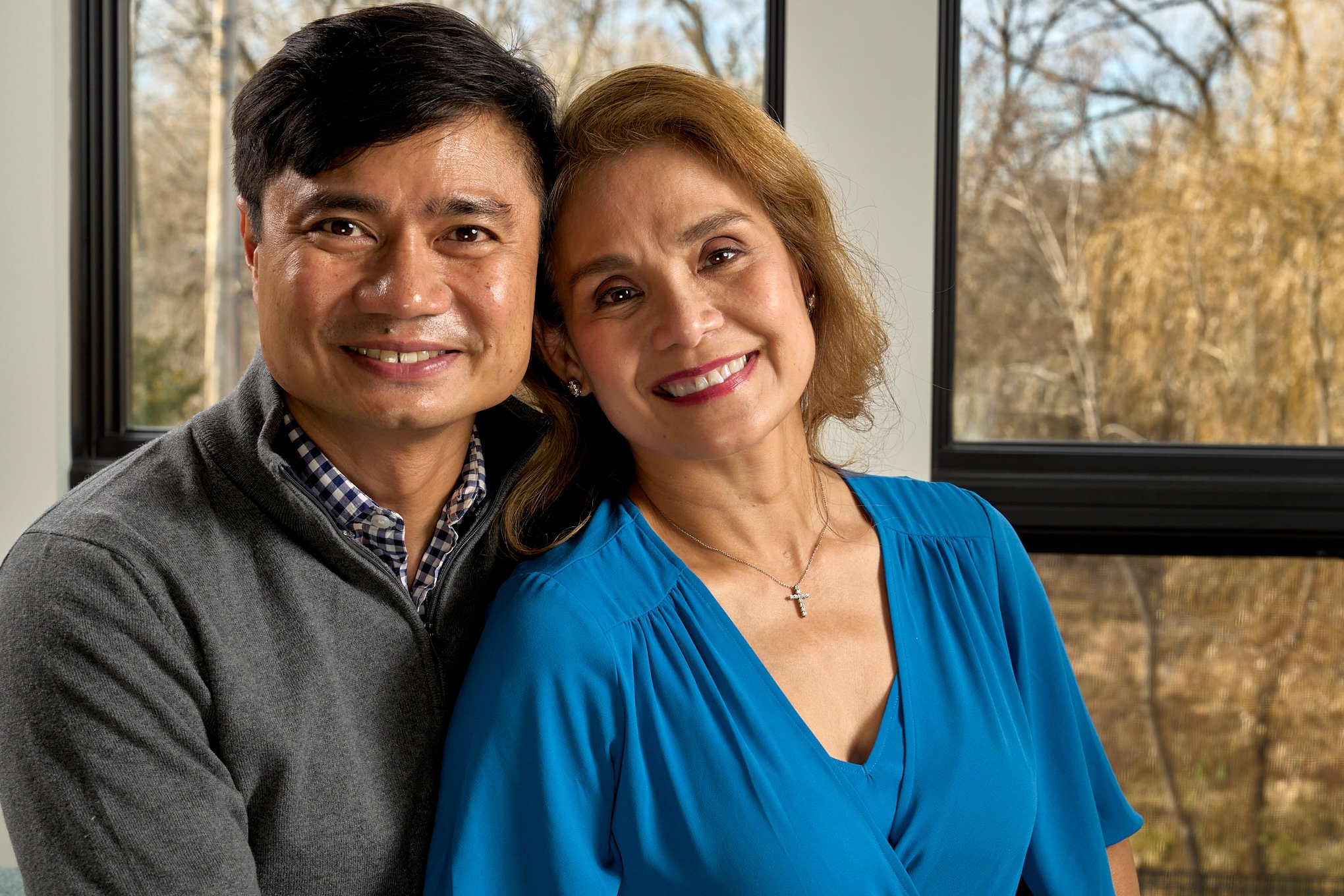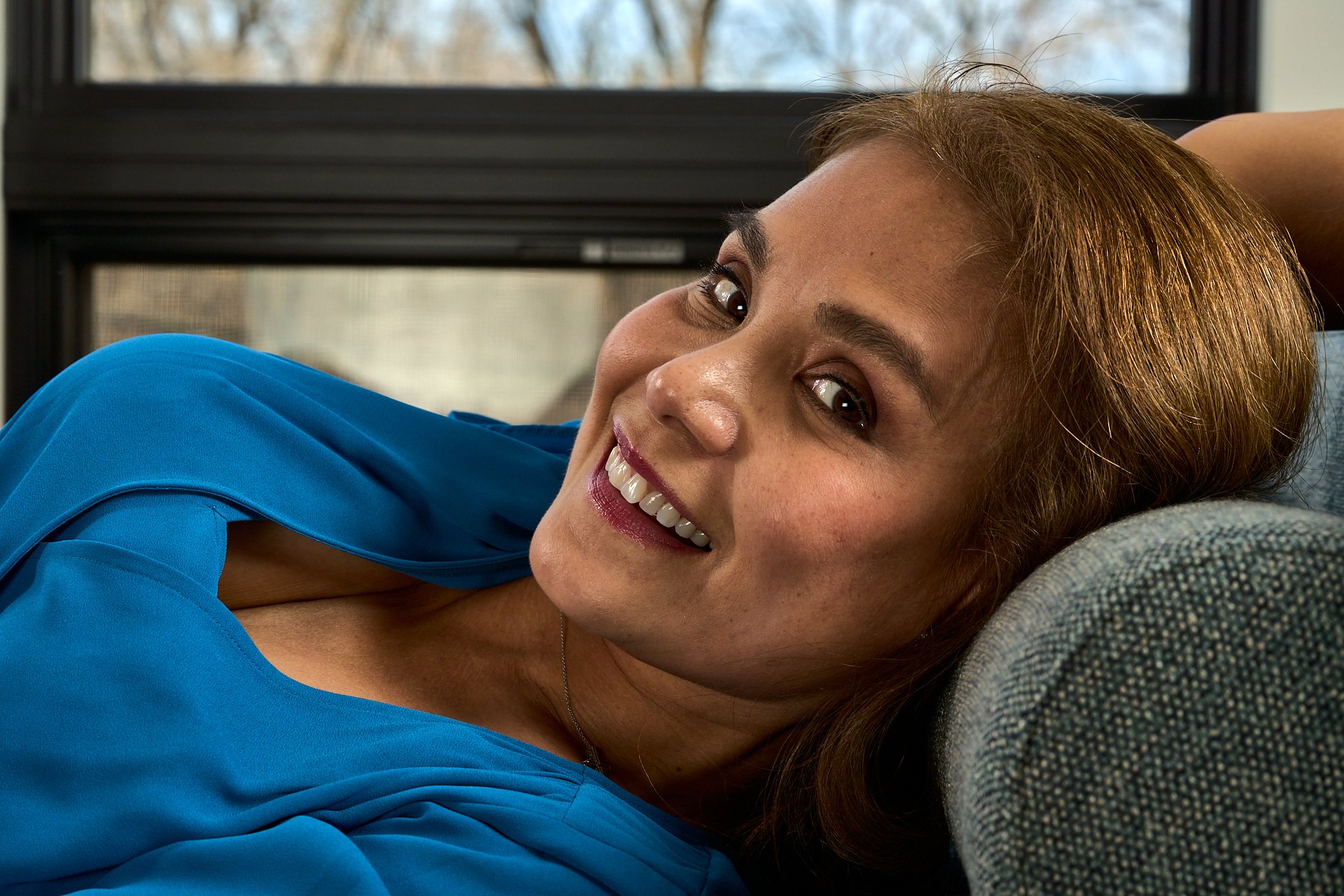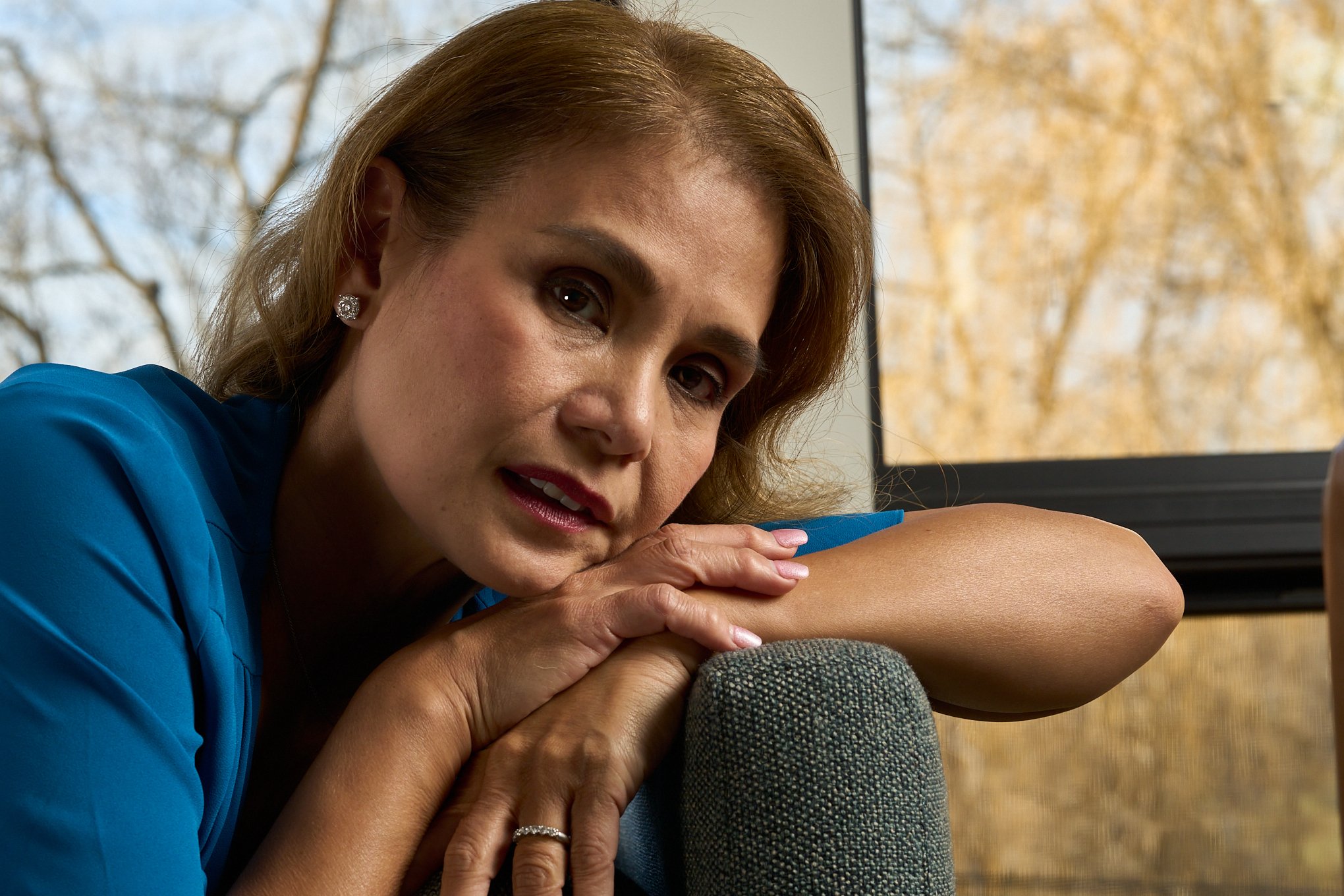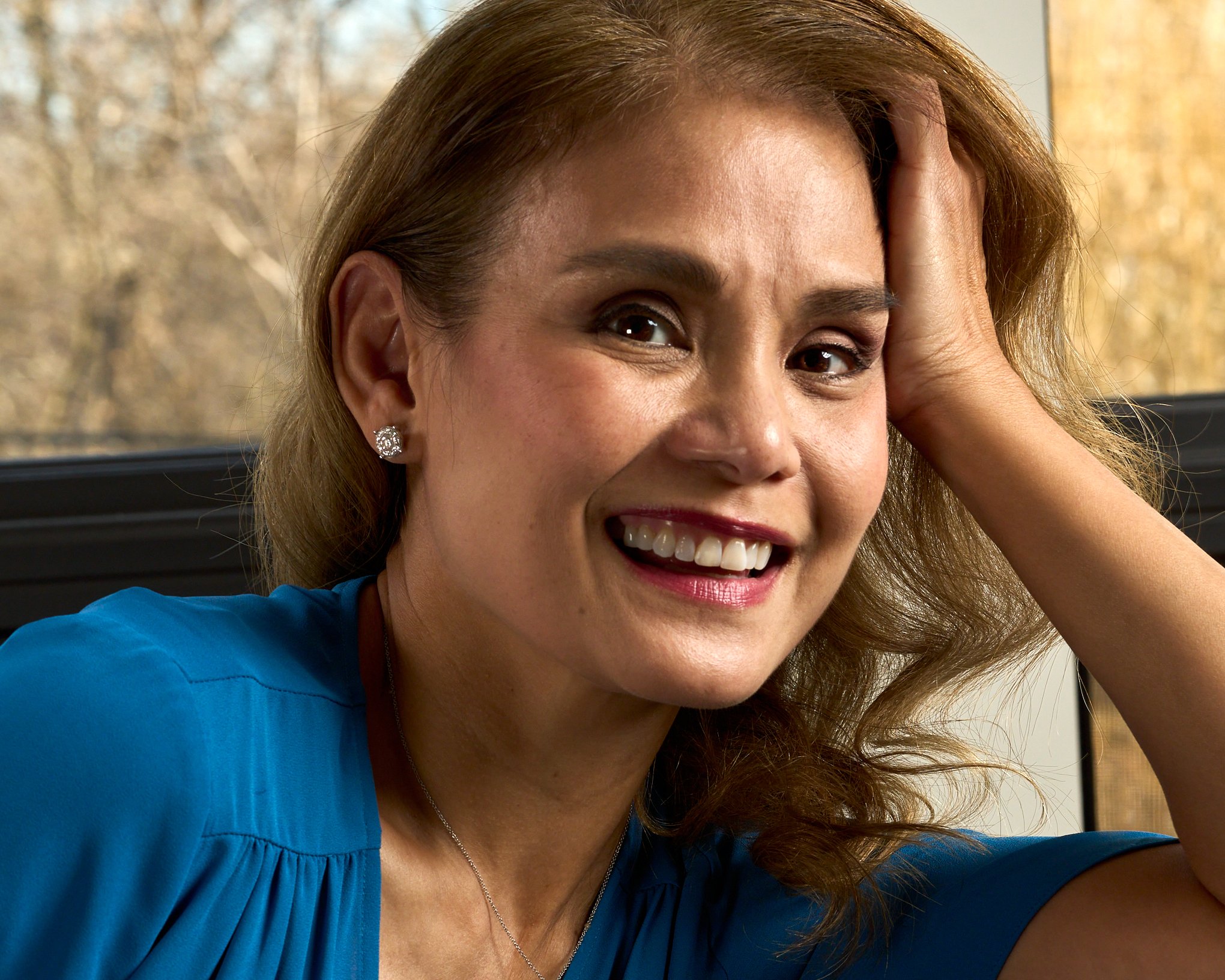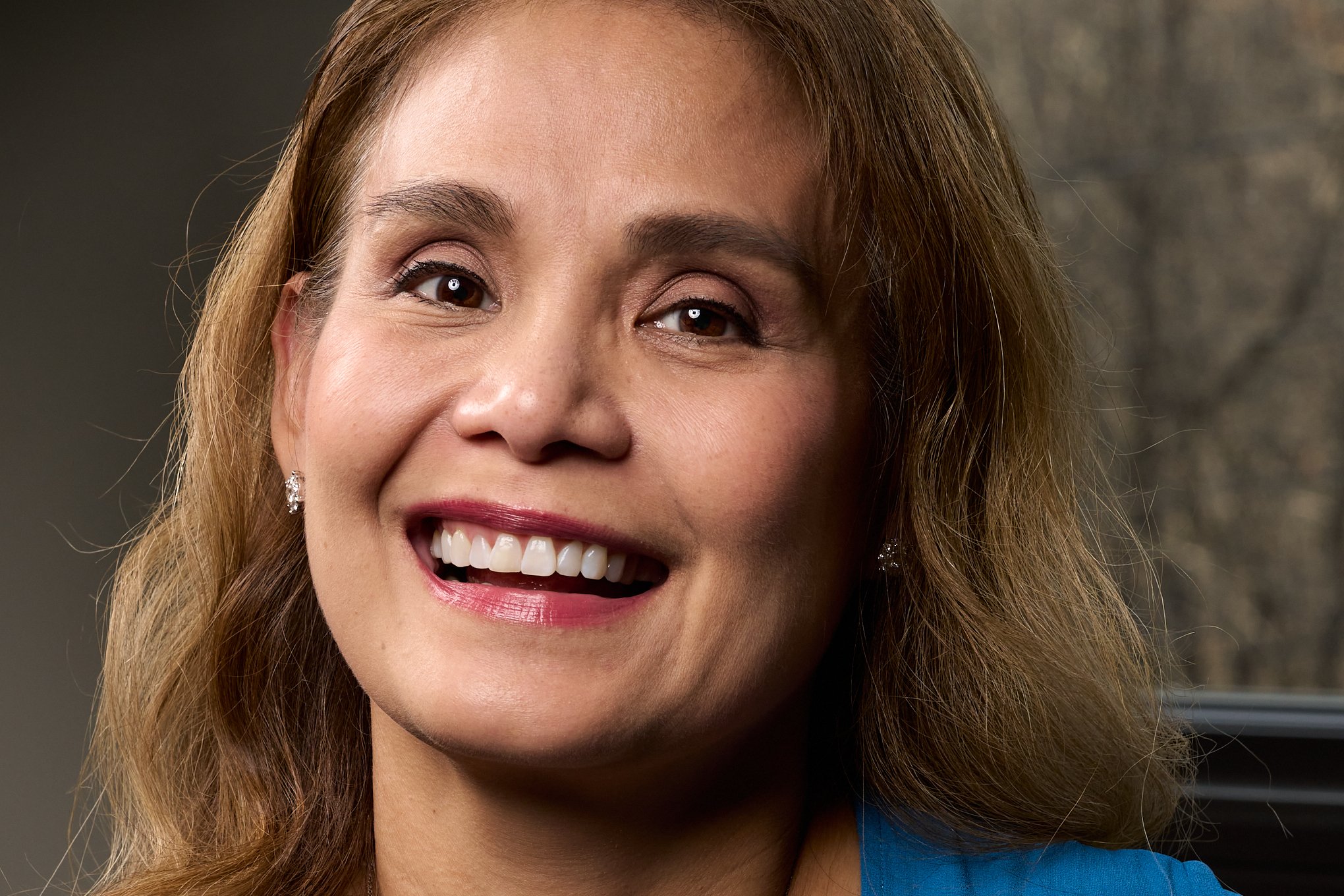En avant
En avant, a ballet term that means traveling forward. This 12-year-old embodies the concept.
Ana Santos, wearing her mother’s dress and wedding veil.
When Ana Santos emerged from the dressing room wearing a white tutu trimmed in gold and a matching leotard I took a deep breath. It had been awhile since I had photographed a ballerina, and I wondered if my plans would measure up. We weren’t going for any artsy invention, but rather, something clean and simple to show the grace and budding beauty of this hard working 12-year-old.
Test shot of Ana Santos.
As I was testing my lights she rose en pointe and I quickly hit the shutter. It was the first image of a two-hour session and I knew it was a keeper. Her nonchalant expression contrasted with a posture developed through years of sacrifice and hard work. She looked as though she was standing in the kitchen waiting for a snack.
I asked Ana what music she would like to hear and she chose Lizzo. We worked steadily through a variety of poses and leaps against black, gray and brick backgrounds. My assistant, Amanda Joy Redd, monitored my laptop for exposure, framing and wardrobe issues as Ana’s mother, Ligaya Carlos, herself and accomplished dancer, offered suggestions and corrections.
We worked fast for two hours, as we had to pack up quickly to clear the studio for another photographer. (I share studio space with several other photographers in Northeast Minneapolis.) I am posting my personal favorites in the gallery below. Enjoy. Contact me if you’re interested in dance photography, portraits or headshots.
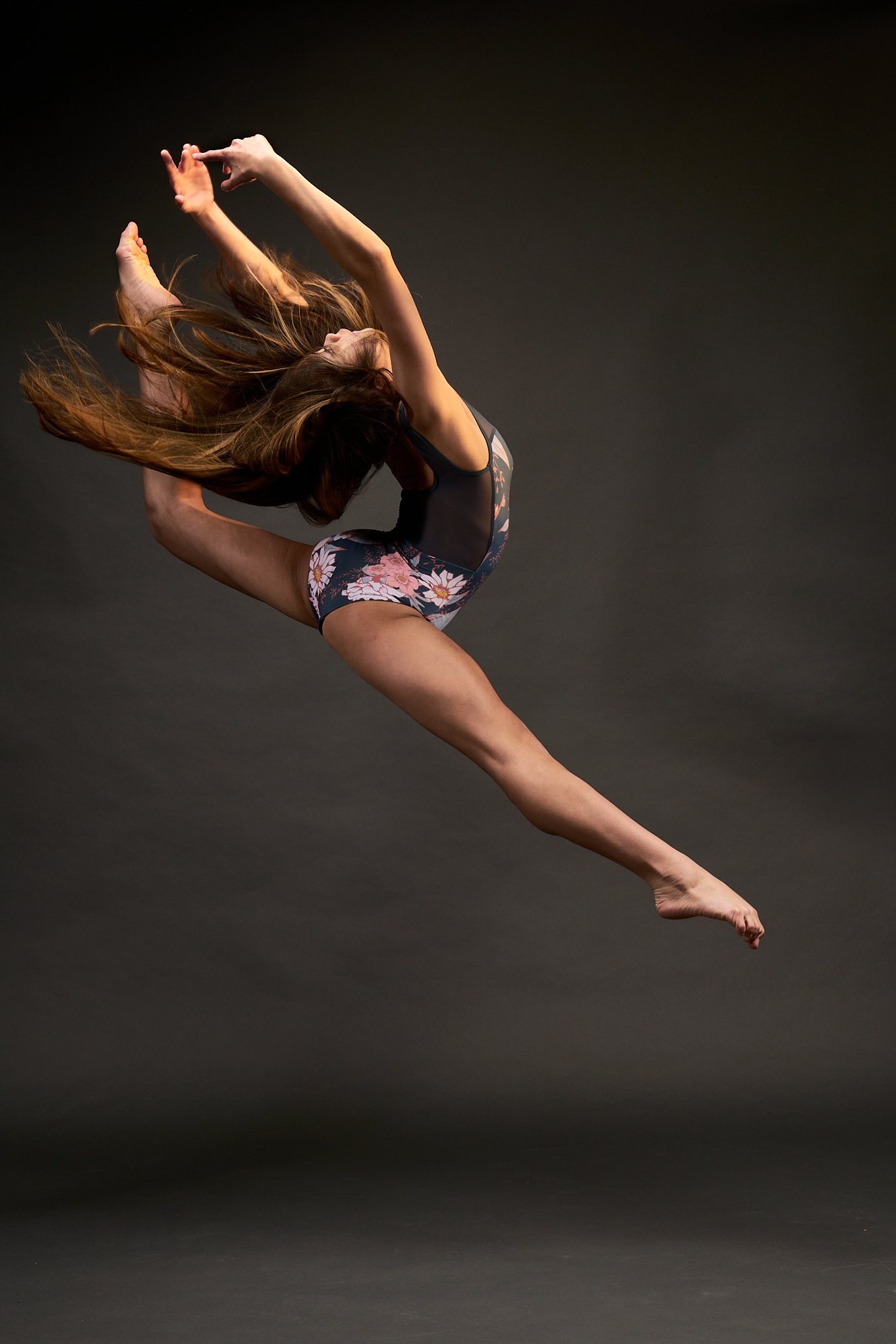

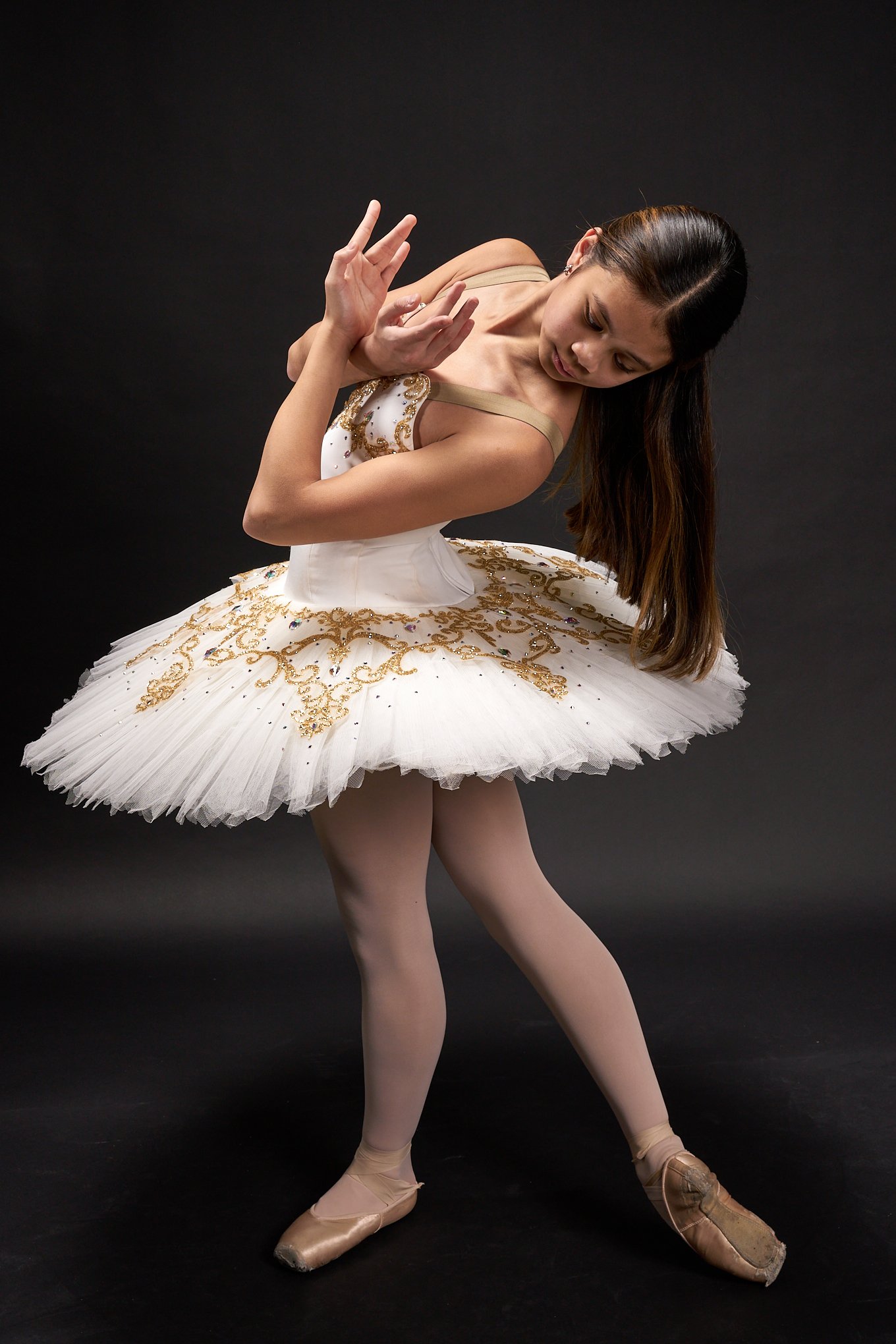
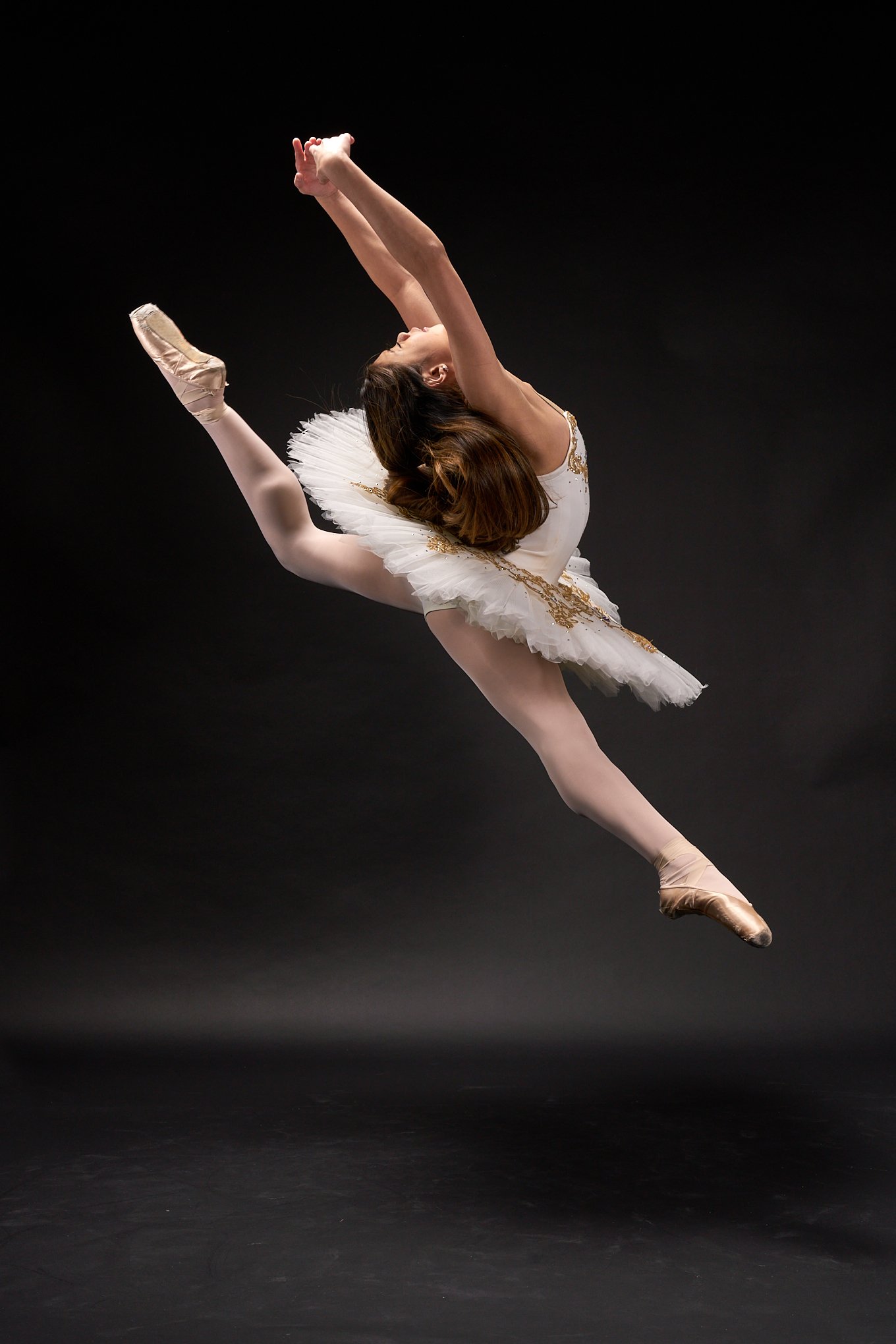
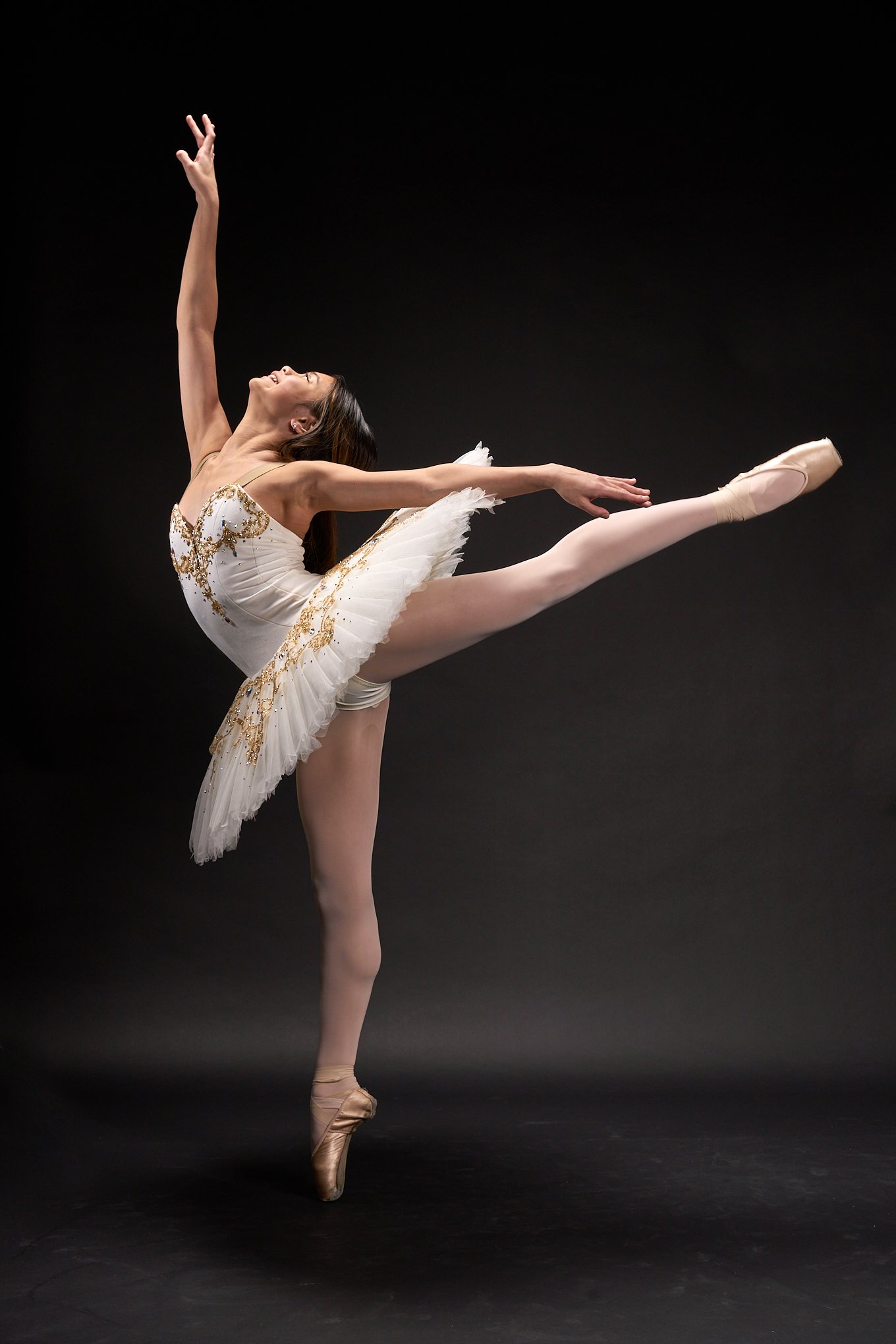
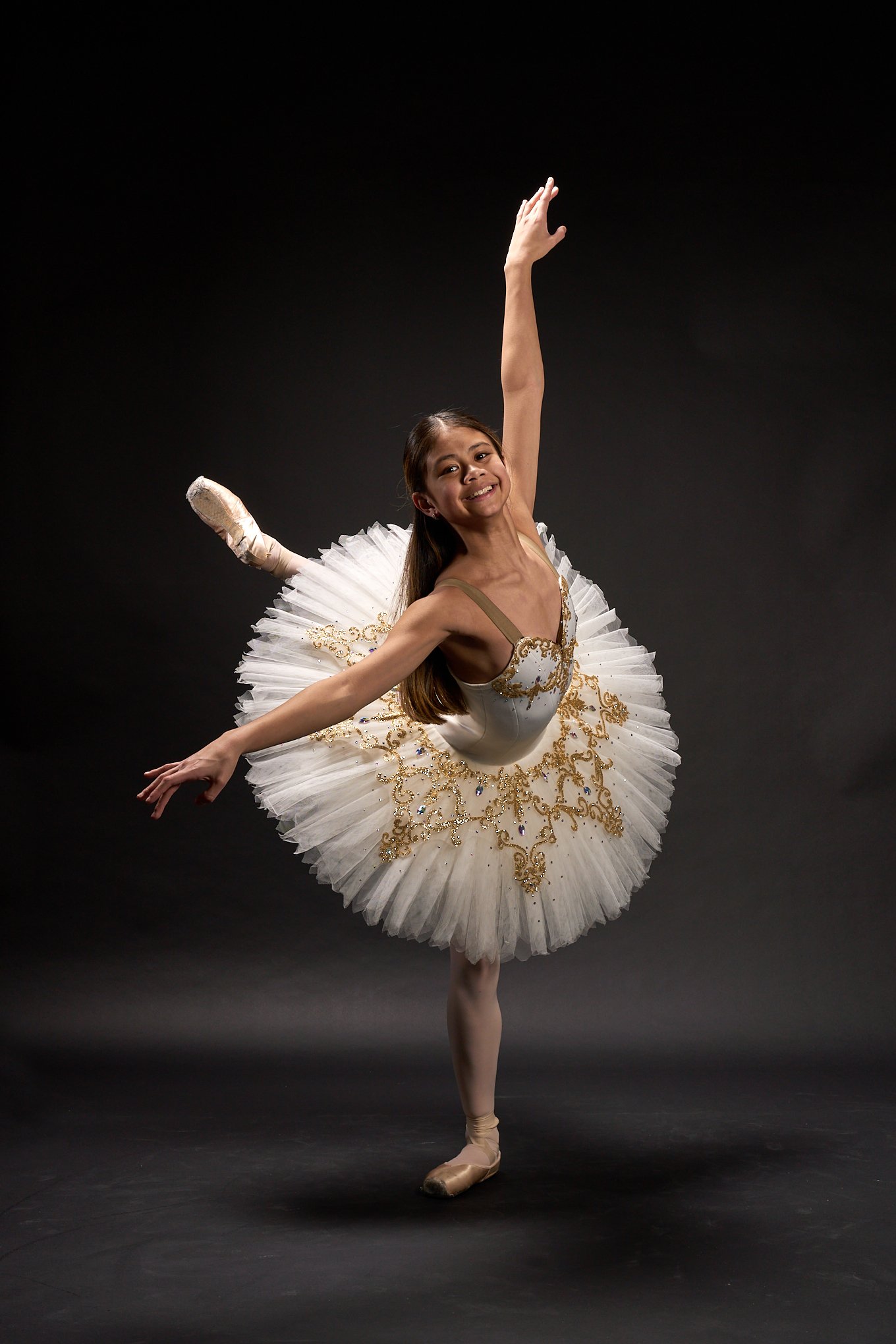
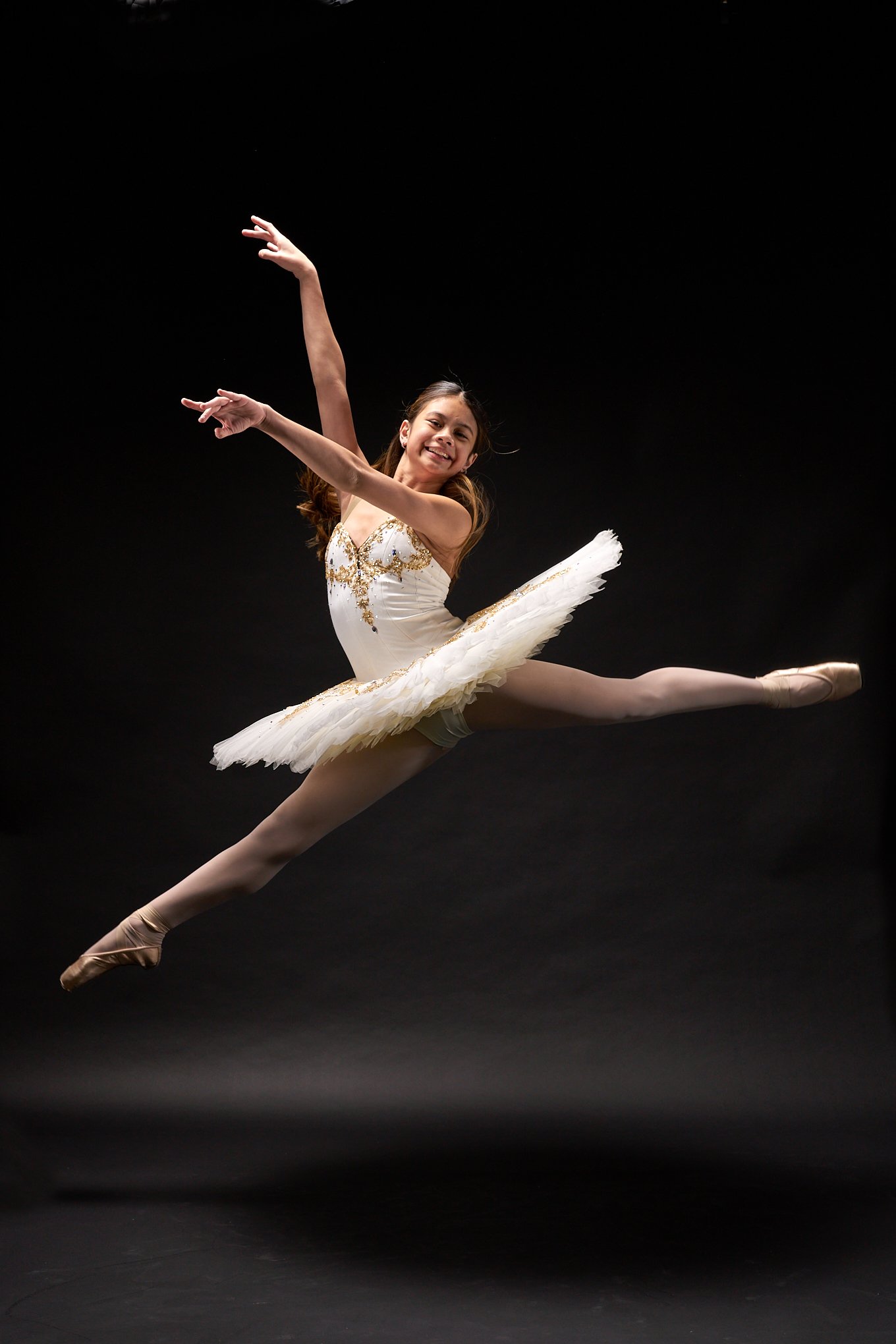
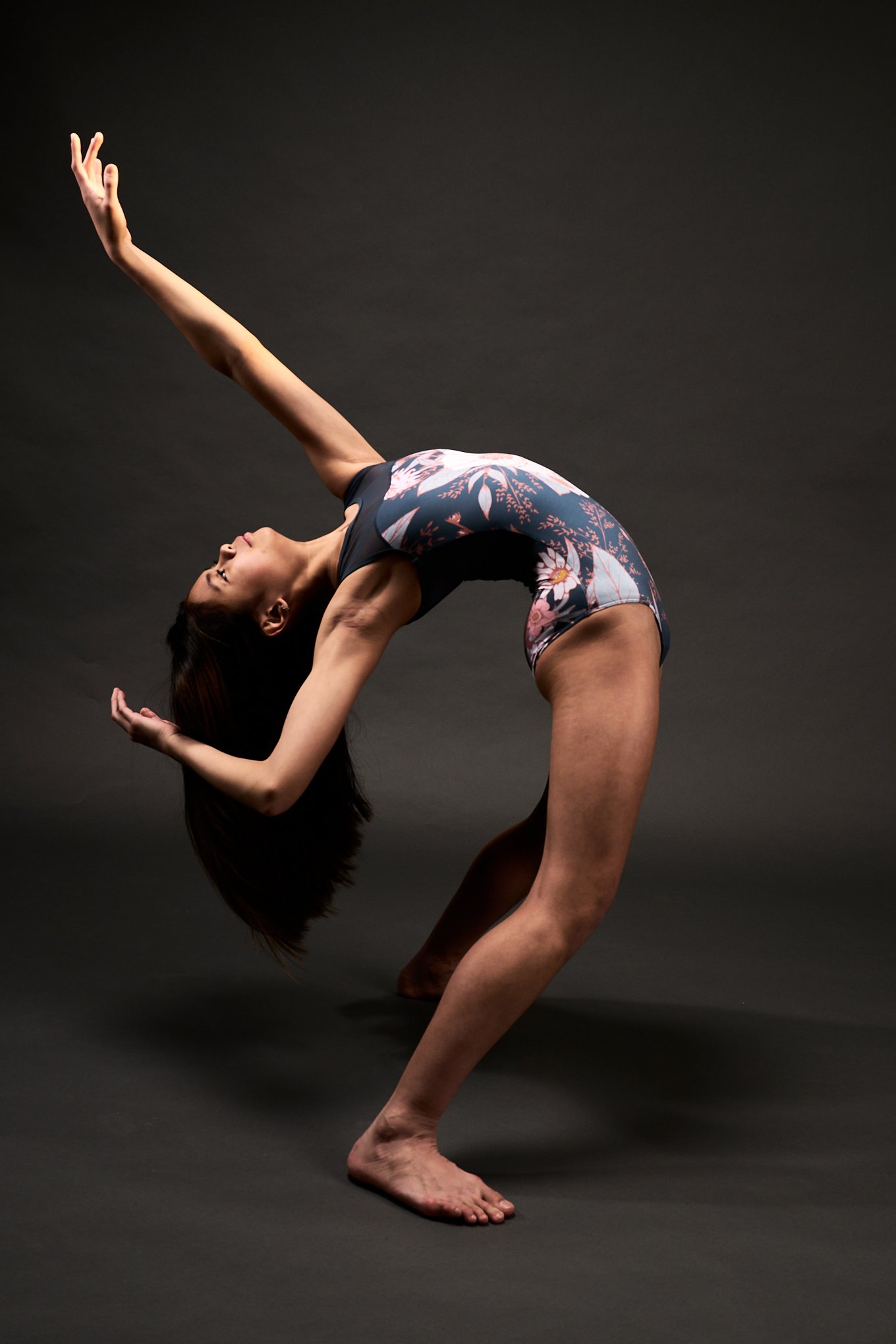
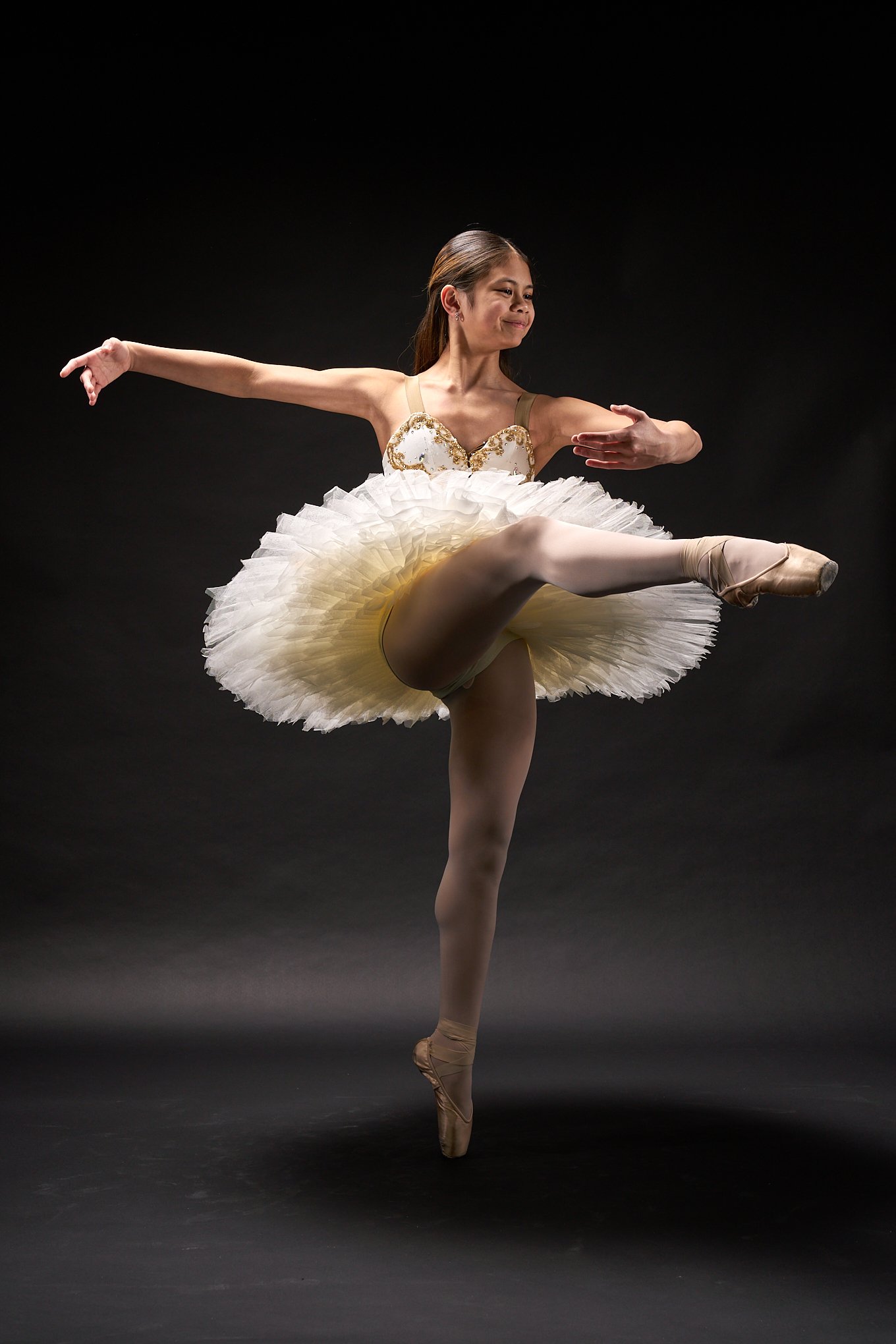

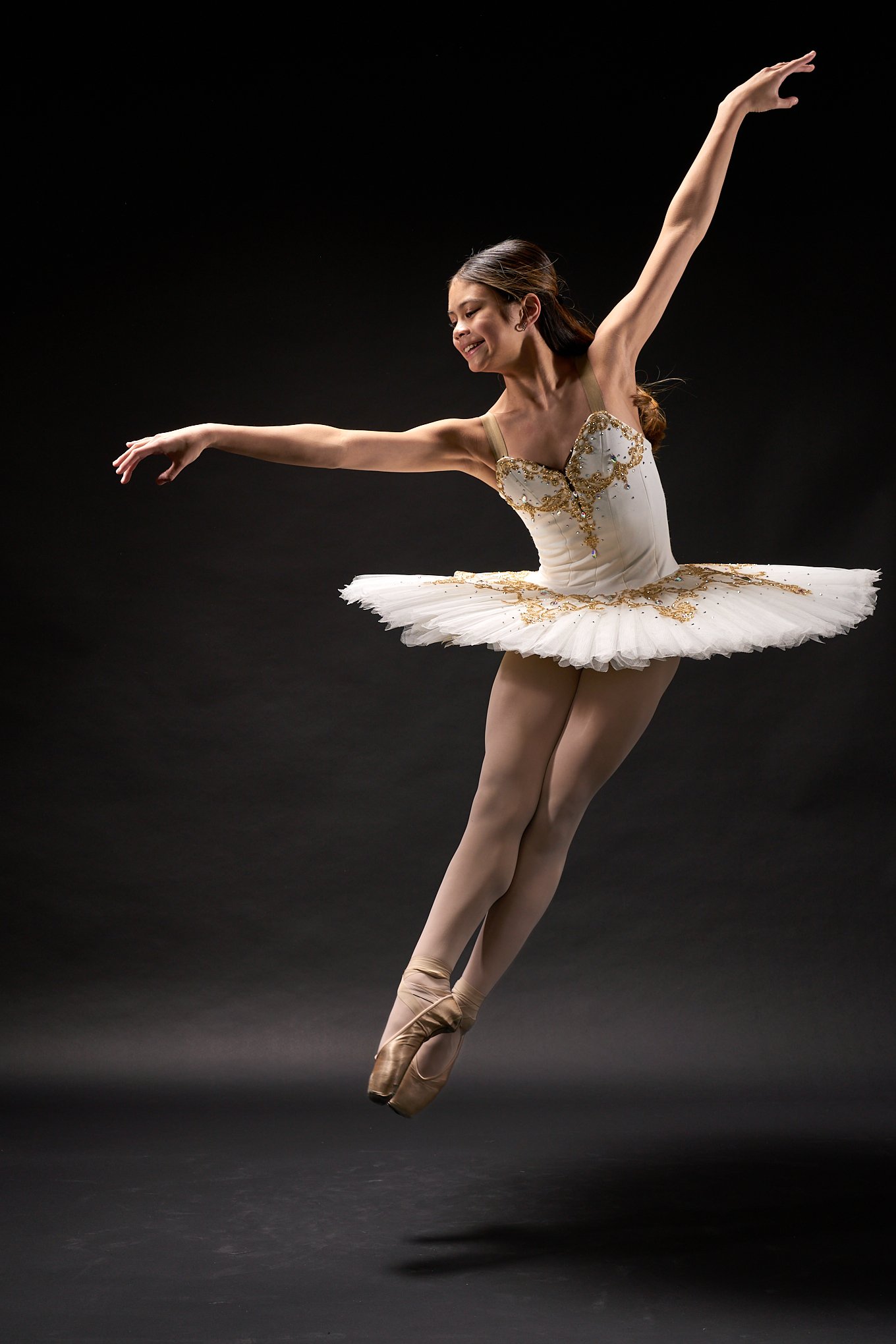

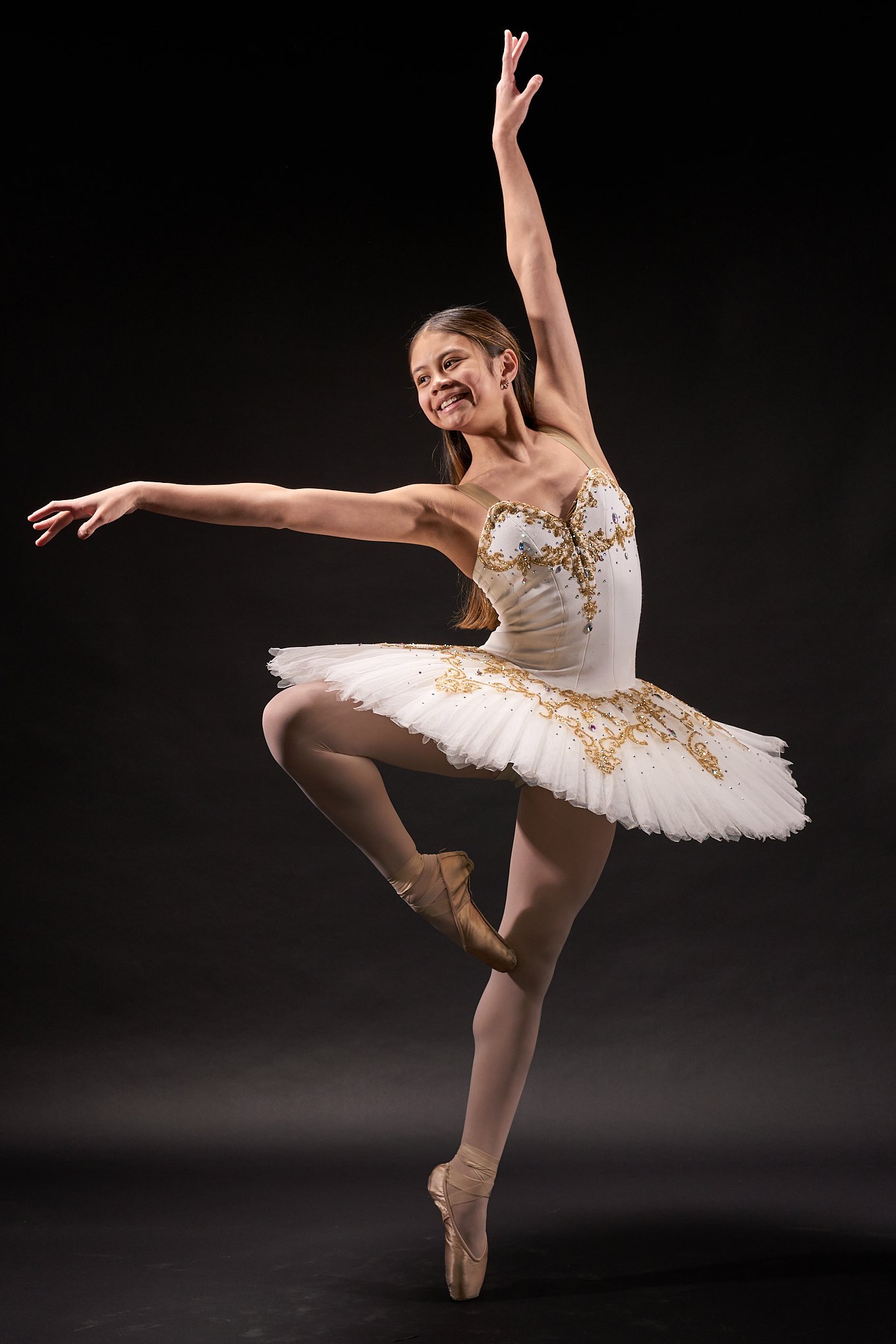
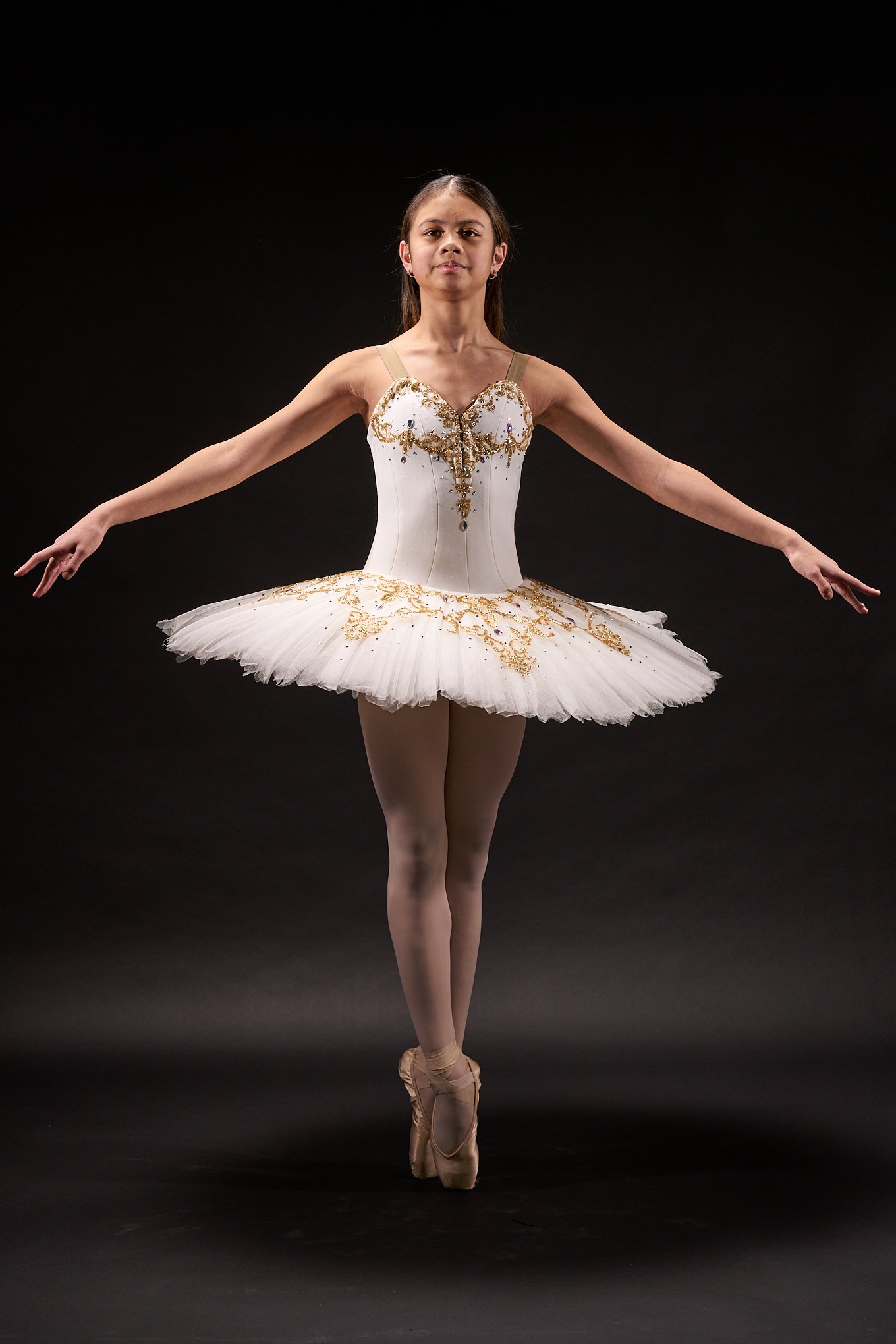
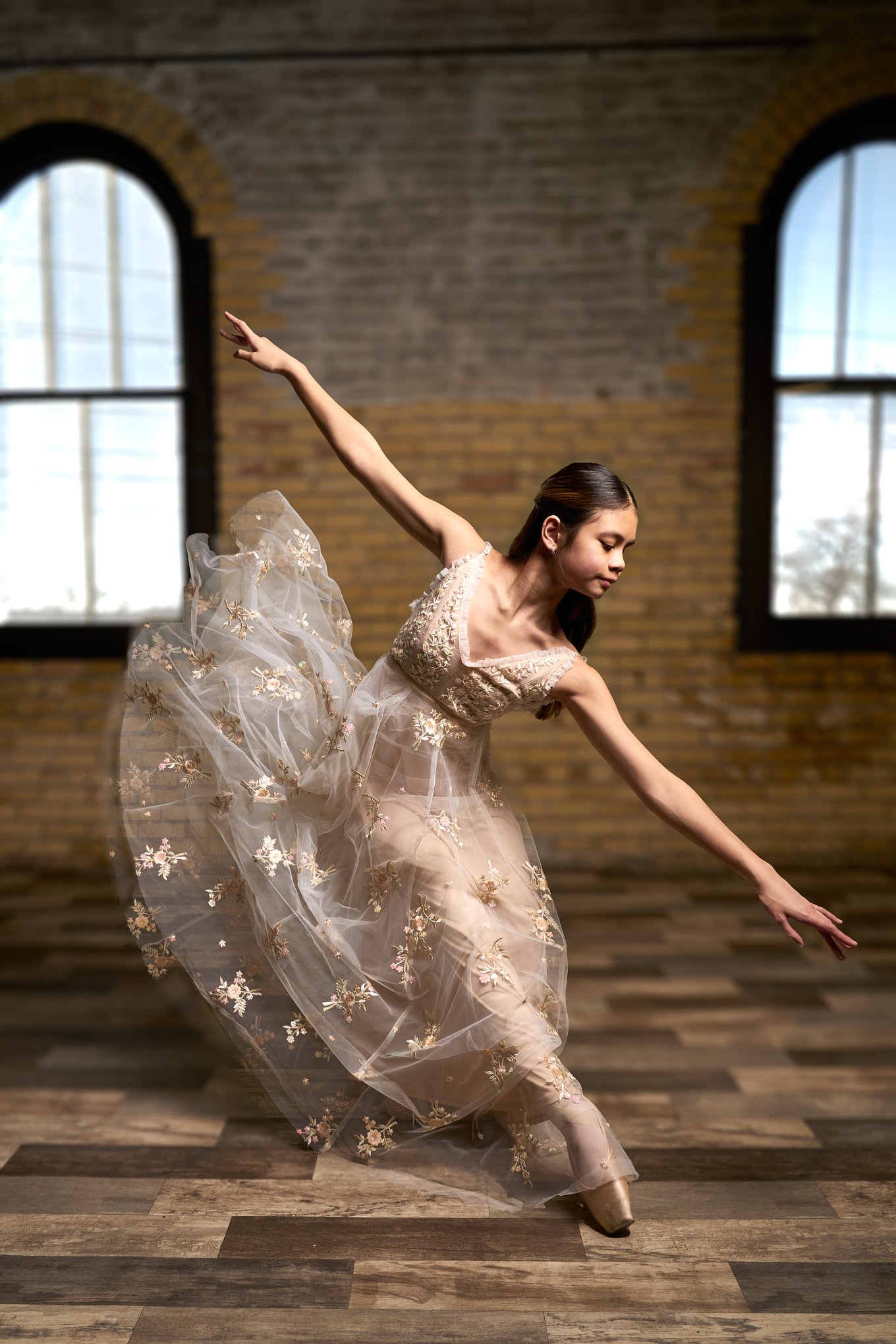
Rehab
Rehabilitation takes many forms. — Dan Browning
Sue Martin pauses for a photo at Tapestry Folkdance Center in Minneapolis, New Year’s Day variety dance.
If you follow this blog you know that I had spinal surgery to replace a disc in my neck a few weeks ago. My rehab limits me to lifting no more than 10 pounds until the end of January, so my activities have been greatly limited. Even so, I already have managed some photography and some limited Argentine tango dancing (I’m still barred from ballroom dancing). True to form, I overdid it initially. But fortunately, nothing shook loose and I have backed off, discretion proving to be the greater part of valor.
My first step back into photography came at the end of the year. The Rev. Katherine Mary Engel, a dancer friend, death doula, actor and minister had wanted a fresh portrait. She was one of the first subjects to sit for my foray into studio lighting, back when I was using Canon speedlites and Impact softboxes. We had great success, and I have been eager to get her back in front of my camera now that I have substantially upgraded my kit and have a professional studio.
Katherine brought a large duffle bag full of wardrobe and said, “Let’s play.” We started out classic, in front of one of my new Clot Studio backdrops, a deliciously red, hand-painted canvas. Next were some poses in front of some rusted, corrugated metal sheeting that adorn a small section of studio wall. I broke out a red gel and a smoke machine I had bought secondhand (but had never used) to provide a bit of atmosphere. Katherine donned a camisole that revealed a more playful side of her personality. And finally, we moved on to another new Clot Studio canvas, a black and gray one I found perfect for shooting in black and white. Please check out the gallery.
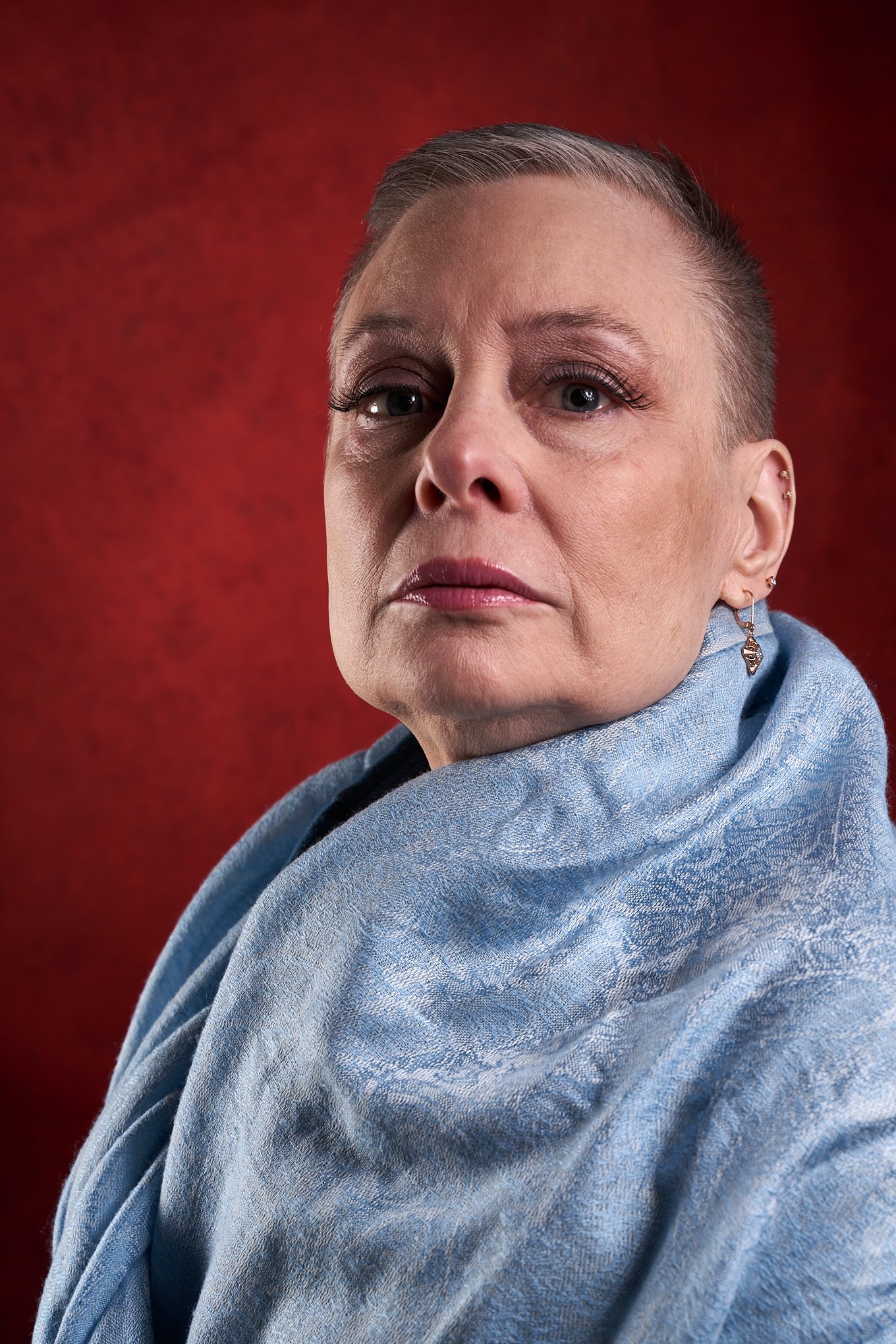
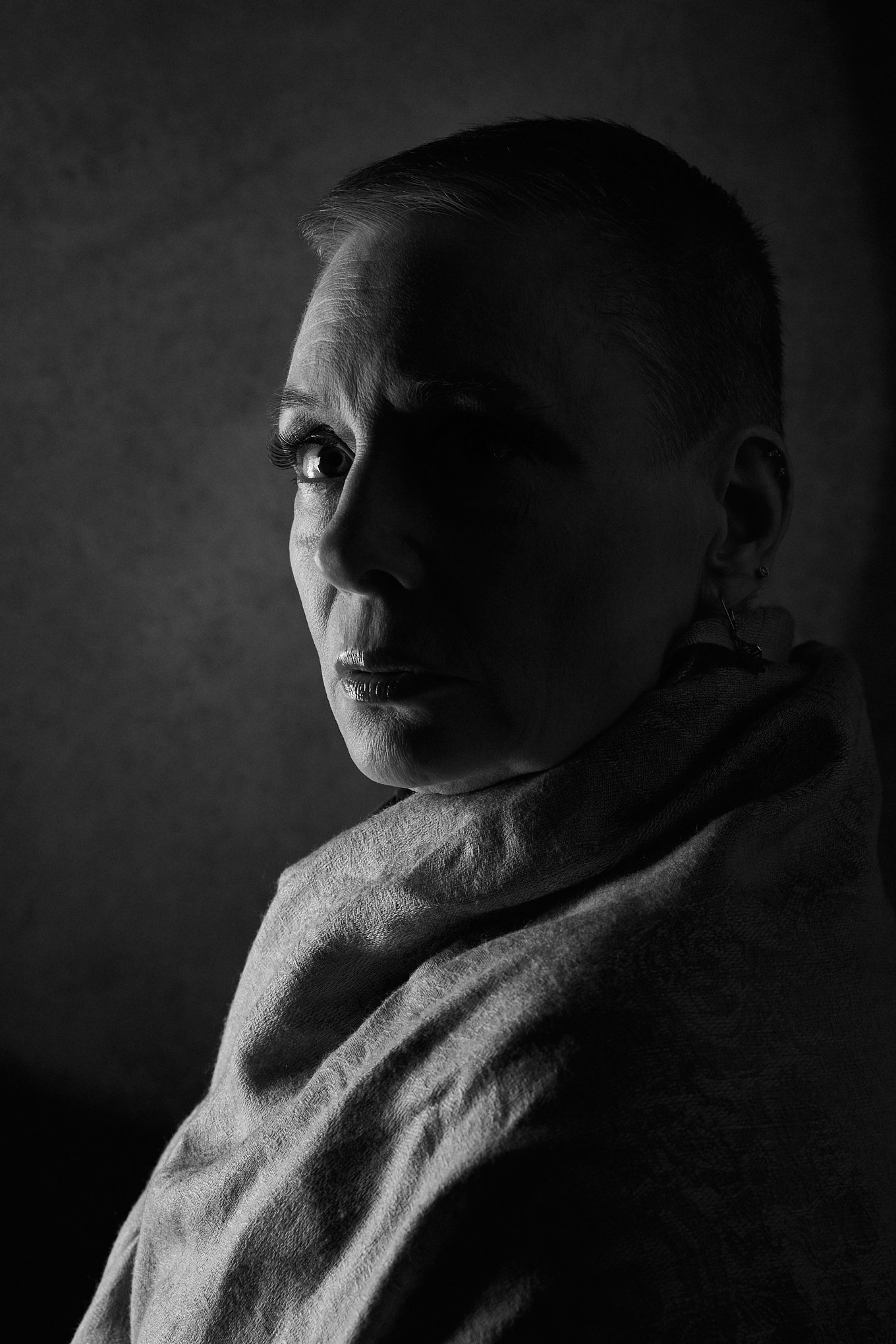



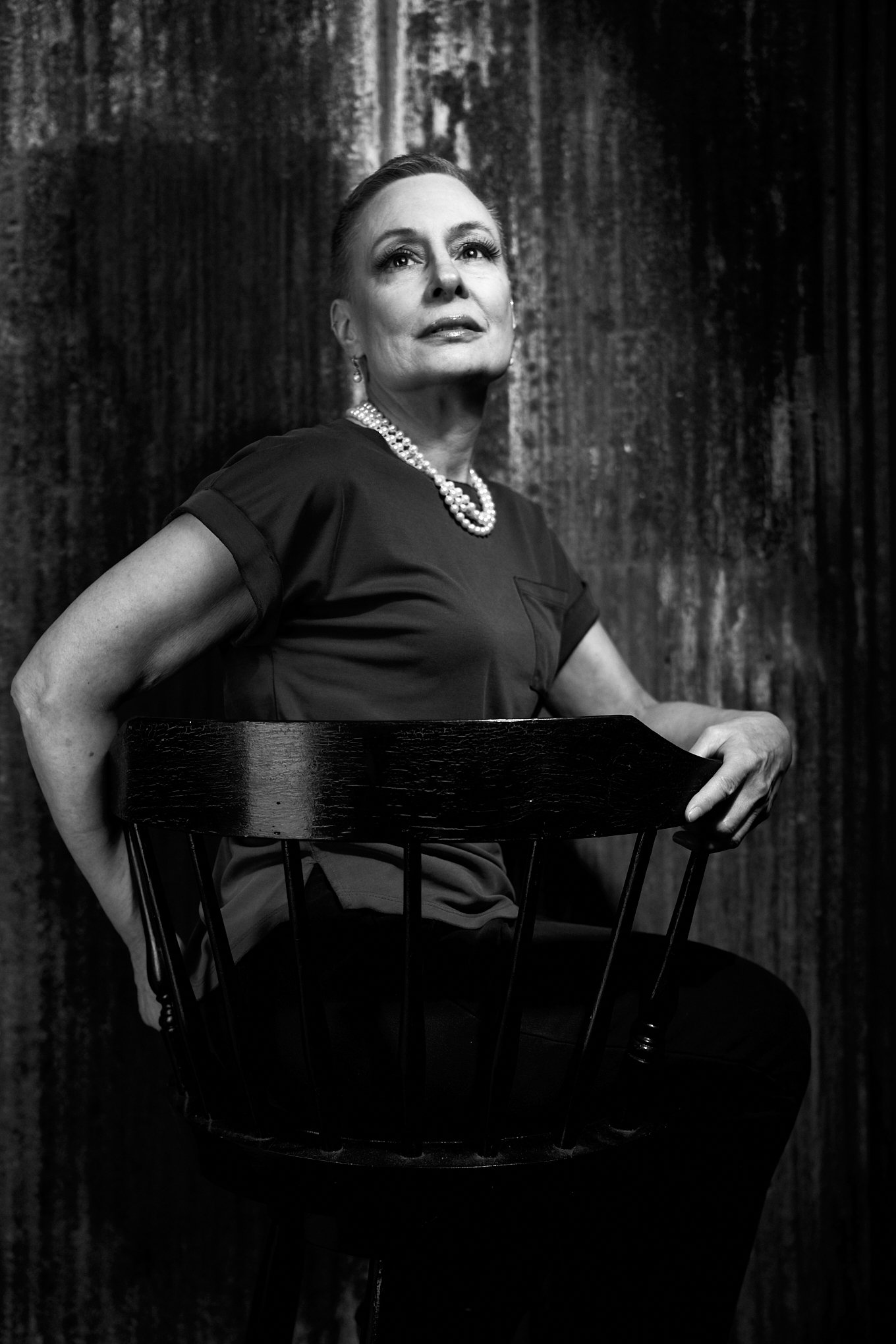
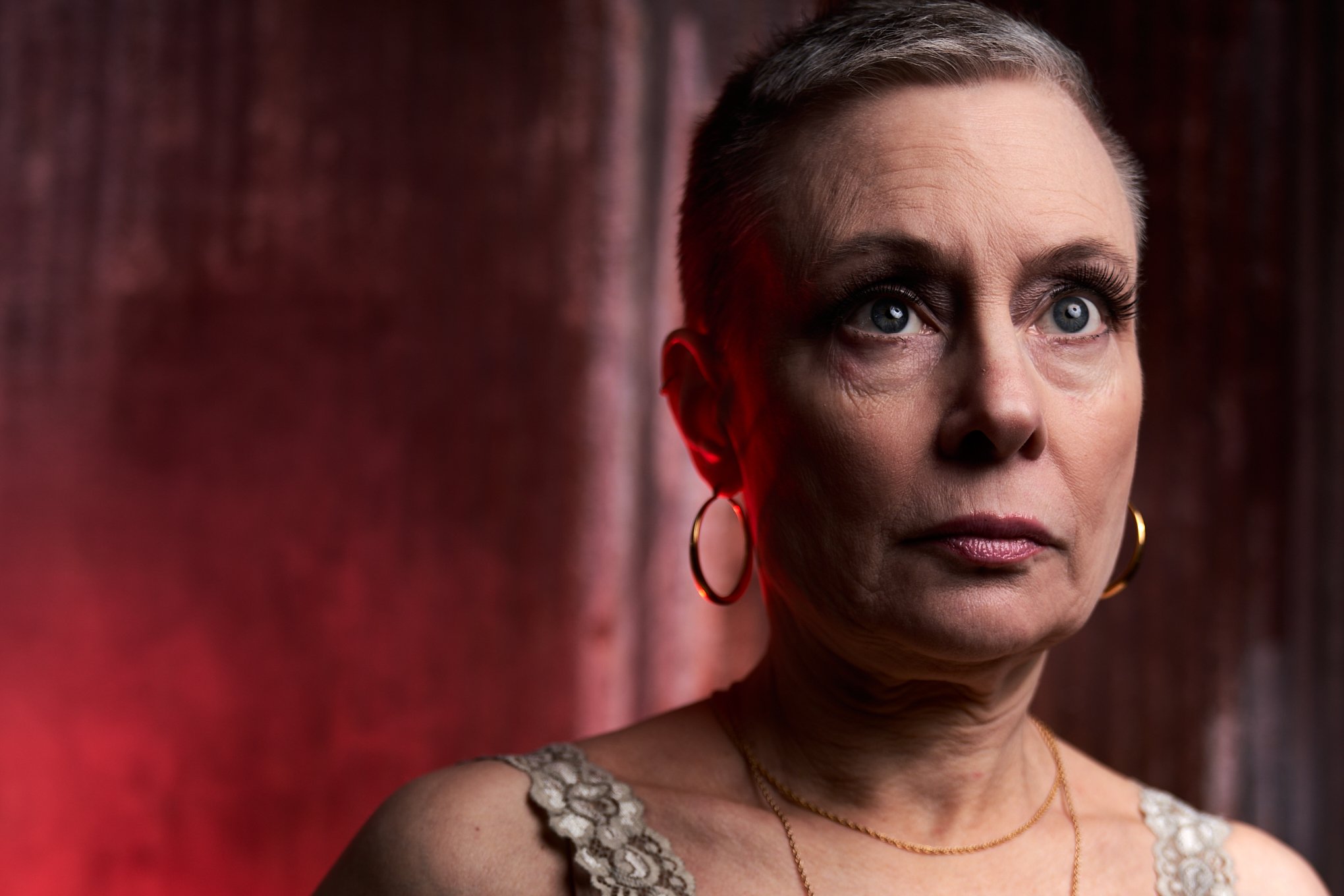
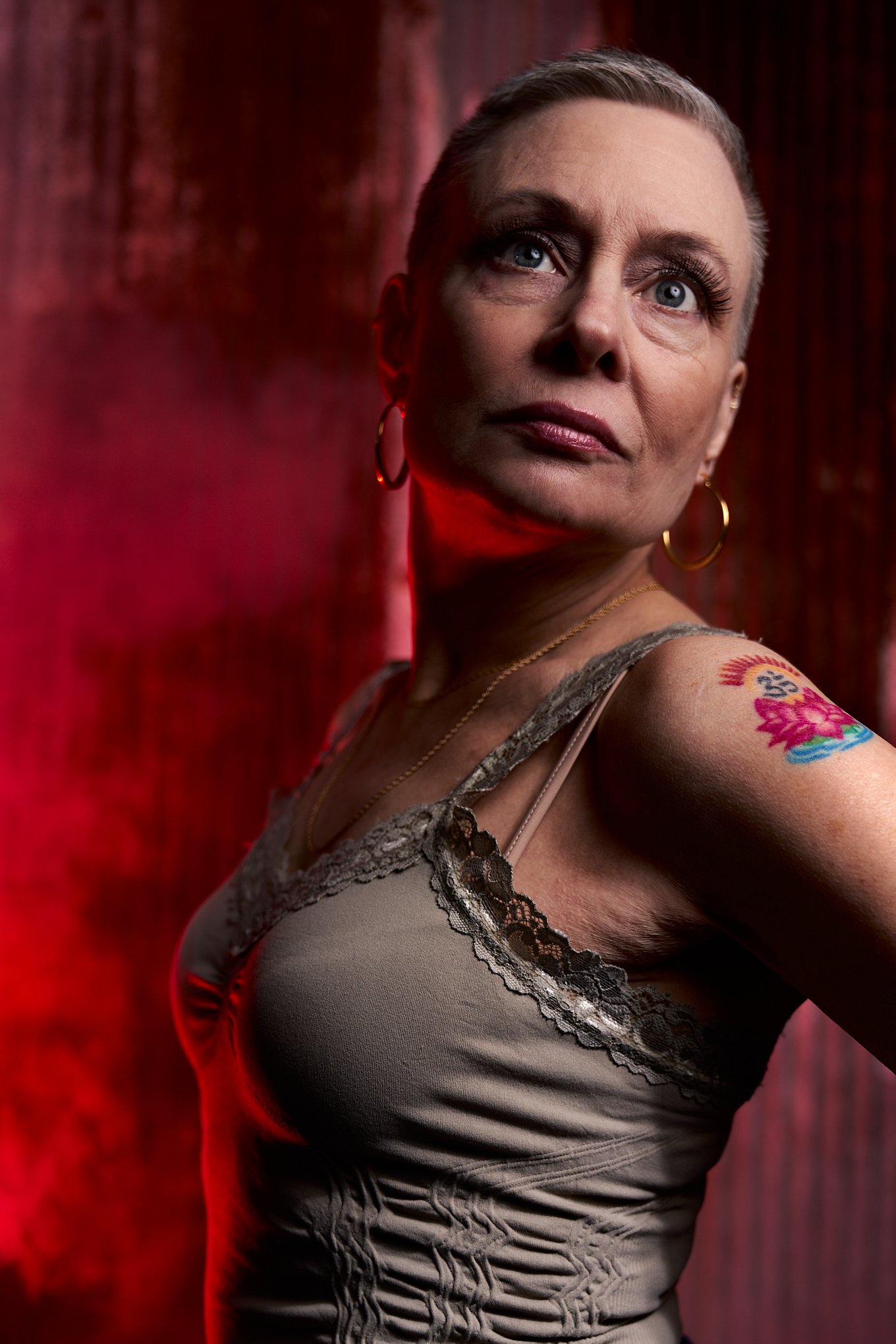
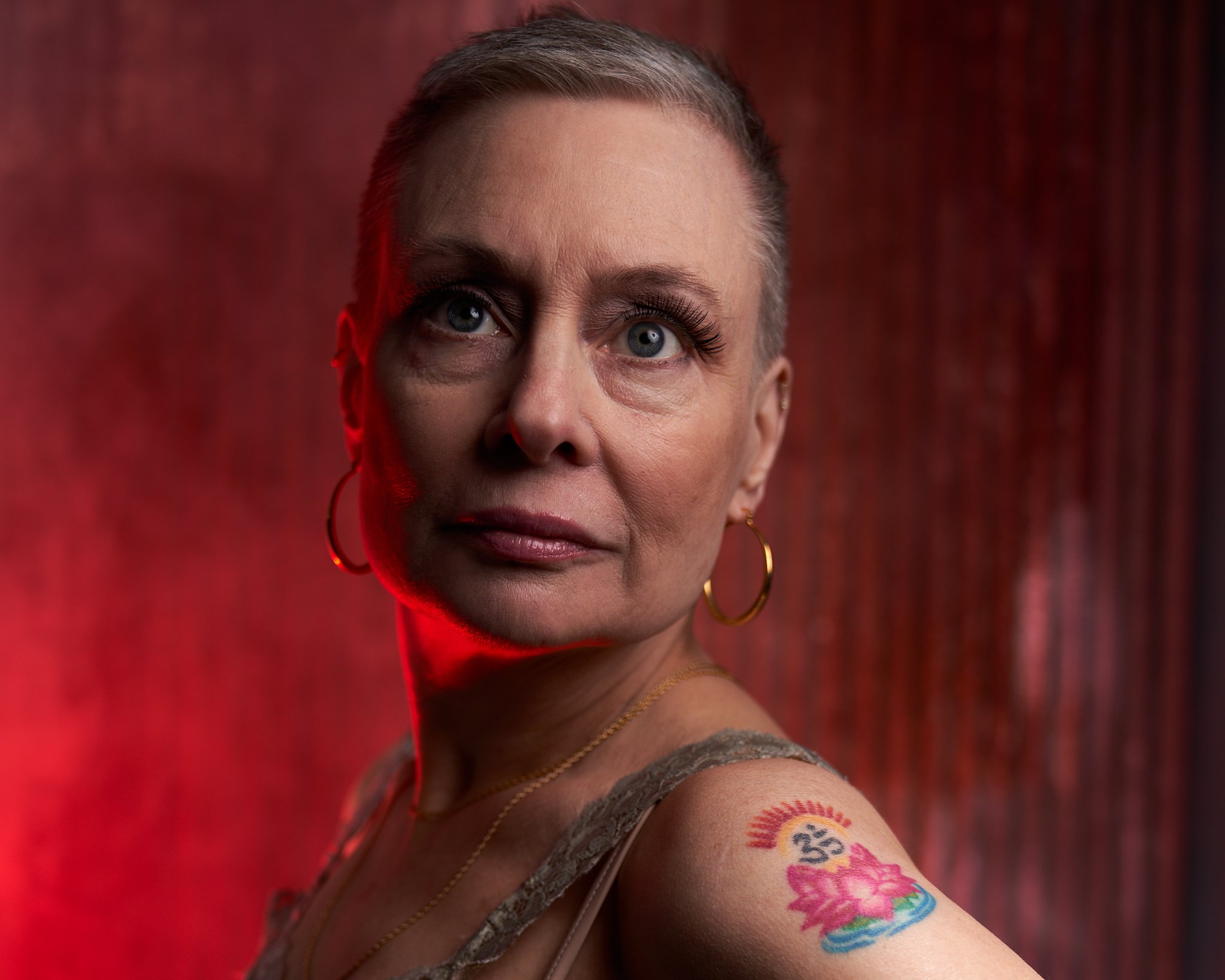
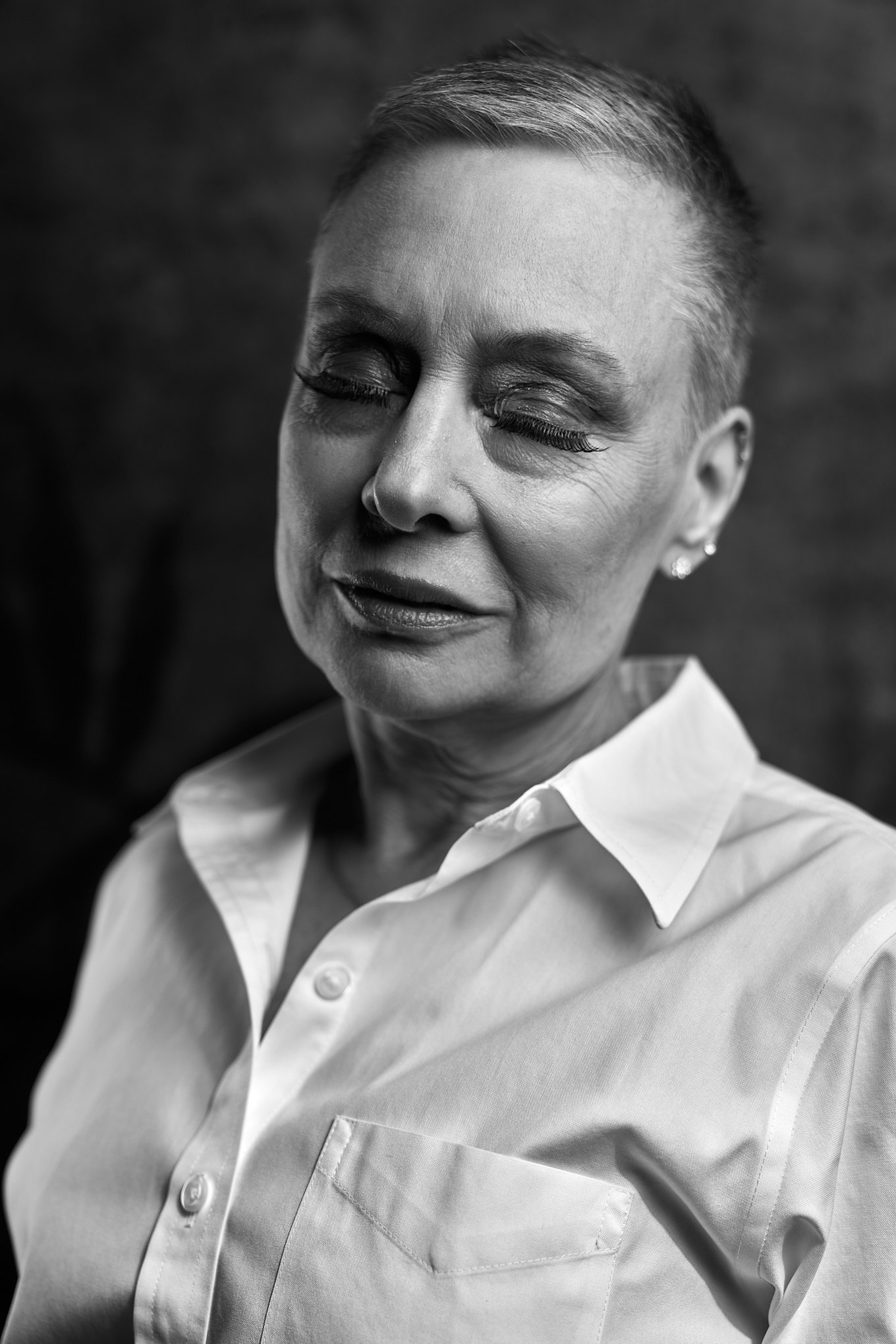
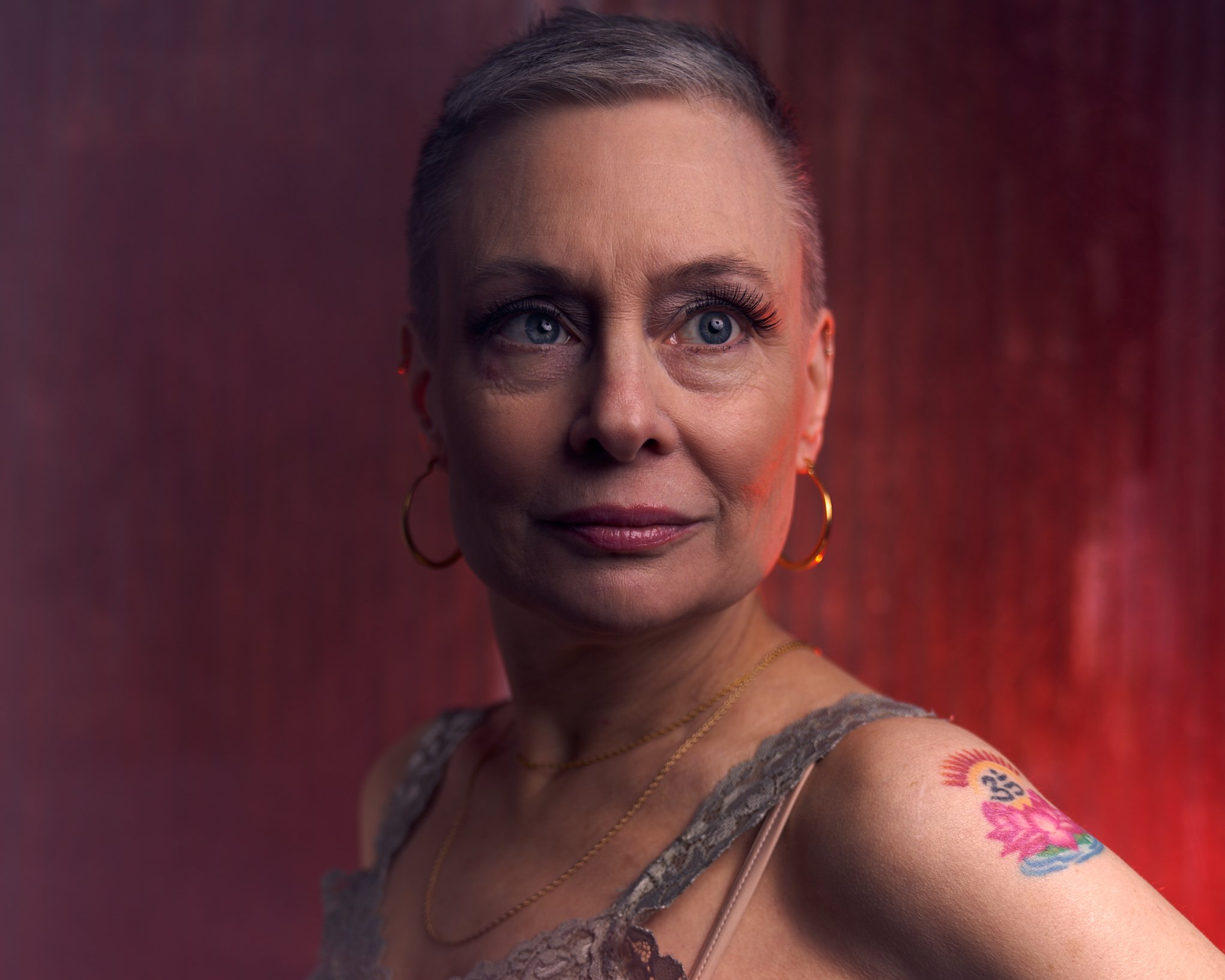
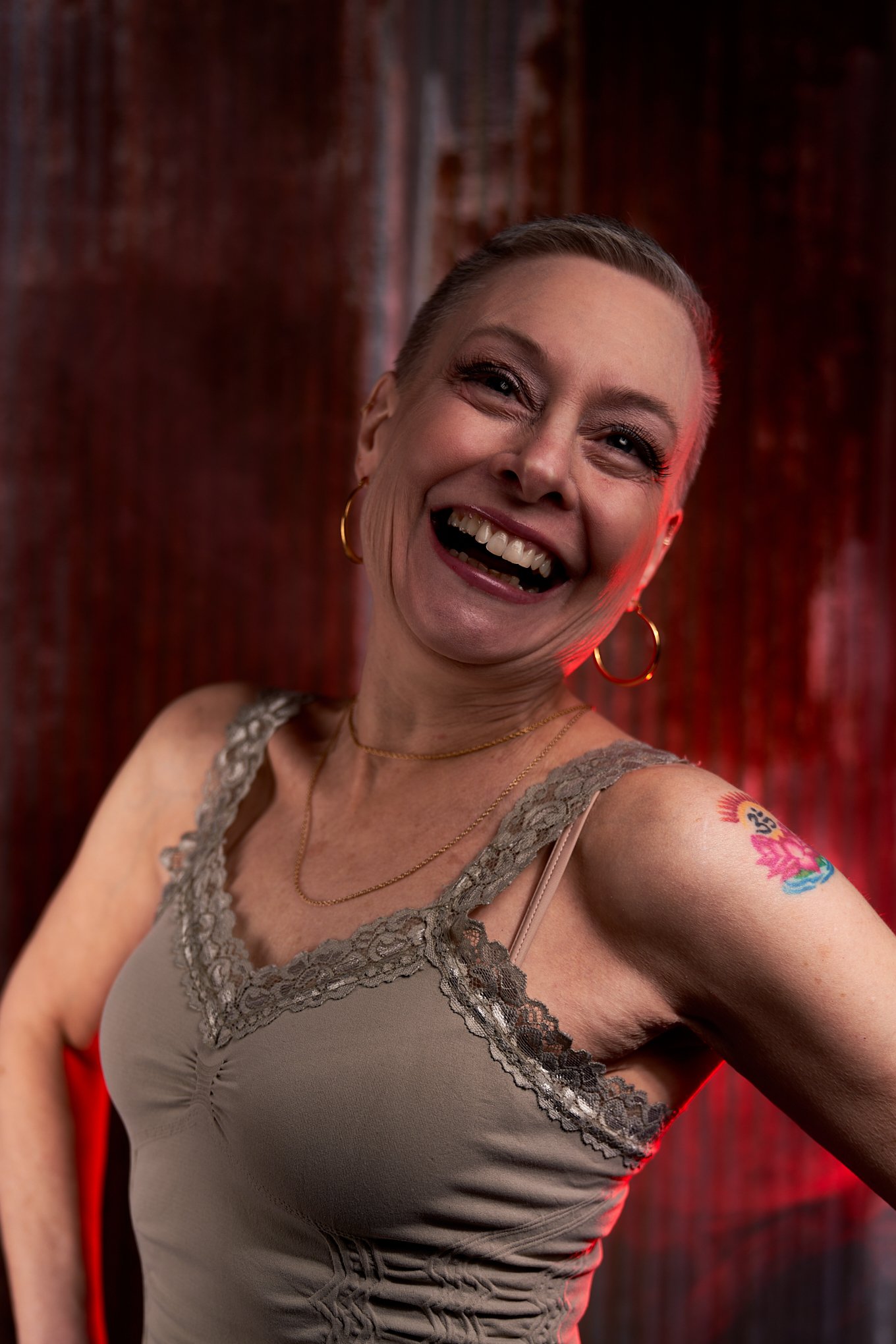
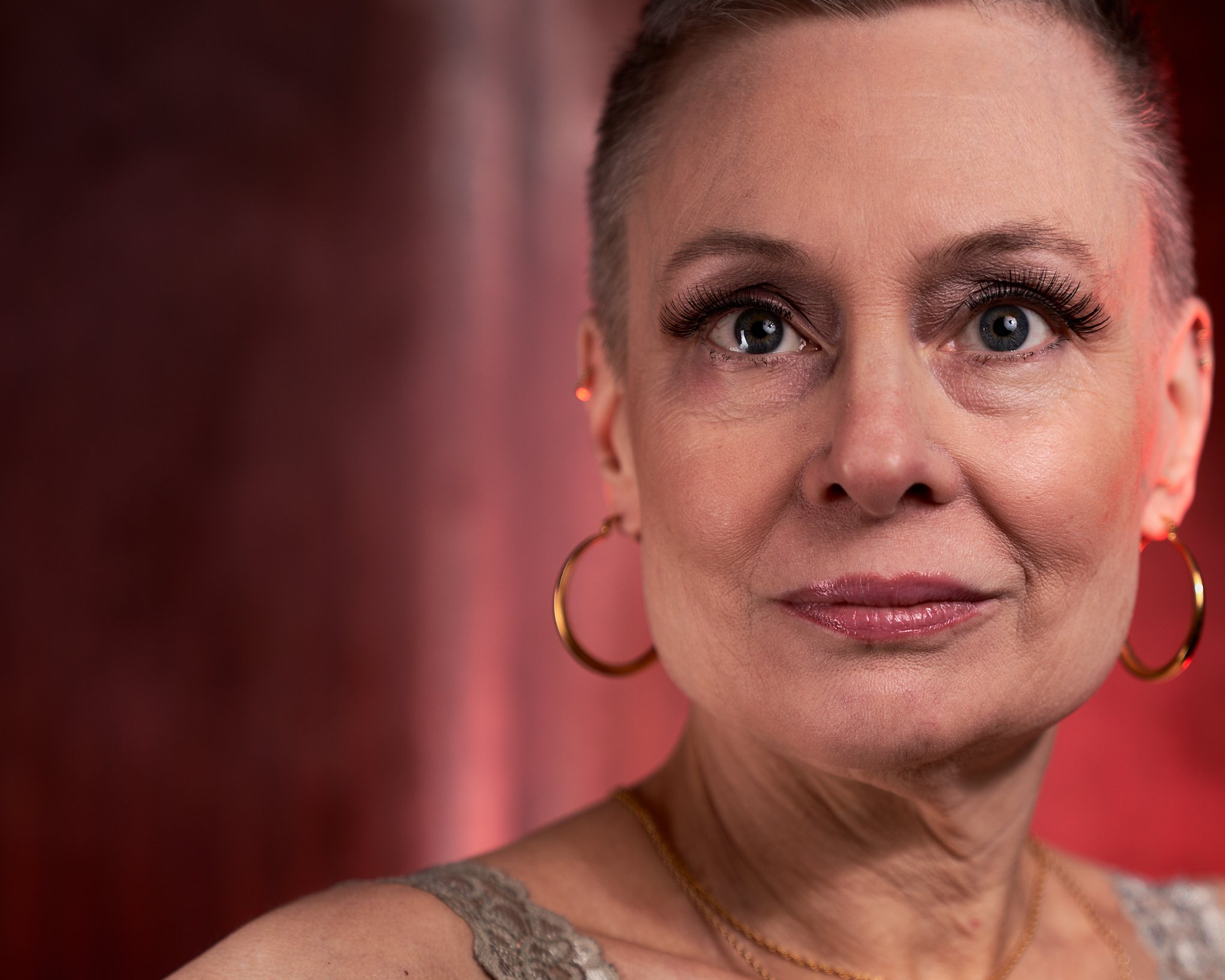
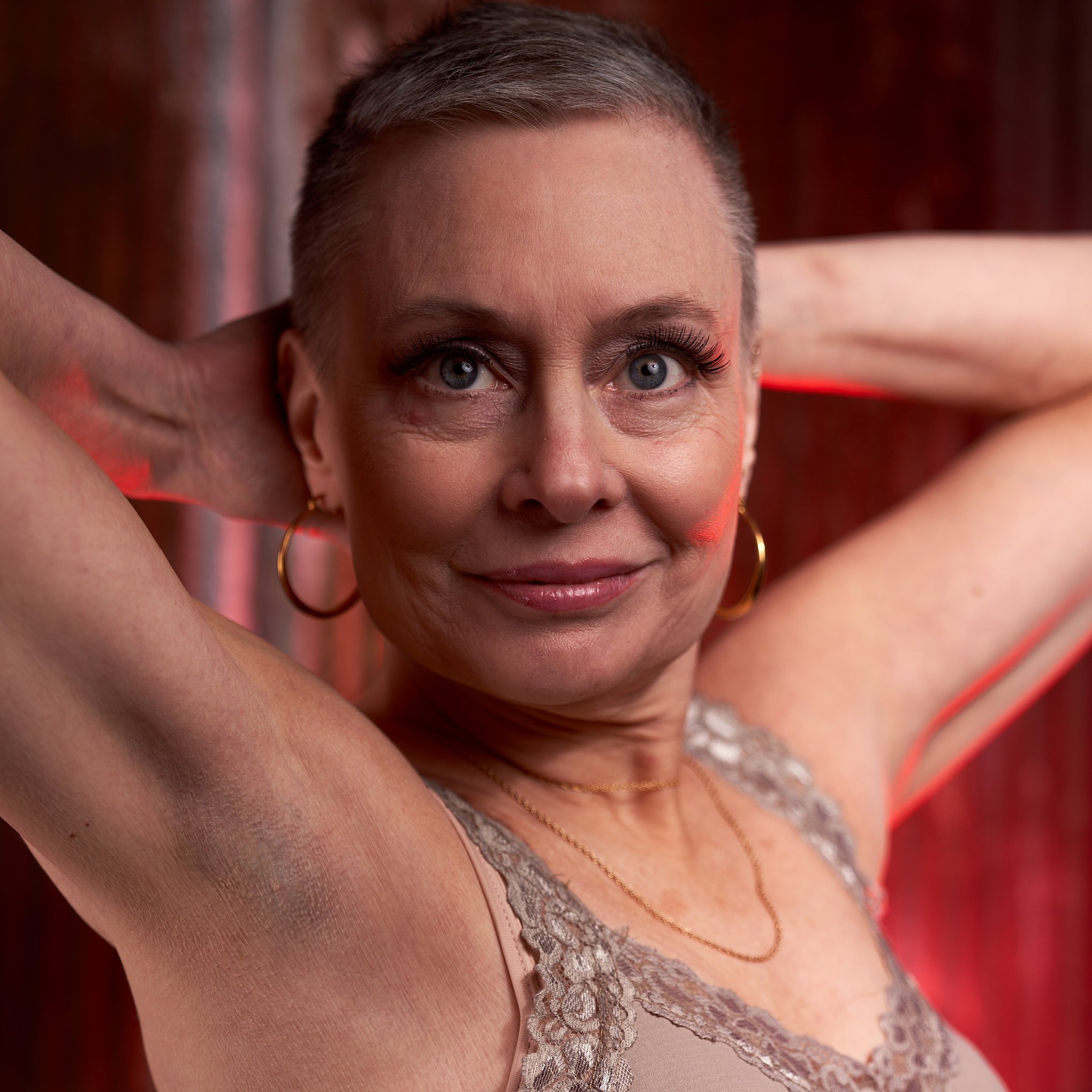
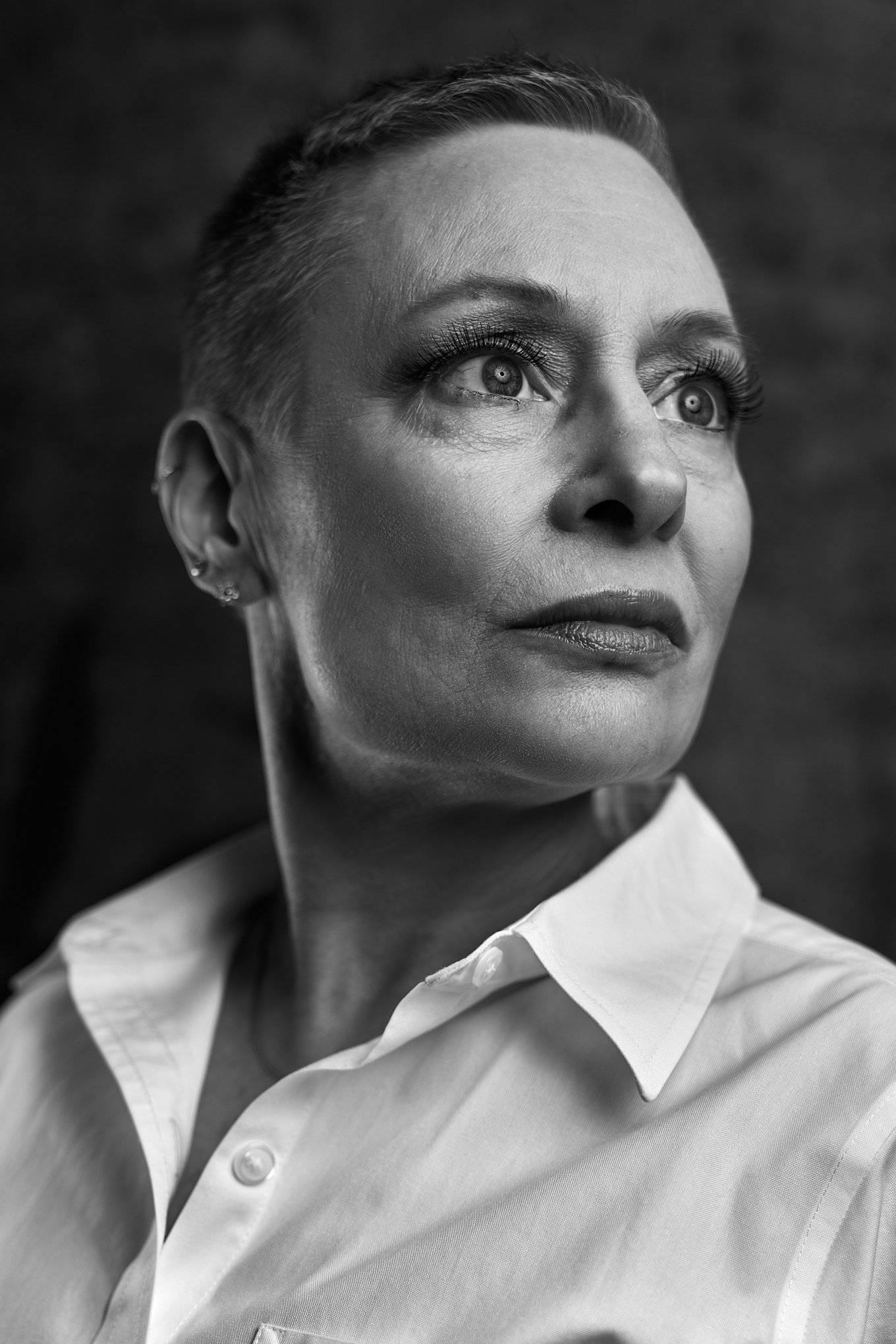
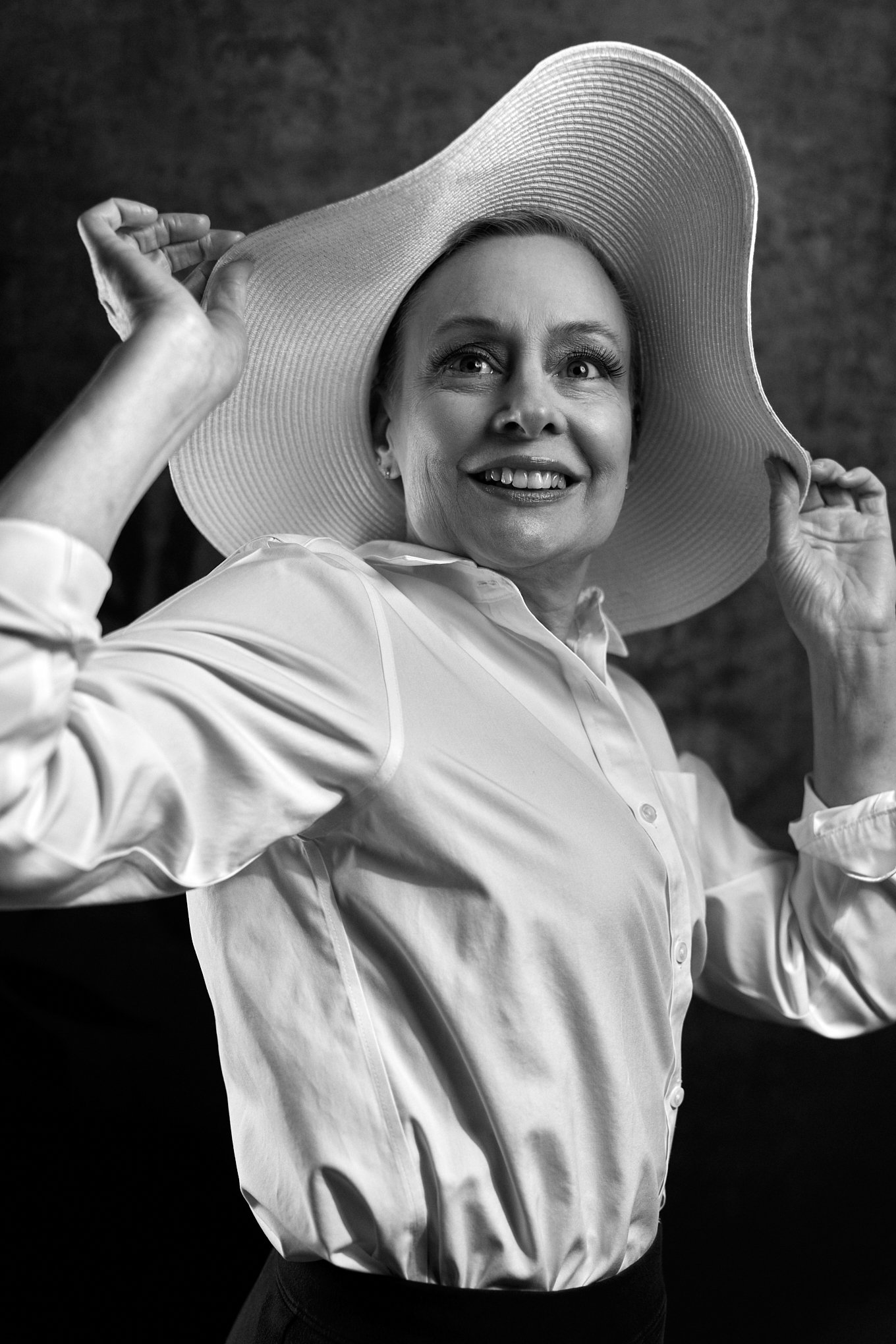
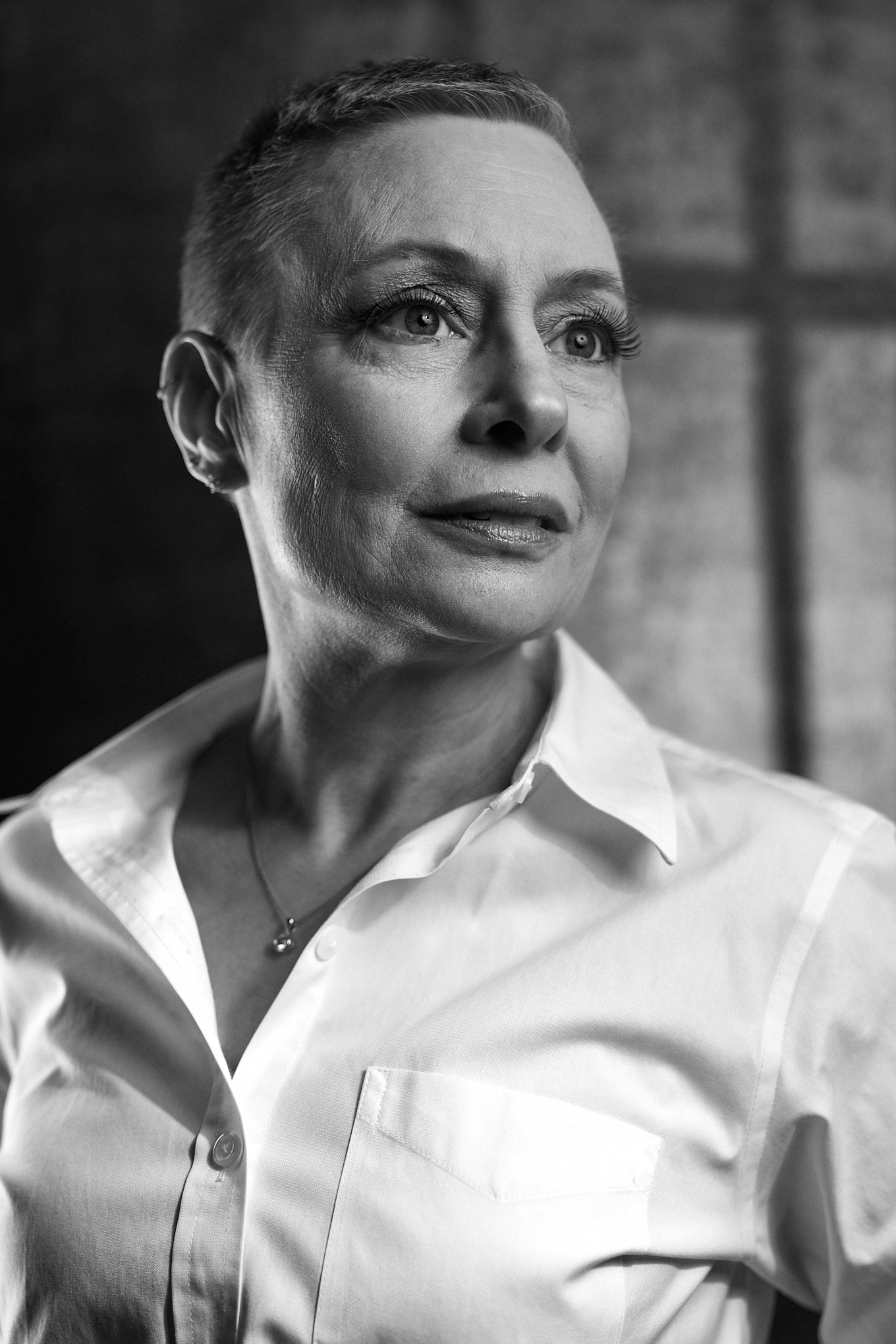
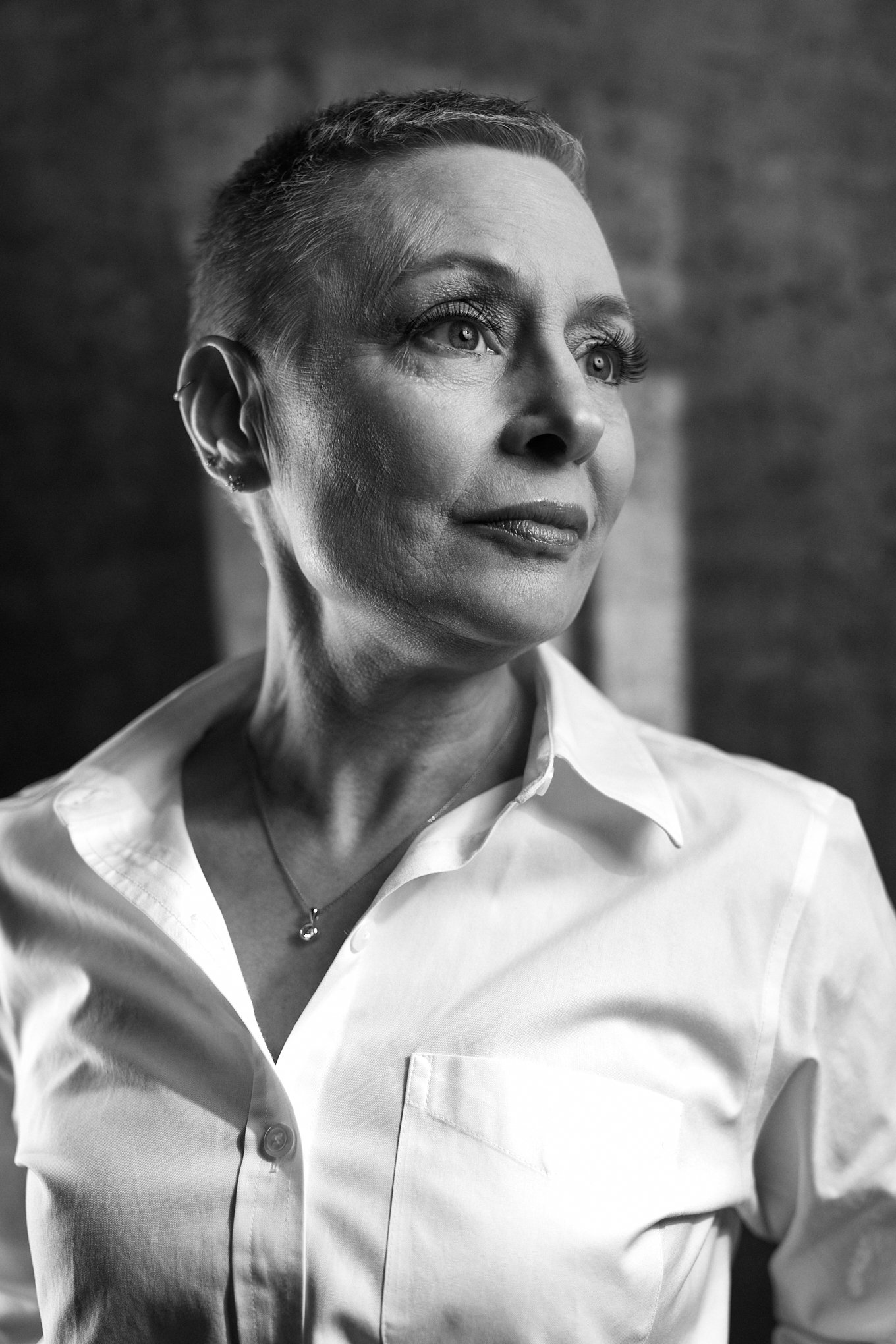
Then I decided to shoot impromptu portraits of a bunch of ballroom dancers who regularly attend events at the Tapestry Folkdance Center in Minneapolis. The New Year’s Day dance started off with a bolero lesson by Scott Anderson, a Minneapolis pro known both for his teaching and performance skills and his friendly demeanor. I photographed all comers at no charge, unless they wanted prints. Mostly, I just wanted to stay occupied so that I would not be tempted to dance, risking injury. But the greater benefit was in meeting new friends and in talking with many of these folks who I see often but don’t always engage in conversation. Their gratitude for my work was heartwarming.
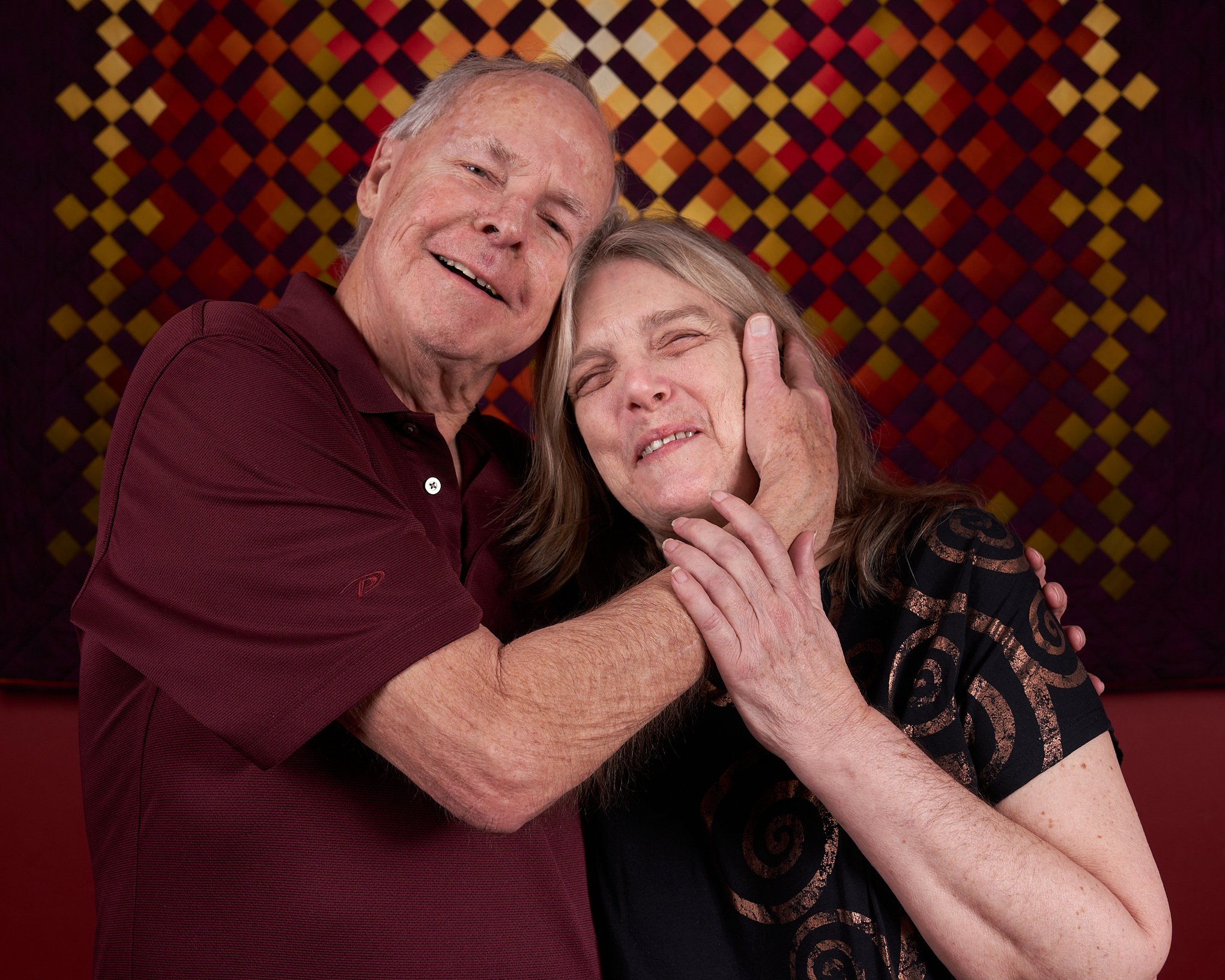
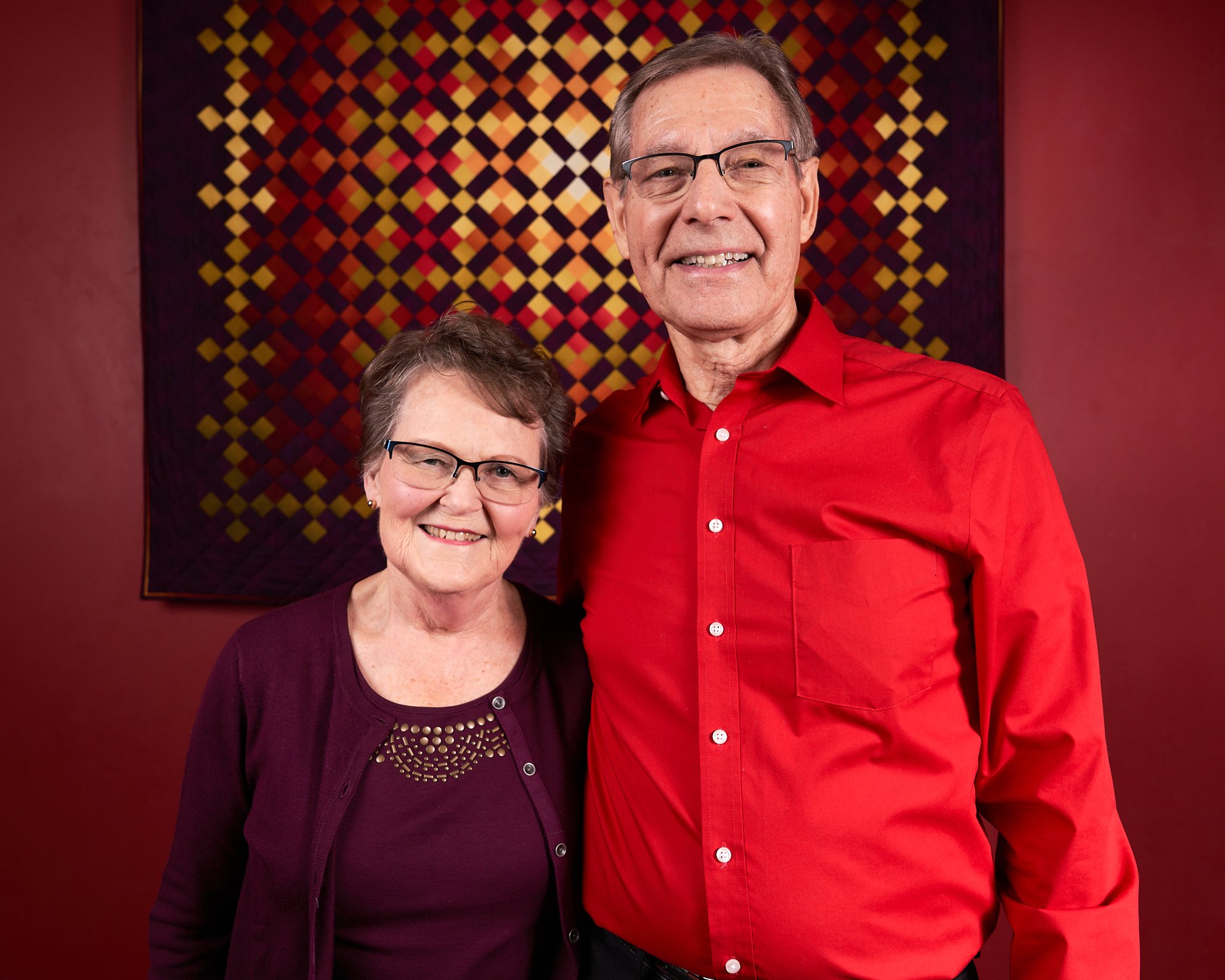
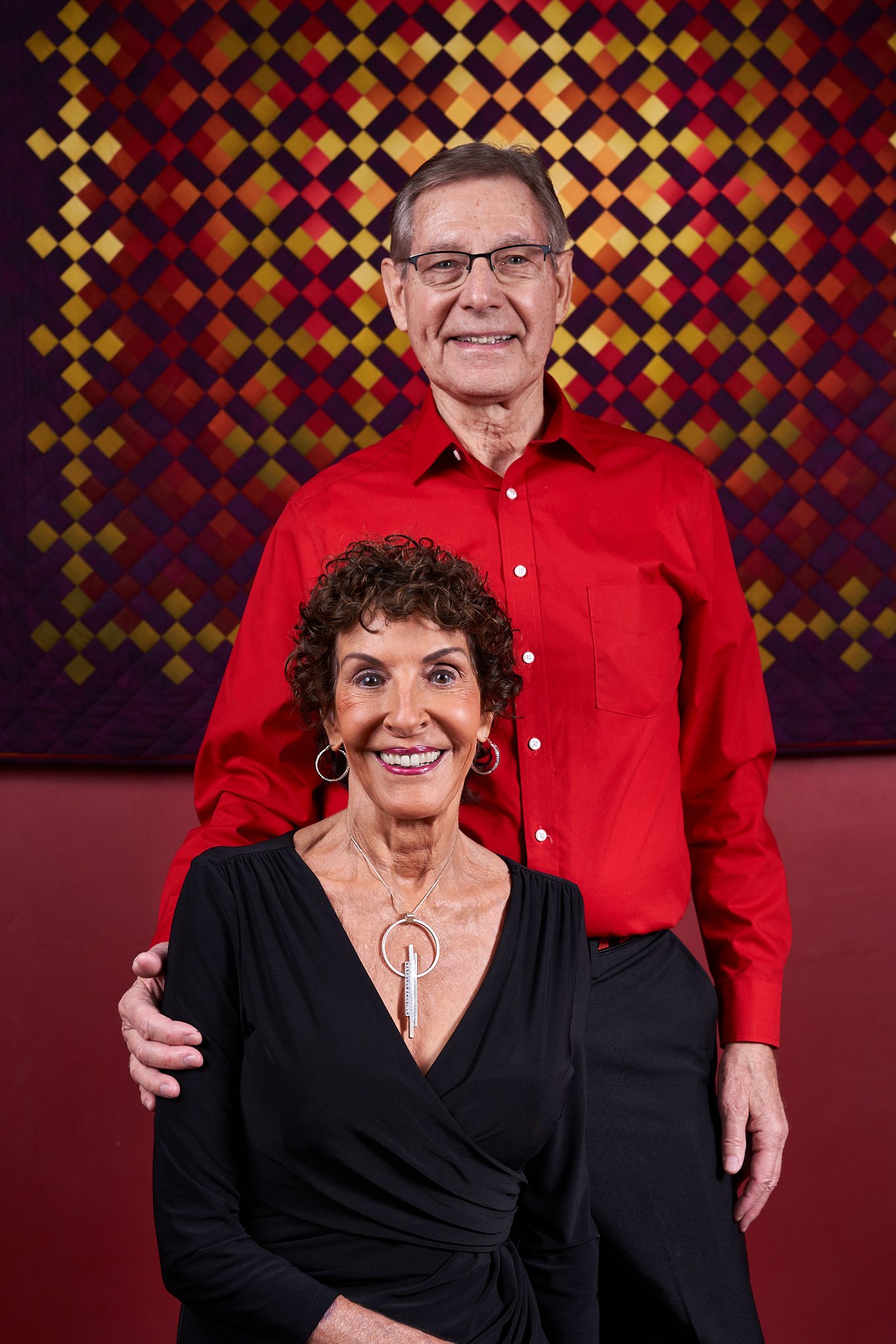
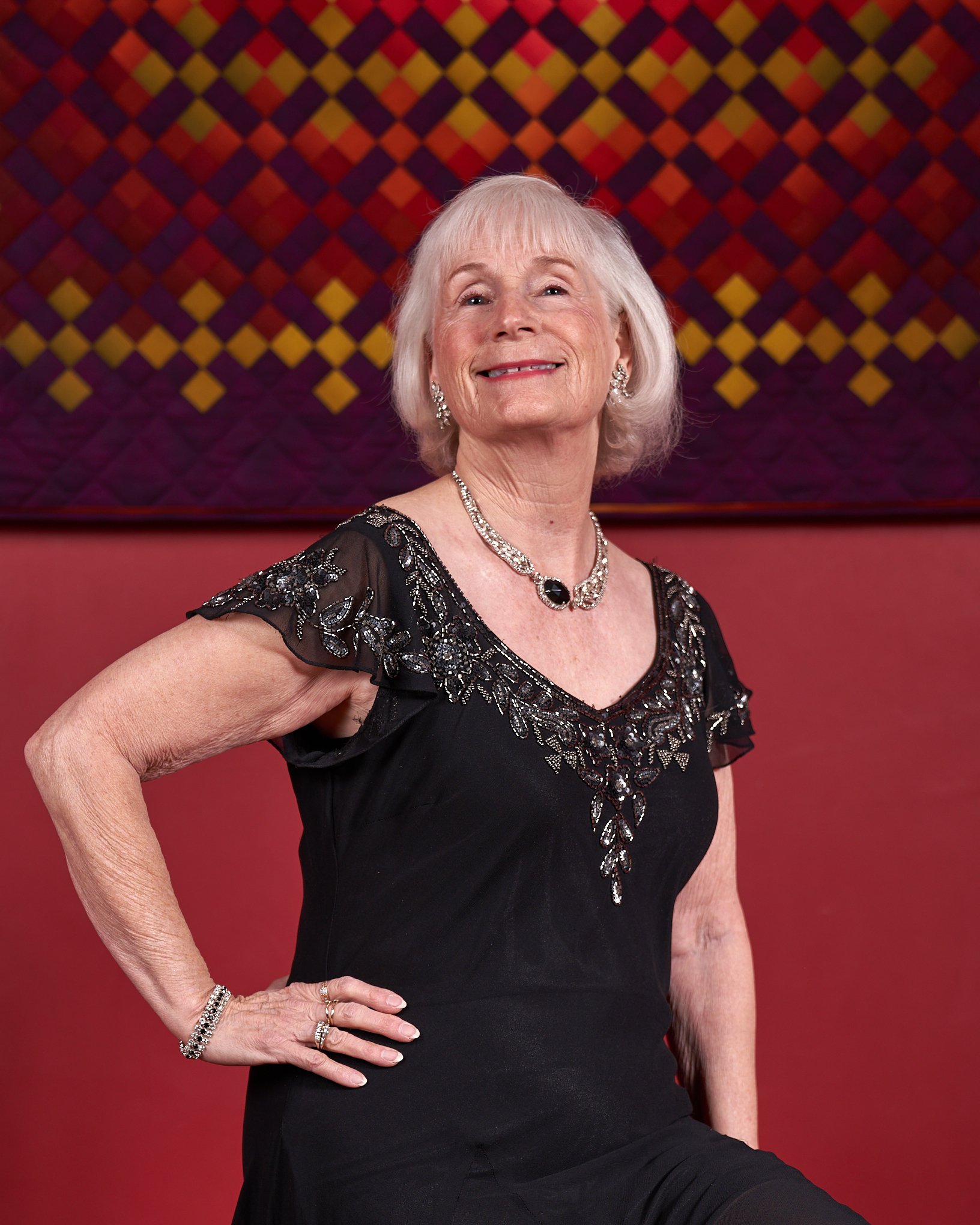
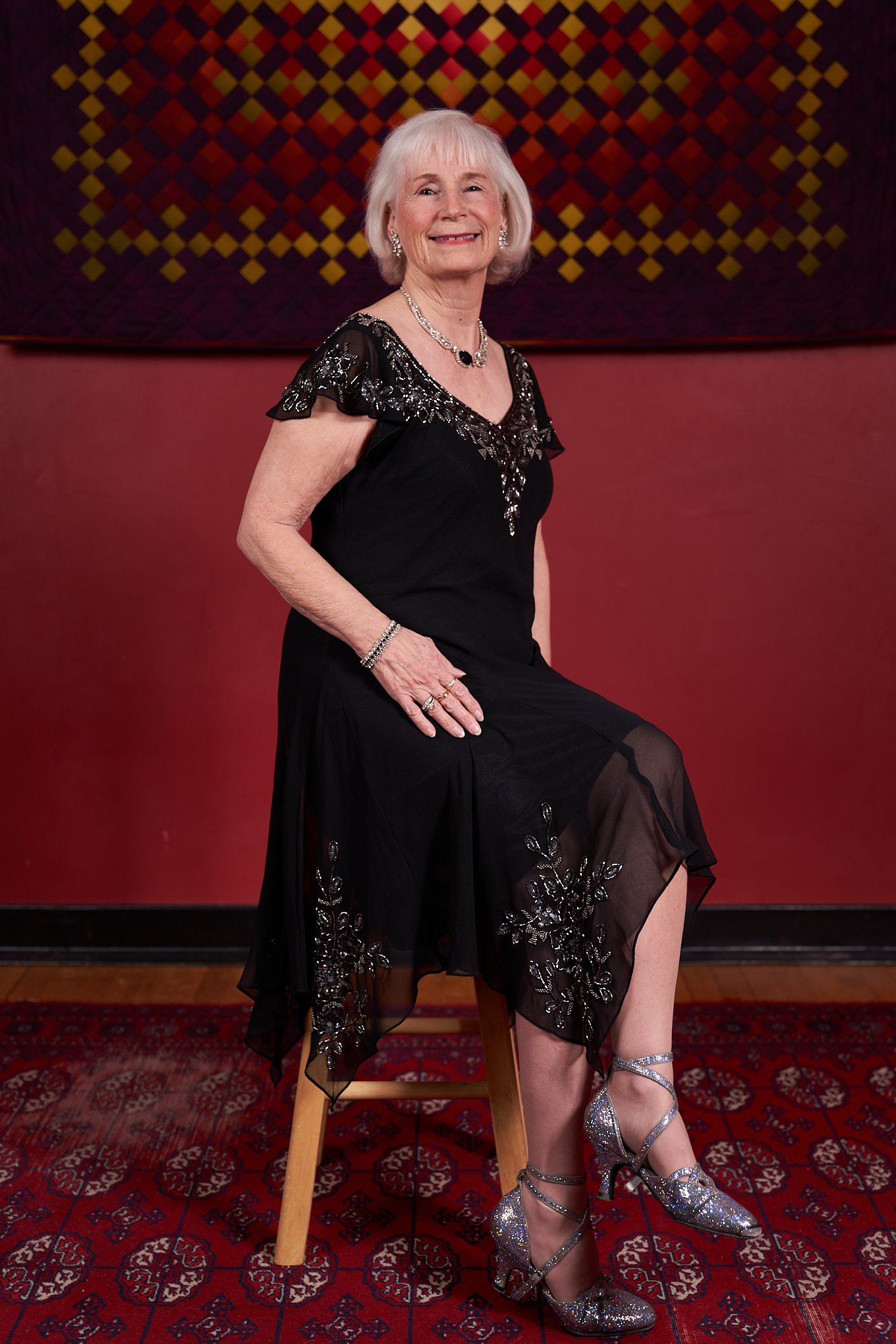
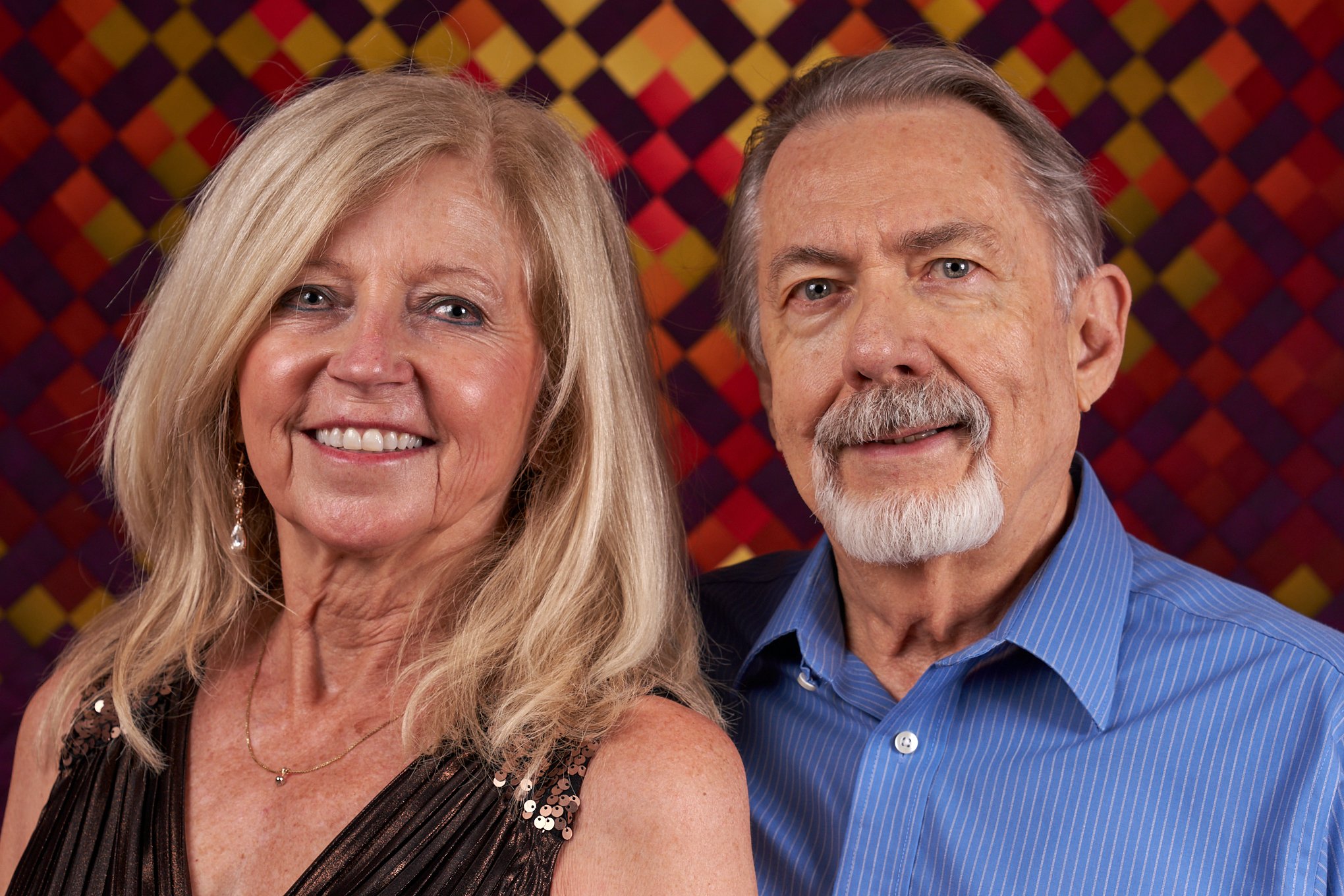

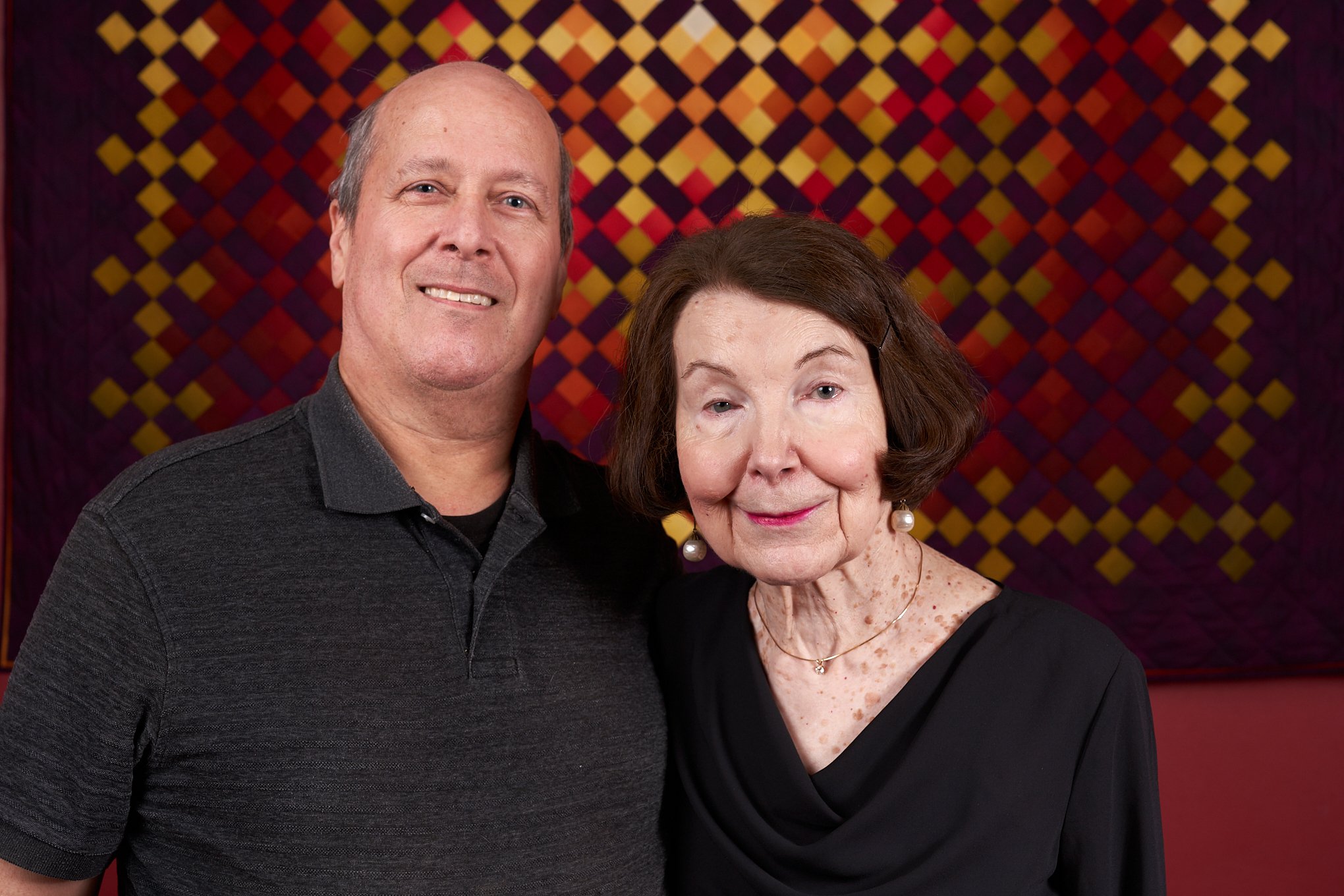
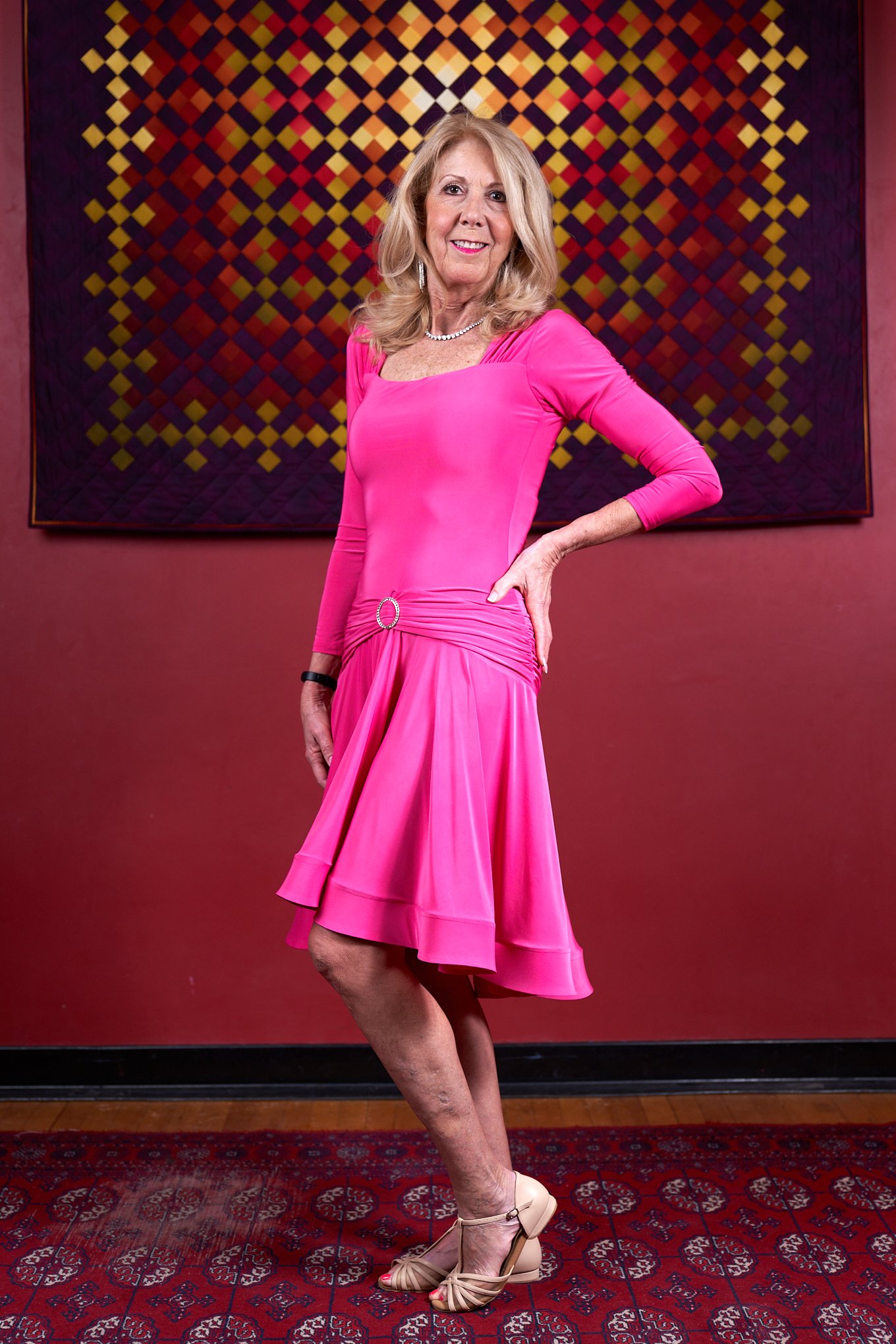


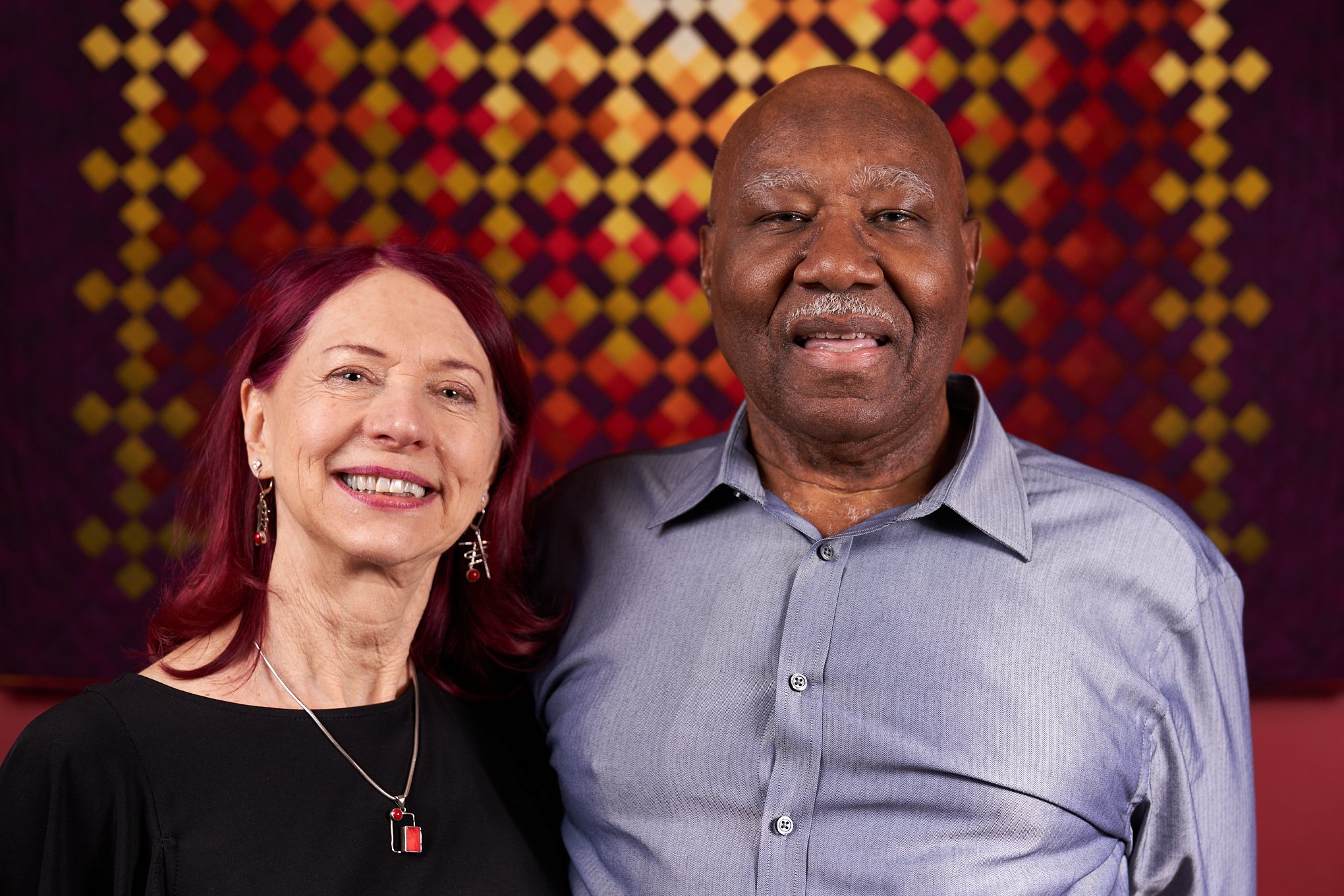
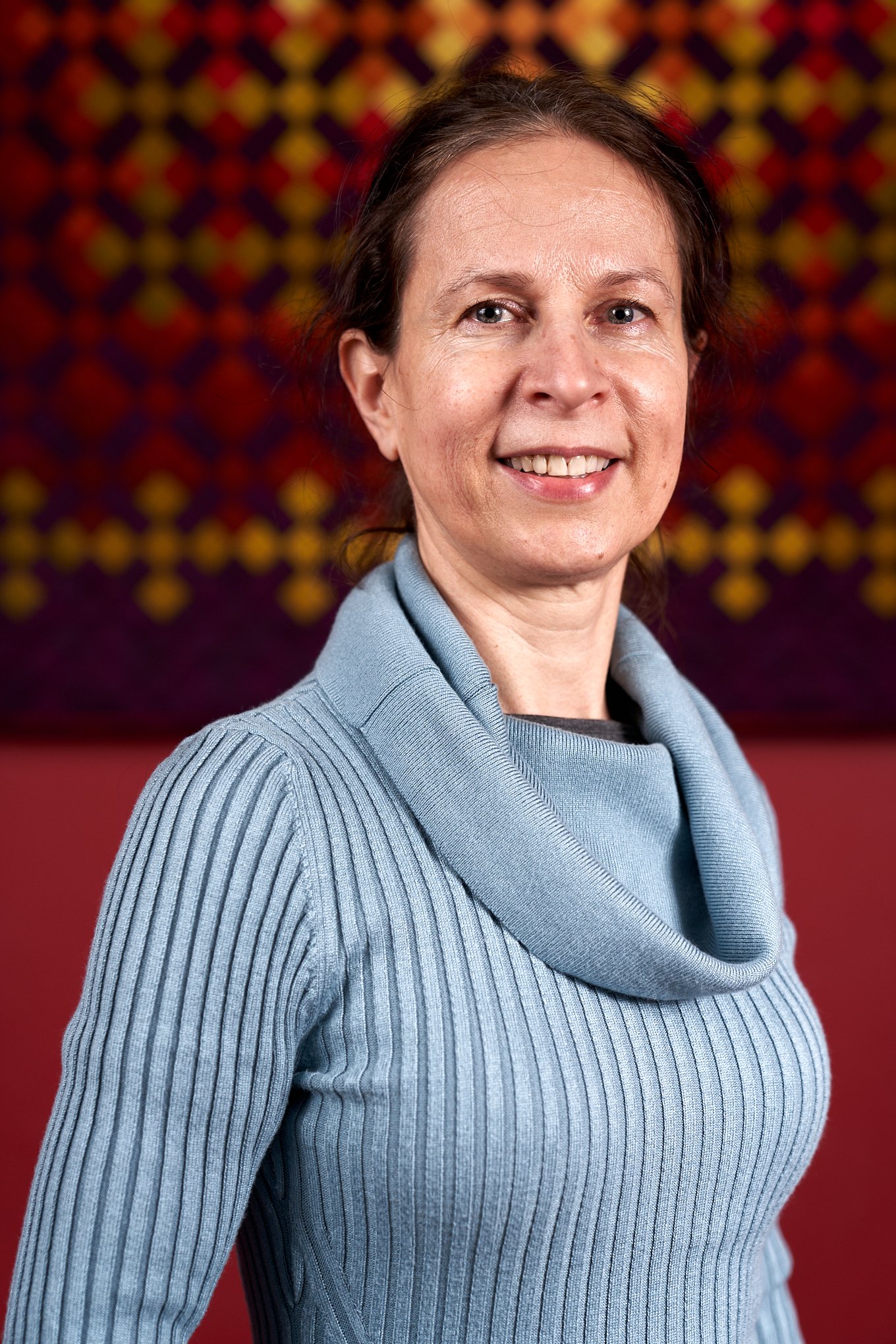
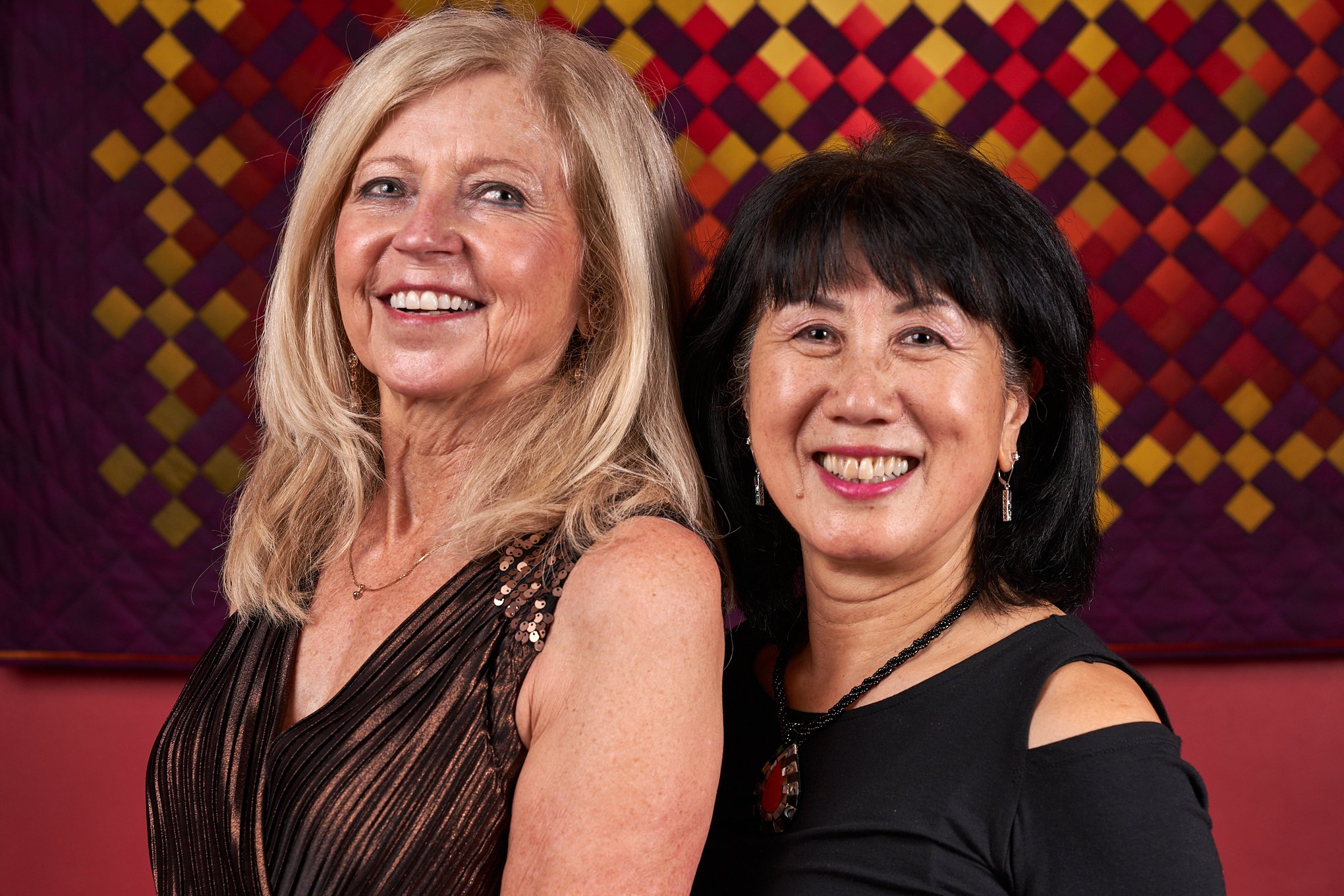

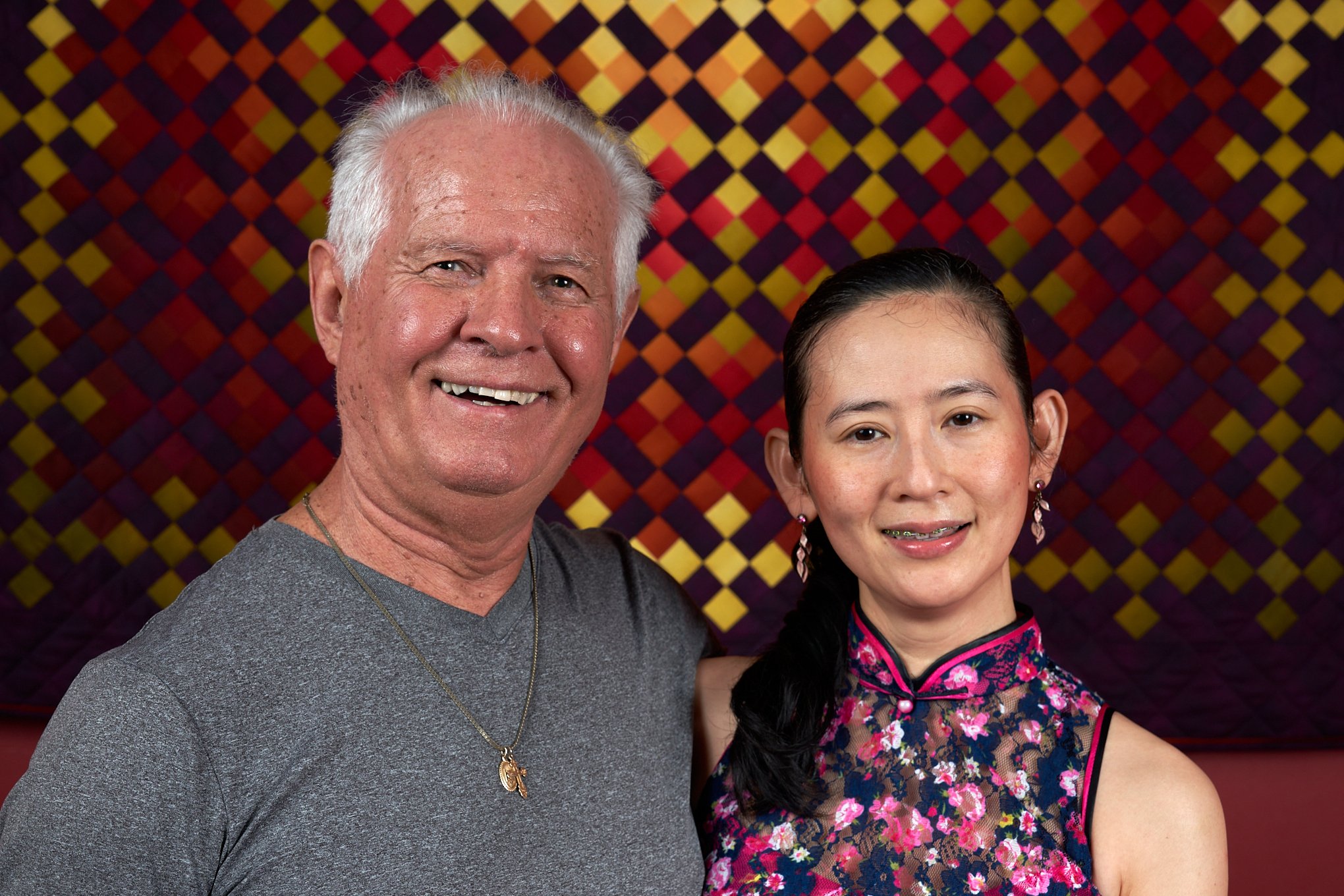


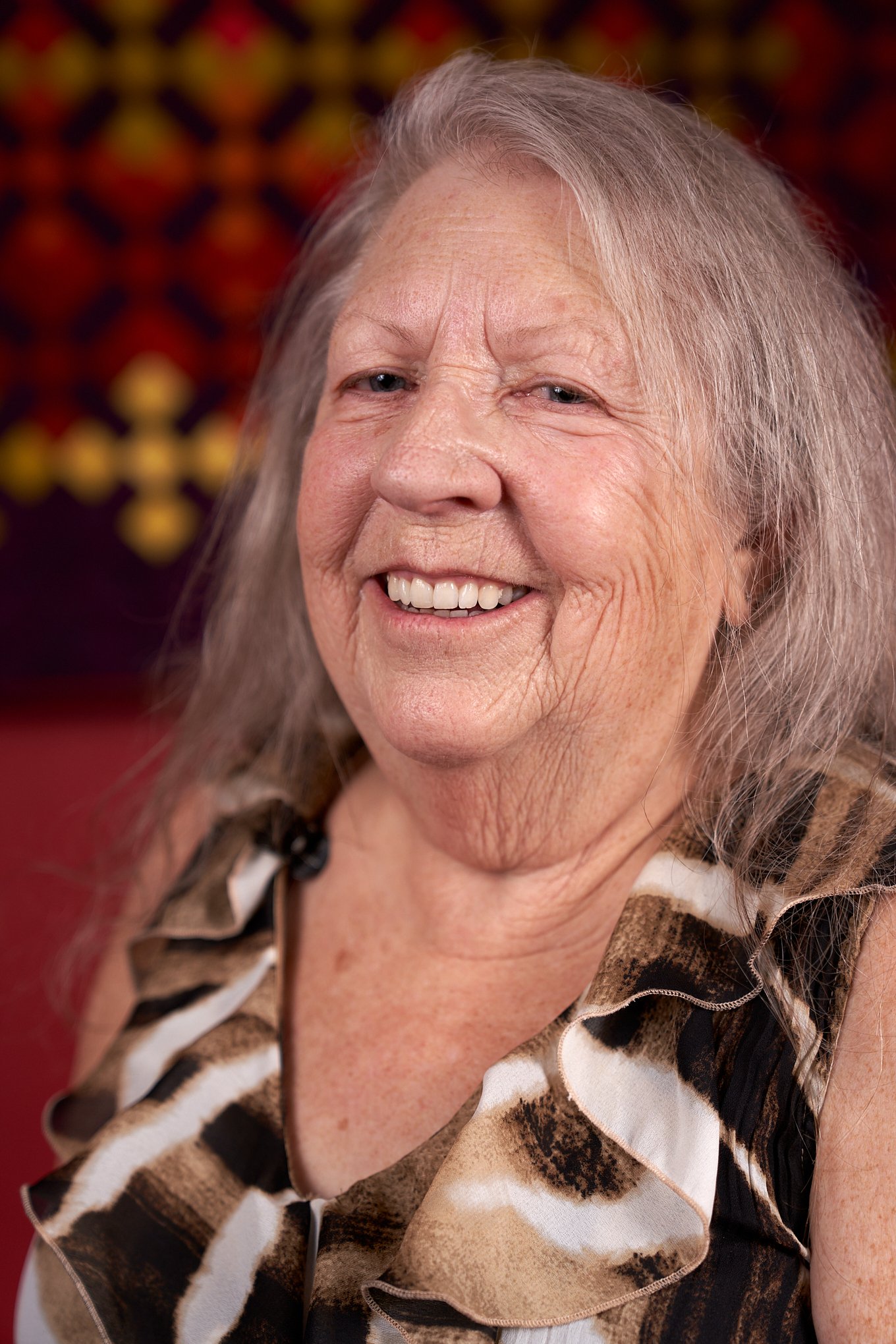


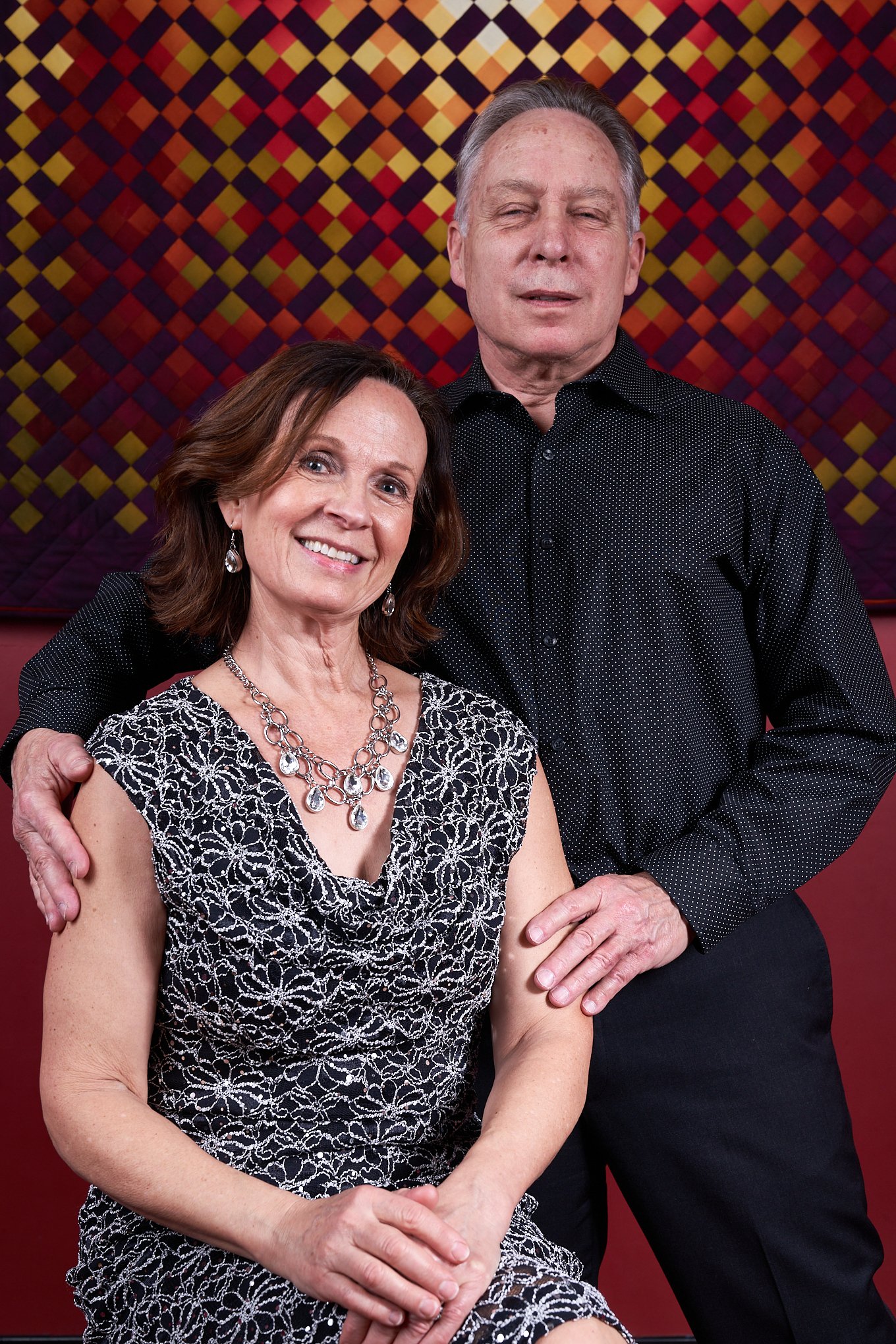
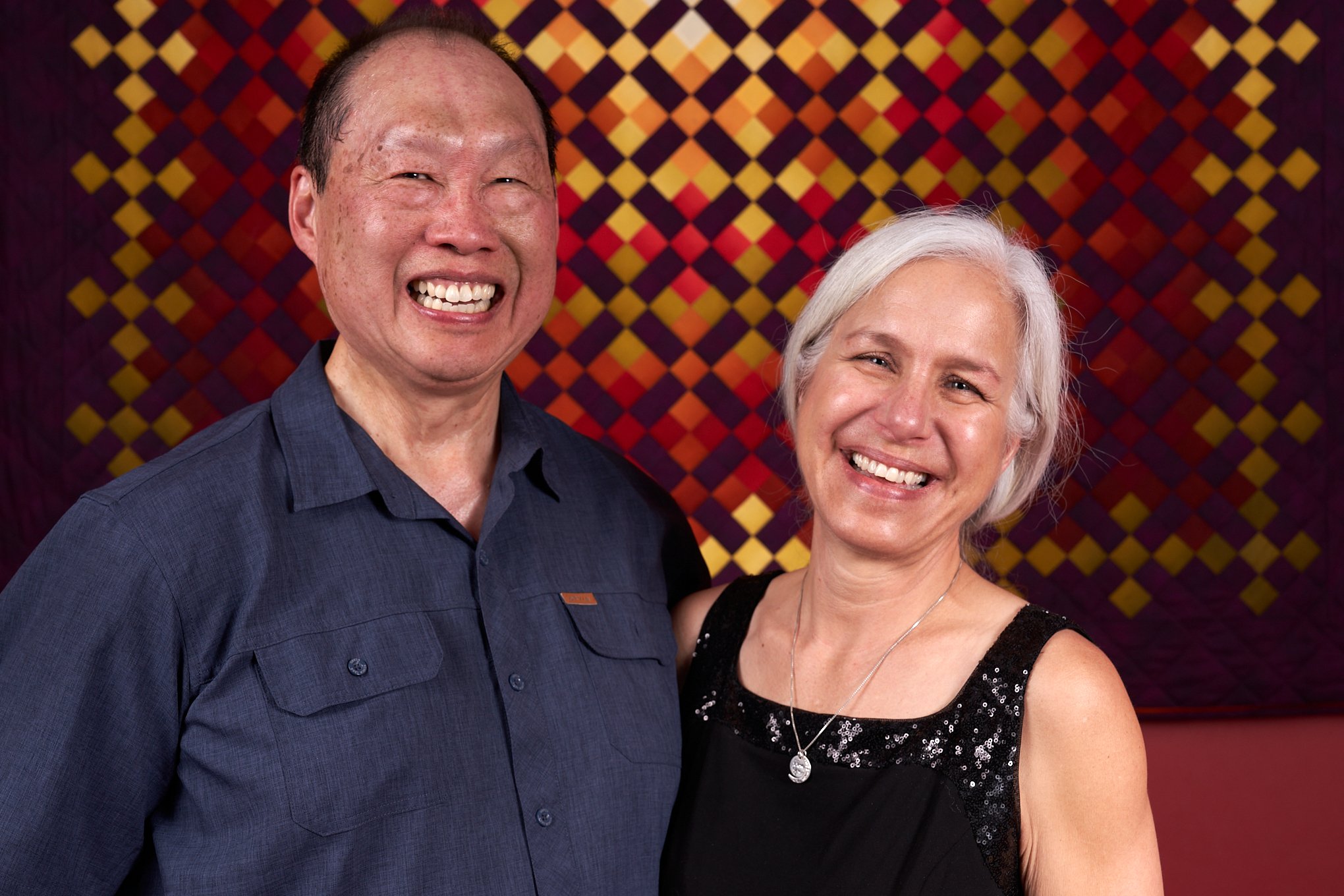
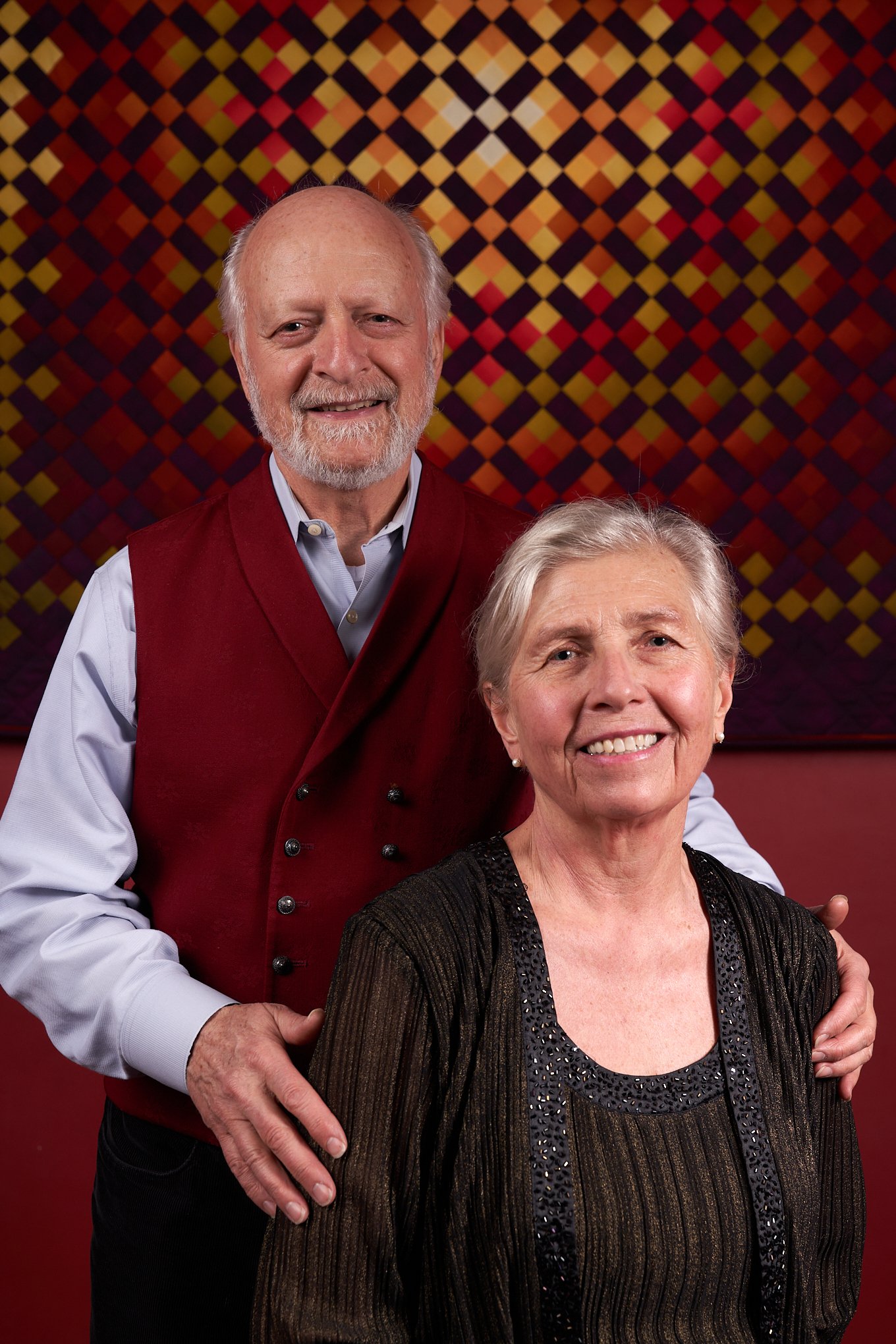
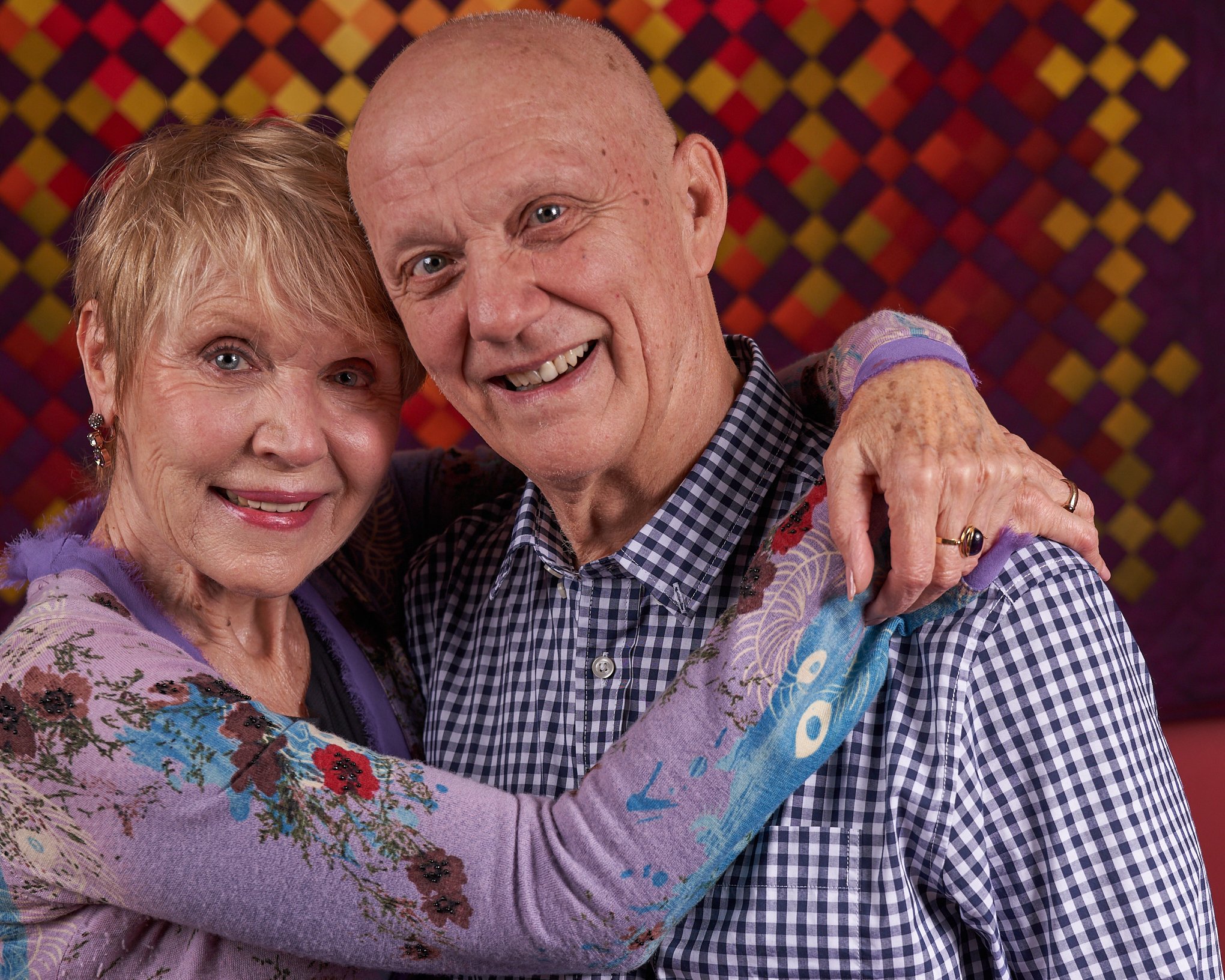
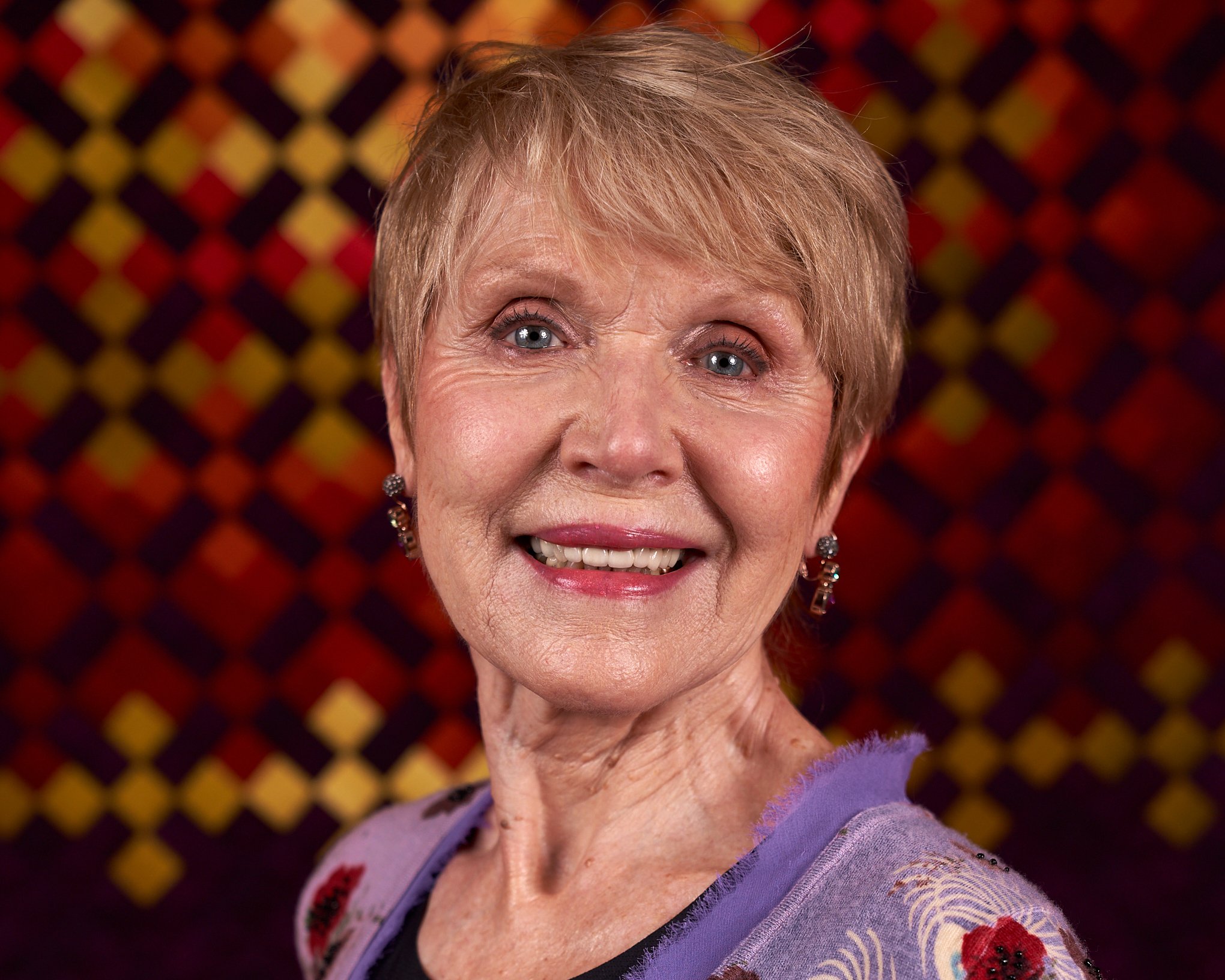
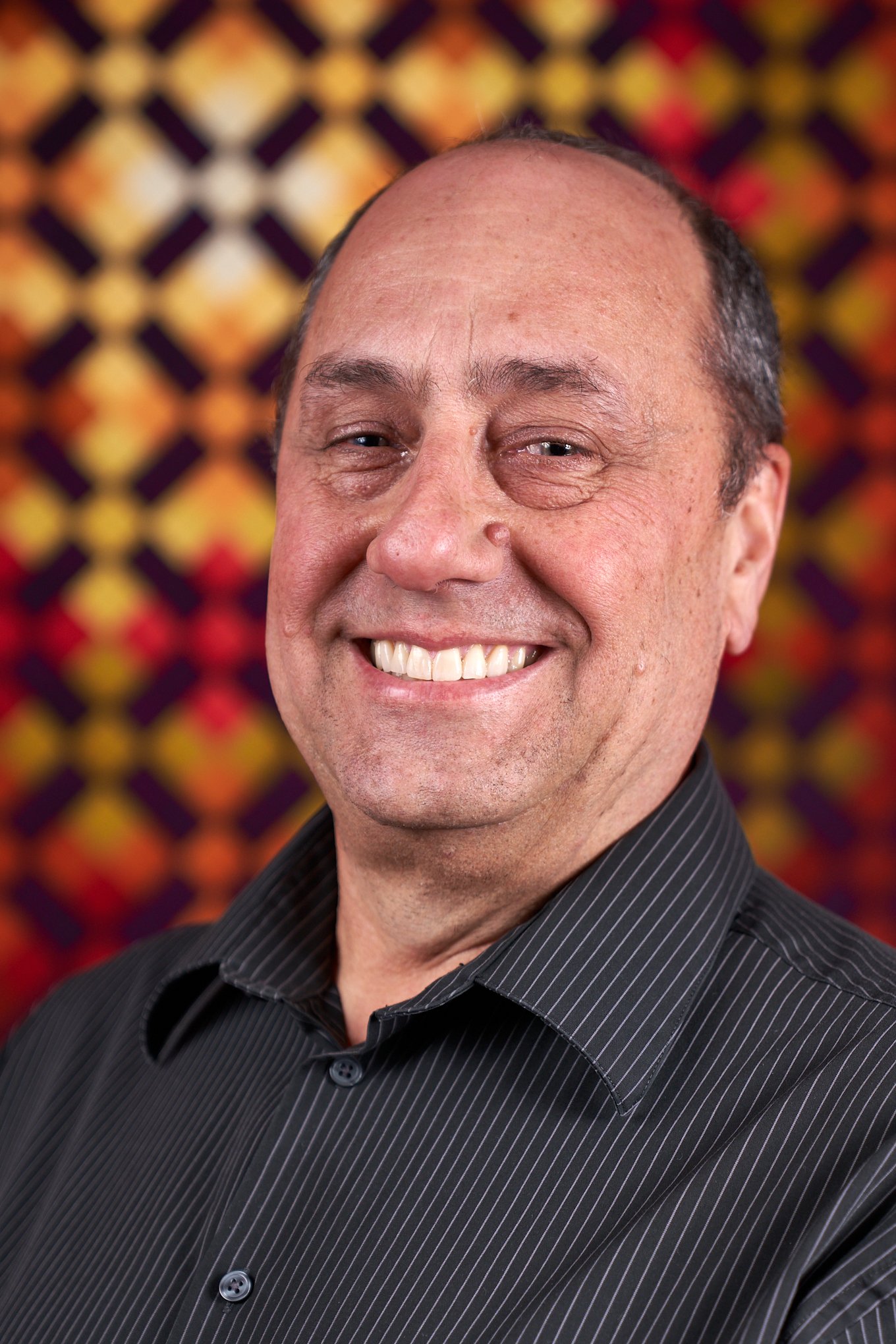

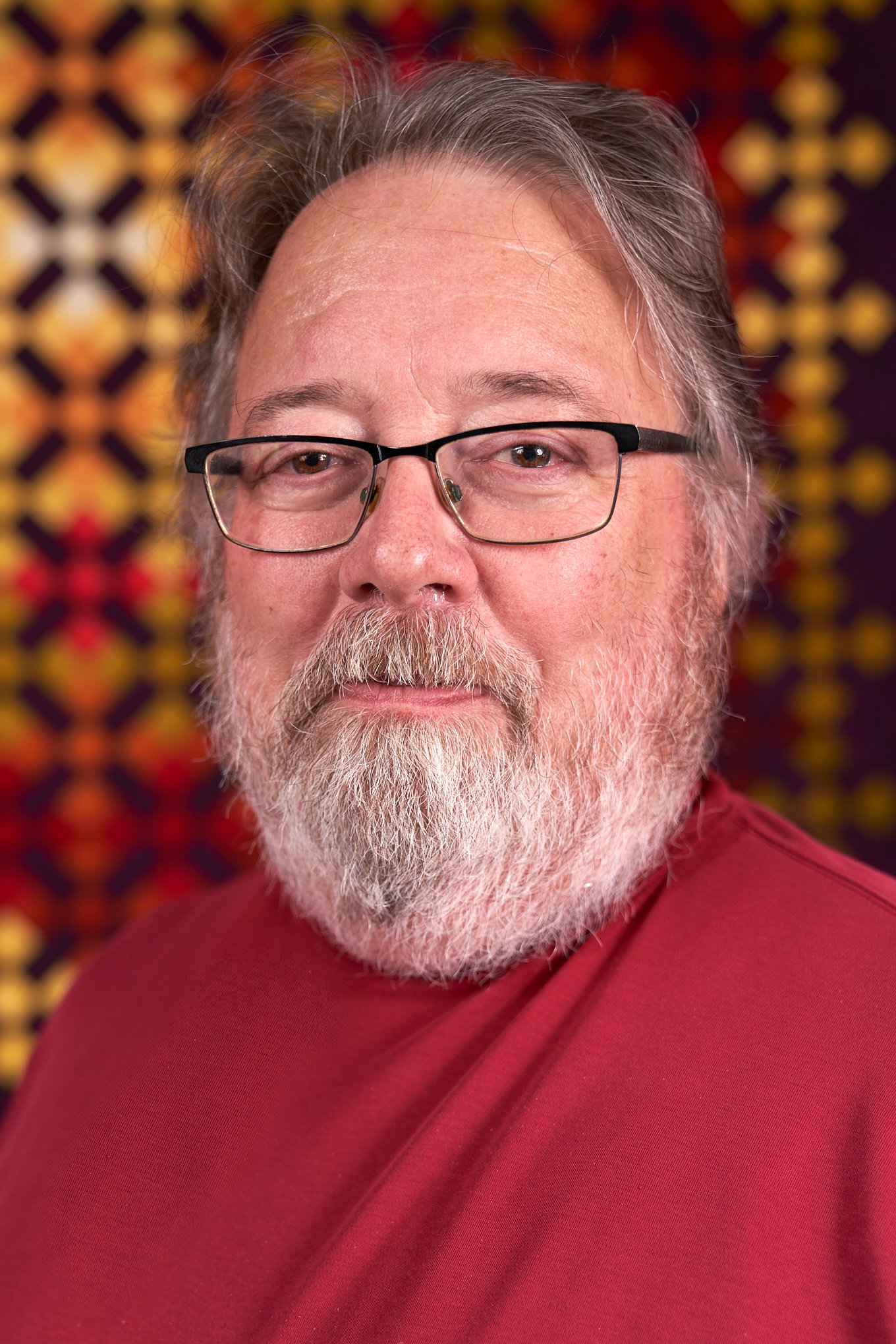
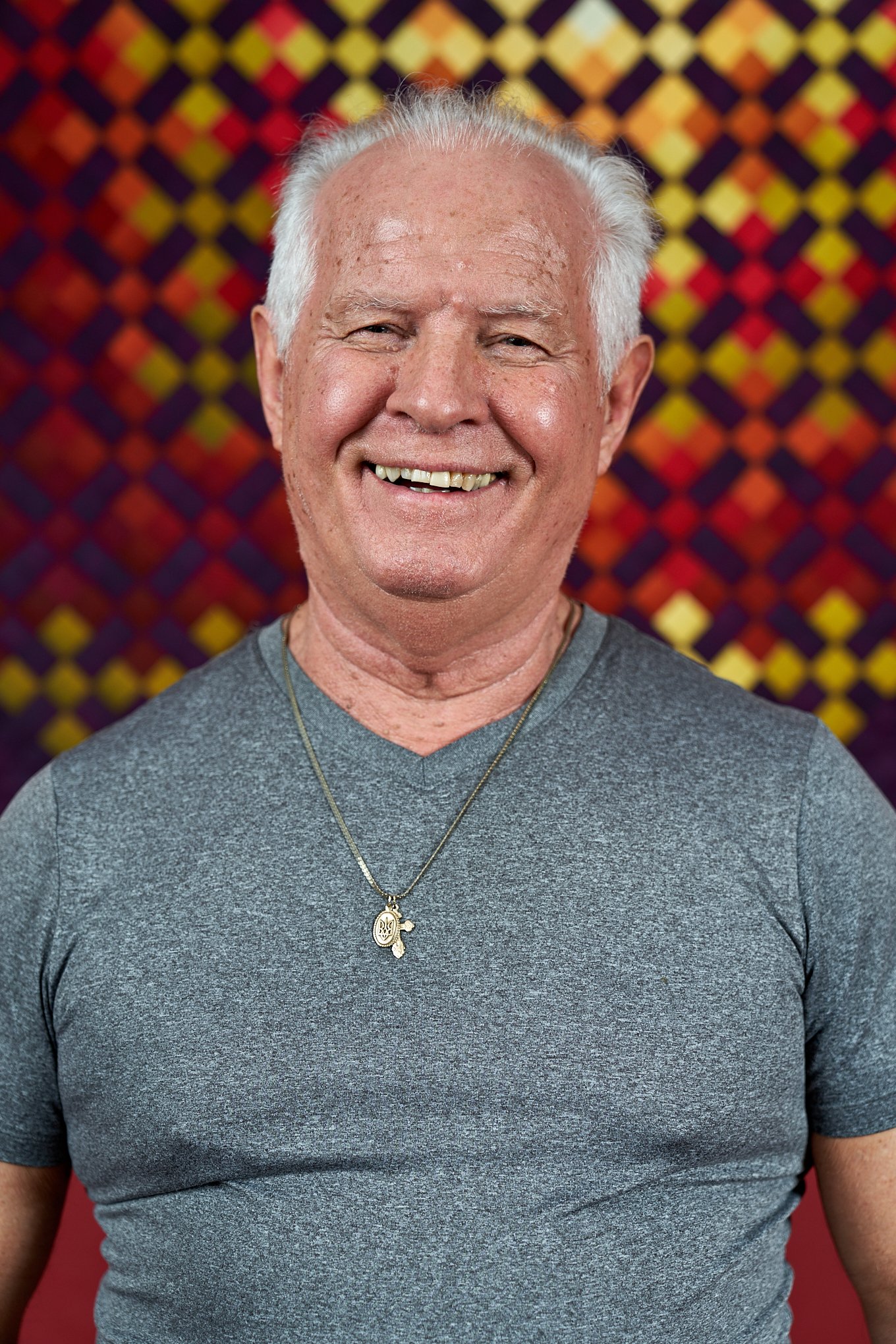
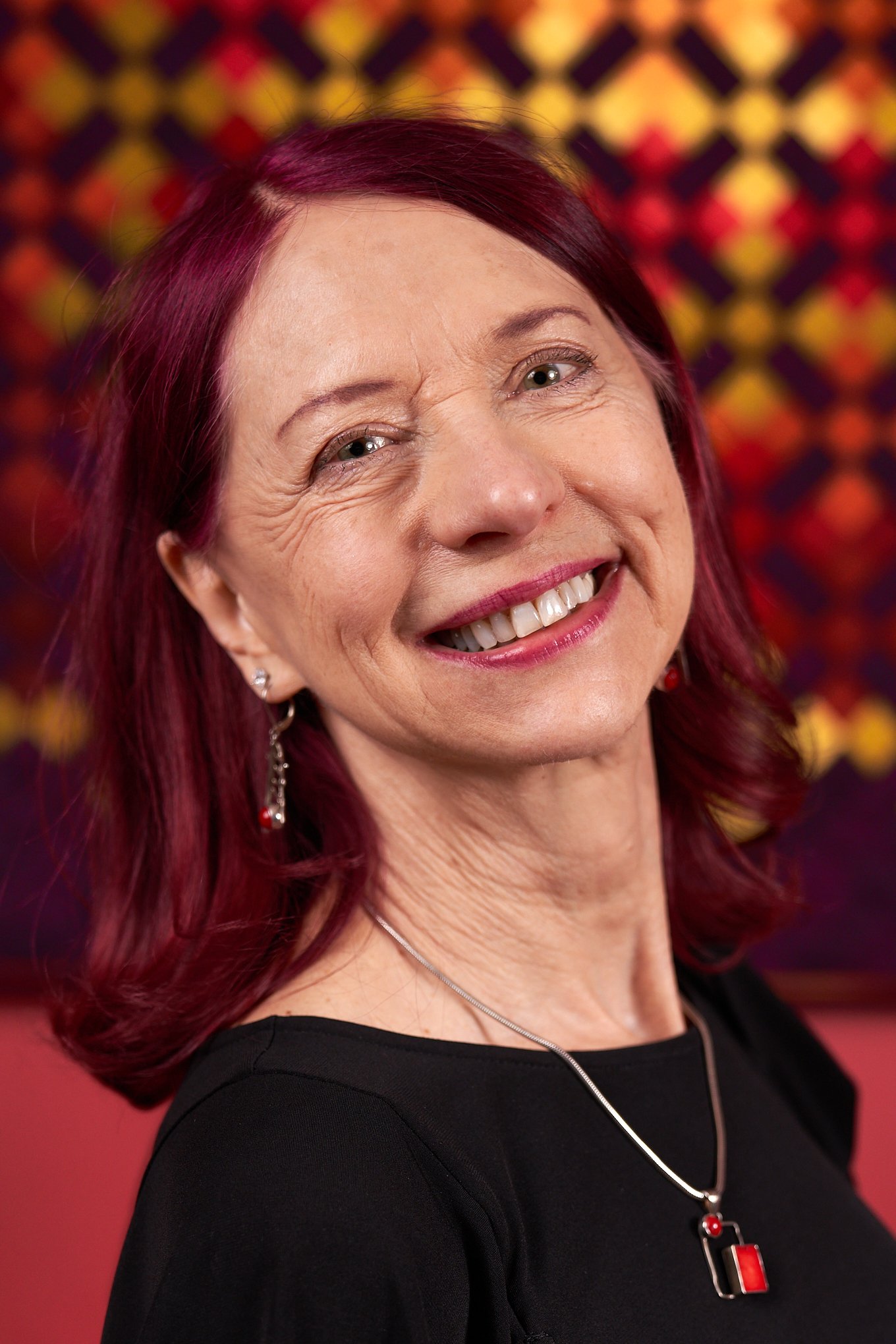
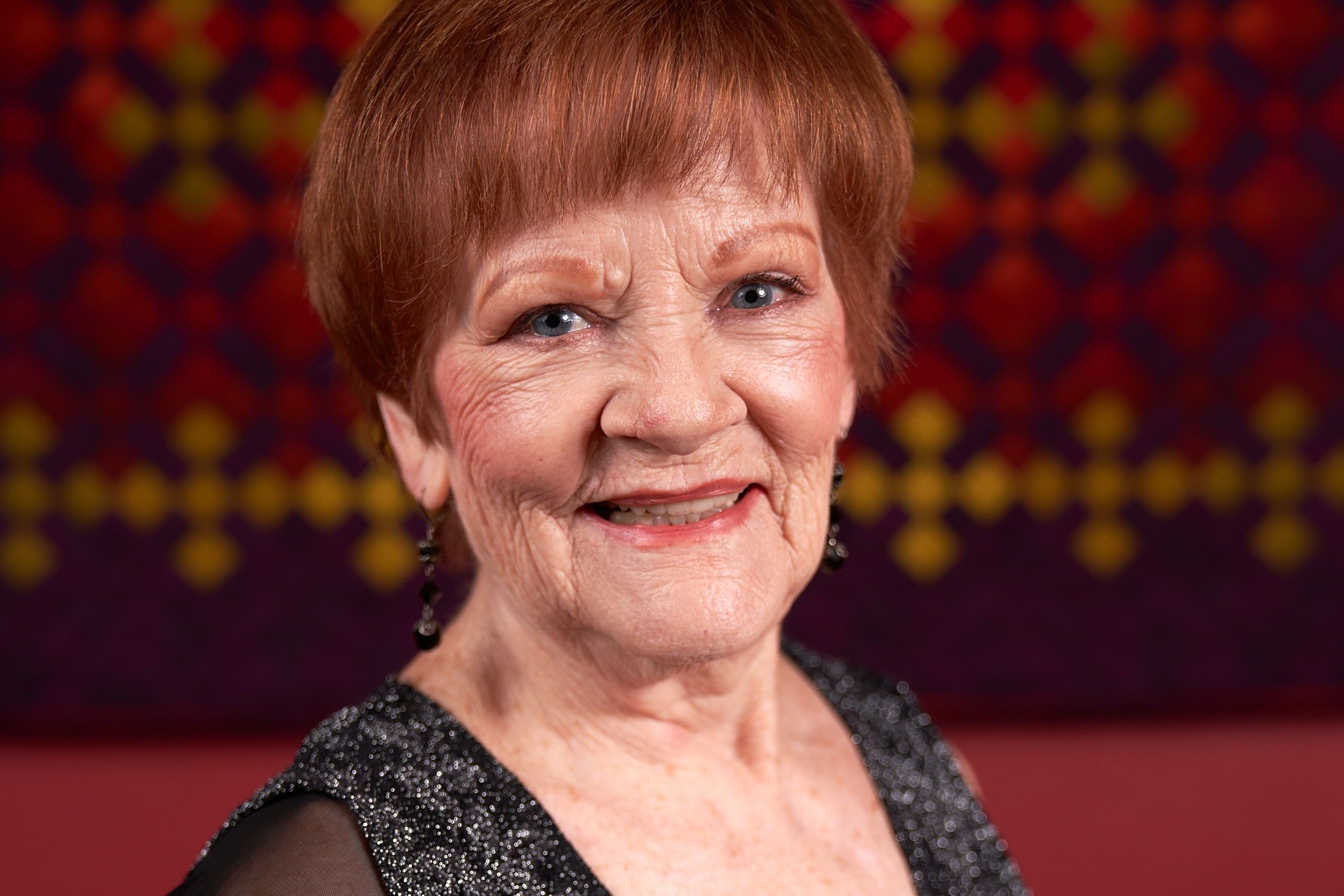
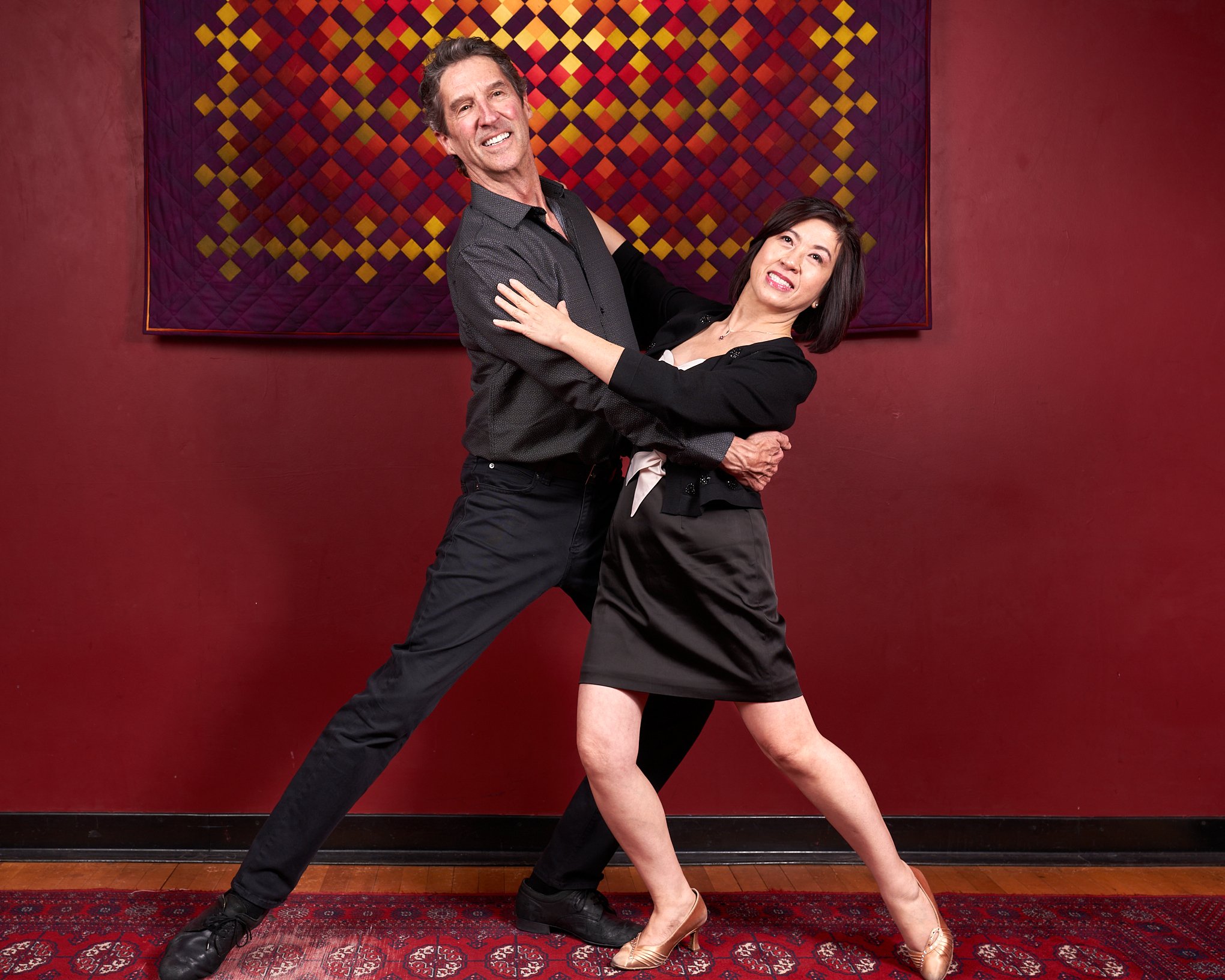
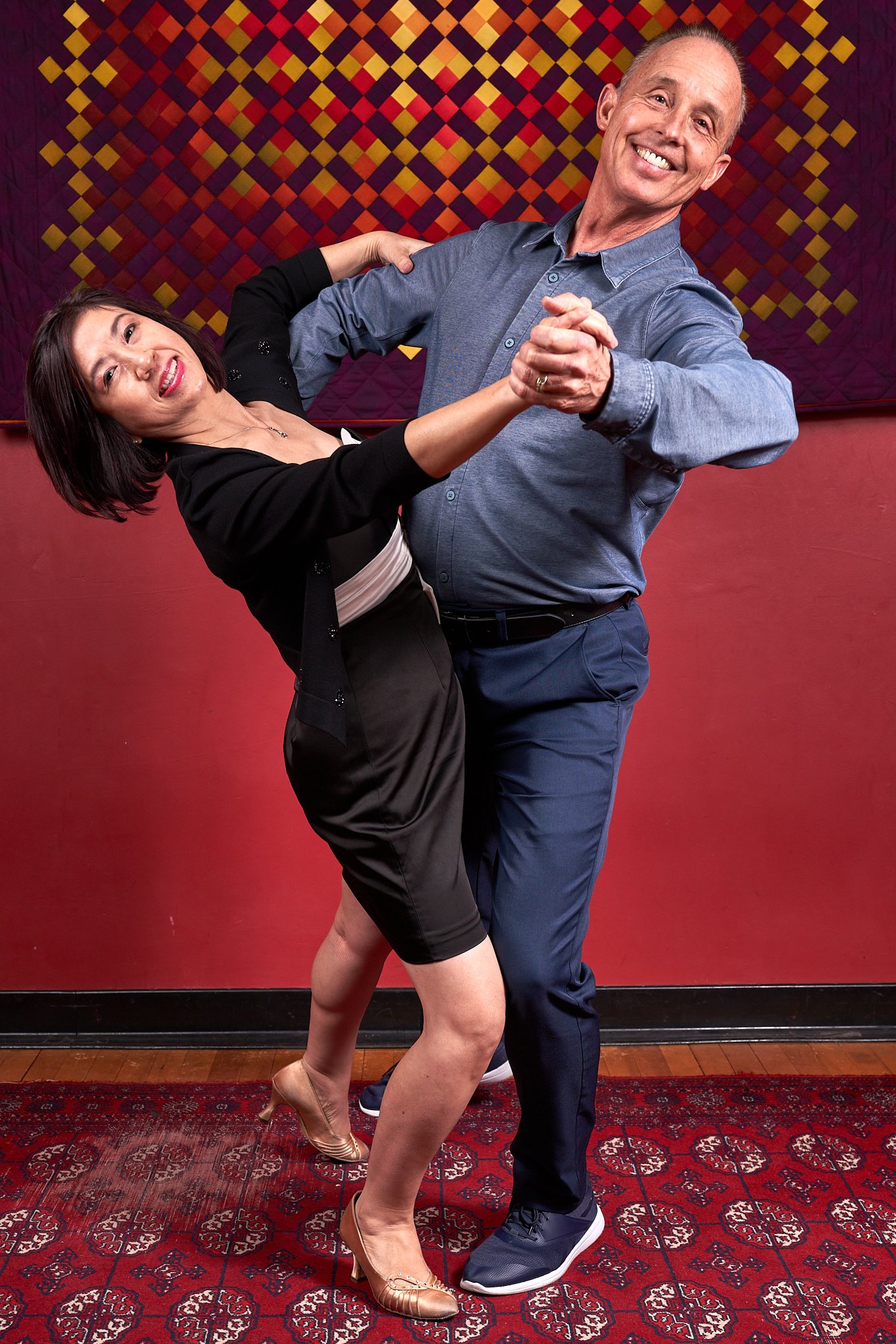
Rehabilitation takes many forms. There’s the physical, to be sure. But don’t underestimate the psychological value of gradually progressing back to a normal routine. For me, that means photography and dancing, in measured doses. I often overdo things. Fortunately, I have good friends watching out for me.
Faith
Facts don’t give a damn whether you believe them or not. But faith has its own power.
Shhh. Sit down and listen. Can you hear it? That’s your heartbeat. The gentle rasp, that’s your respiratory system sending oxygen, fueling chemical reactions, good and bad, throughout your body. Hear the rumbling? That’s the result in your bowels, pushing out waste. Your body is talking to you. Will you listen in time?
I did not. Like many, I relied on my youth and my physique to make things happen. My body allowed it but quietly accumulated a toll. Now it has come to collect.
I am writing this as a warning. Don’t do what I did. It isn’t worth it.
Among my many infirmities: Two rotator cuff tears (repaired), several broken bones in each wrist (healed, but manifesting arthritis), an ACL tear (repaired but since failed), several meniscus tears (repaired, but since worsened, leading to bone-on-bone abrasion in my right knee), a gooseneck tear in my left ring finger (repaired), a break of my right radius head (repaired), a retina separation in my right eye (rather miraculously repaired), a repeatedly broken heart (repaired, though heavily scarred, but that’s another story). As a result of these and other insults to the body, I have arthritis in my knees, wrists, and in several vertebrae of my cervical spine. I currently have serious pain radiating down my back and right arm; I cannot extend my right index finger; and I am losing muscle mass in my hand and forearm.
To stop the decline I am going to have surgery soon to remove a slipping disk and replace it with titanium, fusing C7 to the surrounding vertebrae. It’s a common procedure but carries serious risks.
I have faith that all will be fine, that I will emerge renewed, if not better. However, faith is something independent of fact. As a student of religion and philosophy, I know that it occurs a priori. Facts don’t give a damn whether you believe them or not. But faith has its own power. It draws us forward despite overwhelming odds. It helps us heal.
That is my next assignment: To heal, so that I can return to making portraits, to photographing movement, to exploring my interaction with light and shadow and the penumbra between them, to love and to find meaning in this short life.
If all goes well, I should be back in action in 6-8 weeks. Wishing you a joyous holiday season, however you celebrate it.
All photos in this blog were made by me at Camp South 2022, an annual clinic through the American Judo & Jujitsu Federation. © 2022, by Dan Browning/Danzante Photography LLC.
Cutthroat
Scheduling a break to do some bodily repairs from 12/13 through January (at least). Reserve your sessions now. — Dan Browning
Dancer Corynn Harvieux
I am back from a whirlwind assignment shooting the Fred Astaire Dance Studios National Dance Championships in Orlando. It was a grueling but rewarding five-day experience, with some spectacular dancing. I was shooting for another photographer so I don’t have access to the photos. However, here a some recent photos of Corynn Harvieux, an incredibly talented young dancer from the Twin Cities.
I am wrapping up some portraits before Dec. 14, when I will undergo spinal fusion surgery to relieve a pinched nerve in my neck. The surgeon will replace a disc at my 7th cervical vertebrae with a titanium disc and open the facets that are pinching a nerve to my right index finger — my shutter finger. I’m told it’s a fairly routine surgery, but of course, it has some rare but serious risks.
Alas, I won’t be able to carry my camera gear for some time. If you need something done soon, let’s get it done by Dec. 13. I hope to be functioning again by February so if you’re planning ahead, it’s not too early to schedule a session. In my downtime, I will hone my editing skills and maybe work on some less demanding shoots in my basement studio, just to stay sharp.
Wishing you all a peaceful and blessed holiday season. Give thanks and celebrate!
Impermanence
Do not linger to gather flowers to keep them, but walk on, for flowers will keep themselves blooming all your way. — Rabindranath Tagore
Liz Cummings Browning
I can usually fall asleep at will. I lie down and let my thoughts roll by until dreams take over, usually within a few deep breaths. Then I sleep until nature calls, or until my immobility causes my arms to go numb, with a tingling that borders on pain. I must then get up and face the day. It’s no use trying to get back to sleep. Last night was different. My mind raced. My heartbeat thumped in my head like a drum. Nothing would quiet it. I felt panicked without knowing why. Maybe it’s what my eldest sister said about the Buddha nature: impermanence.
Today would have been the 32nd anniversary of my marriage to the late Elizabeth Cummings. I don’t believe that had anything to do with my night panic. It’s just a coincidence worth noting. I lost Liz in 2014. I mention this because it taught me how fragile life is. Nothing lasts. The universe just moves on. Grasping is foolhardy; it simply pushes away that which we desire.
Yet that’s the illusion of what photographers do when we “release” the shutter. A well timed exposure will prompt our colleagues to say, “Nice capture!” We talk about freezing time, as if that were possible. It’s not. As the songwriter Steven Haworth Miller wrote, “Time keeps on slippin’ slippin’, slippin’ into the future.” What we photographers do is say look! Take notice! Savor this before it’s gone. Yet it’s already gone. The perpetual string of moments has moved along, making room for more. Wake up and see!
It is possible to step back and experience what’s in front of us, however briefly. When that happens we have a chance to record the interaction of self and other, to say thank you for being here with me. When we see the images later, we can summon the moment to carry with us going forward. It becomes a living document.
Cinema Ballroom instructors and staff interpret Downton Abbey.
I recently photographed a dance performance for Cinema Ballroom in St. Paul, Minnesota. Soon I will leave for Orlando to photograph the Fred Astaire National Dance Championships as part of a team working with Lahari Photography. I enjoy the frenetic pace and problem solving that goes with this kind of photography. But when I return Nov. 5, I plan to slow down and concentrate more on my studio work.
Roy Fahland, 93, enjoying some time with his eldest daughter, Susan Martin.
Winter is coming. Let’s see what happens when we slow down and share one another’s company.
Catching up
“Dance, when you're broken open. Dance, if you've torn the bandage off. Dance in the middle of the fighting. Dance in your blood. Dance when you're perfectly free.” ― Rumi
Daneen Barone Shelton with pro dancer Scott Koogle at the Heart of America Dancesport Championships in August 2022.
A personal update: My years-long quest to enter the national ballroom dance championships, formally known as the United States Dance Championships, has come to an end. I did well in my respective competition categories. I’d love to return and try again for the top spot, but I’m afraid the cost of competition is too high for this former journalist. I plan to compete just once a year going forward (OK, maybe twice in some years), focusing instead on social dancing across a variety of styles. This should keep me fresh for photographing dancers, which is my passion as well as my business after retiring from the Minneapolis Star Tribune.
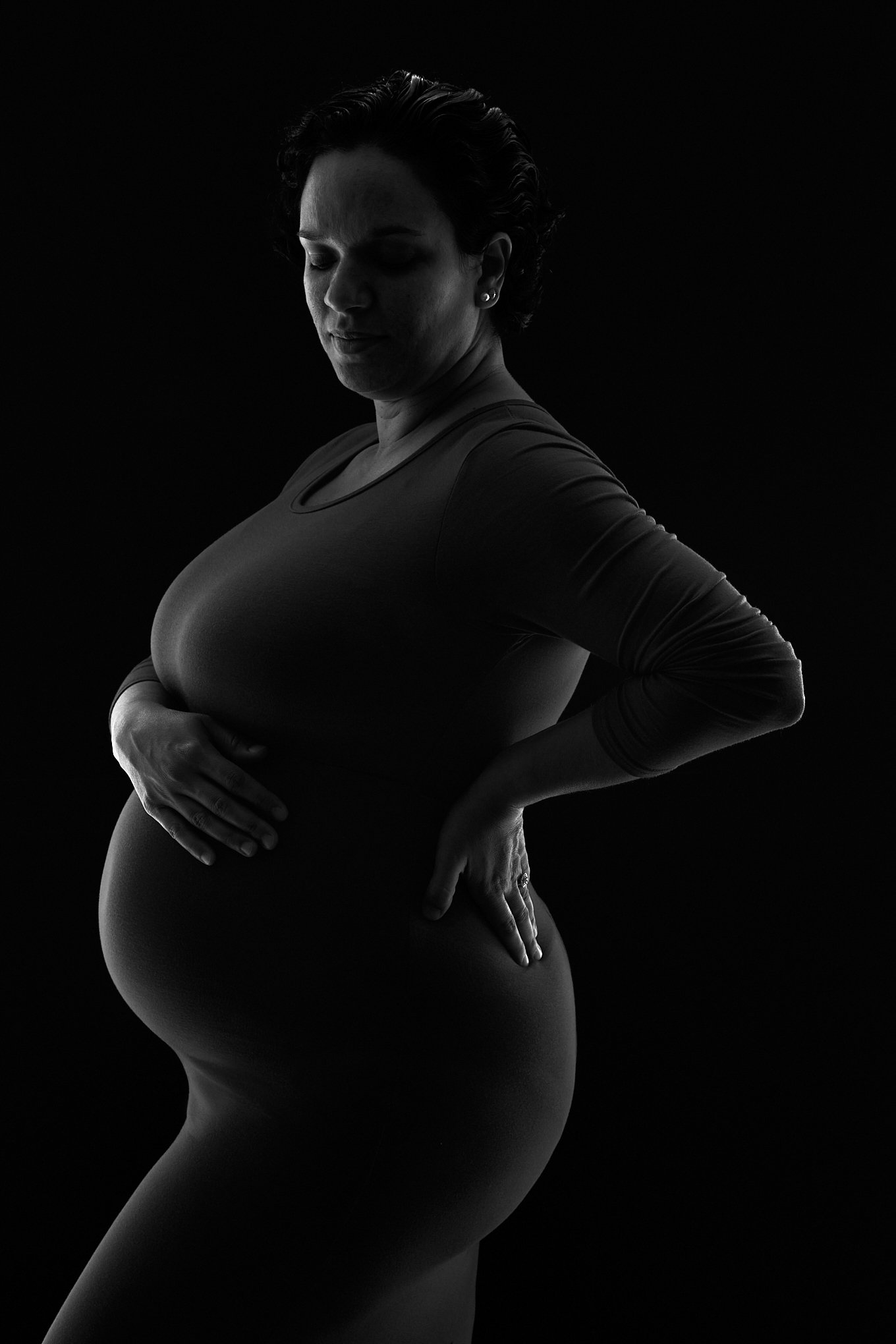

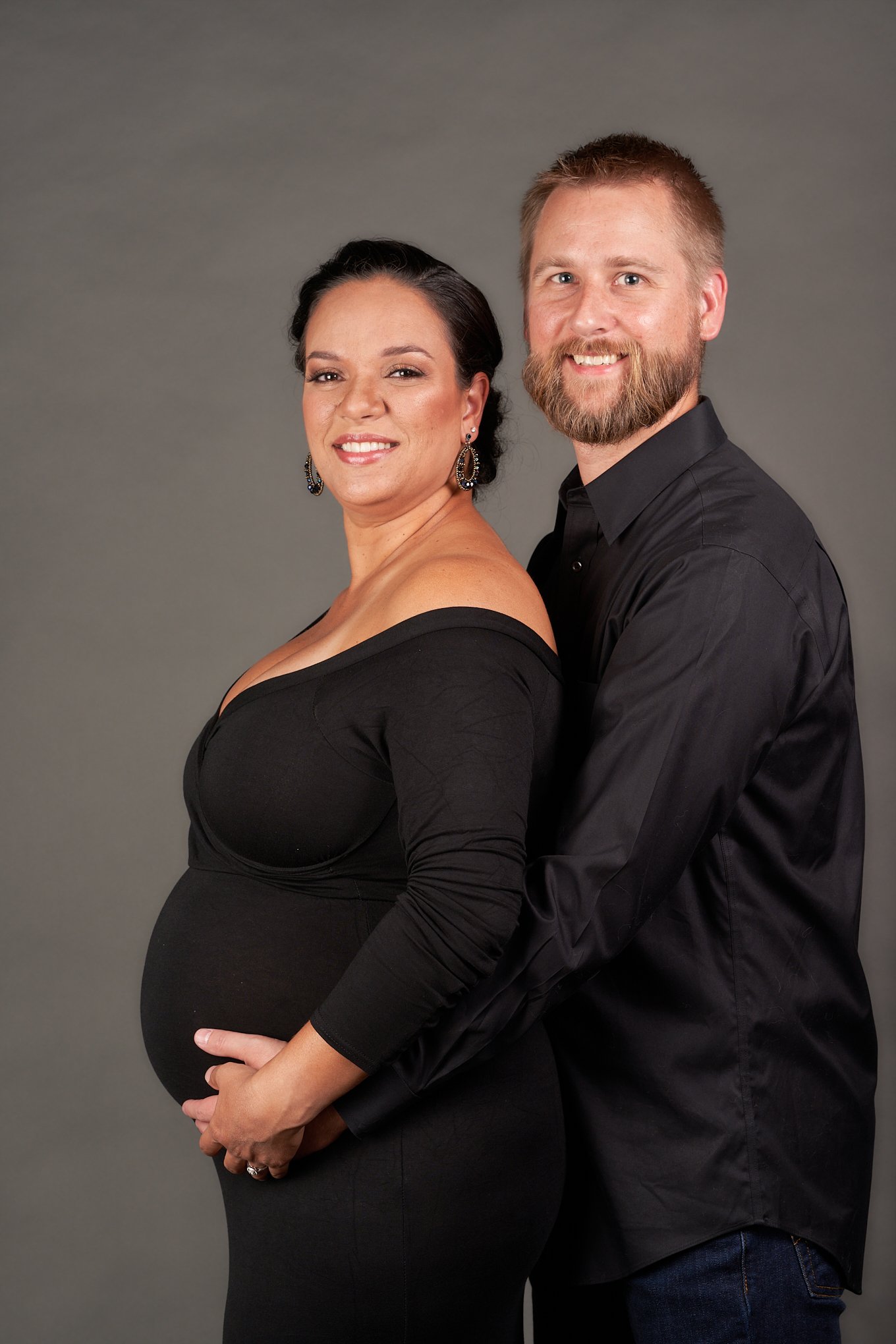

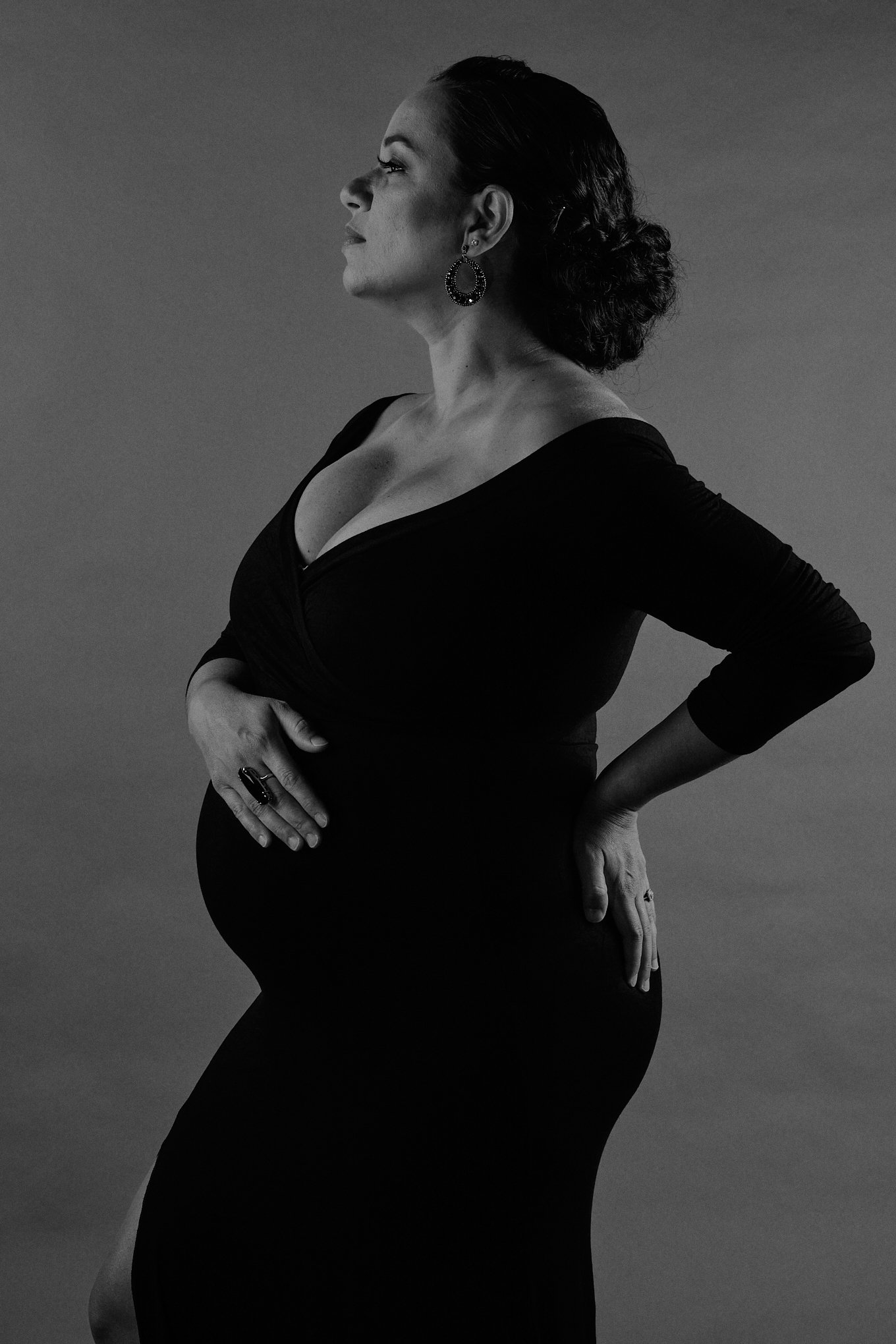
Lately, I have taken on a variety of photographic assignments. I photographed competitors at the Heart of America Dancesport Championships in Kansas City, Missouri. I did a maternity shoot of Laine Torres Bartley and her family.
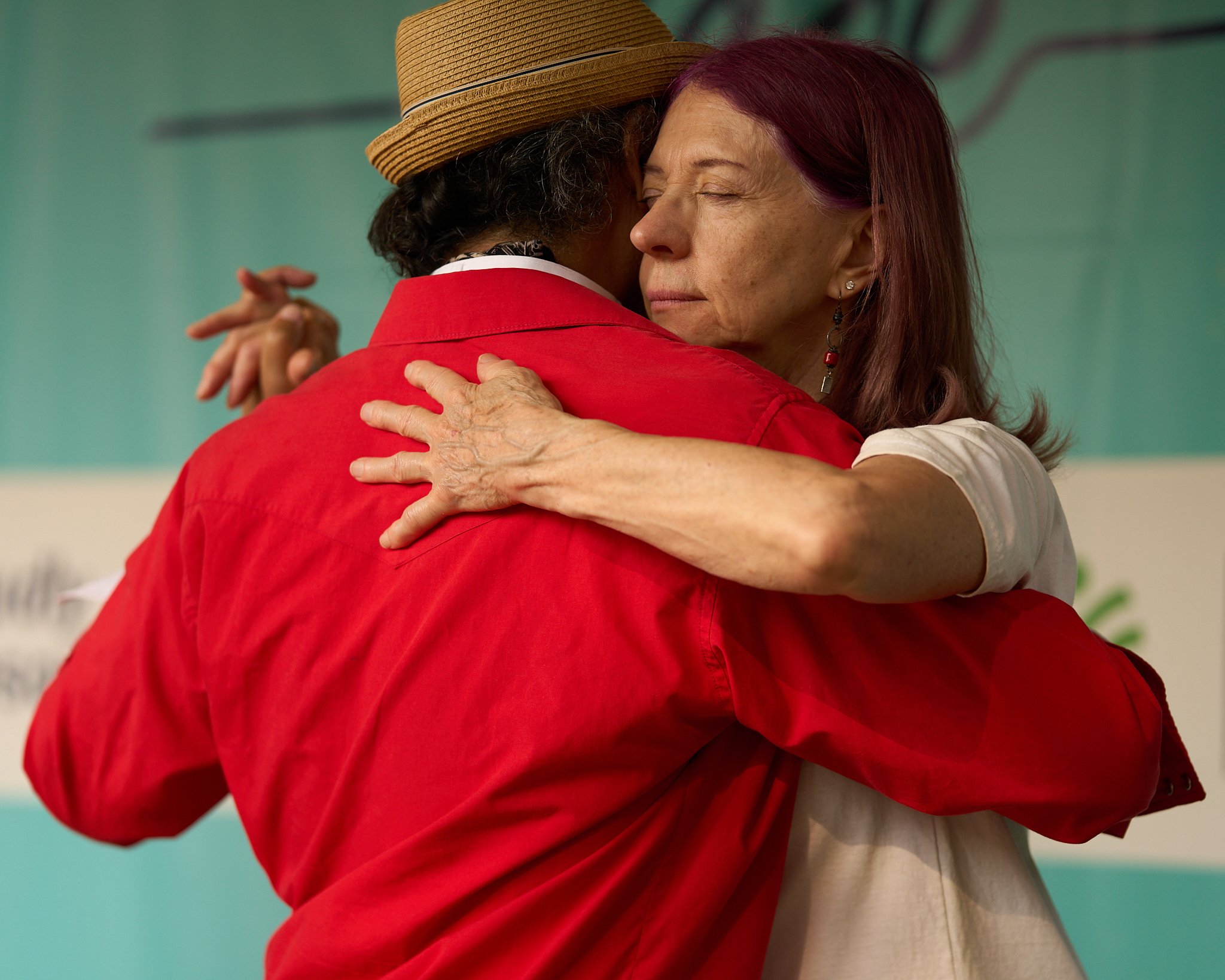
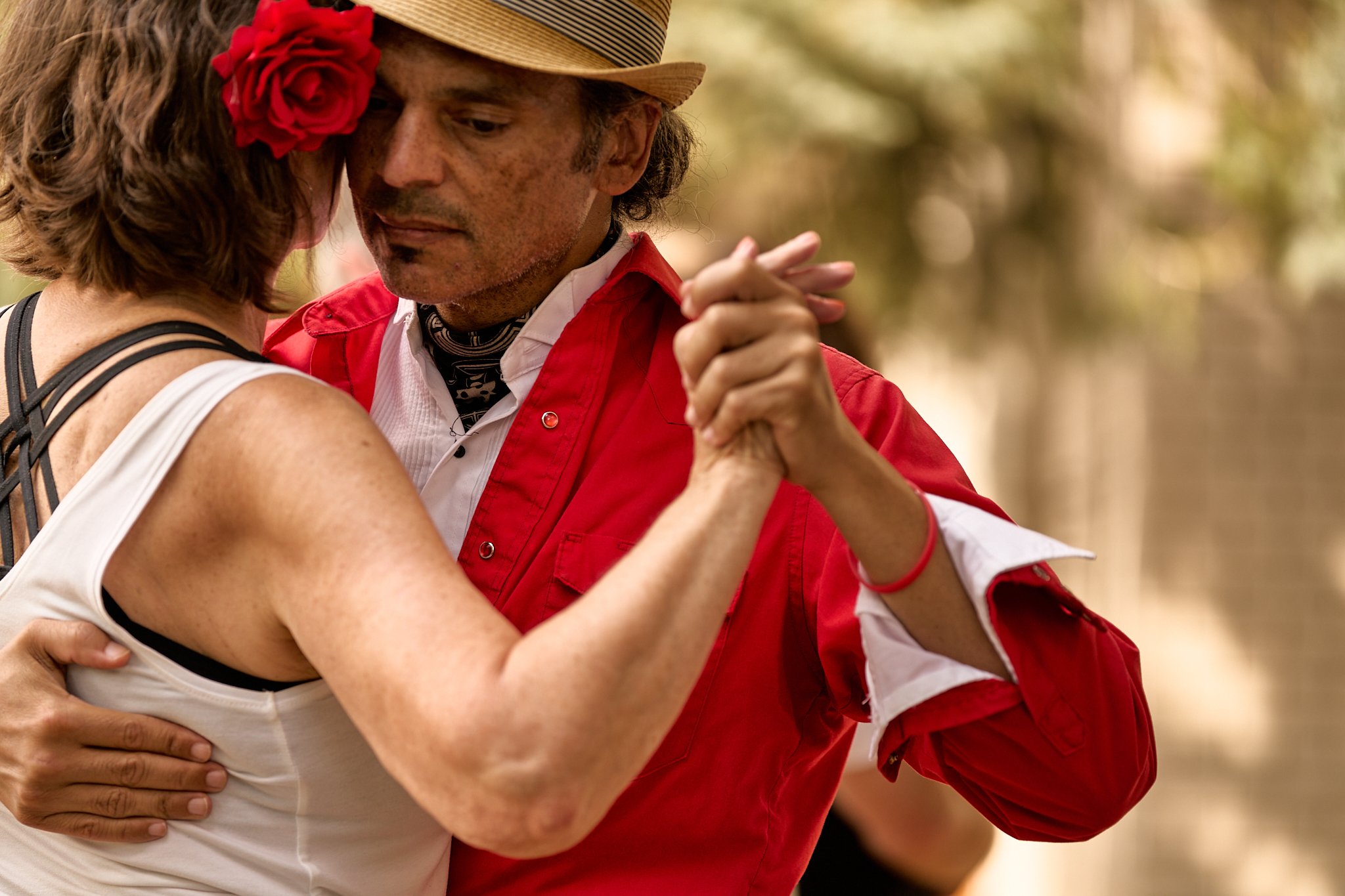


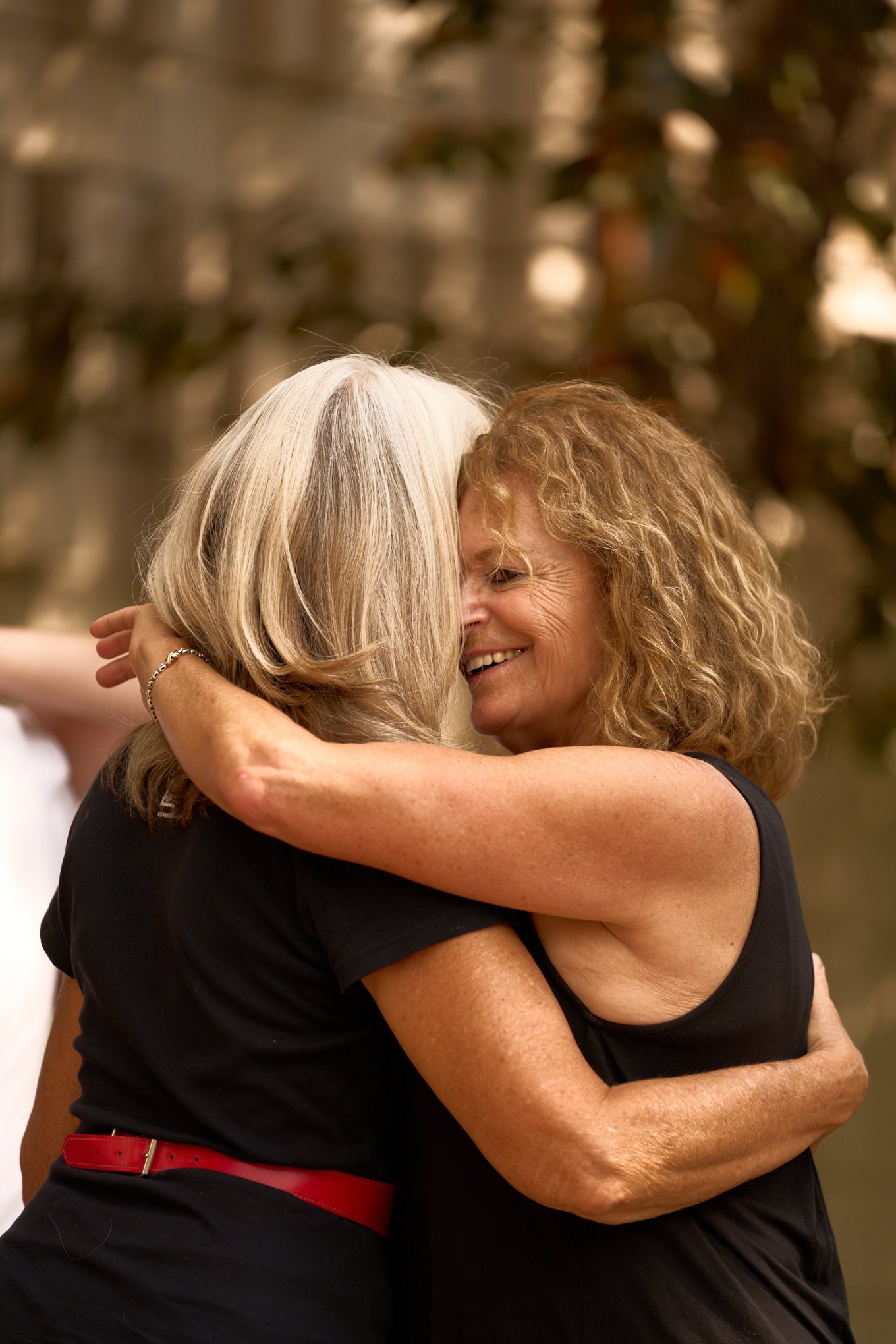
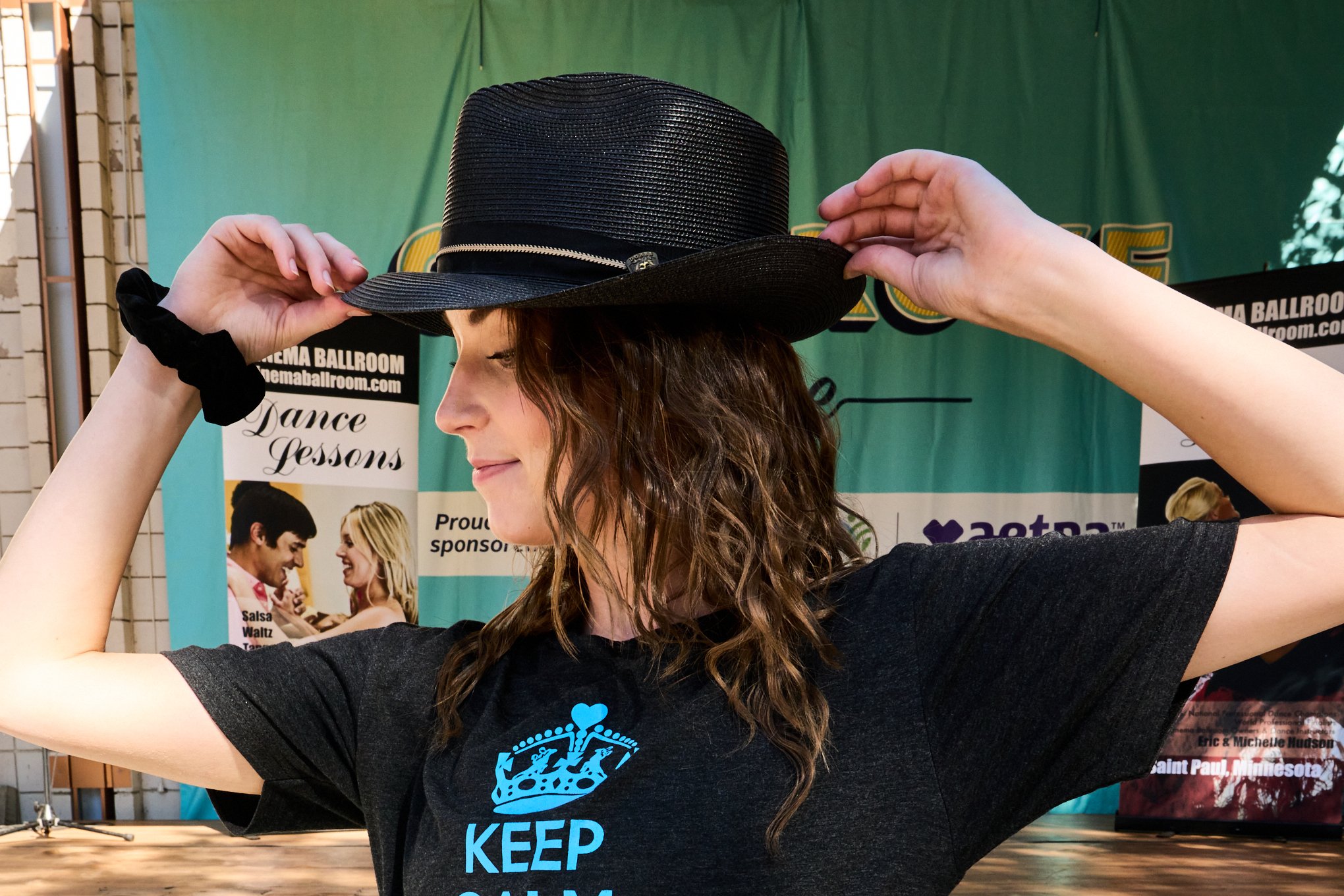

I photographed some dancers performing live at the Minnesota State Fair. And I made some headshots for an IT professional moving up in his organization. I also did some studio portraits of a dancer who’s trying to sell her ballroom gown.
Nate Hill
Whether you’re a dancer looking to update your profile or just want a family portrait for your holiday cards, I hope you’ll consider hiring me.
Kris Larson models a dress she’d like to sell.
A change is gonna come
It’s been a long, a long time comin’ but I know a change gon’ come. — Sam Cooke, “A Change is Gonna Come”
Dancer Corynn Harvieux, by Dan Browning/Danzante Photography LLC, © 2022
If you haven’t heard Sam Cooke sing A Change is Gonna Come for awhile you might want to listen to it. It’s sort of the soundtrack for this moment in my life, and I believe in the life of America as well.
Dancer Corynn Havieux, by Dan Browning/Danzante Photography LLC, © 2022
For several years now I’ve been rolling down a path as a ballroom dancer to go to the United States Dance Championships. I have pursued this goal despite its extraordinary cost in money, in relationships and its toll on my other activities, such as my photography, my martial arts practice and my desire to travel. It’s now within sight. It makes no difference how I perform there. The act of getting there is all that mattered to me. Jigoro Kano, the founder of judo, was once asked about the secret to judo. He responded, “Never miss practice.” And that is how I have approached this activity. The goal of reaching USDC is not important except to keep me practicing. Which is to say, dancing with focus. And that I have done.
The river of life flows on, however. After USDC I will keep dancing but now I will attempt to become a better social dancer as I explore my other interests more deeply. Perhaps you’re thinking, why is this part of a photography blog? Because the photographer is part of every photograph. When you hire me you become my partner in the creative process.
What do you expect when you hire a photographer? If you’re getting a headshot you should have a vision of how you want others to see you. If you hire someone who specializes in cosplay don’t be surprised if the outcome differs from someone who specializes in infant portraiture. Both photographers might be experts in their respective genres, and I’m sure they will do their best to deliver what you like. But you’re part of the process, too. What do you bring to it? What is your goal? Why would you want me to photograph you?
Grace Peterson and Charles Leonard, by Dan Browning/Danzante Photography LLC, © 2022
Daneen Barone Shelton with Scott Koogle, by Dan Browning/Danzante Photography LLC, © 2022
This summer I made some portraits of a young dancer as part of a personal project to explore a technique called shutter drag, where a long exposure is used to blur ambient light, then a pop of flash is used to properly expose the rest of the scene. You can see a couple of those images above. I also did a maternity and family portrait. And I have shot several ballroom dance competitions. In November, I expect to join a team of photographers shooting the Fred Astaire National Dance Championships in Orlando.
After that, I would like to do a series of portraits of active, older adults in their daily practice, regardless of what form it takes. Yoga? Dance? Rock climbing? Maybe you’re handicapped but keep sharp by birding or playing bridge. If you would like to be a part of this project please let me know why. What would you bring to it? I look forward to hearing from you!
Space is the place
“A portrait is not made in the camera but on either side of it.” – Edward Steichen
Apologies to the late Sun Ra for the headline, but he nailed it. I am officially now in my new photography studio in one of the old Grain Belt brewery buildings in Northeast Minneapolis. It’s a creative place, full of artists and something called the Up-Rock Community Church that fills the old brick building with music on Sunday mornings. There’s a coffee shop across the street, and a bar and grill as well. Just to the west is a running/bike trail that skirts the east bank of the Mississippi River. Shooting here is going to be fun. Will you join me?
I have not shot in the studio for too long. I’ve been working mostly on location, which I love doing. But I miss the more contemplative pace of the studio sessions. In the studio, we can plan the lighting more accurately to choose the effects we want. Working in the privacy of a studio eliminates distractions and allows us to get to know one another better. That’s my favorite part of photography. It’s a collaboration, after all. A successful photoshoot is like a good conversation.
When you come to my studio you should bring any outfits that you’d like to wear. Think about bringing meaningful props as well. Do you have a favorite hat? Do you have any hobbies dear to your heart? For instance, an archer might bring a bow. A bridge player, cards. A musician, an instrument or favorite sheet music. One subject brought a cat’s skull. A Peruvian folk dancer brought five outfits she wanted to preserve “before I’m too old.” It’s all good.
I can arrange to have a makeup artist meet us at the studio, you can bring your own artist or skilled assistant, or you can do your own makeup. Figure 30-45 minutes for a professional makeup artist to do their work. It’s an investment, which adds $100-$175 to the price of the studio portraiture experience, but it does make a difference. You won’t see models in Vogue doing their own makeup. On the other hand, doing your own makeup, if you’re good at it, is fine for family keepsakes and many less formal portraits. I can hire a hair stylist as well, or your can have your own stylist prep you for the shoot, or you can do your own hair. One thing to keep in mind is taming those flyaway hairs. Men should shave or trim any facial hair before the shoot. Minor blemishes can be removed in retouching. If you’re sensitive about wrinkles, please let me know as I can reduce them in the way I light your face. I can also smooth the skin and reduce any red patches or blotches during retouching, but I prefer a light touch with these techniques. I don’t like the “plastic” look popularized in some magazines or glamour shoots. Age is something to be respected, not shunned. Finally, don’t forget your nails. Trim them and if you use polish, make sure they’re freshly painted. But if you’re an iron worker or a laborer or some who makes a living with your hands, feel free to leave them alone, as they are part of your character.
In celebration of my new space, I’m offering a promotion through July, reducing my creative fee from $400 to $280 for in-studio portraits. Let’s book something soon, as I share this space with a handful of other photographers. I look forward to meeting you and getting to know you better.
Stepping into space
Taking the plunge into a professional photo studio.
Nata Rossini and Elizabeth Hernly pose for photographers attending the Pas de Deux conference in Austin, Texas.
I am happy to announce that effective July 1 I will be joining five other photographers in a shared studio inside the old Grain Belt brewery complex in Minneapolis. It’s a reasonably large space with arched windows overlooking the east bank of the Mississippi River. The 14-foot ceilings provide ample room to place my lights above the most accomplished dancers as they do their leaps. The studio doesn’t have finished dressing rooms or a kitchen or an office. But that’s just fine. There’s a nearby restroom for changing, and folding screens that can be used for a temporary changing room. This photo studio is a working space, and I am anxious to get going.
Do you need new headshots for a personal rebrand? Have you always wanted a character portrait? Do you want to freshen those family photos? Are you an actor, athlete, model or dancer seeking more creative images for your portfolio? Now is the time to book a session.
I am offering inaugural photo sessions — in the studio only — at a 30% discount off my $400 creative services fee through the month of July. That’s just $280! It covers the photography, editing and retouching on three photos, plus delivery of digital images. Prints are extra.
I generally work in two-hour blocks but I’m open to sessions of any length. The only limitation is that we must work around the other photographers’ schedules. Call or message me to book a time. I am also available to work on location, though the discount on my fee does not apply.
Do you have particular ideas? I’m happy to discuss whatever you have in mind.
Studio or competition?
Portaits and events… This is the yin and yang of photography.
I am just coming down from shooting a college graduation portrait and a ballroom dance competition known as Go Wild Minneapolis.
The graduation photos went well until a small gust of wind turned my lighting umbrella into a sail, which caused the light stand to topple to the ground. Fortunately, it landed on the umbrella, which was destroyed, but that saved my expensive Profoto strobe. Still, it meant that I’d be shooting for free. (The cost of a new Profoto umbrella is about the same as the amount I was charging for the portrait.)
Two days later, I was working as the official photographer at Go Wild. It was a 10-hour marathon of dancing and problem solving that led to eight very long days of editing. The setting was less than ideal. The only lighting in the hotel ballroom came from overhead chandeliers burning in the incandescent (yellow) range. Fortunately, I brought my Profoto B10s and a B10+. They are battery-powered lights, though I ran plugs to them to help accelerate the recharge rate. I set them on opposite corners of the dance floor and bounced the bare heads off the ceiling in an effort to flood the floor and cast the dancers’ shadows downward.
Setting the light power proved difficult. Depending on where the dancers were on the floor, they could be perfectly exposed, overexposed or grossly underexposed. Most competitions have powerful lights on stanchions illuminating the floor, so the photographers’ strobes would just add a touch of fill light and eliminate any motion blur. But this one-day competition is smaller so I suspect it wasn’t worth the cost of renting those floor lights. No matter, professional photographers adjust as necessary. I experimented with TTL (through the lens) metering on my strobes, a kind of automatic setting, but ultimately settled on manual control of the lights.
I offered two services at the competition. Hire me to shoot your round (three to five dances of a given style) and I will focus only on you. This yields more and better photos. But the cost is too much for some dancers. So I also agreed to shoot “freelance” whenever I wasn’t working for a client. That was most of the time. The dancers can then go through the shots and pick just the ones they want. The cost per photo is much greater than what you’d pay by hiring me for exclusive coverage, but many people only want a few shots, so this option works for them.
I shot more than 4,700 photos. Because of the nature of the lighting, it took an extraordinary amount of time to go through and edit the photos. They had to be cropped, color balanced, and in many cases, the exposures had to be corrected. That’s because the Profoto lights, as good as they are, could not keep up with my shooting pace. One shot would be properly exposed and the next one would be slightly underexposed because the light hadn’t been fully recharged between shots. (The power recycling rate on the B10 flashes ranges from 0.05-2.5 seconds.) I shoot in “raw” mode, which retains all of the possible data that was captured, so I knew I could make adjustments in post processing. Ultimately, I came away with just over 2,400 usable images.
I took the advice of a former colleague and uploaded the ad-hoc images to a website called ShootProof.com. It allows me to set up galleries for clients to browse and order print or digital images at their leisure. It protects the images by adding a “watermark” with my studio name, which is removed upon payment. It collects client contact information and adds the sales tax and takes care of the payment. Apparently, it will also distribute invoices, contracts and model releases, though I have not yet used those components. So far, I am pleased by this website. I look forward to hearing from clients about their experiences with it.
I’ve been thinking a lot about my photography in the wake of these assignments. I love portraits, where I create the effects I want through light and shadow, and through personal interactions with the subject(s). I also love shooting events and photojournalistic assignments, which require anticipation, quick decisions and a bit of luck. This is the yin and yang of photography.
I’ve been a bit heavy on the yang lately and feel the need to add more portraiture work. If you’re considering a new headshot, have a family reunion coming up, or just want to explore some dramatic expression in a studio or location setting, reach out. I still have some openings in July and August.
Up close
My style is close, personal, and dramatic.
If you read much about photography, or watch many YouTube videos, you’ll find considerable advice and commentaries about developing or discovering your personal style. No one wants to be a clone, even an excellent one. So we photographers thrash about seeking a definition of how we are different. The best advice is to shoot more. Eventually, your style will be revealed to you. There are no shortcuts. You cannot simply decide what your style is and apply it.
I am only now beginning to understand my style of photography. I like images that convey emotion, that speak to a moment in time. Most often that means shooting close and tight, especially when shooting ballroom dancers. But sometimes the moment needs context. Then a wider shot will be appropriate. But not at the expense of distracting from the subjects of the photograph. Everything in the frame must support the emotional content of the subjects. For this reason, I crop images. Sometimes aggressively. Ideally, I would do this in camera when the photo is captured. That works well in a studio, but is less reliable in an active setting like a dance competition, a hockey game or a riot.
The creation of an image begins when I take a shooting position with a particular camera and a particular lens, taking into account the lighting and the background. It extends through the press of the shutter release and into the editing process, when I adjust the lights and darks to emphasize a point and direct the eye, or fade or blur part of the frame that might distract the viewer. This is what you pay for when you hire me. I do not release unedited images; they are by definition unfinished.
My style at present is close, personal, and dramatic. Capturing your perfect execution of a dance figure is important but it’s less memorable than the expression on your face when you do it. I want the viewer to see the connection between you and your partner, whether you’re executing a flawless maneuver or failing utterly at doing so. Viewers respond to honesty. No amount of artificial smoke or colored lights will fool them.
I recently returned from competing in the Wisconsin State Dancesport Championships (WSDC) in Milwaukee and the Emerald Ball Dancesport Championships in Los Angeles. I photographed the professionals competing at WSDC. Below is a sample of the images I captured. When I edited these photographs I could hear songs in my head. For instance, when I saw the photos of Gene Bersten dancing with his wife, Elena Bersten, I kept hearing the Percy Sledge classic, “When a Man Loves a Woman.” The song has been covered countless times, but versions by Otis Redding and Bette Midler stand out for me. When I view the images of Meghan and Igor Afonkin I pondered what music would evoke the feeling I had when watching them dance. Vivaldi’s Four Seasons came to mind, specifically the third movement of Summer, which evokes the production of a cornucopia that sustains life in the fall. We can appreciate it with winter coming. Hence, Thanksgiving.
Be grateful, folks.
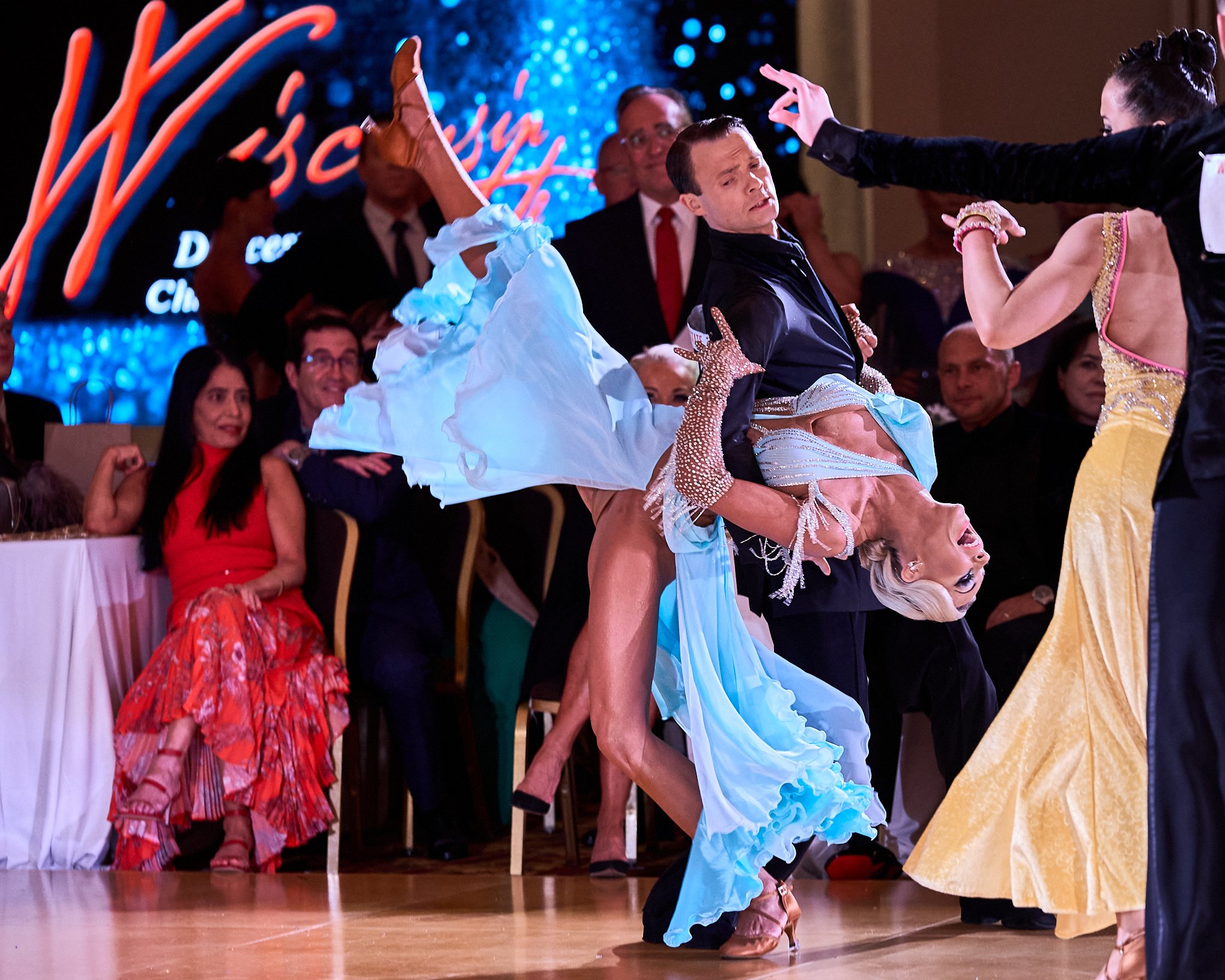
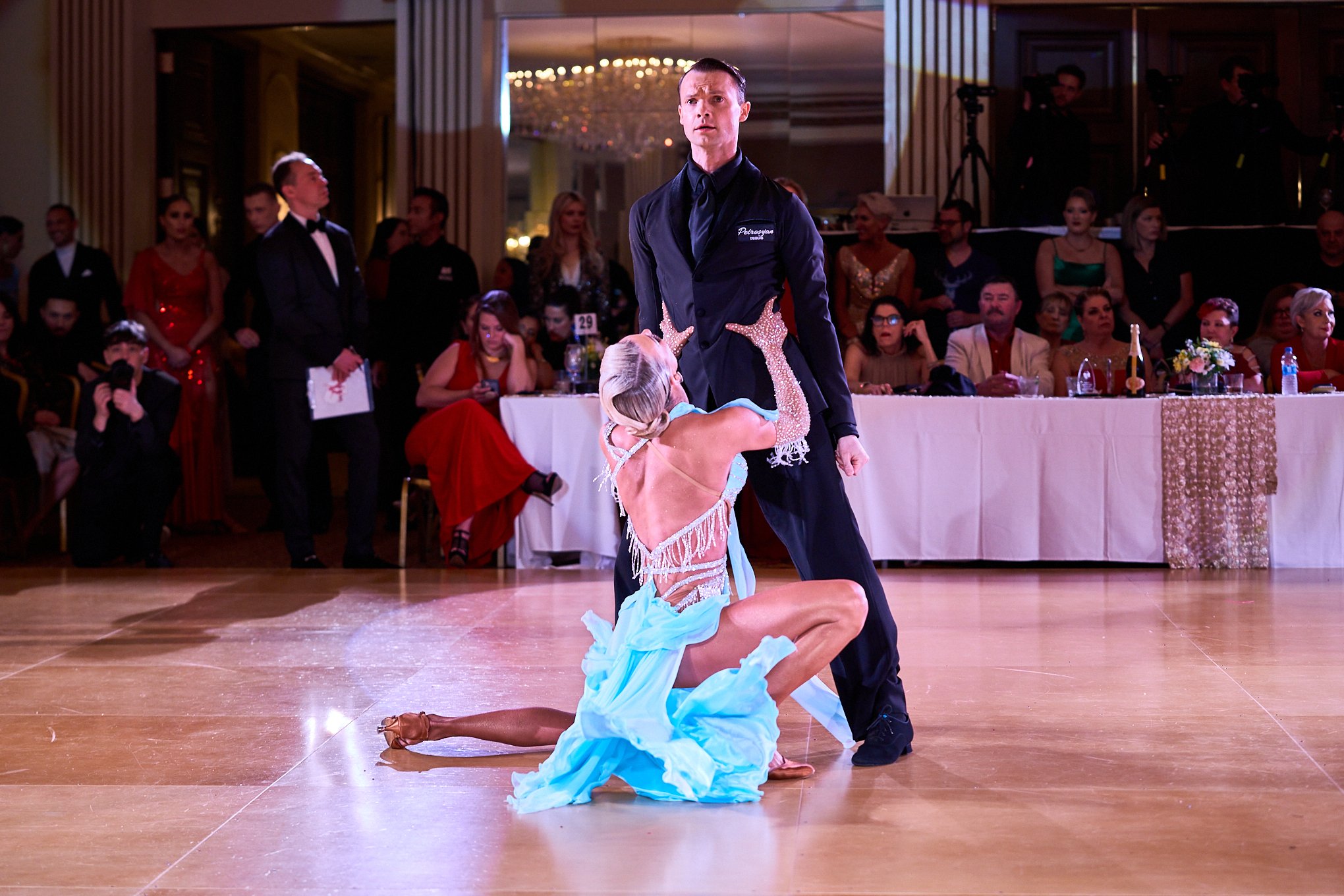
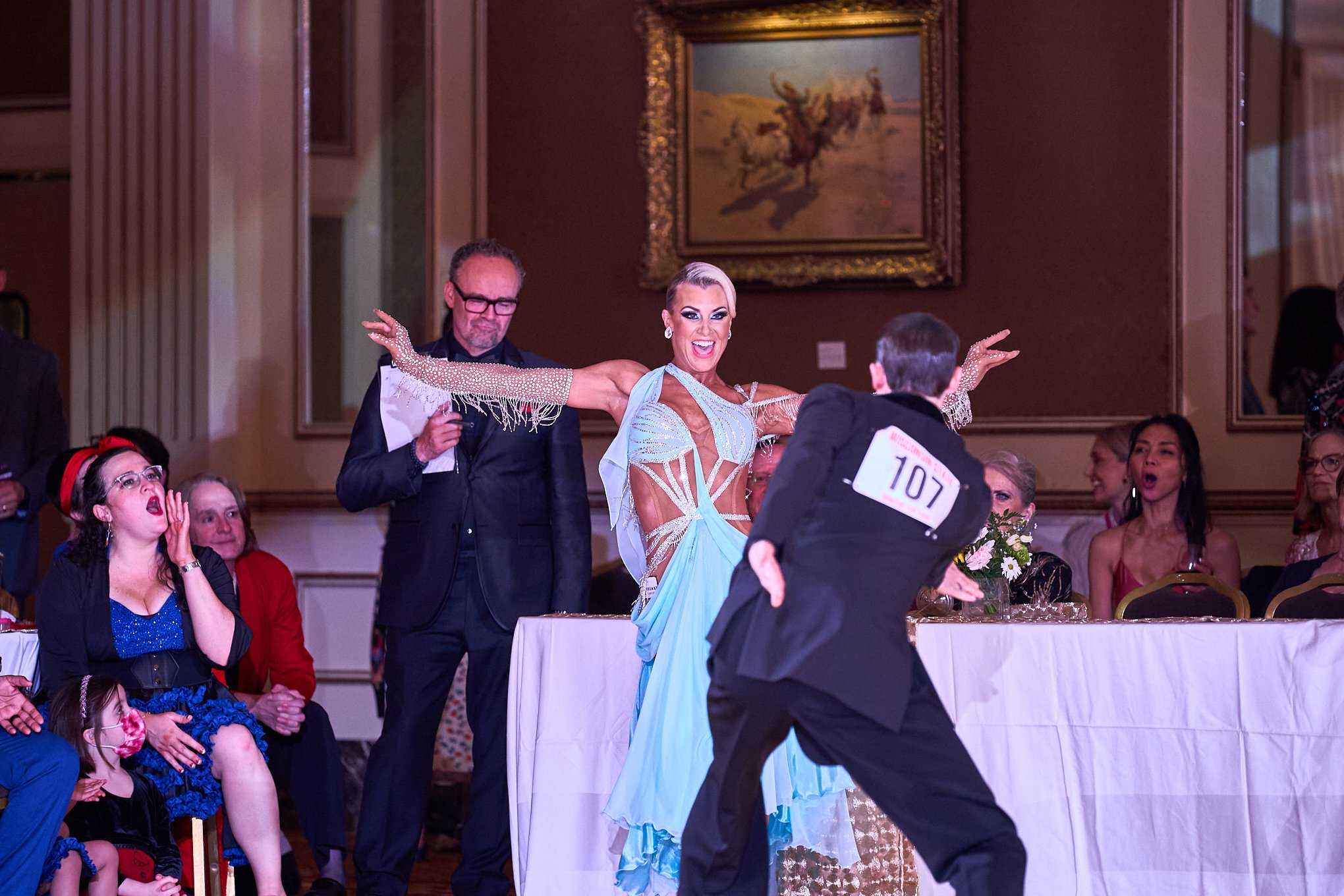
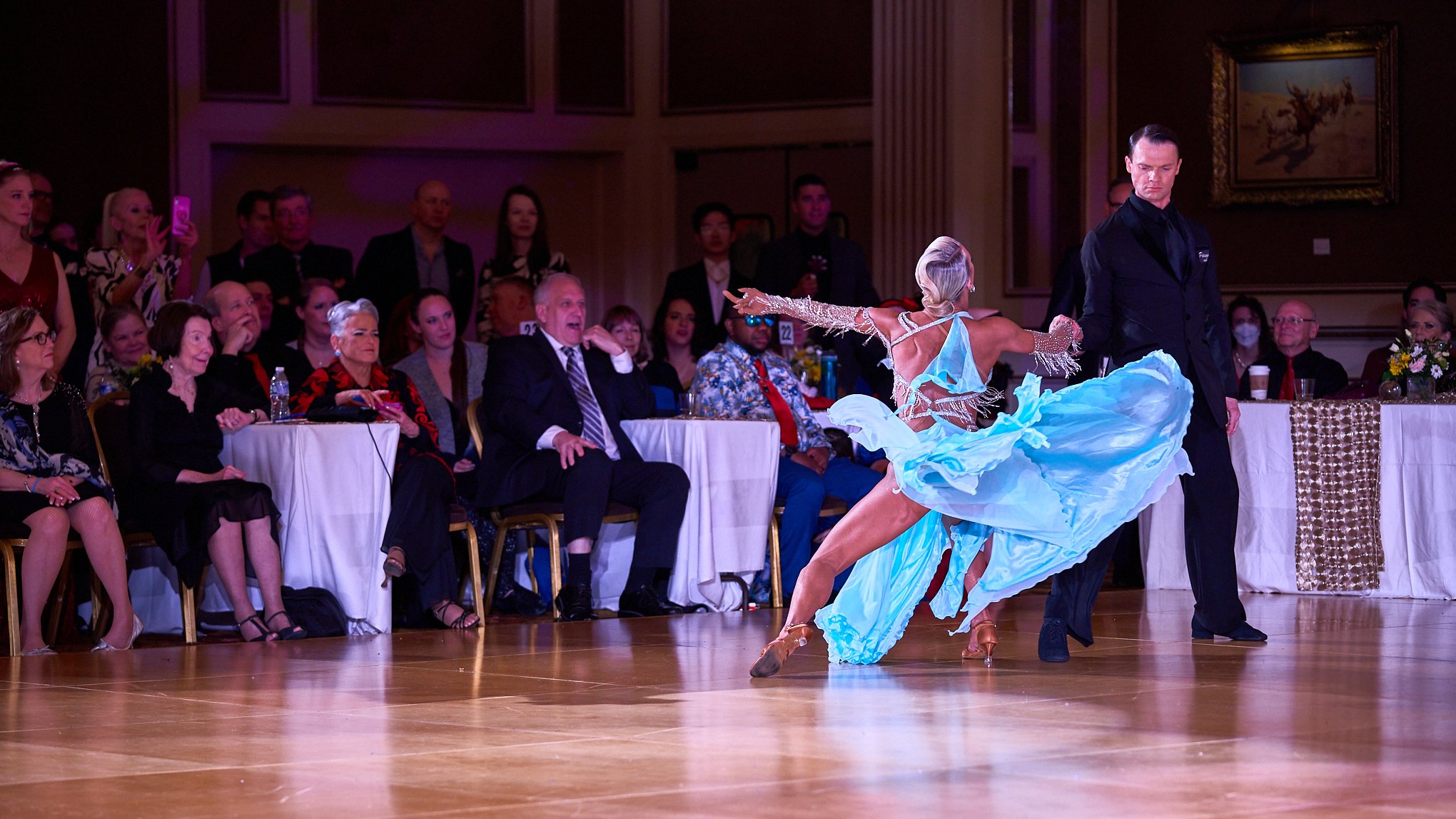
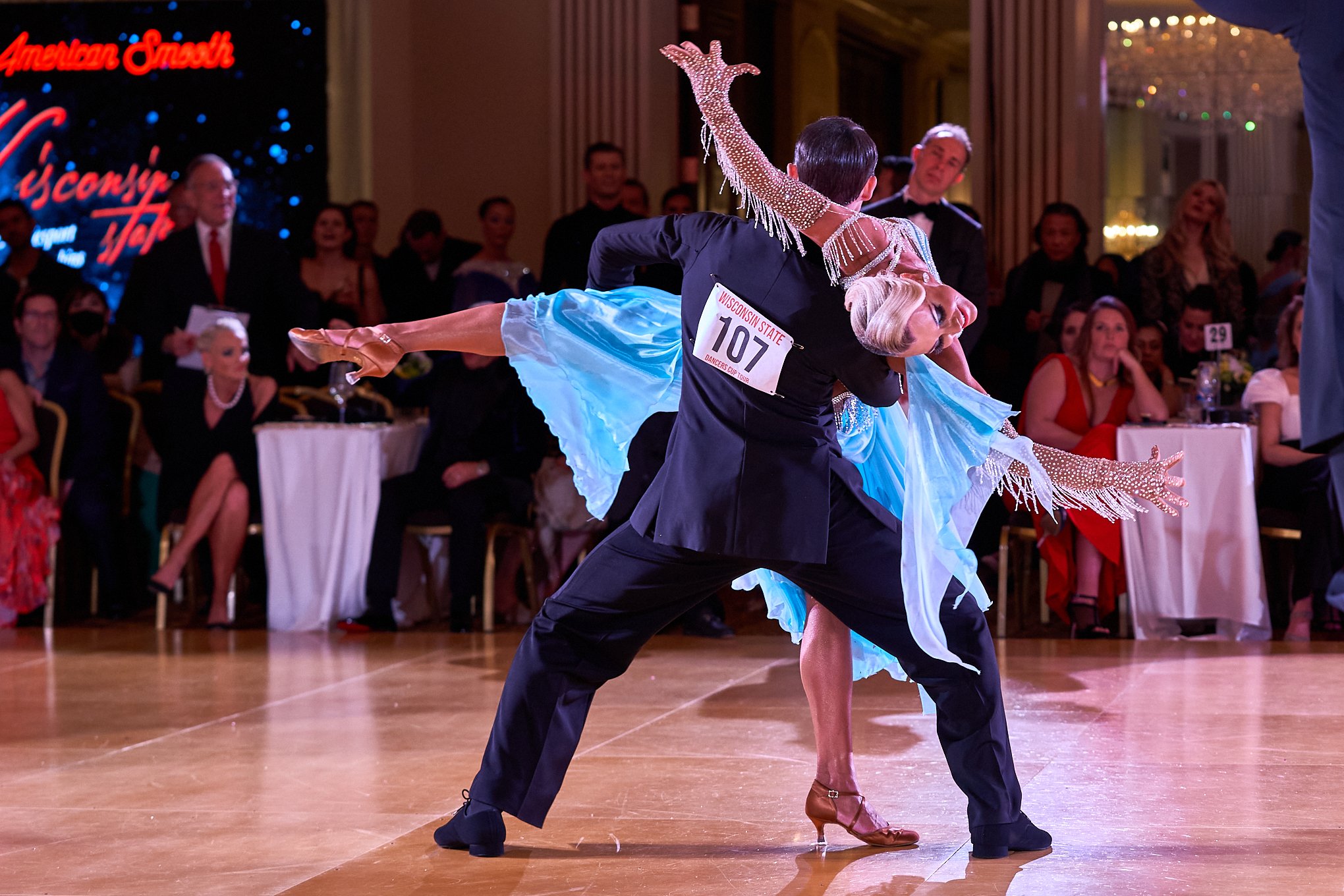



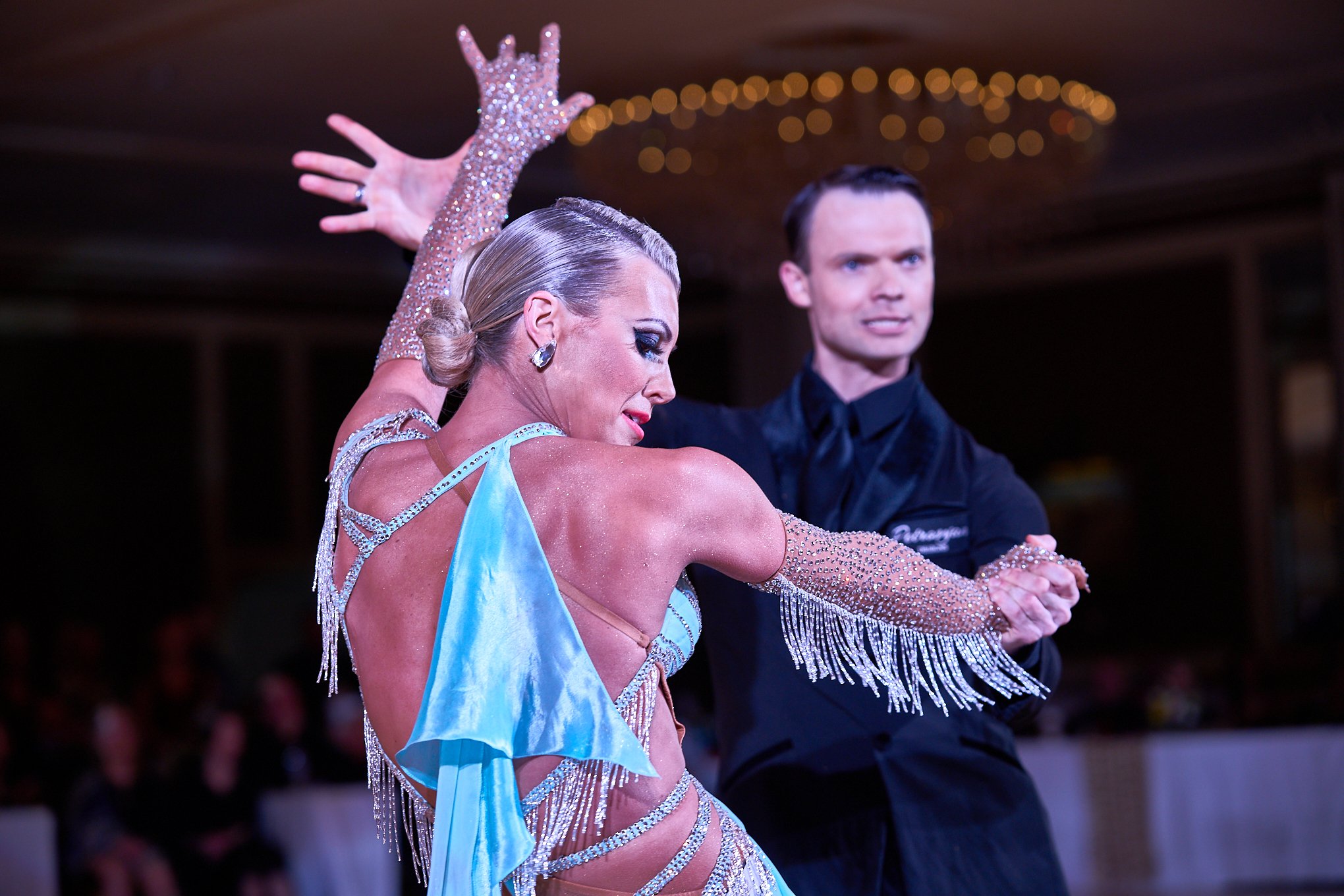
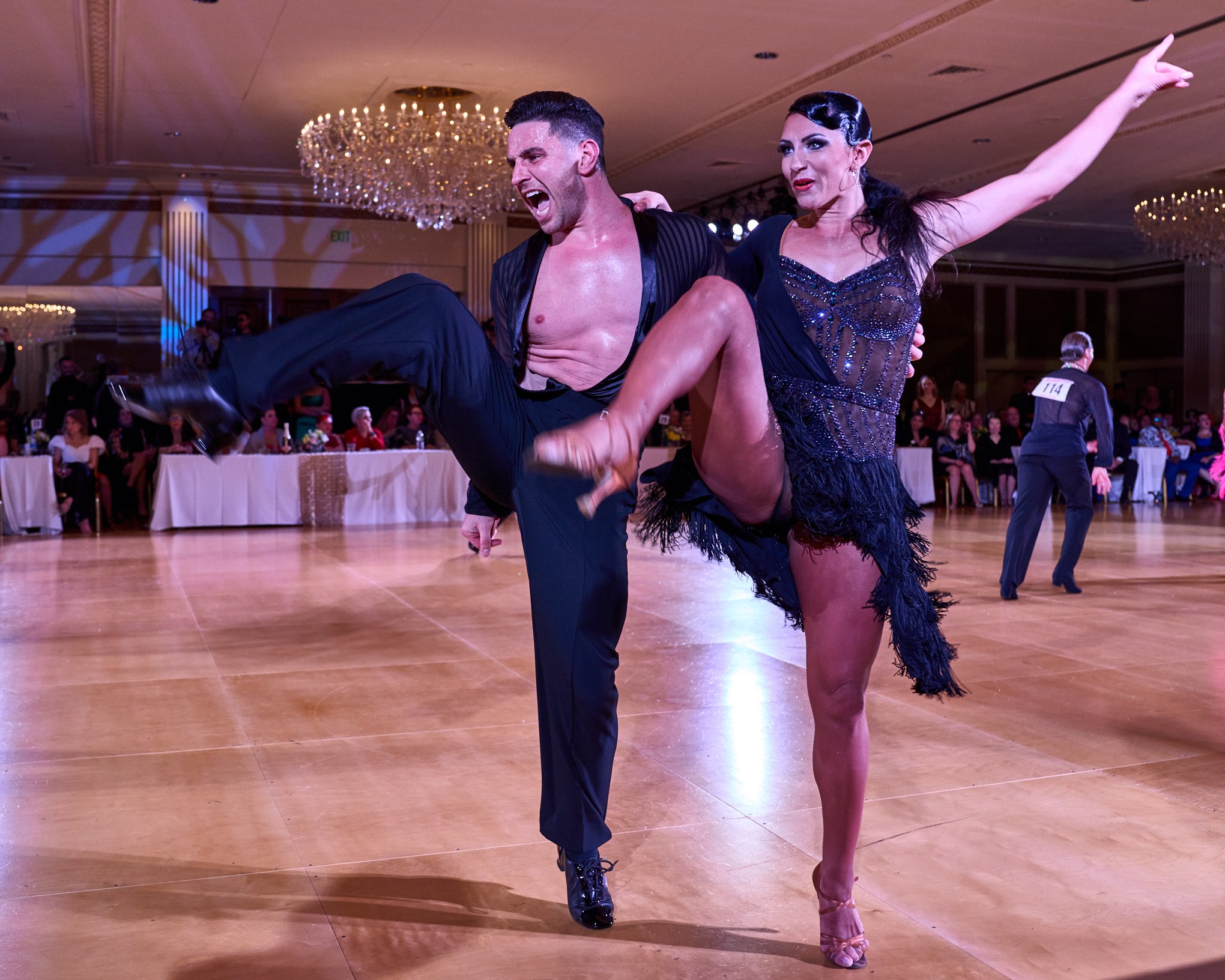

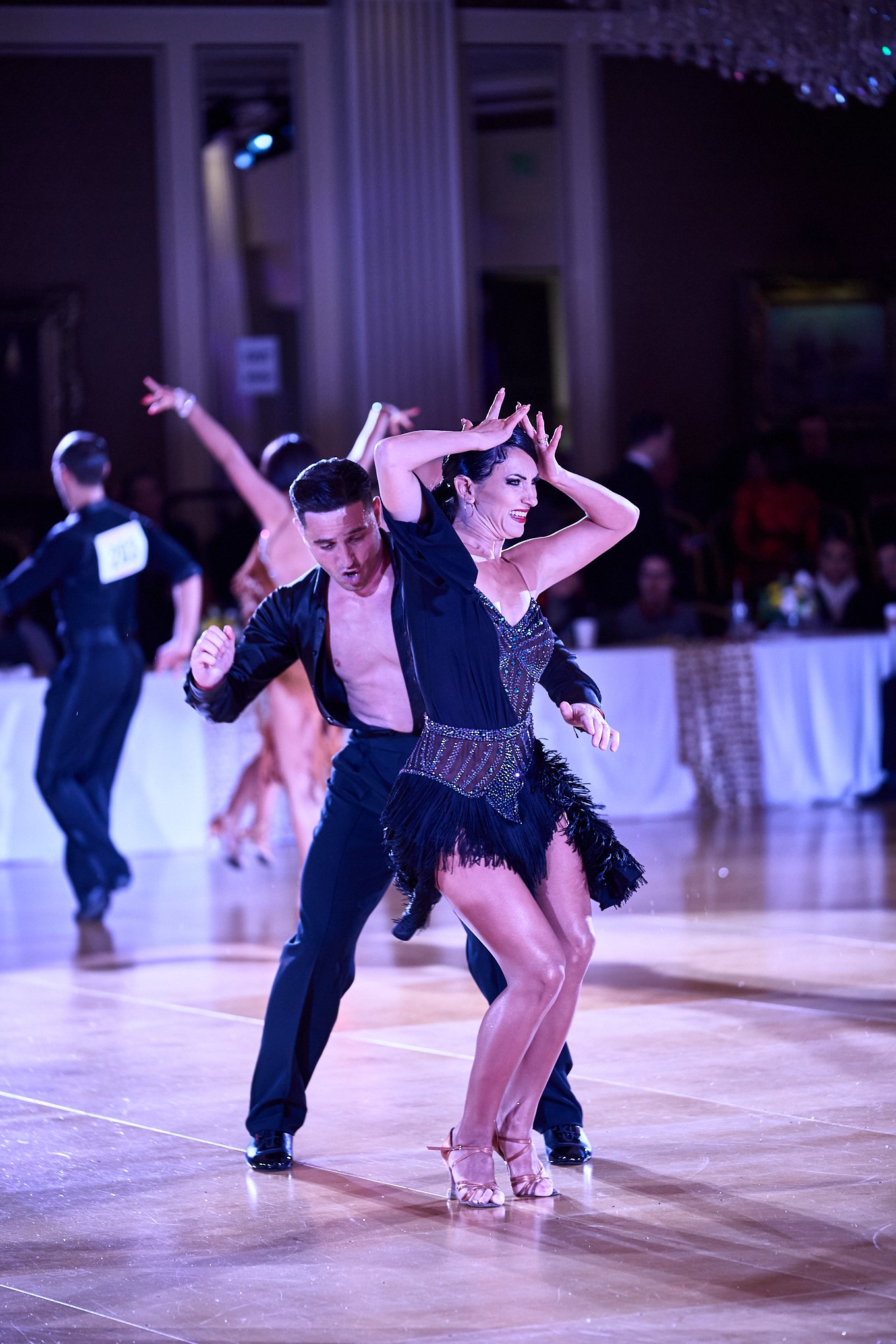
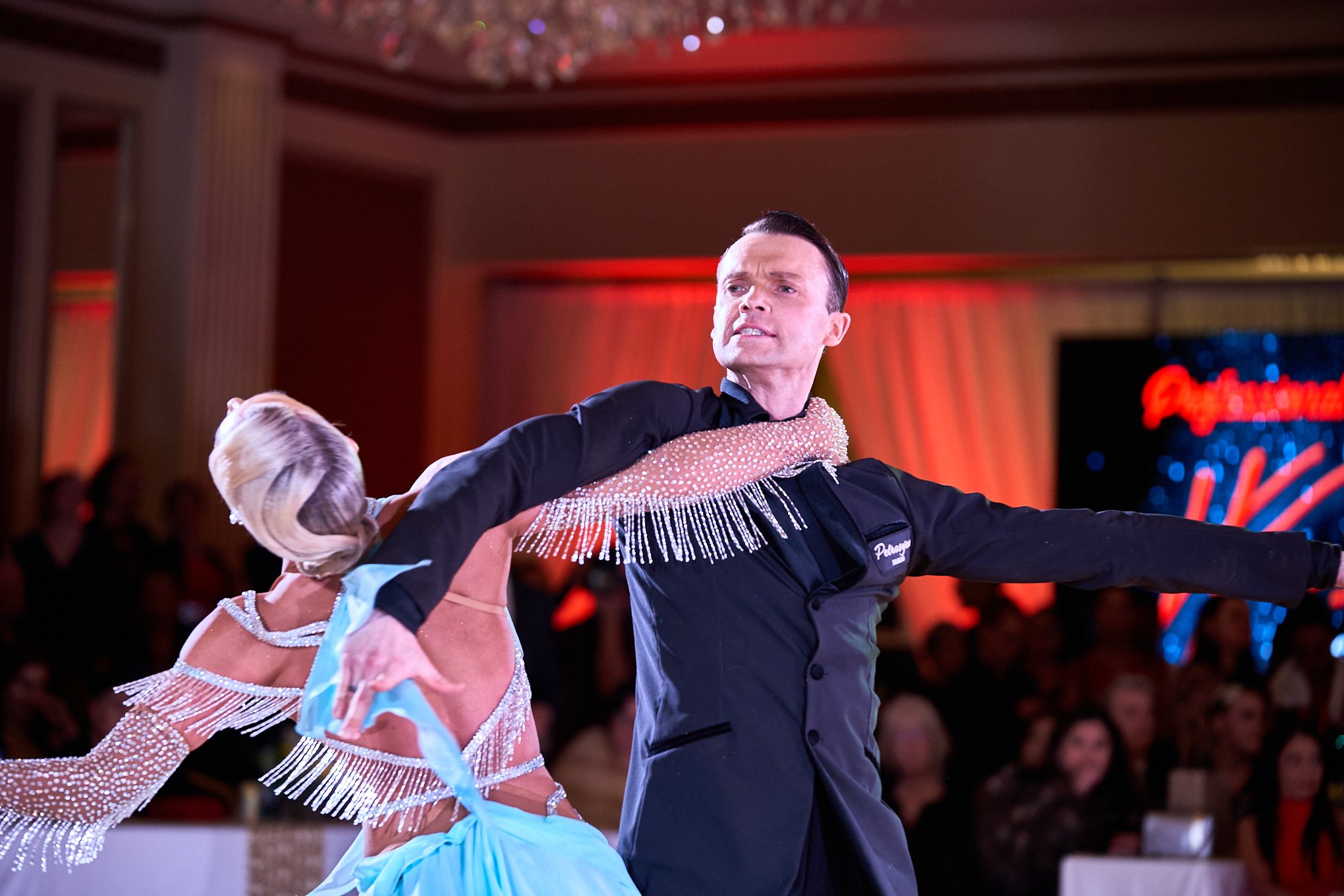
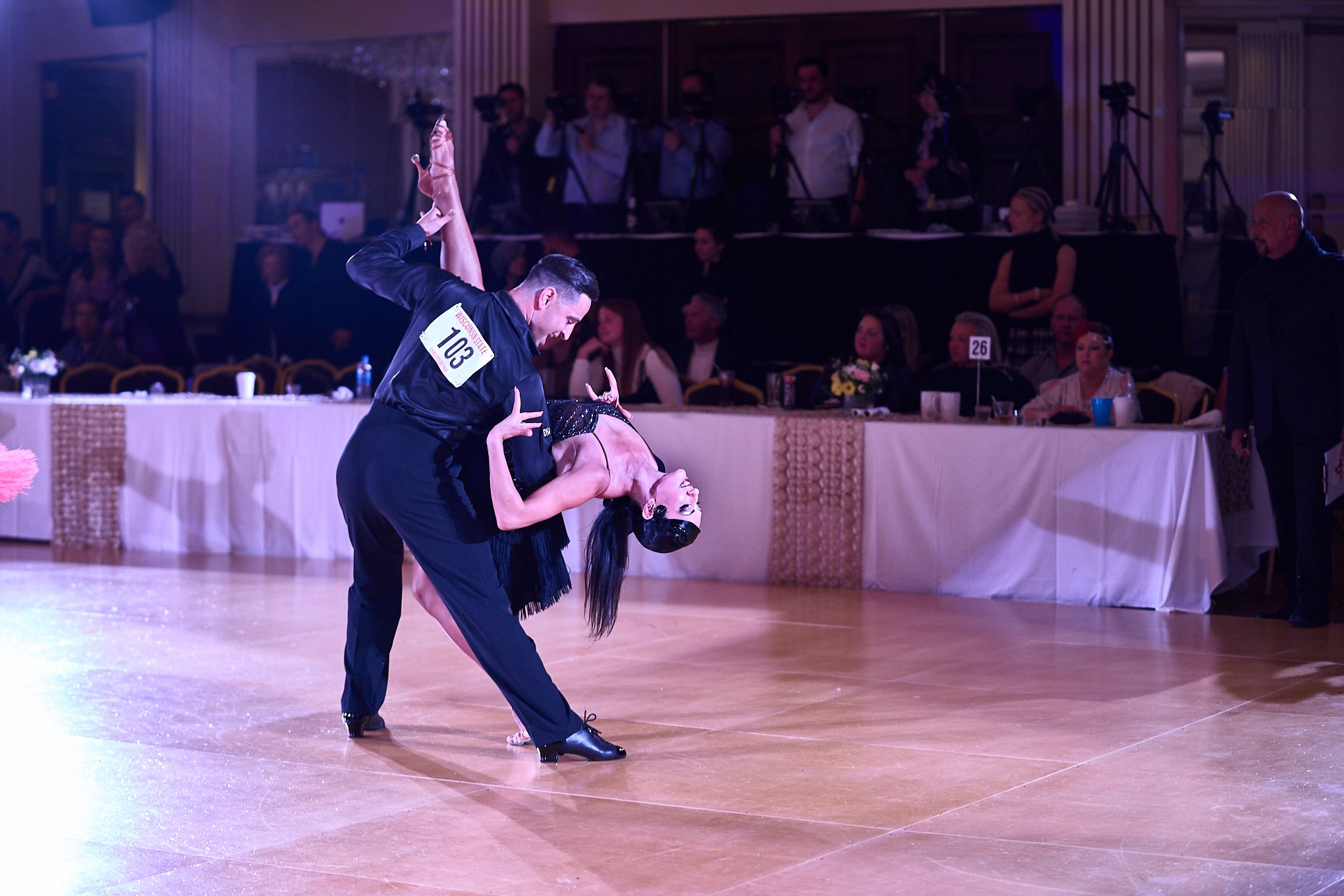

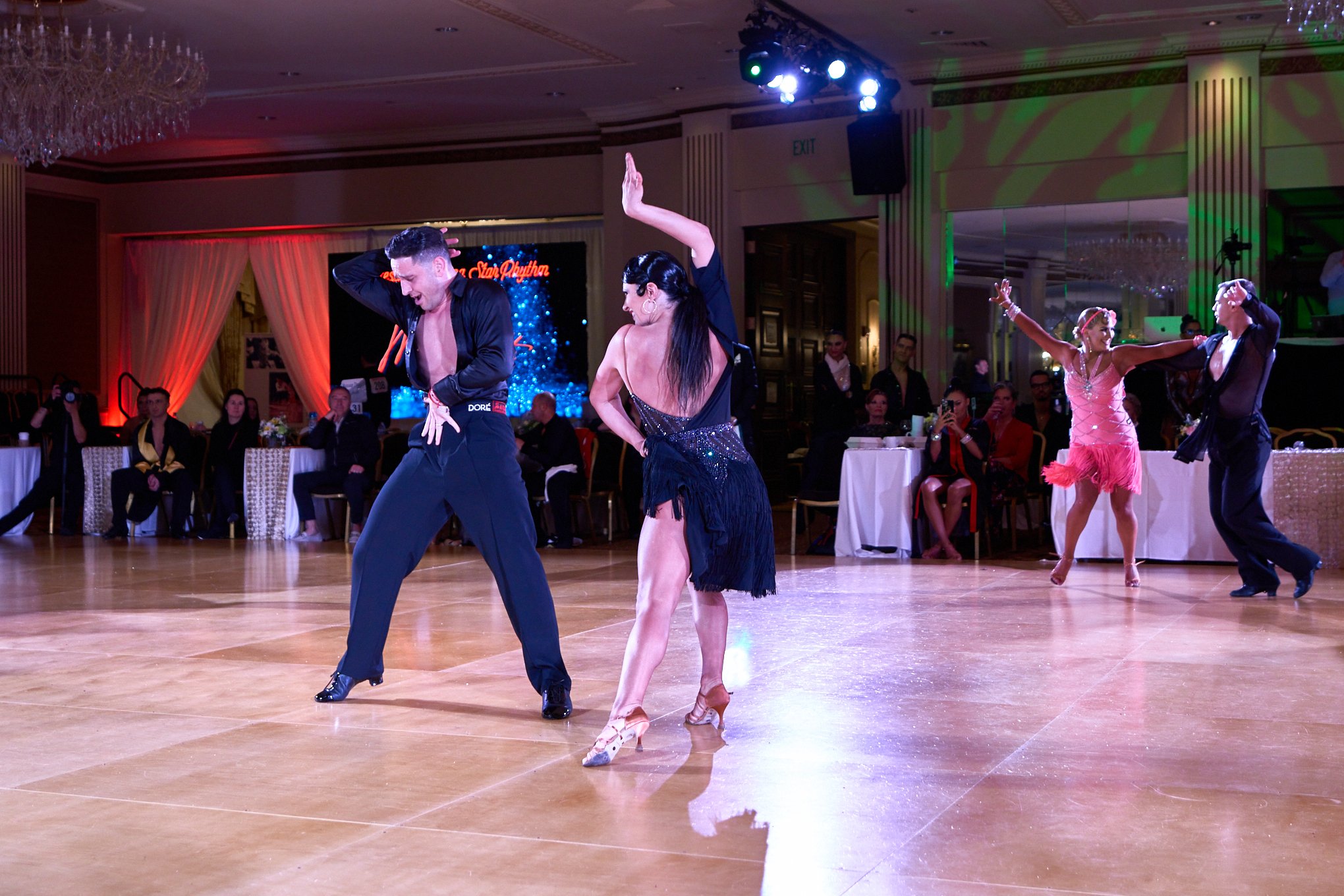
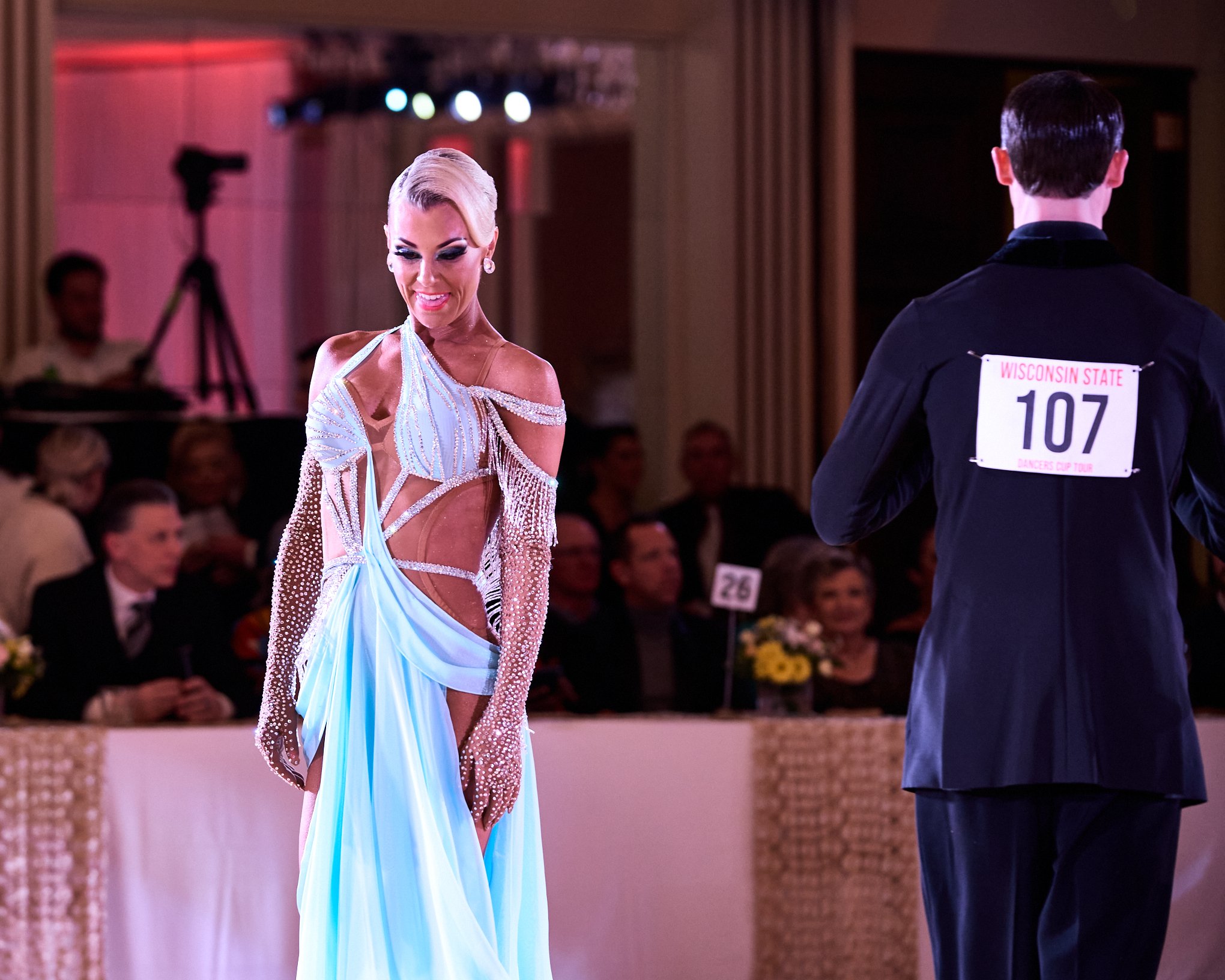
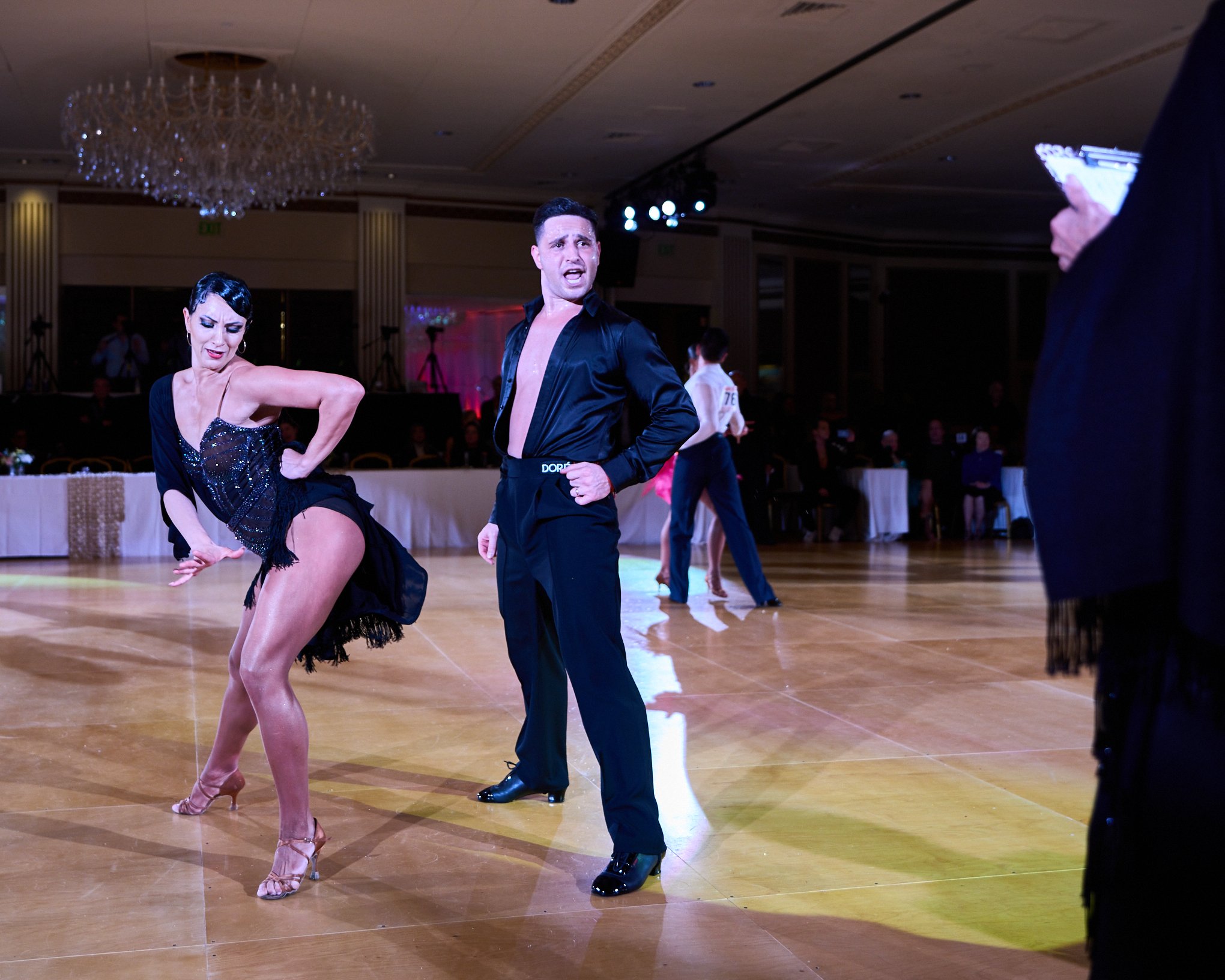
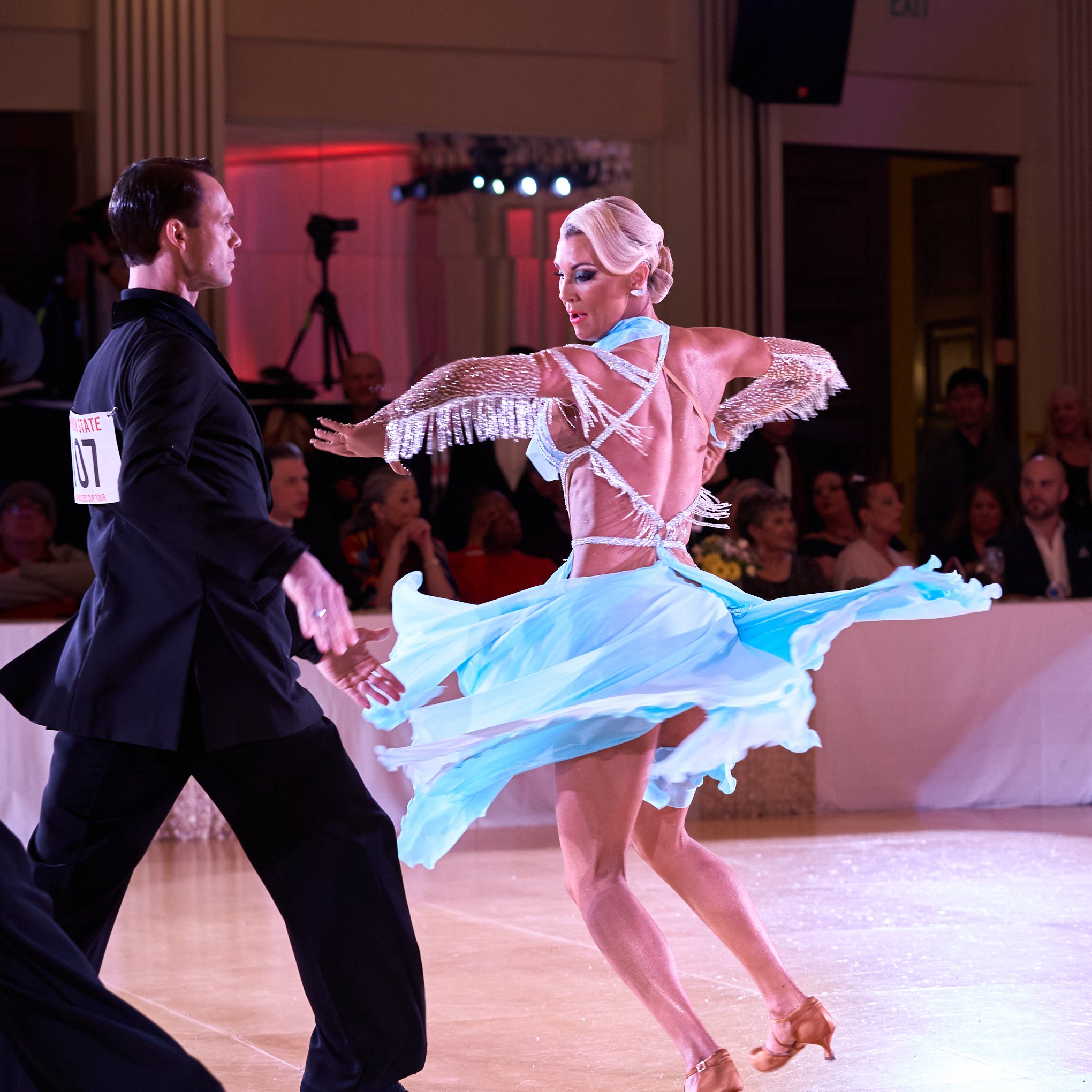
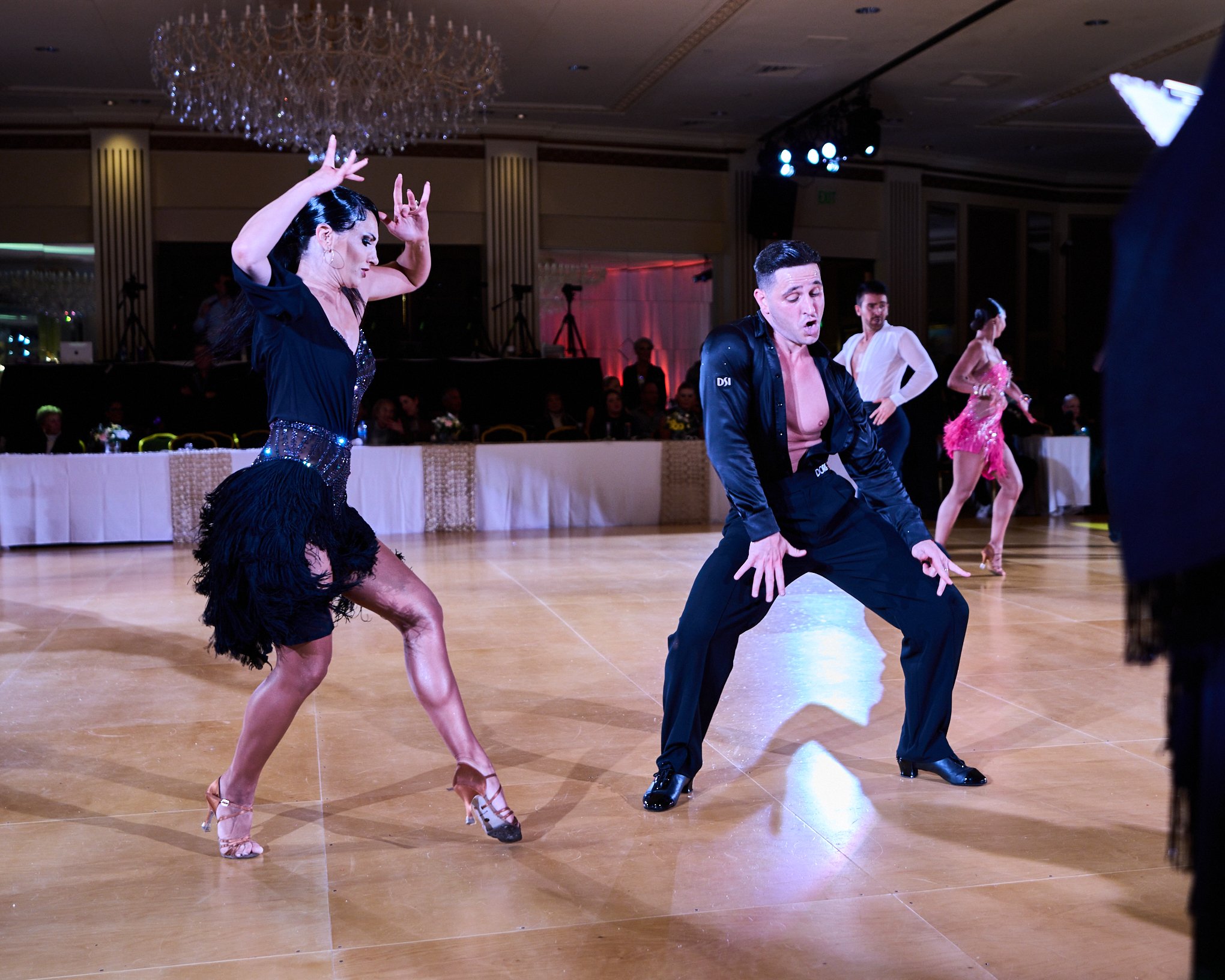
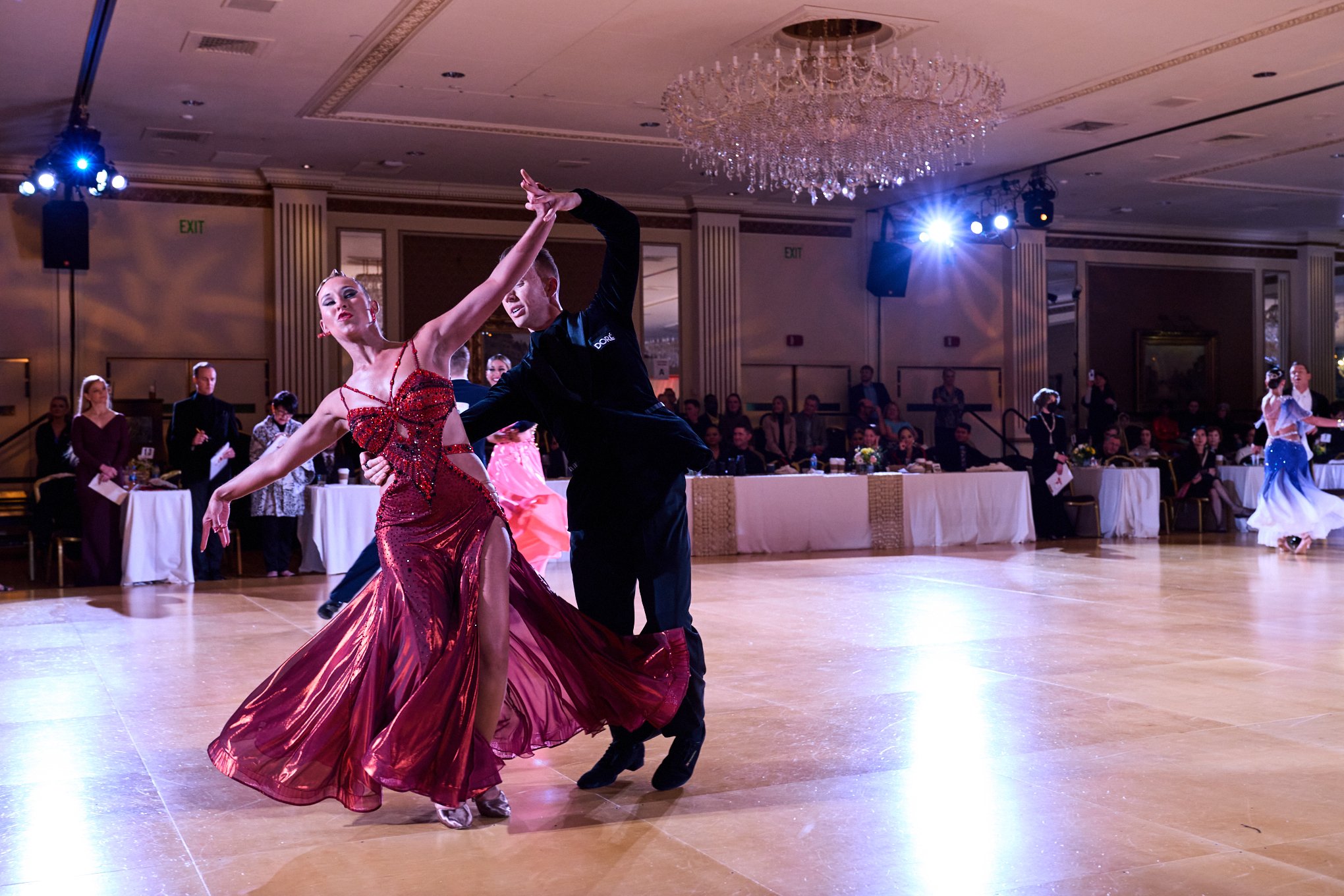

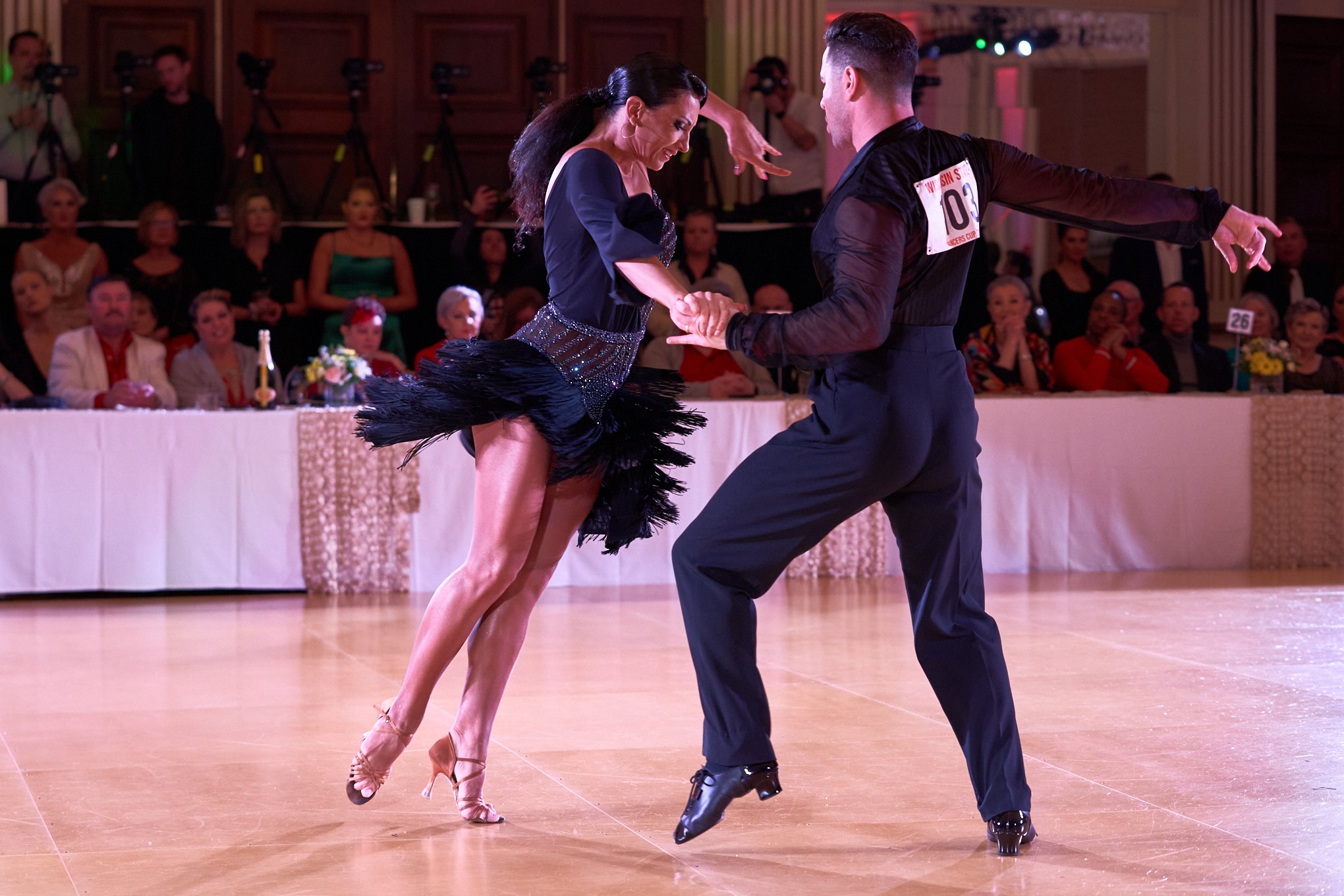

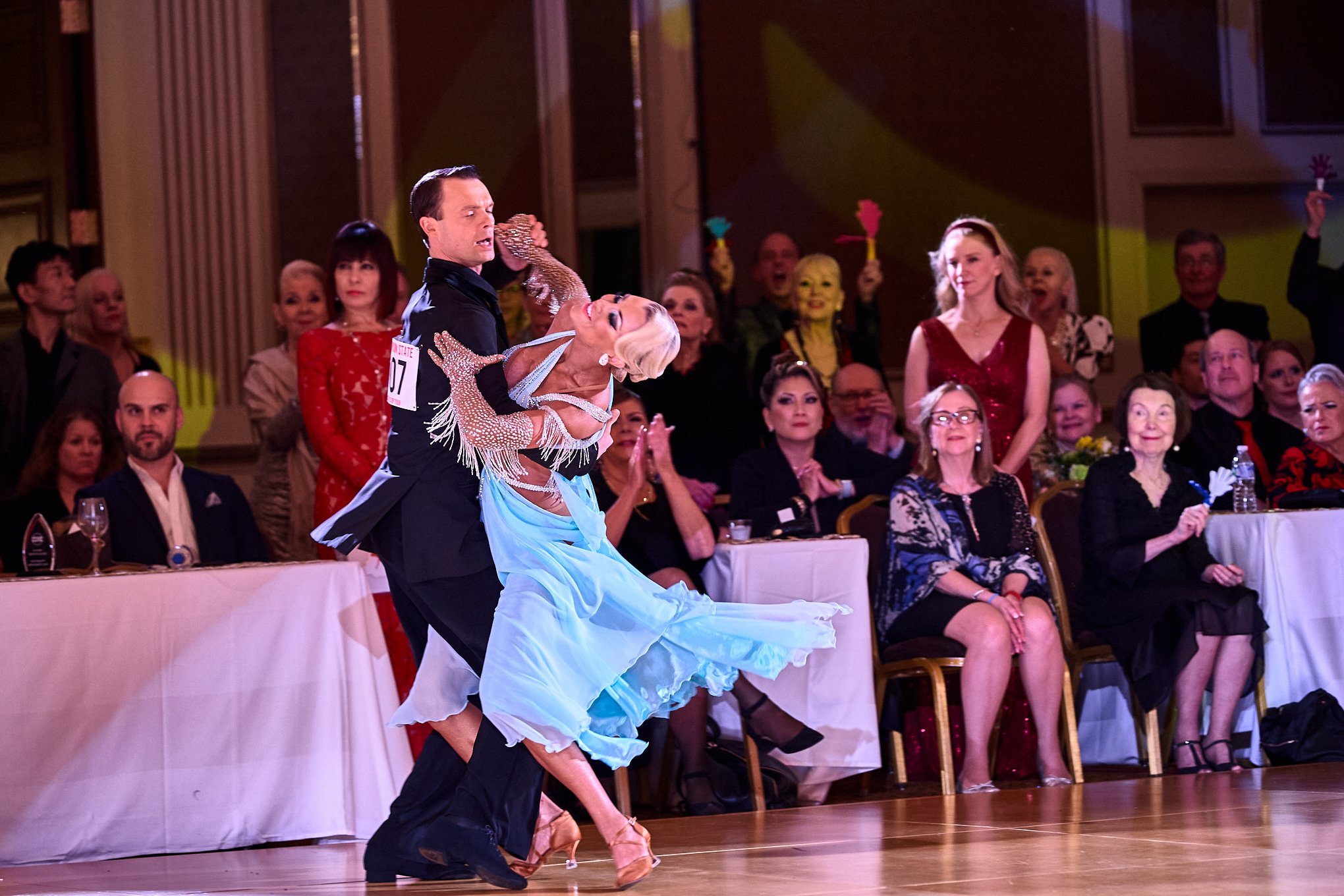
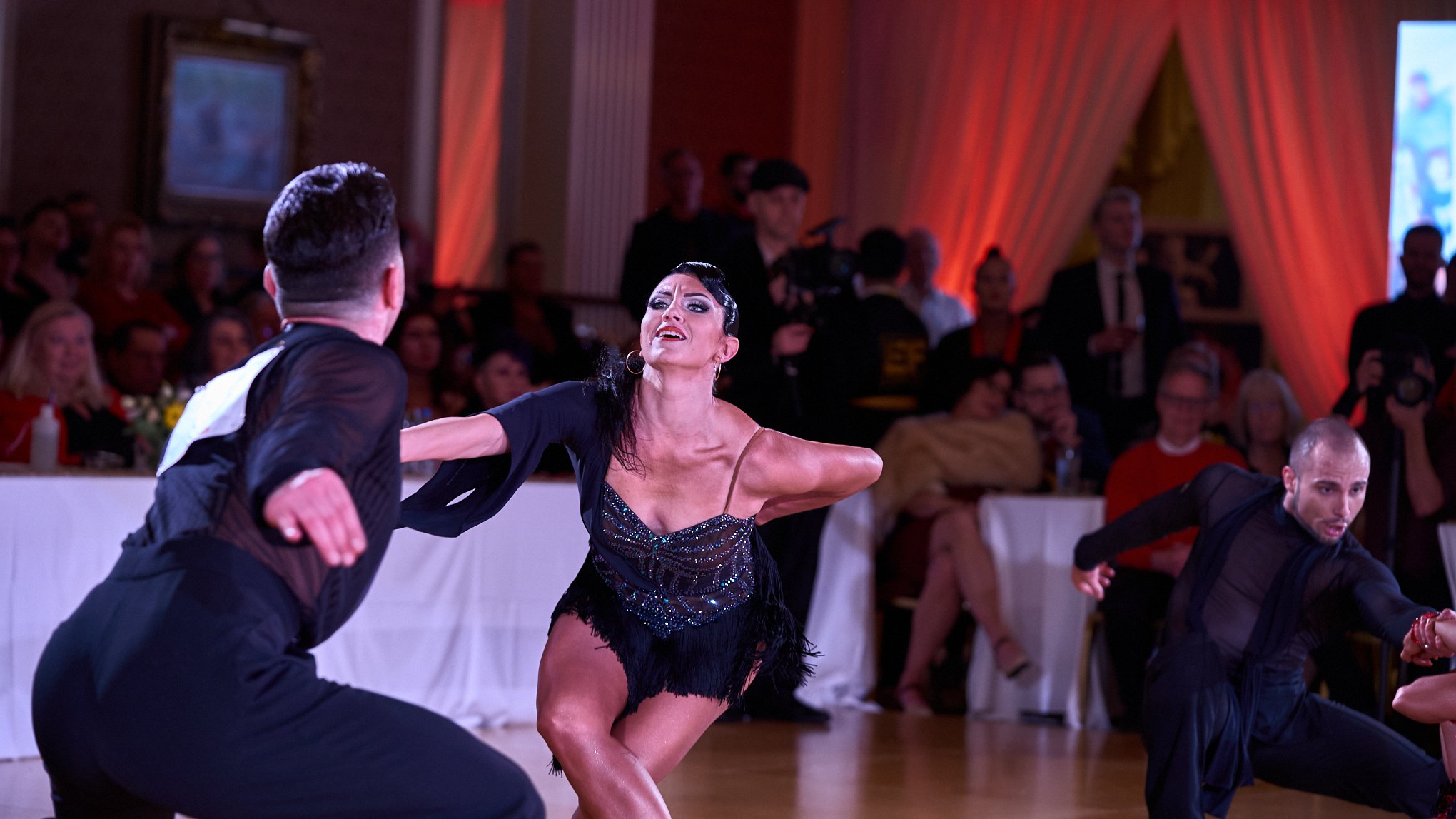
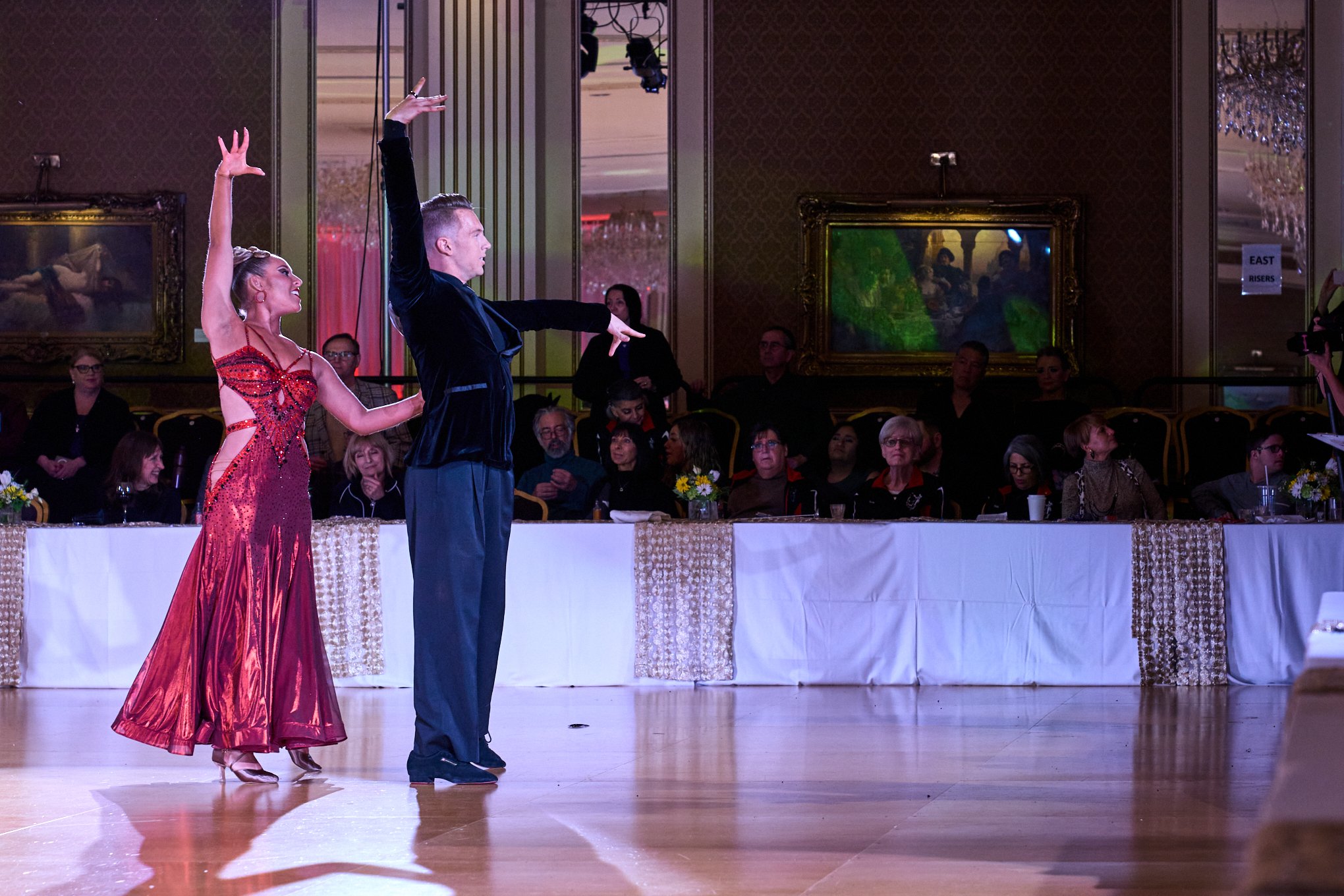
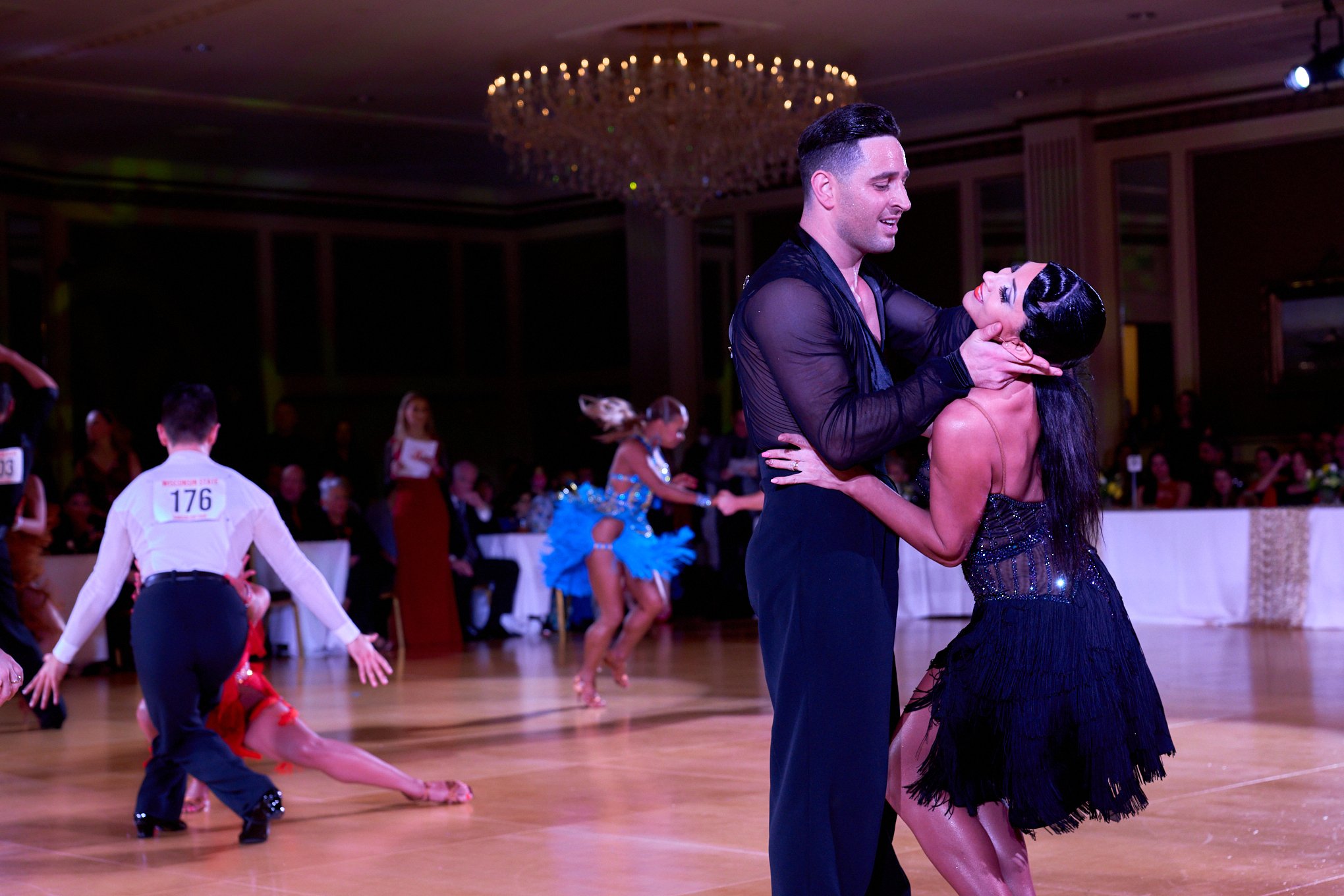
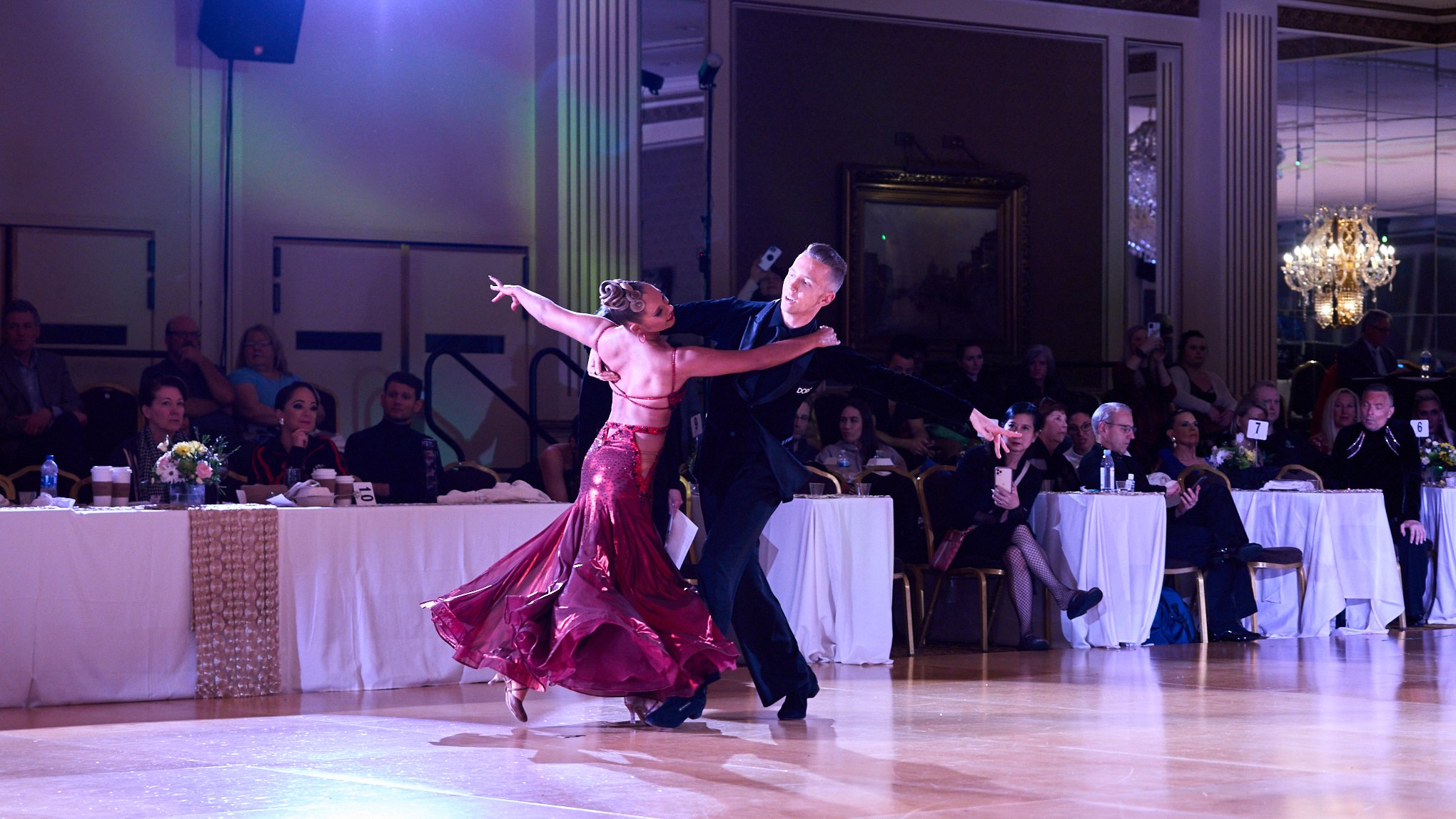
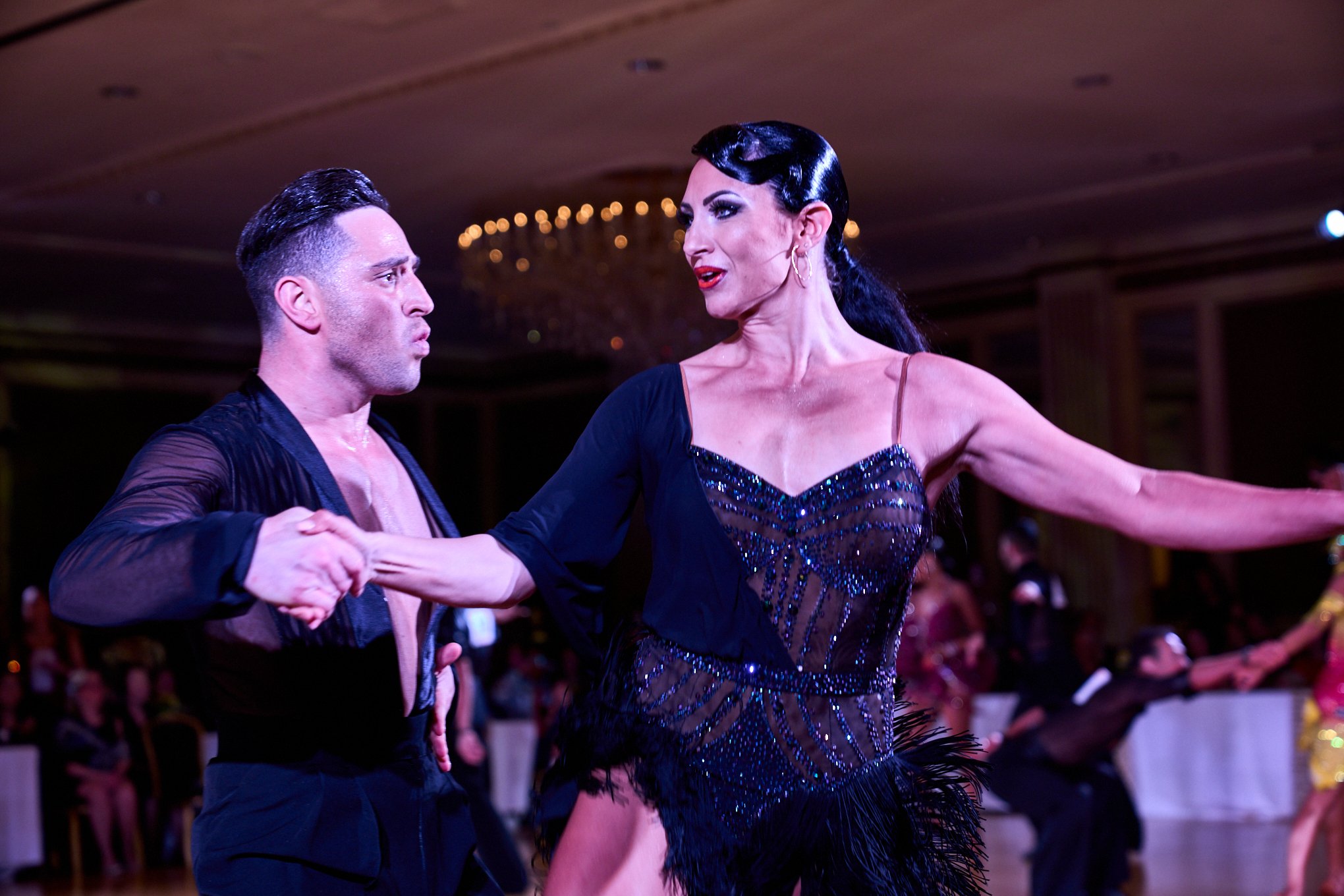
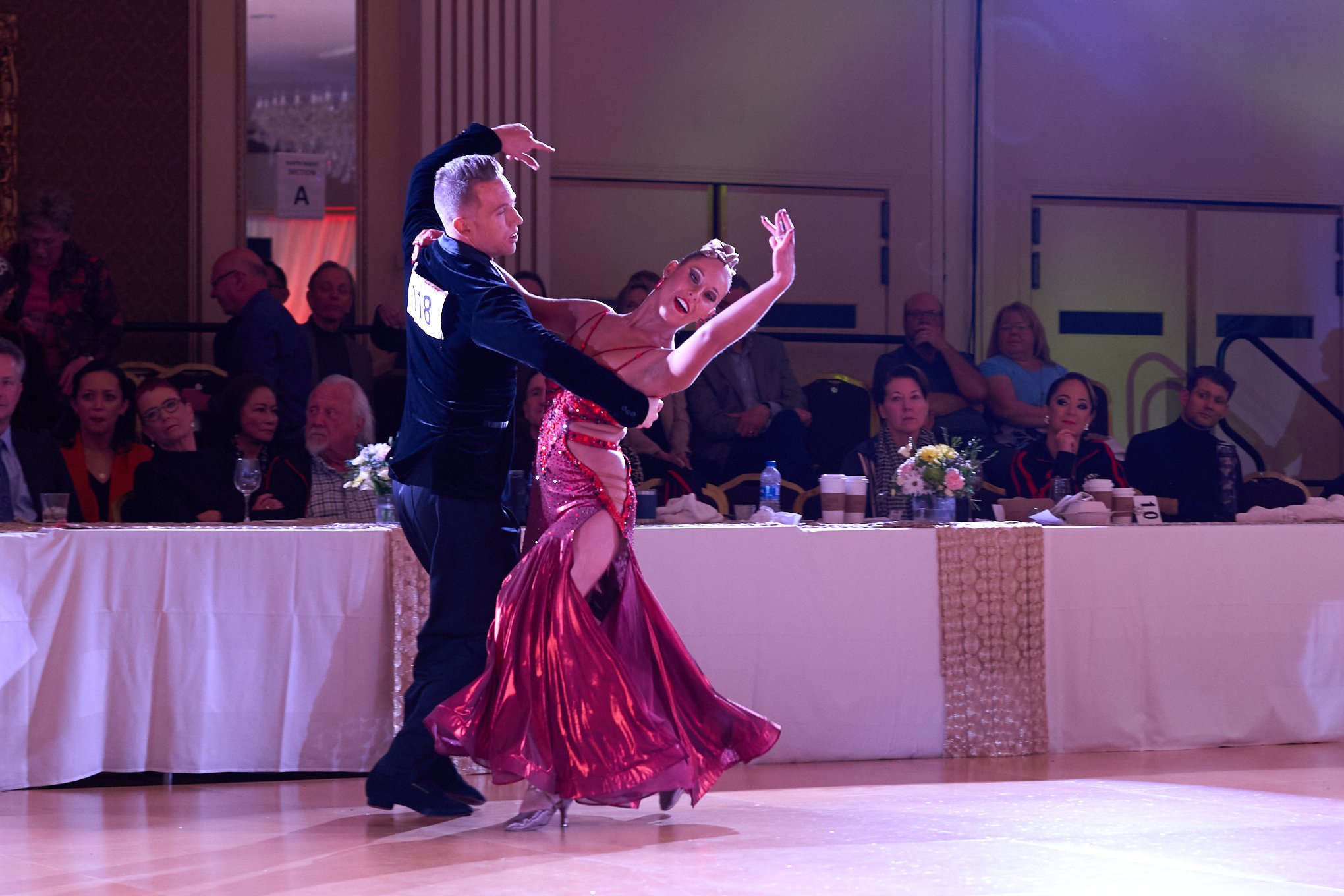
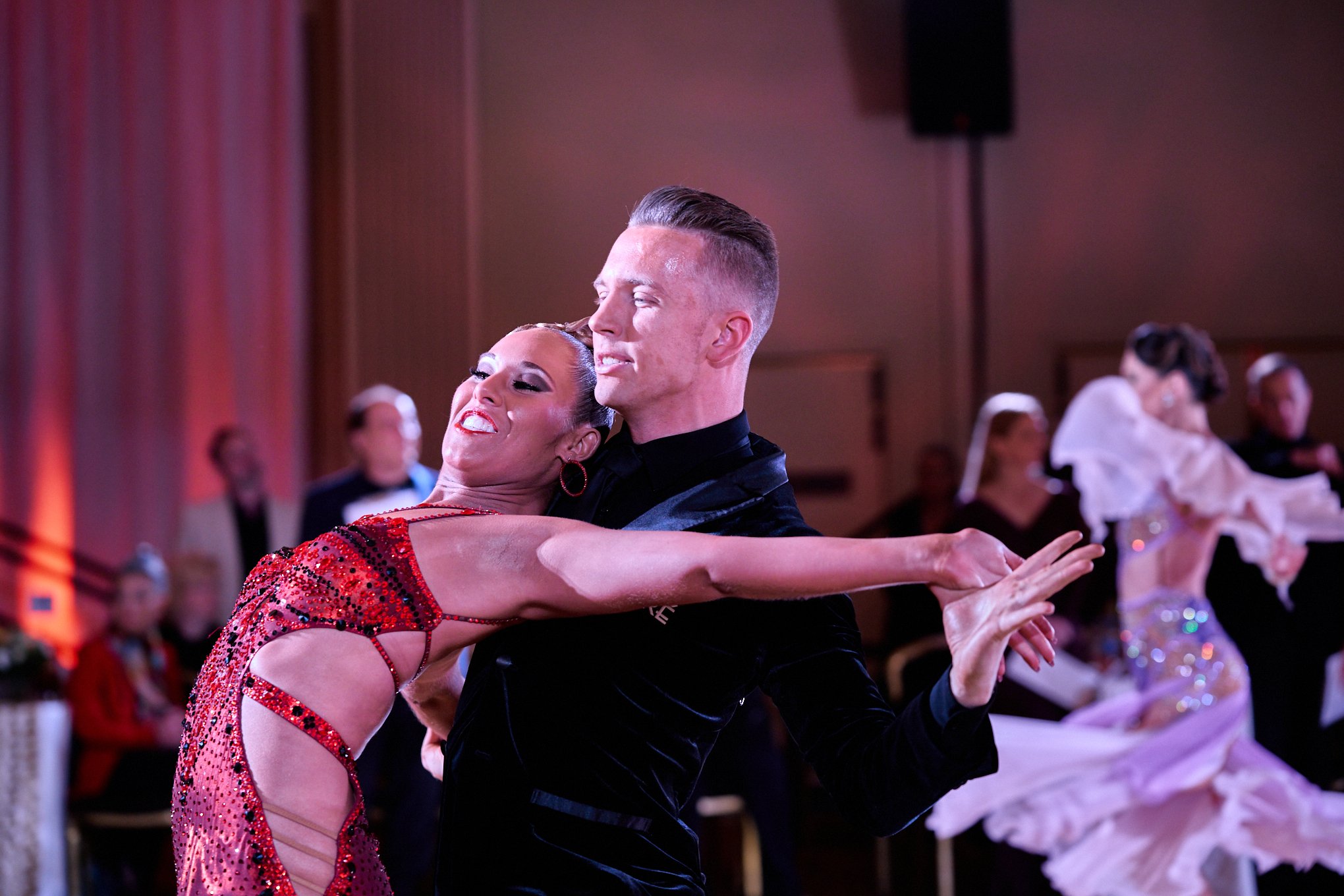
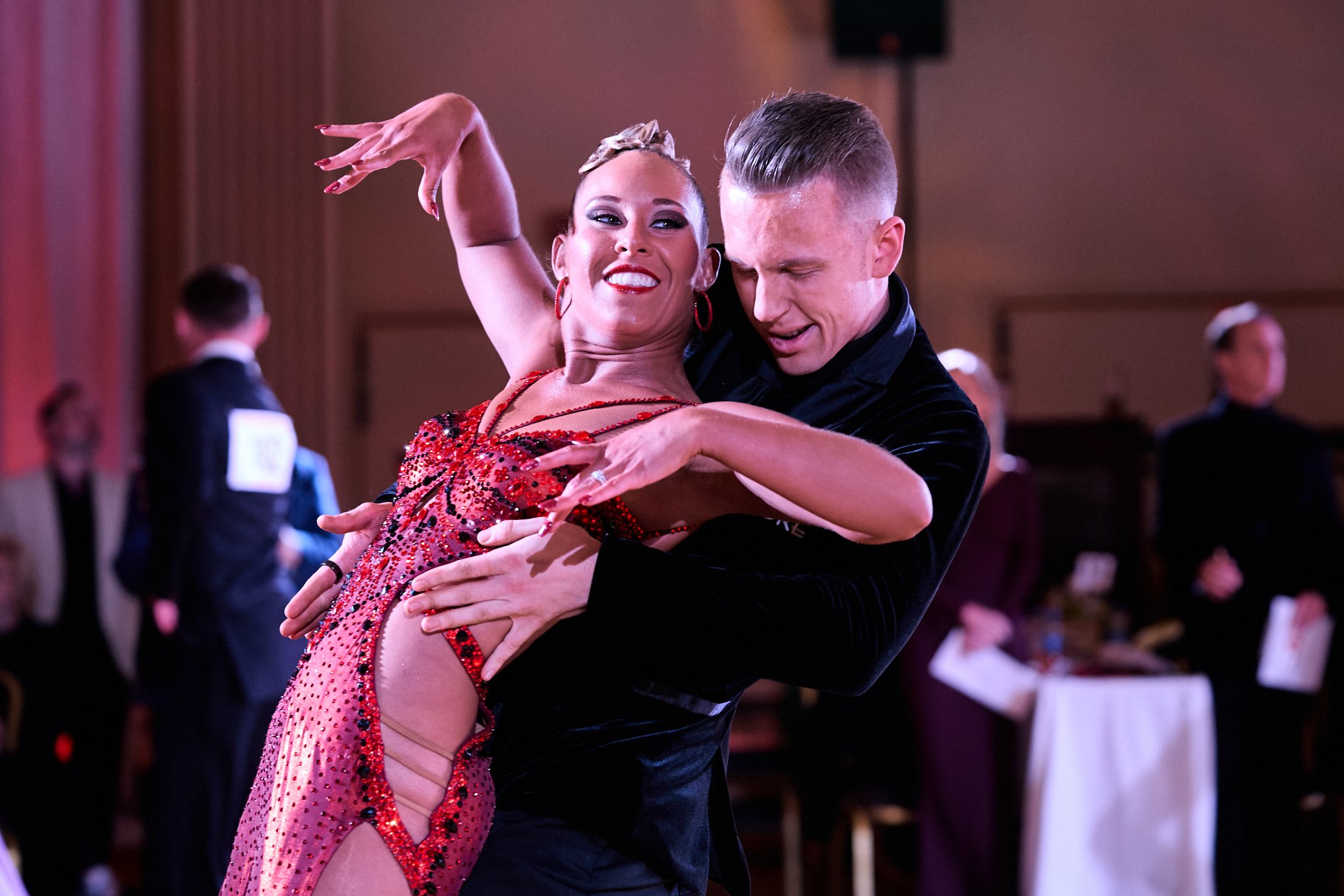
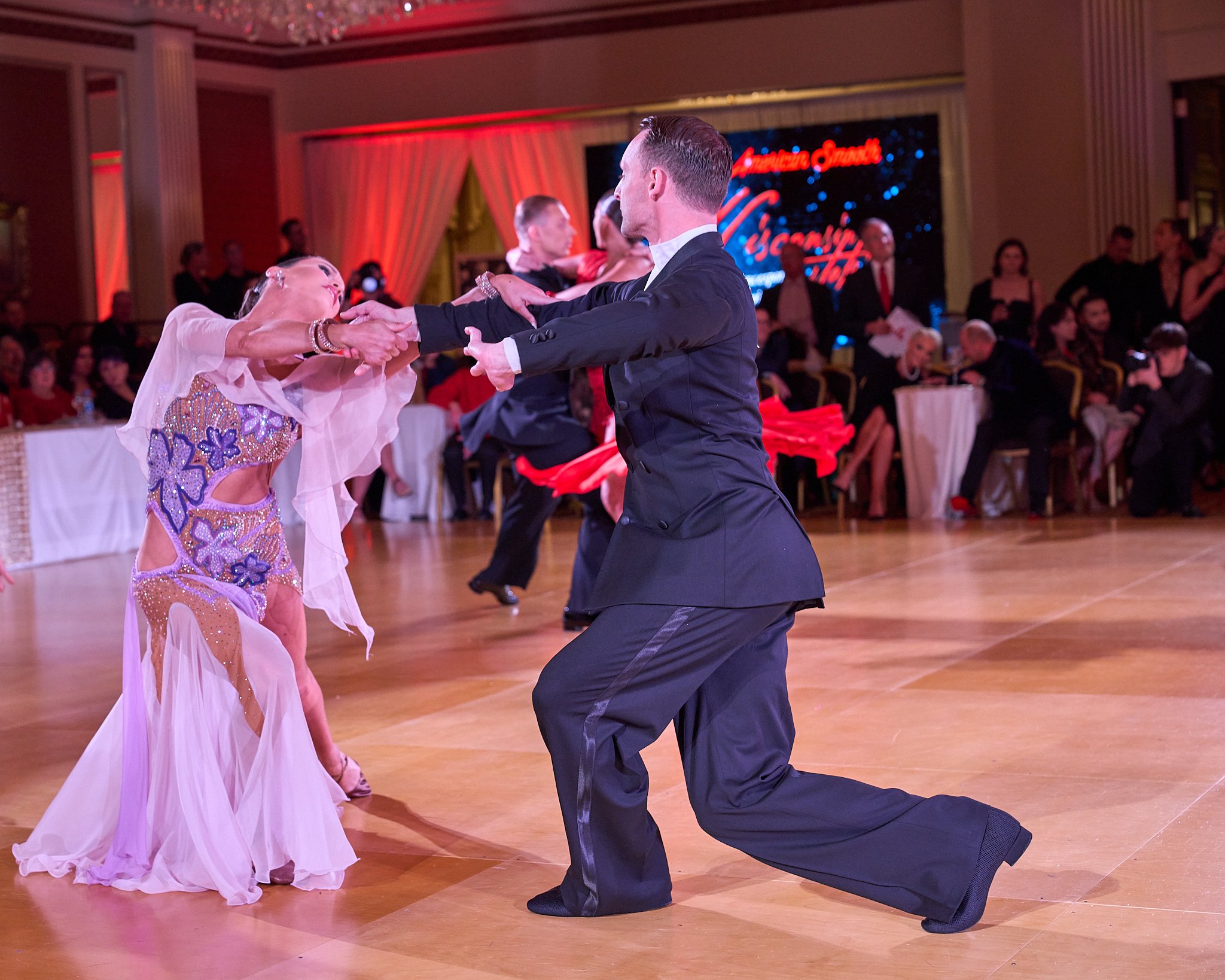
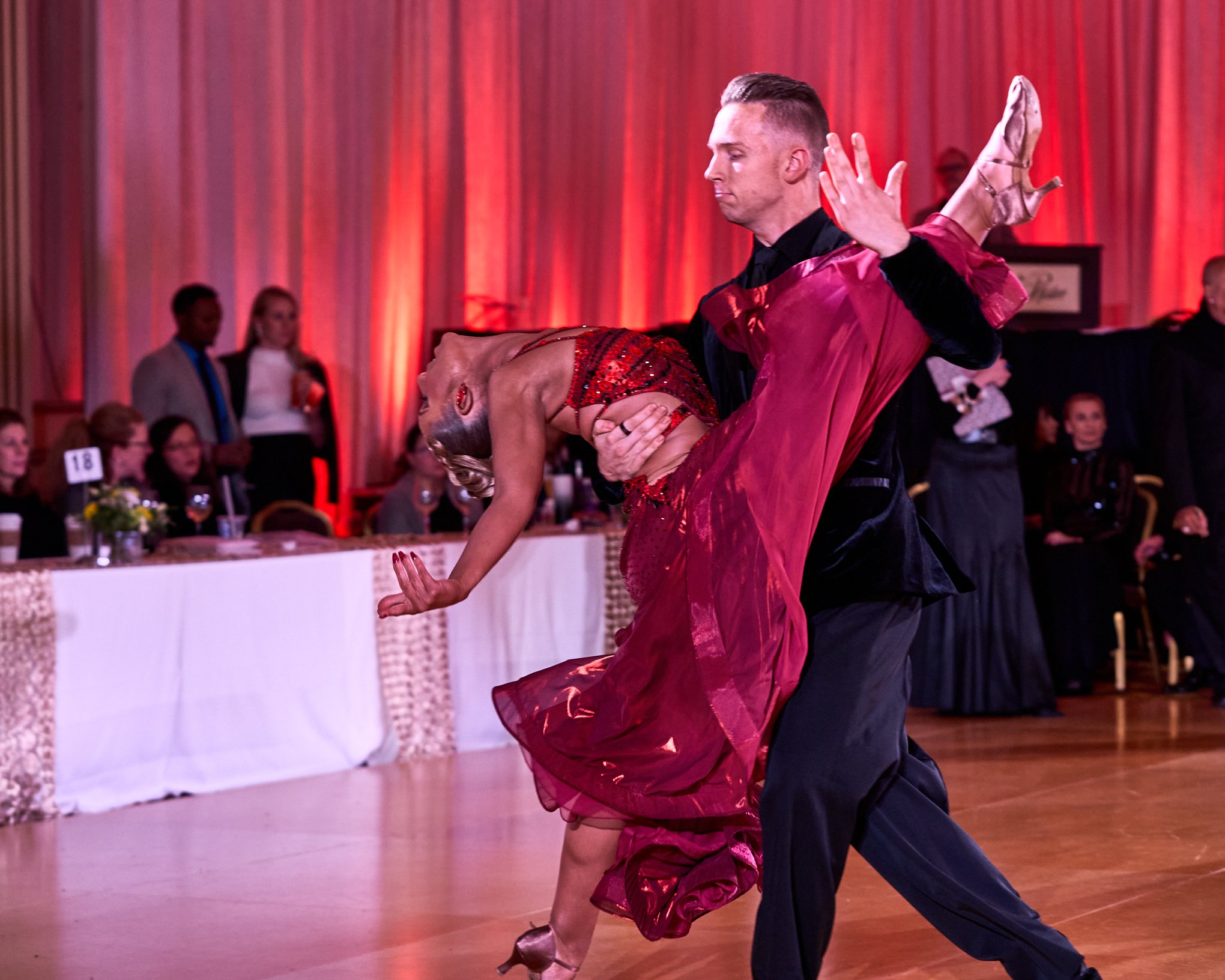
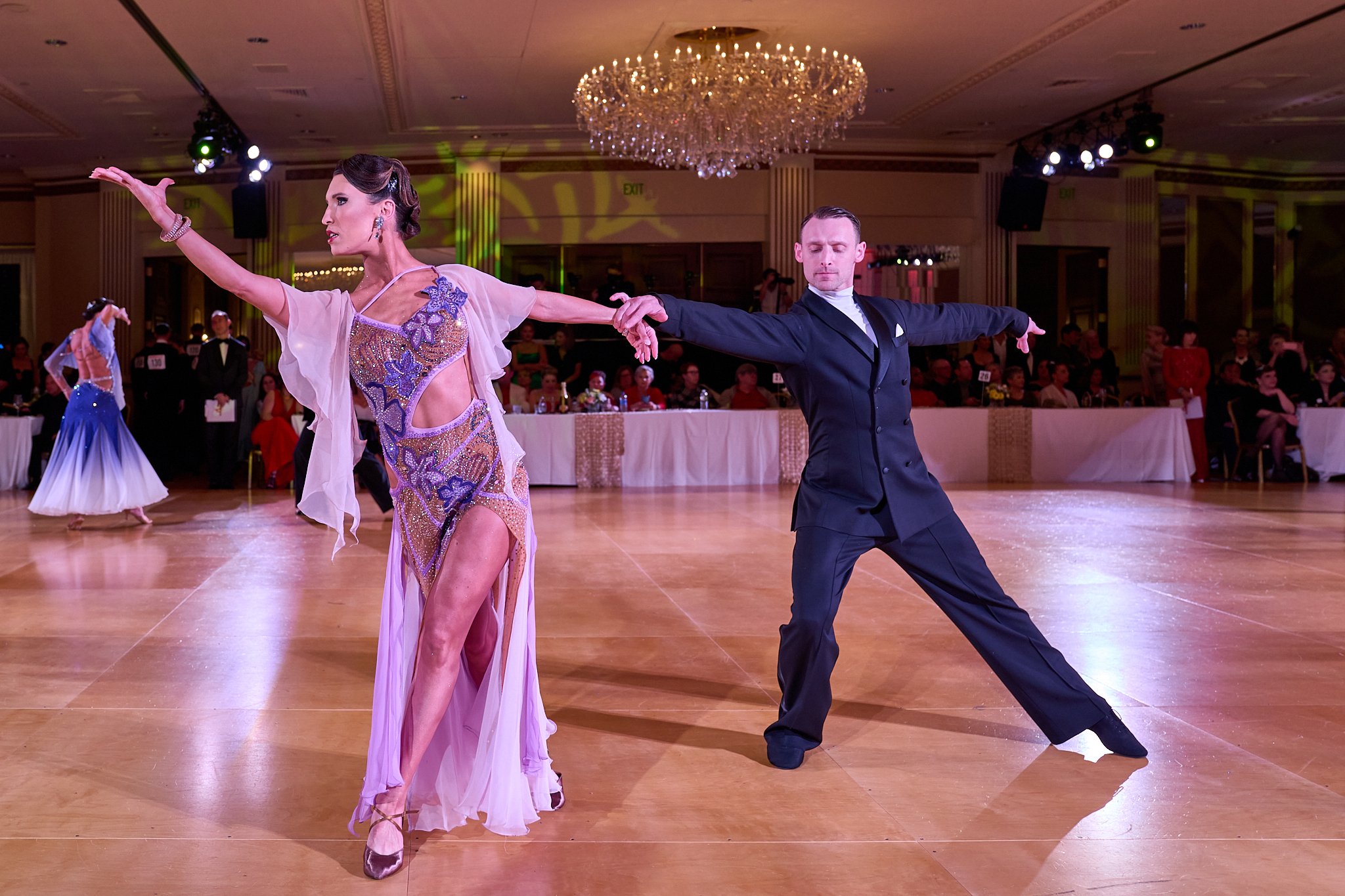
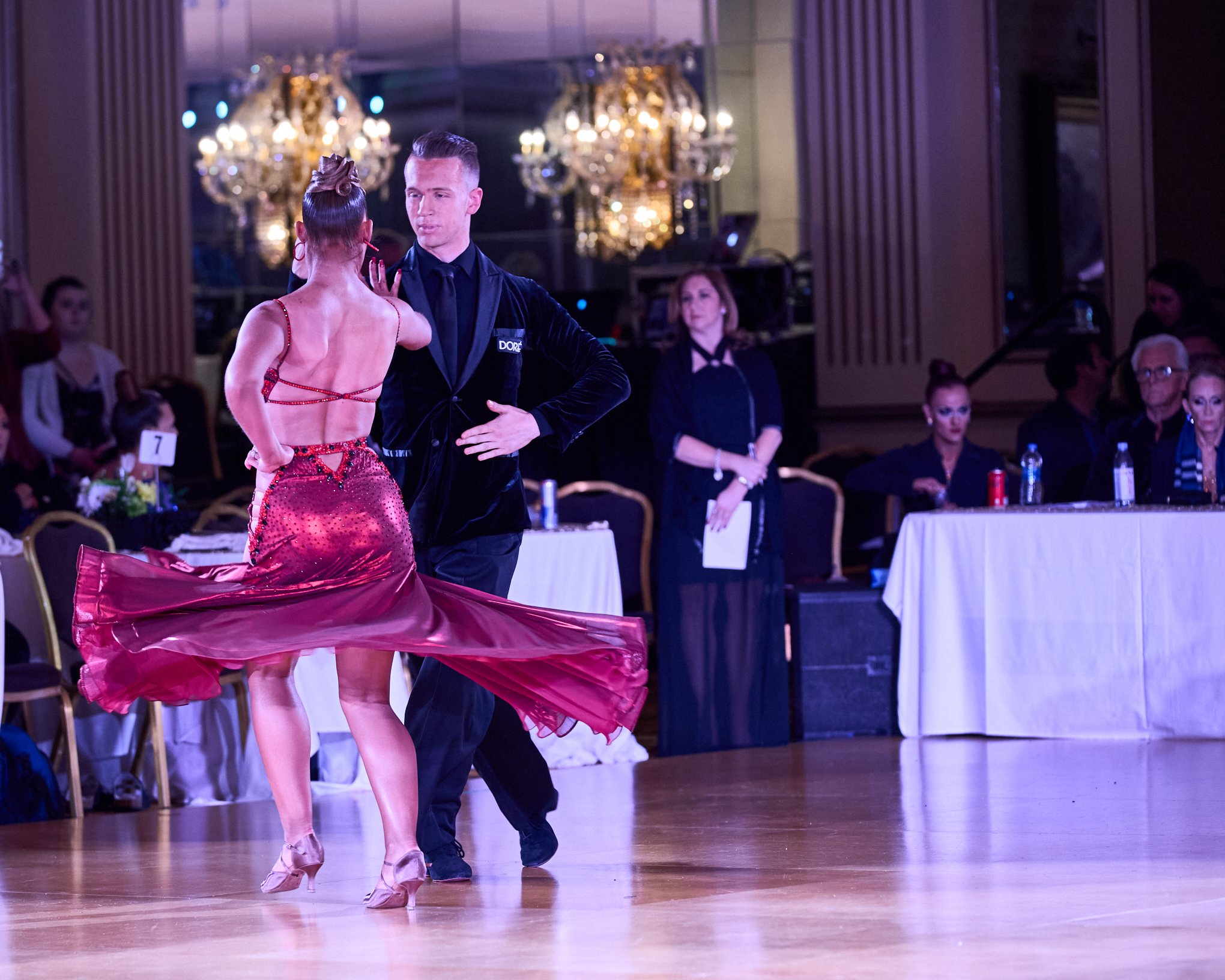

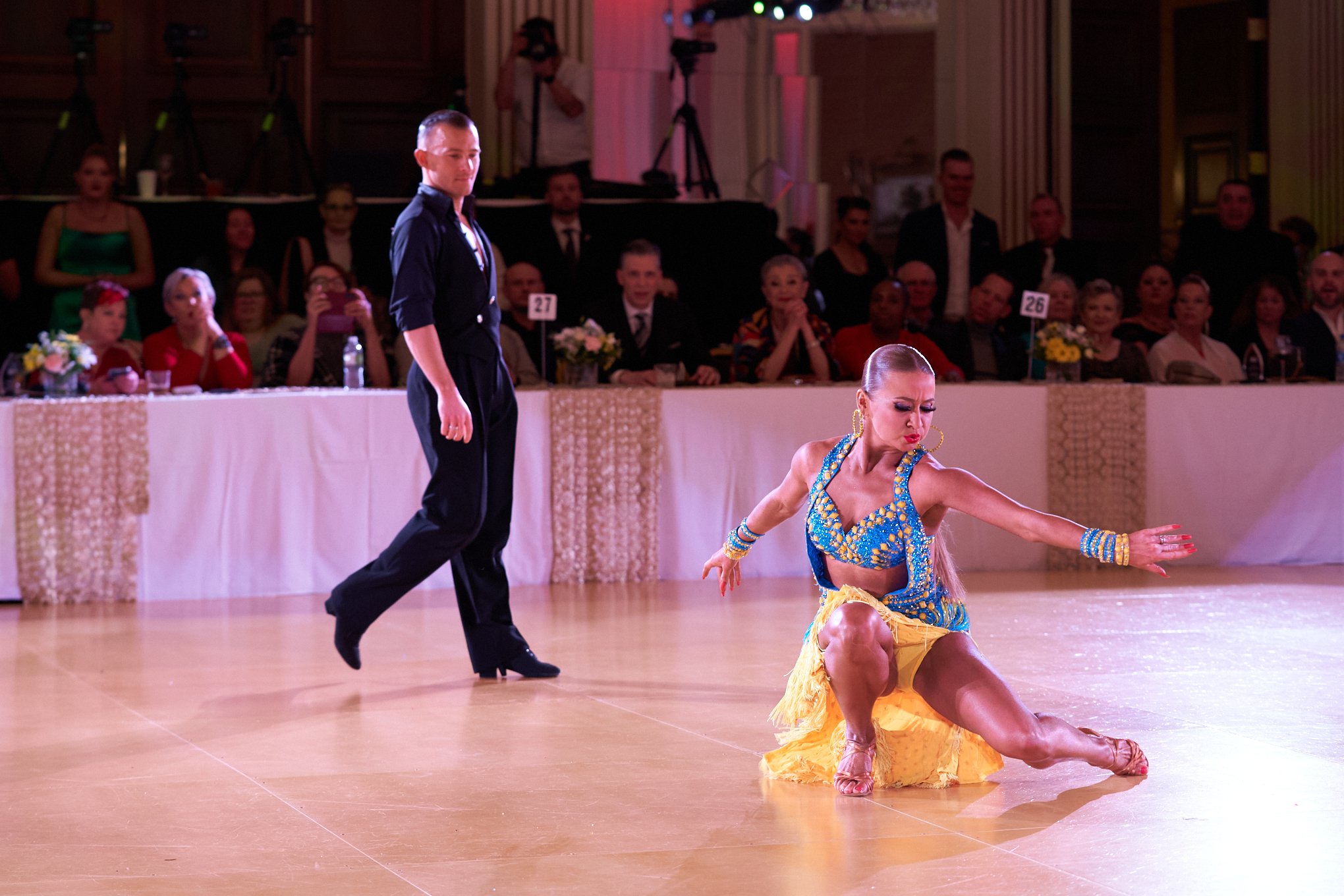
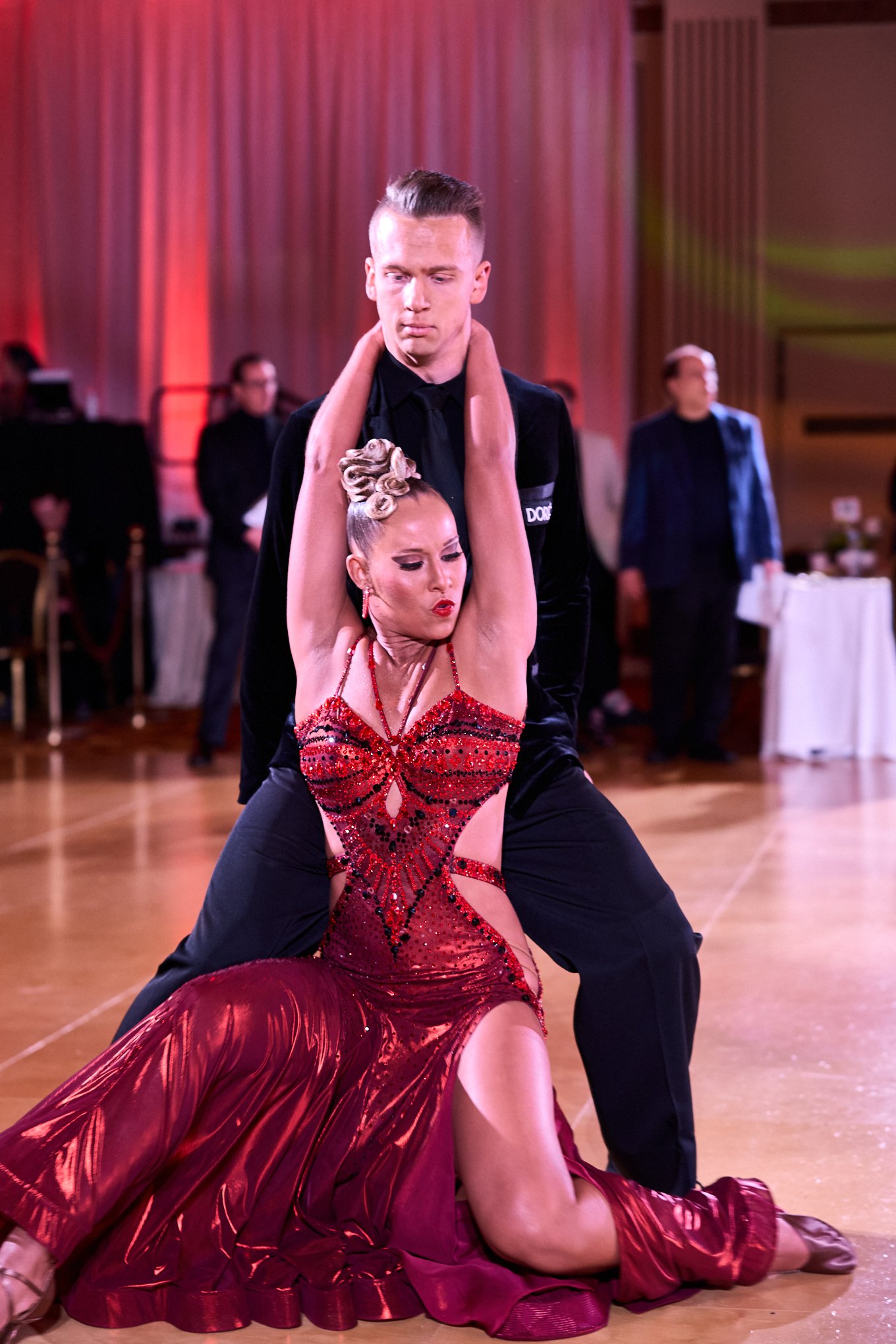
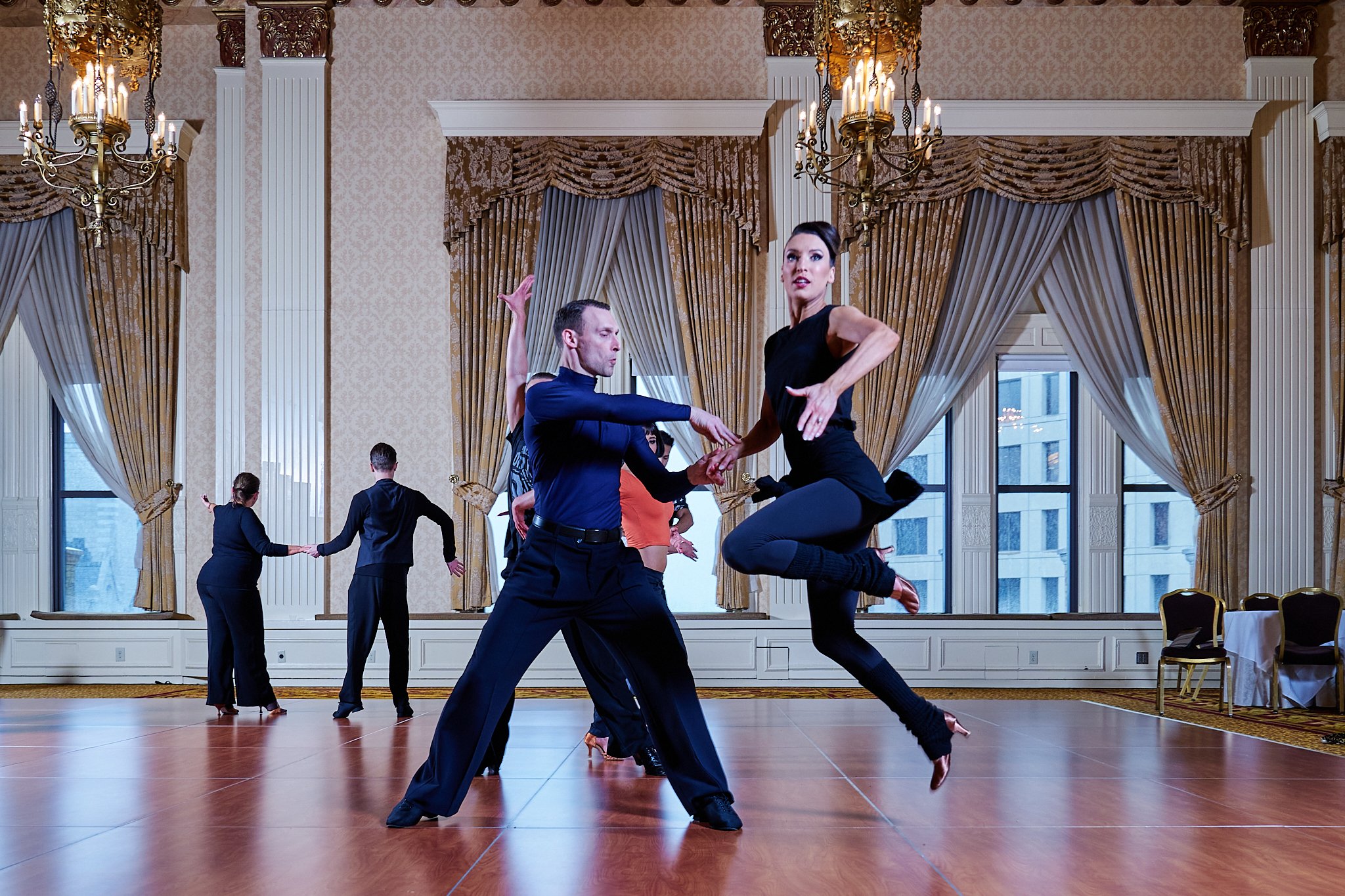


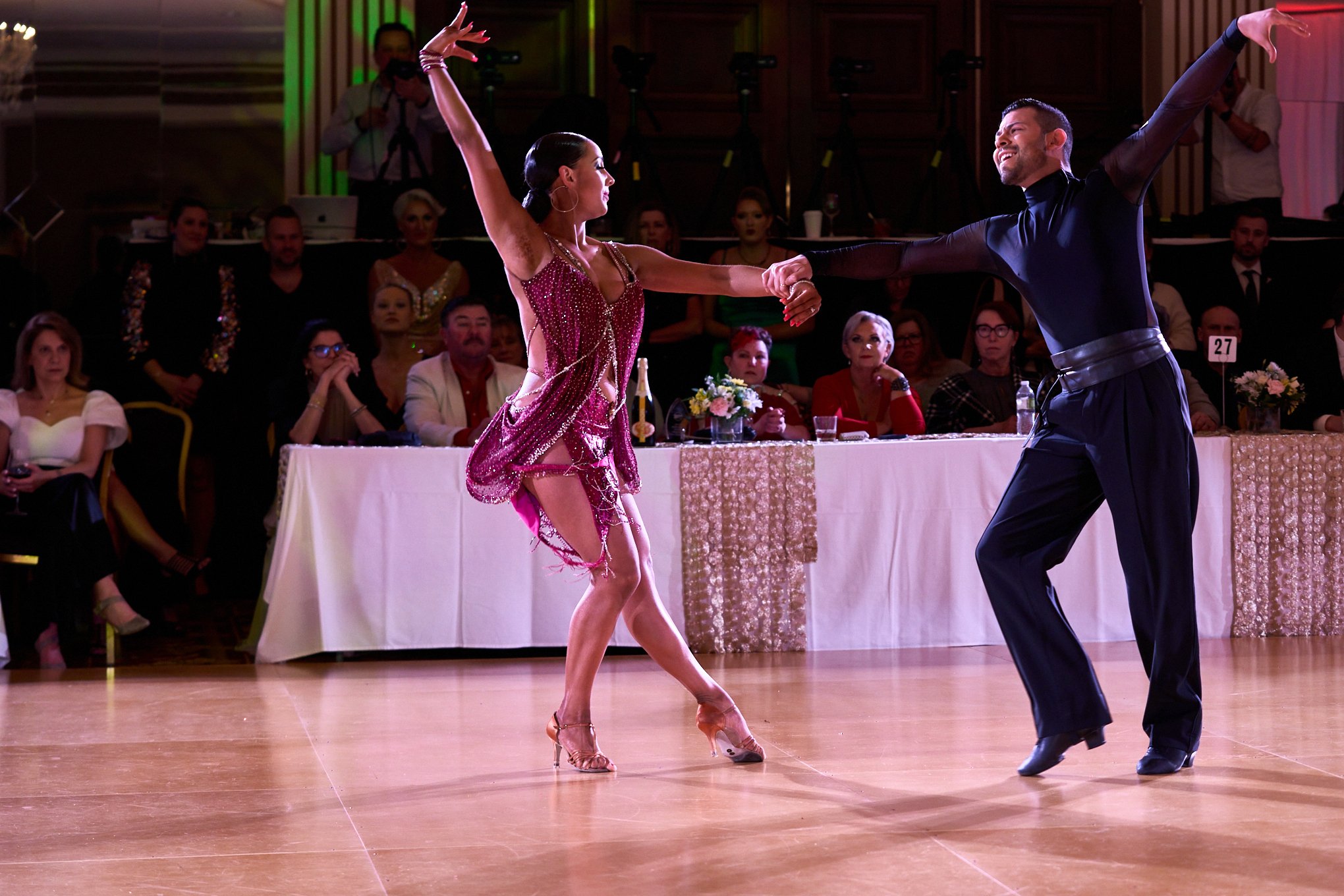

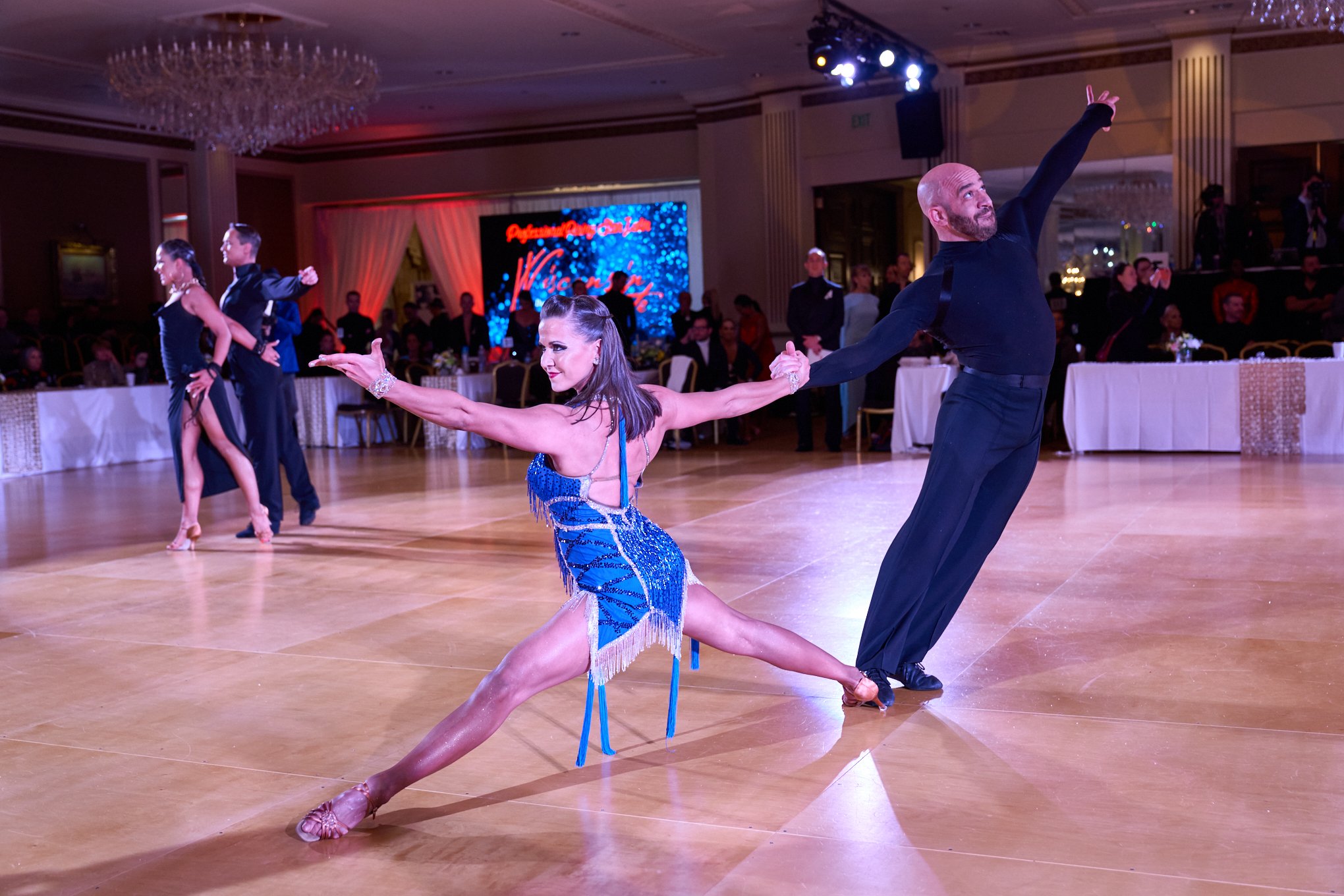
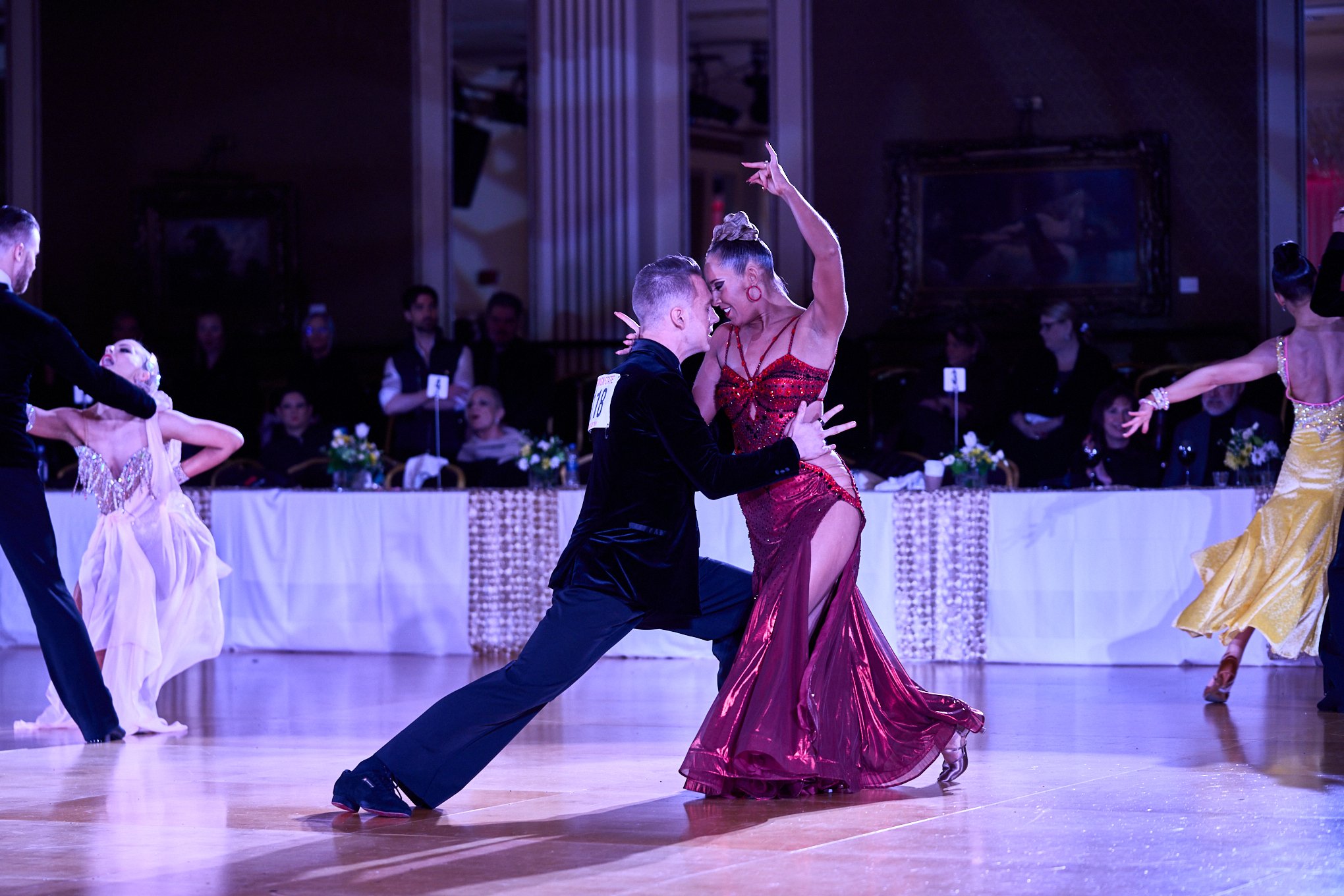
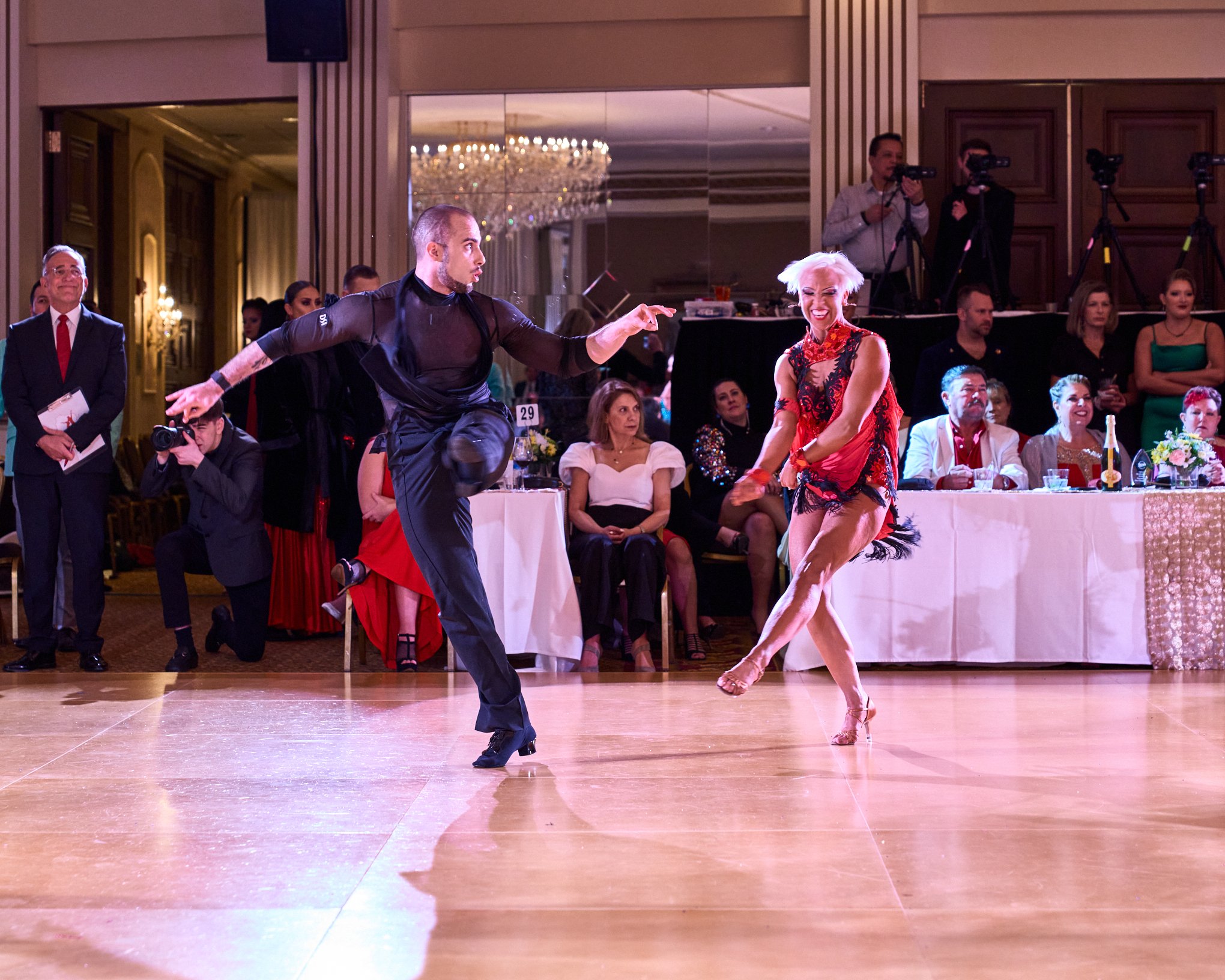


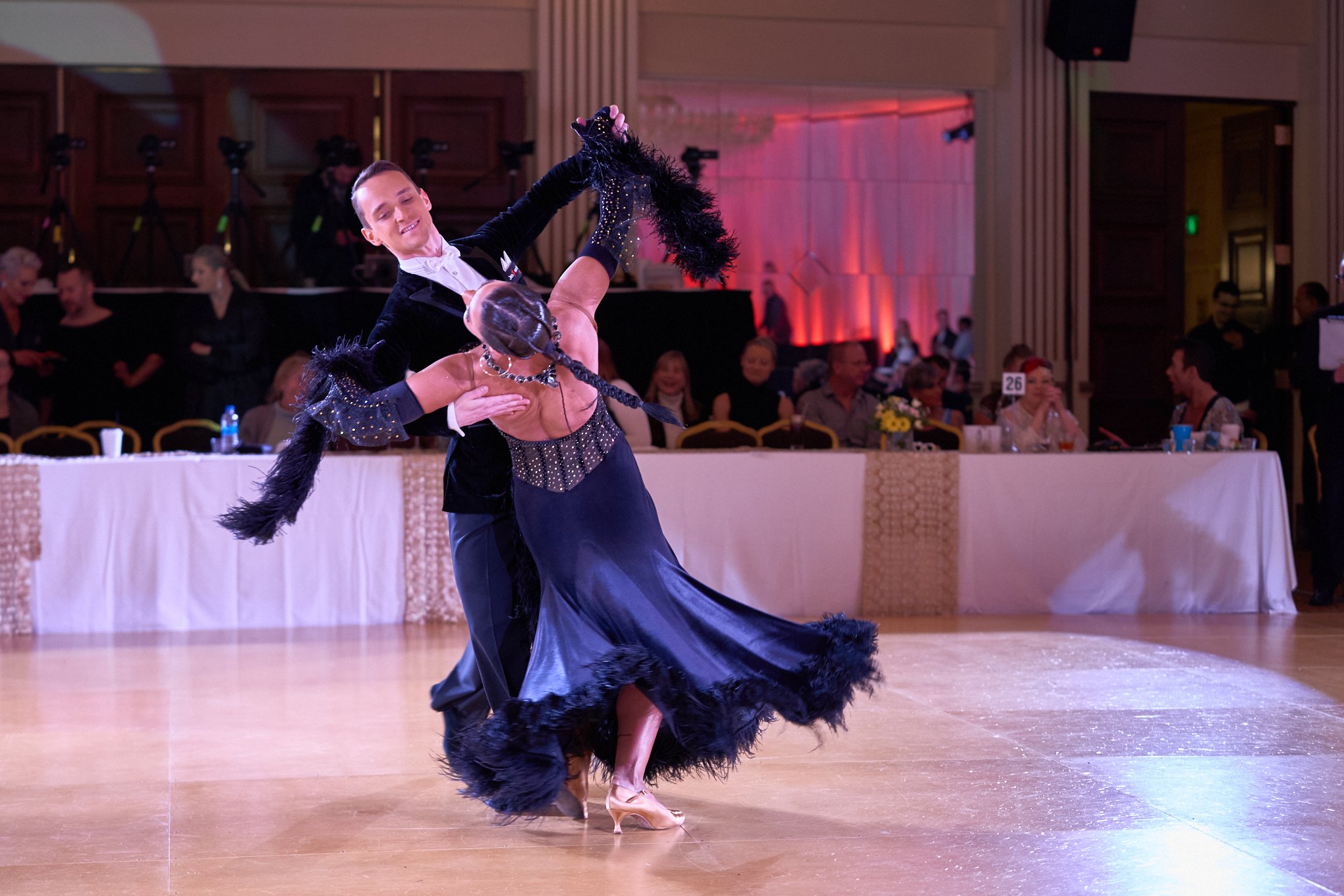

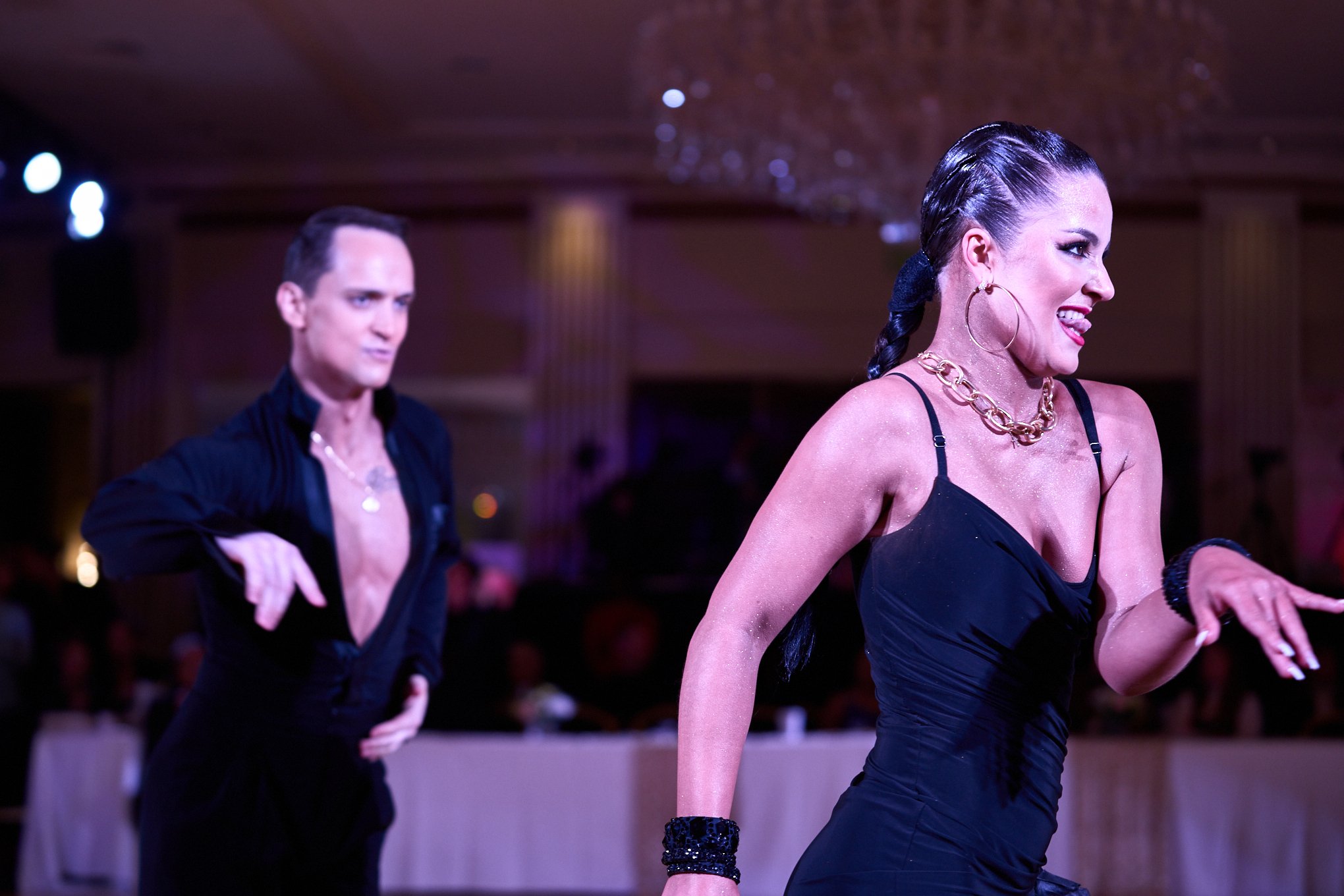
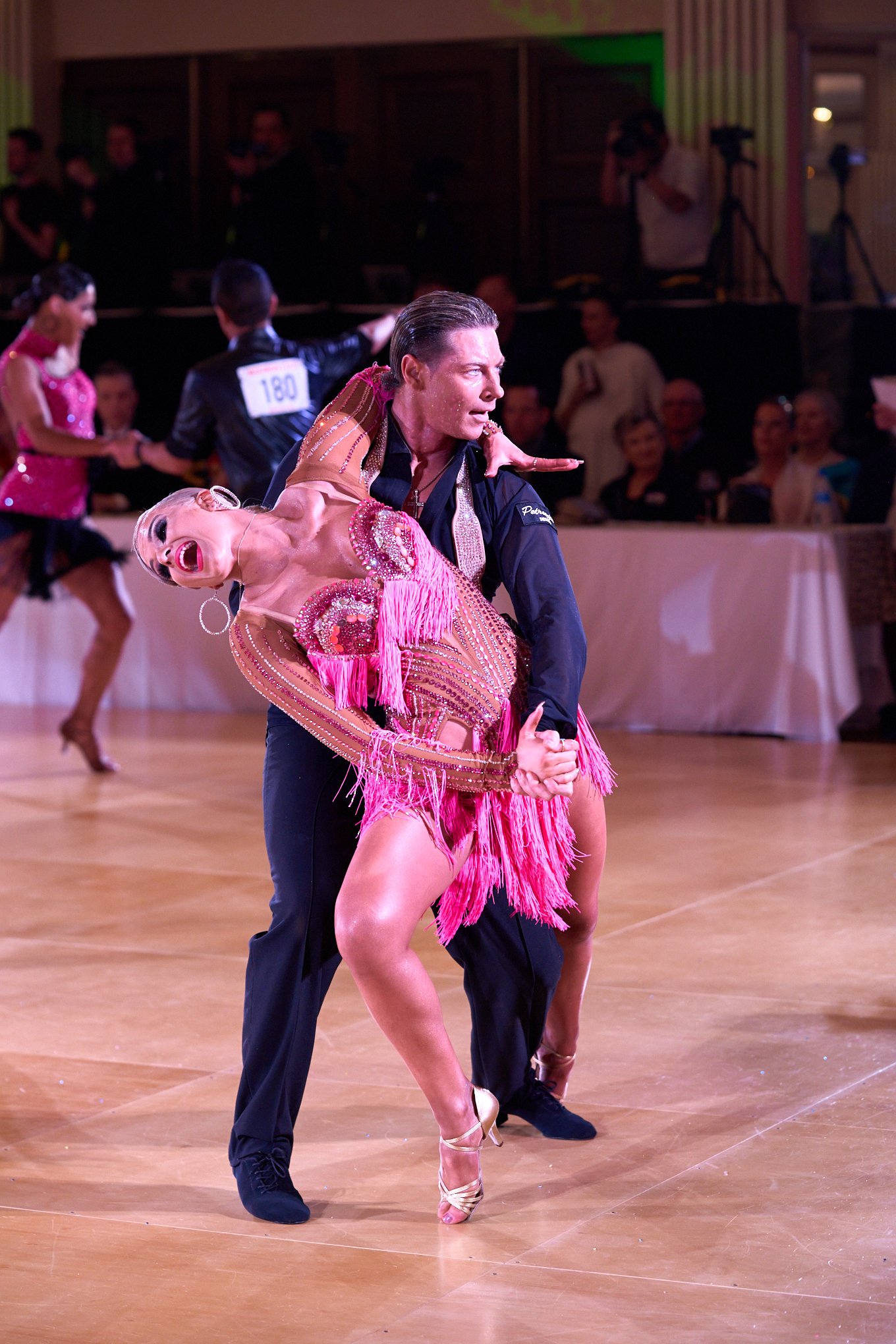

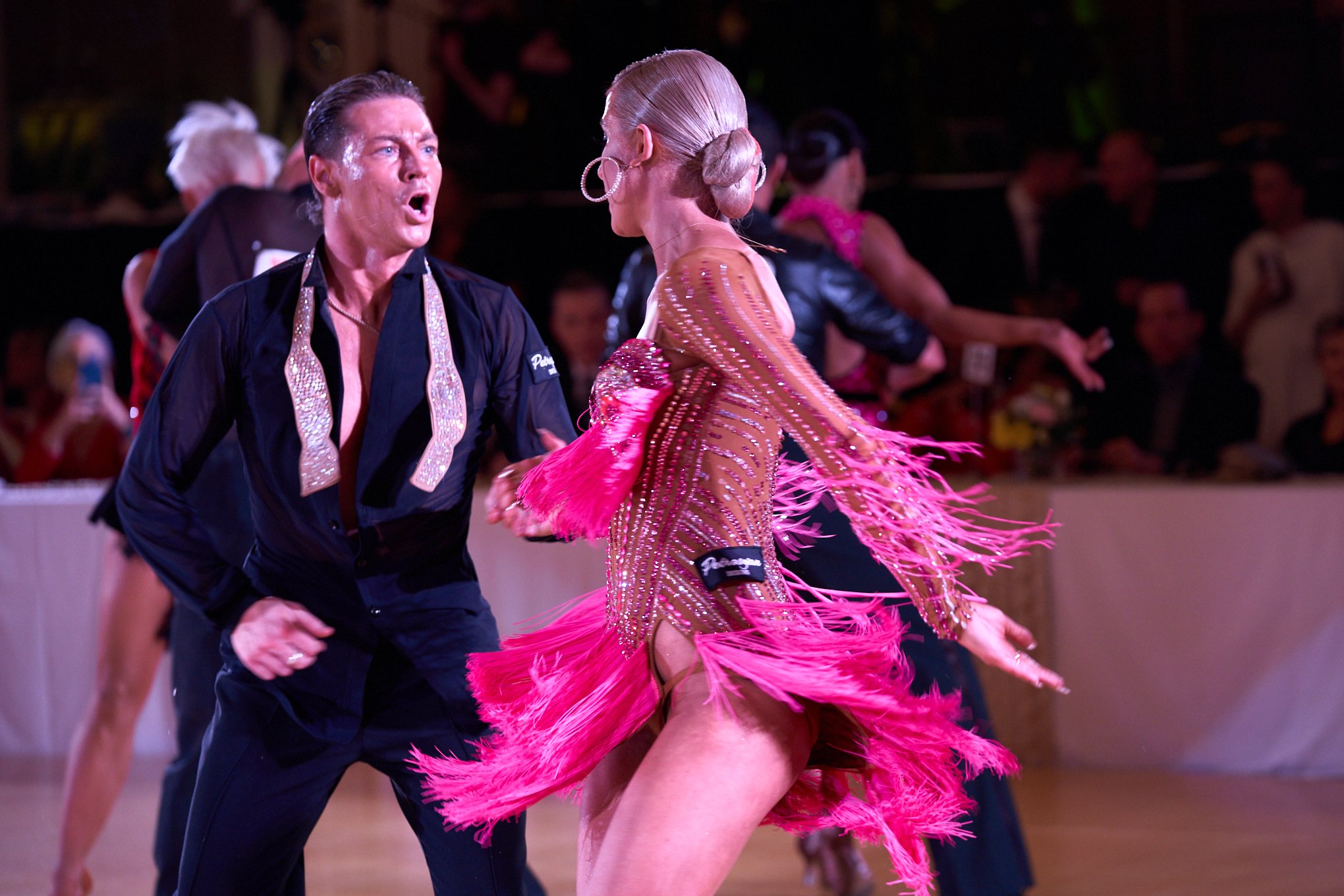
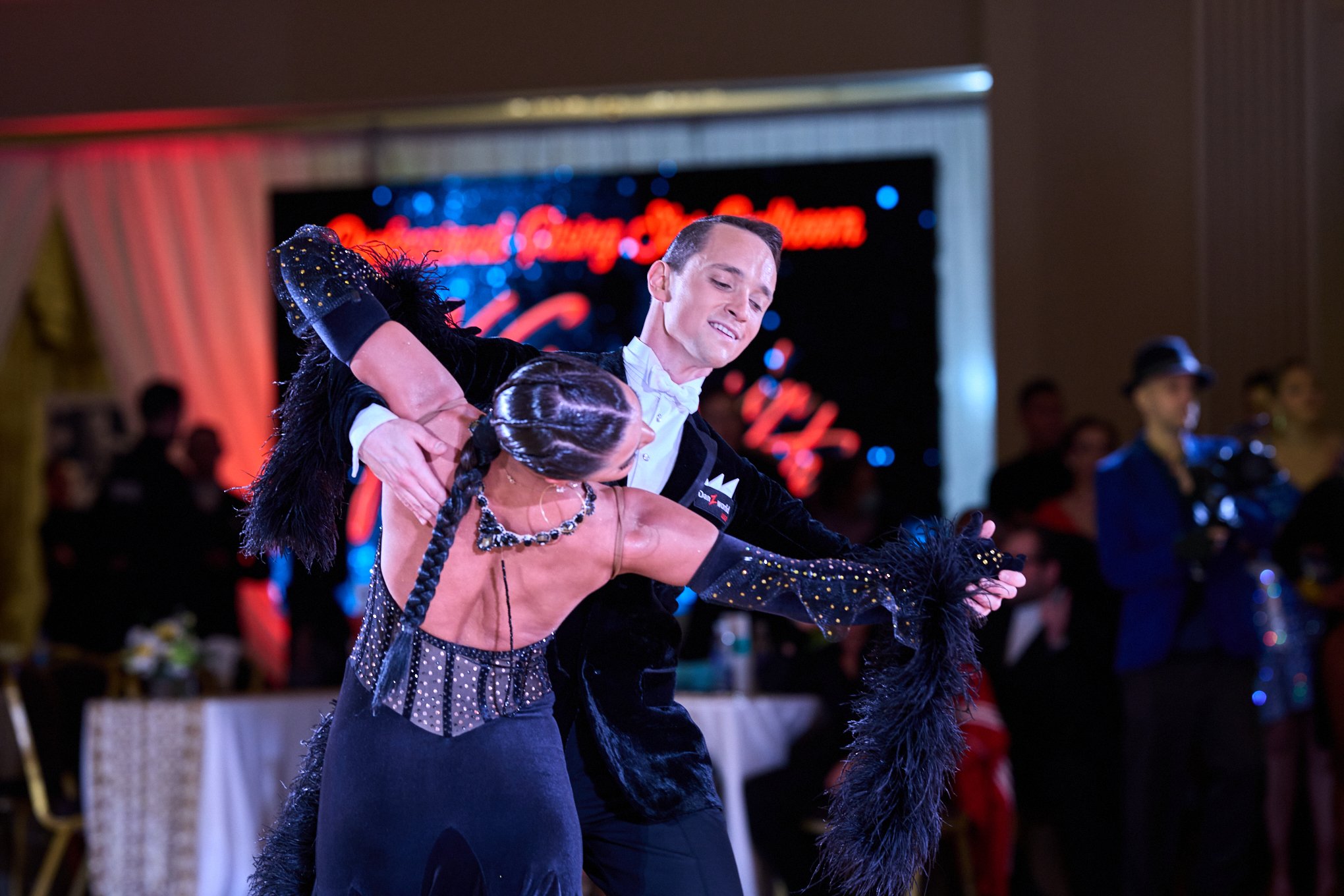
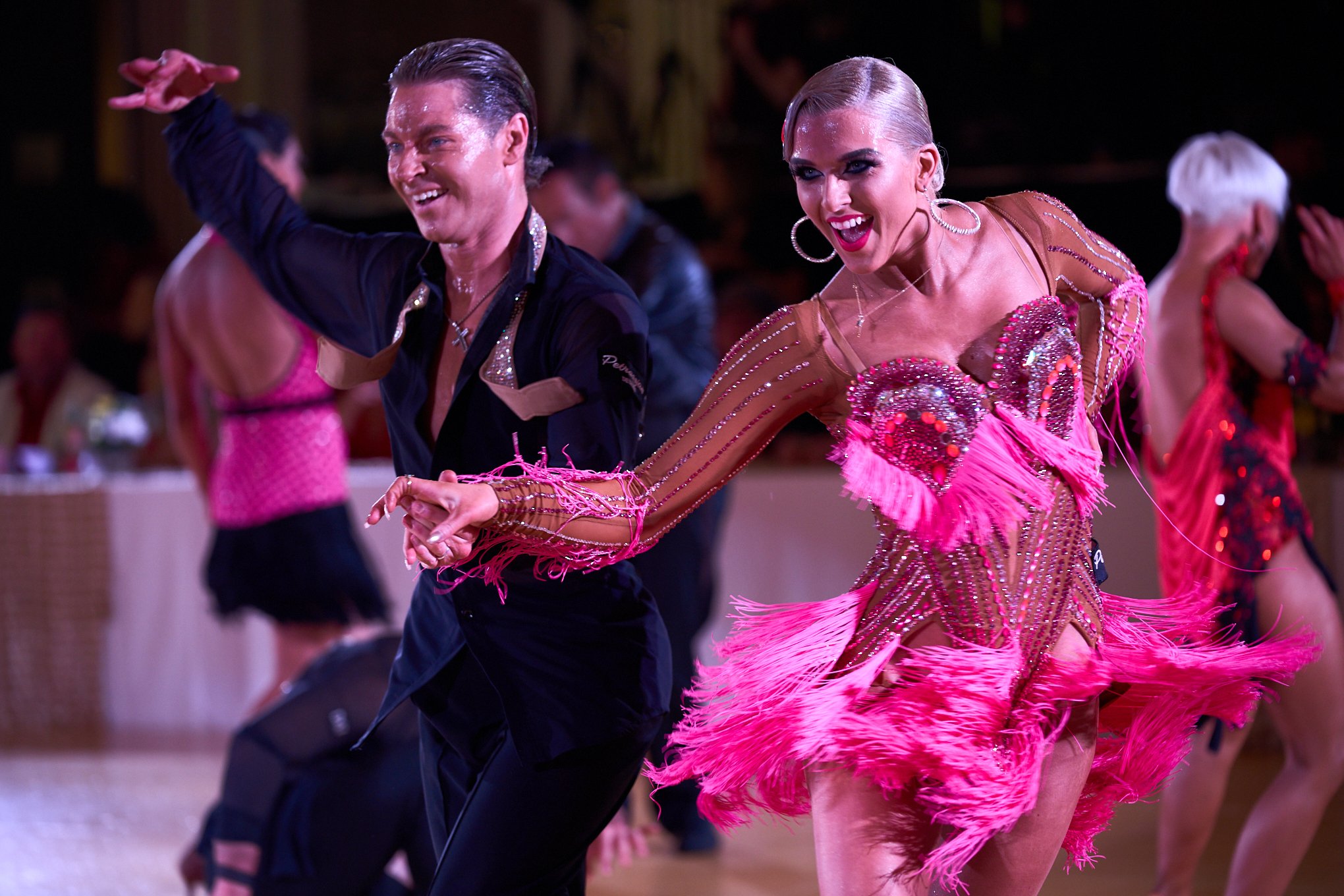
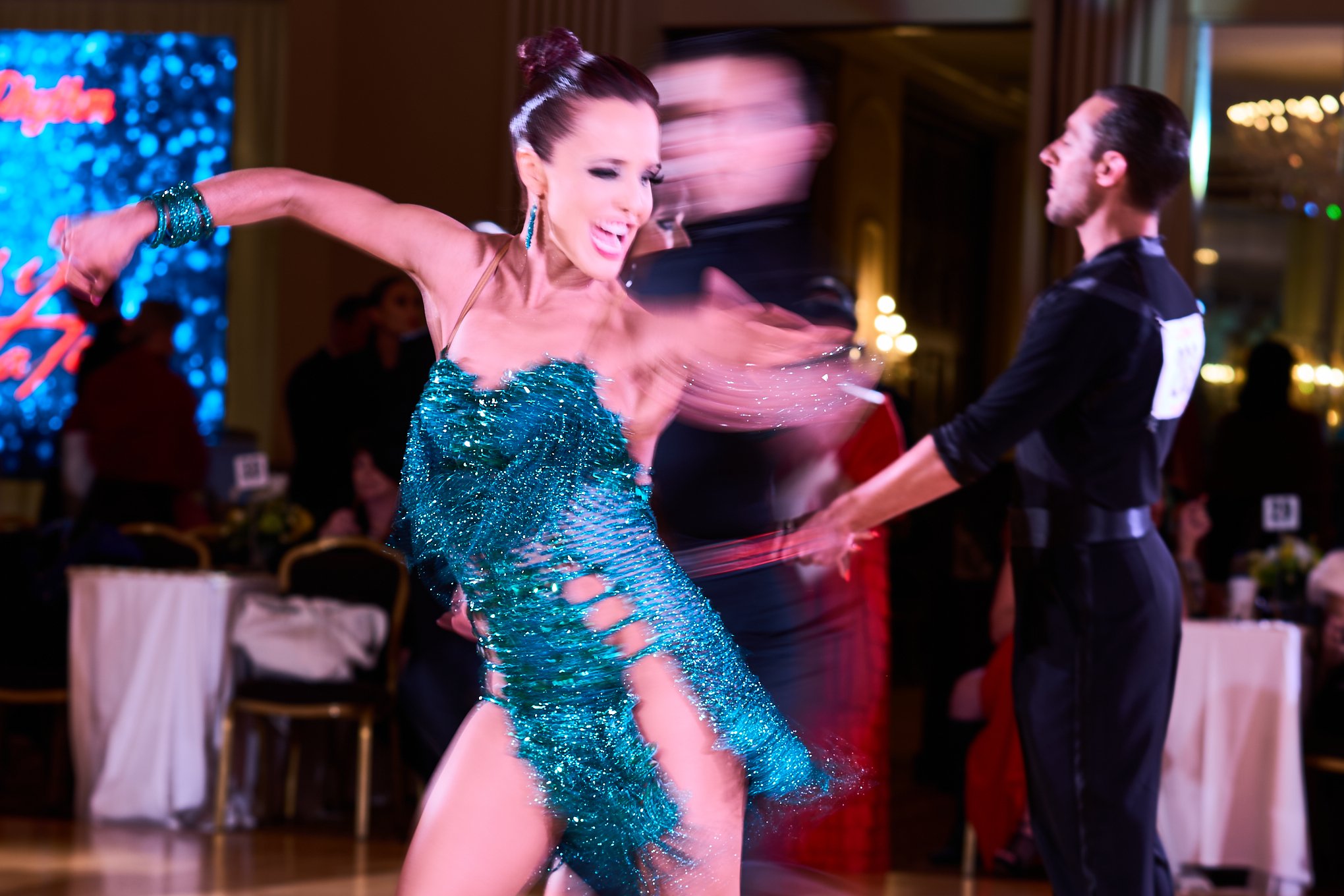
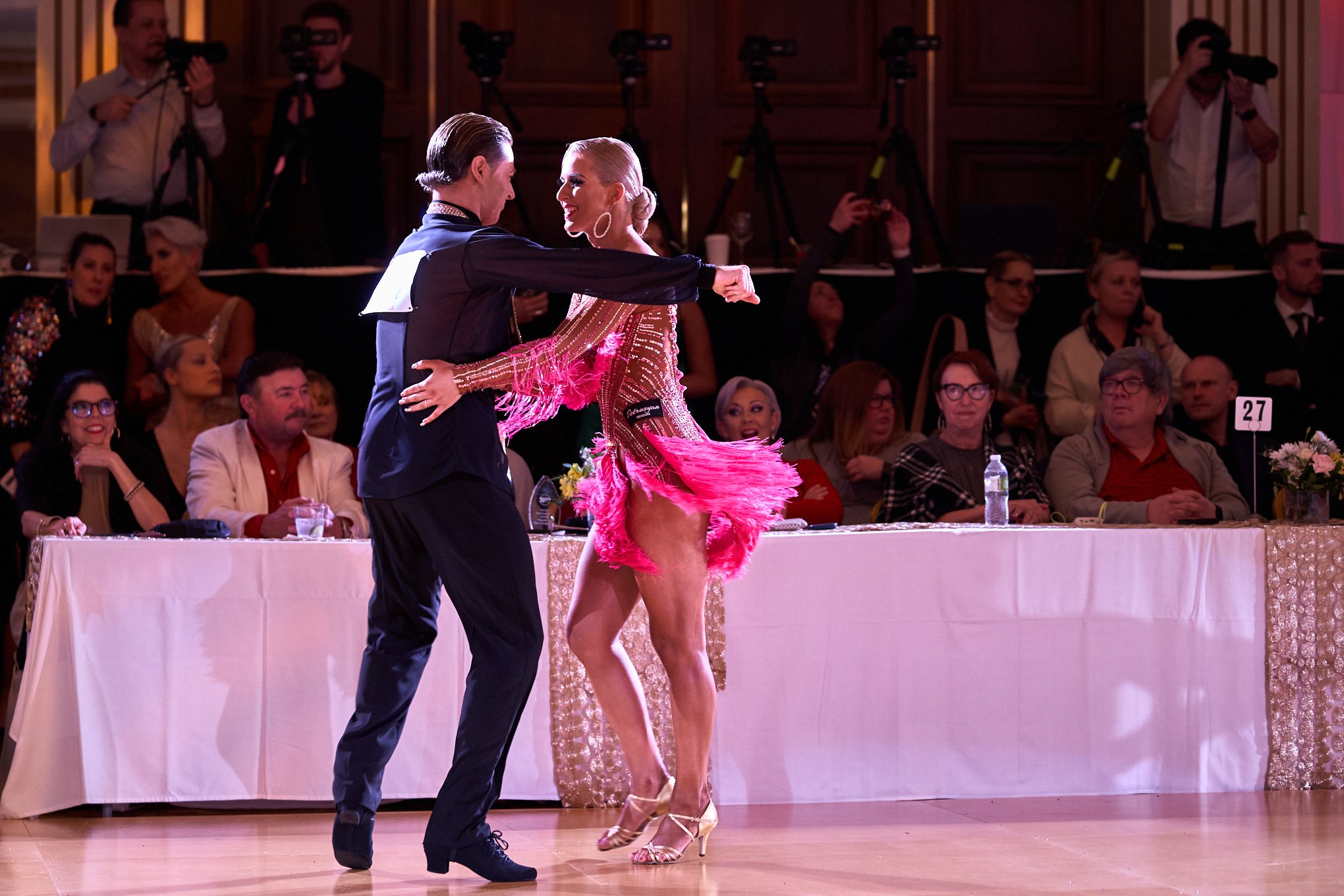
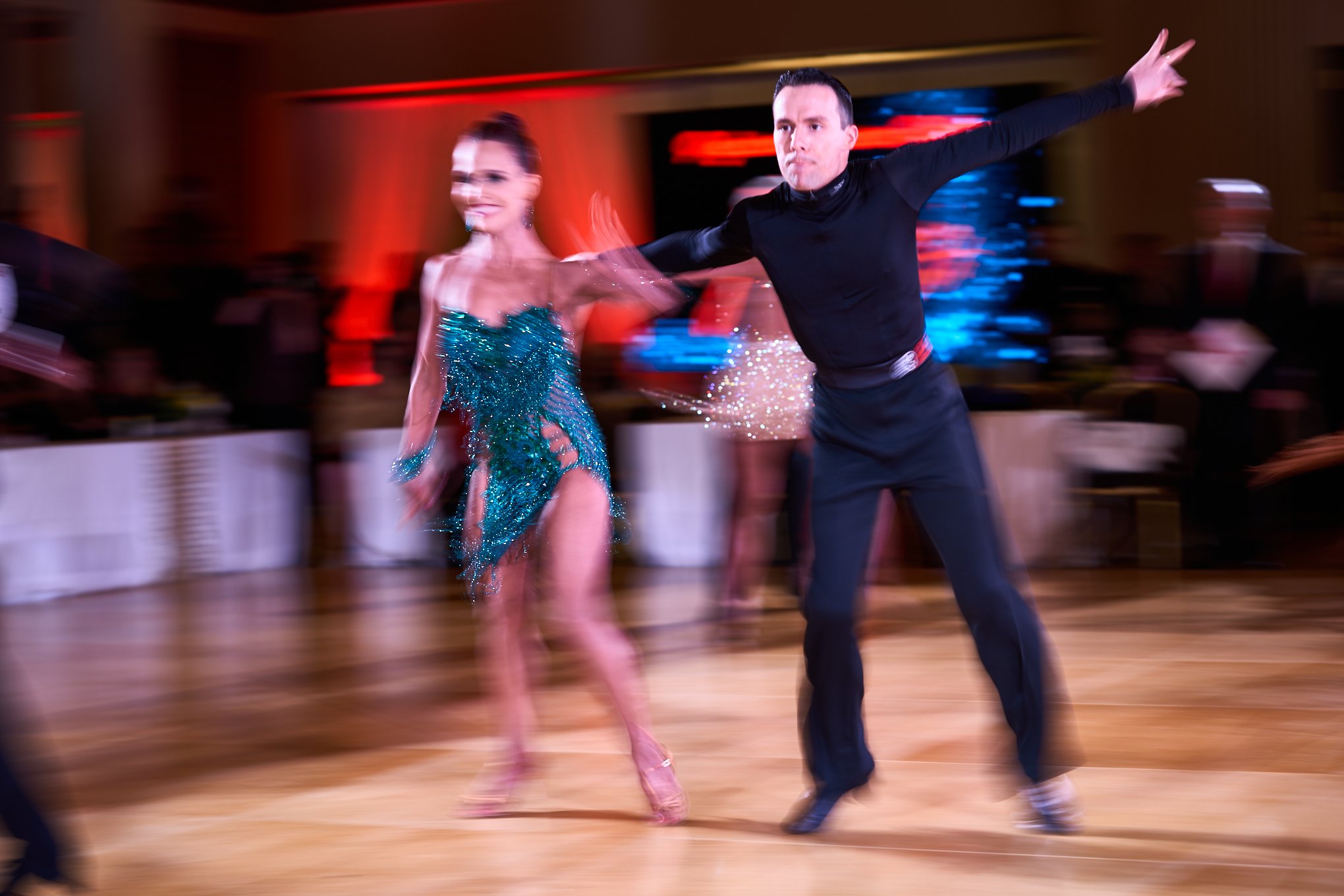
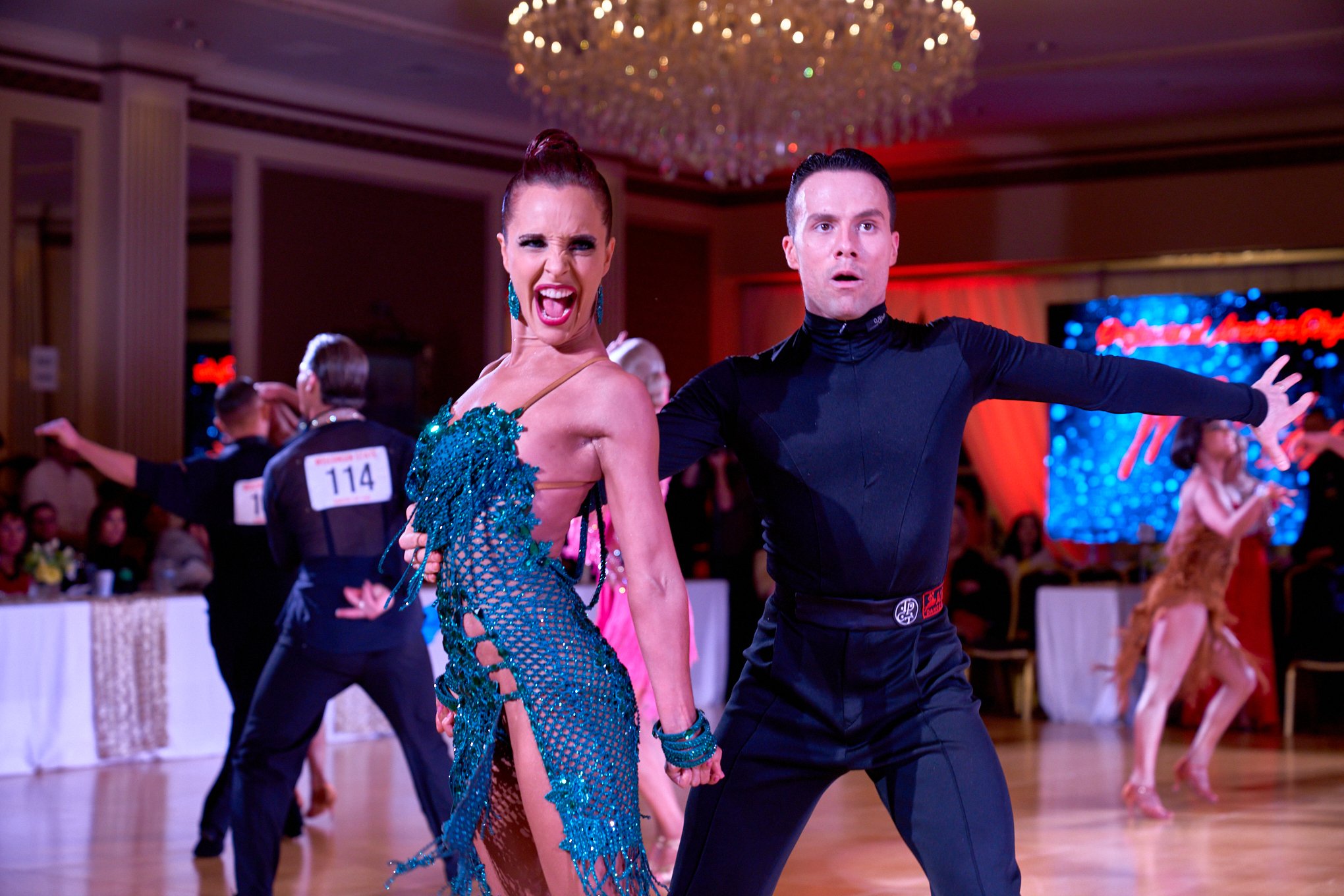

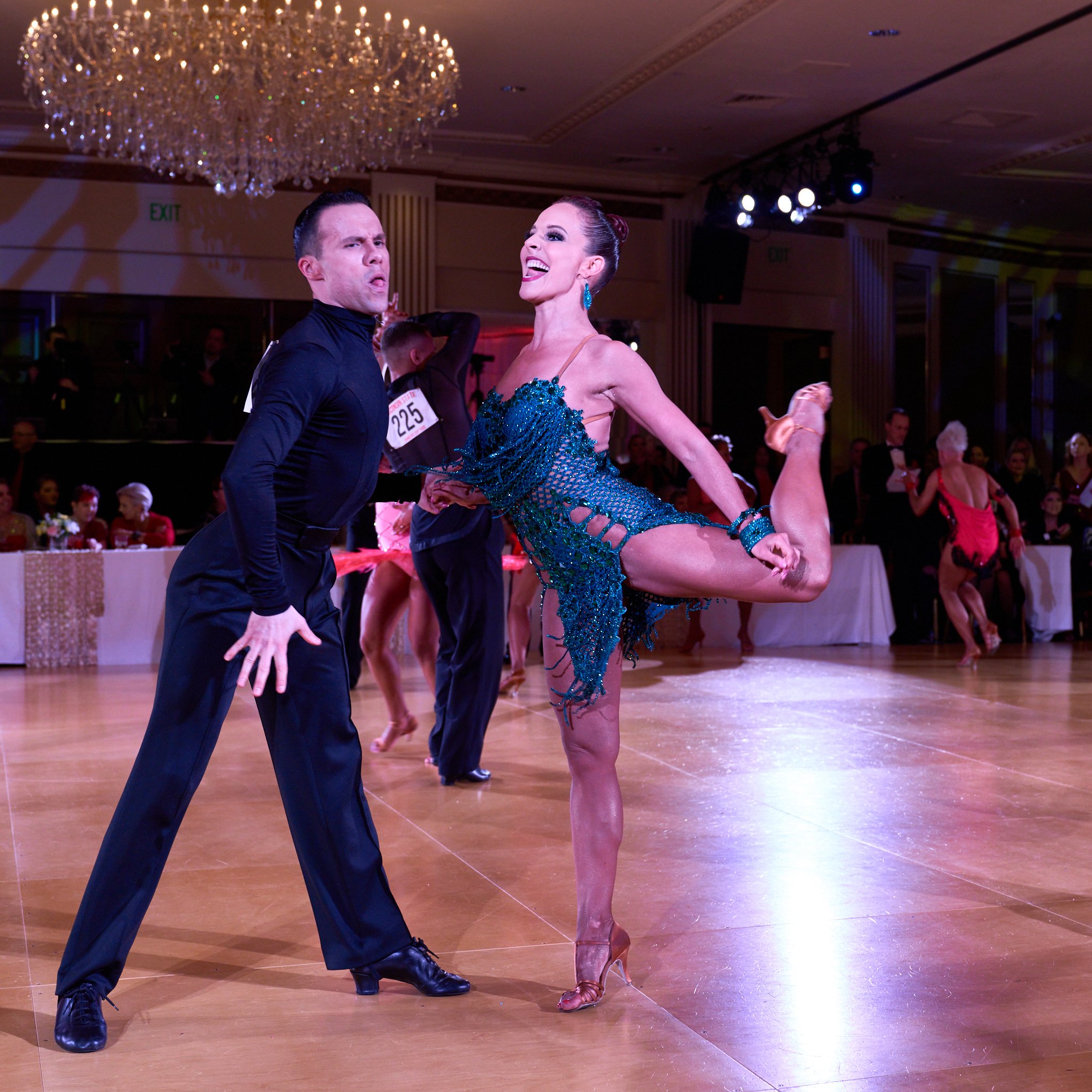
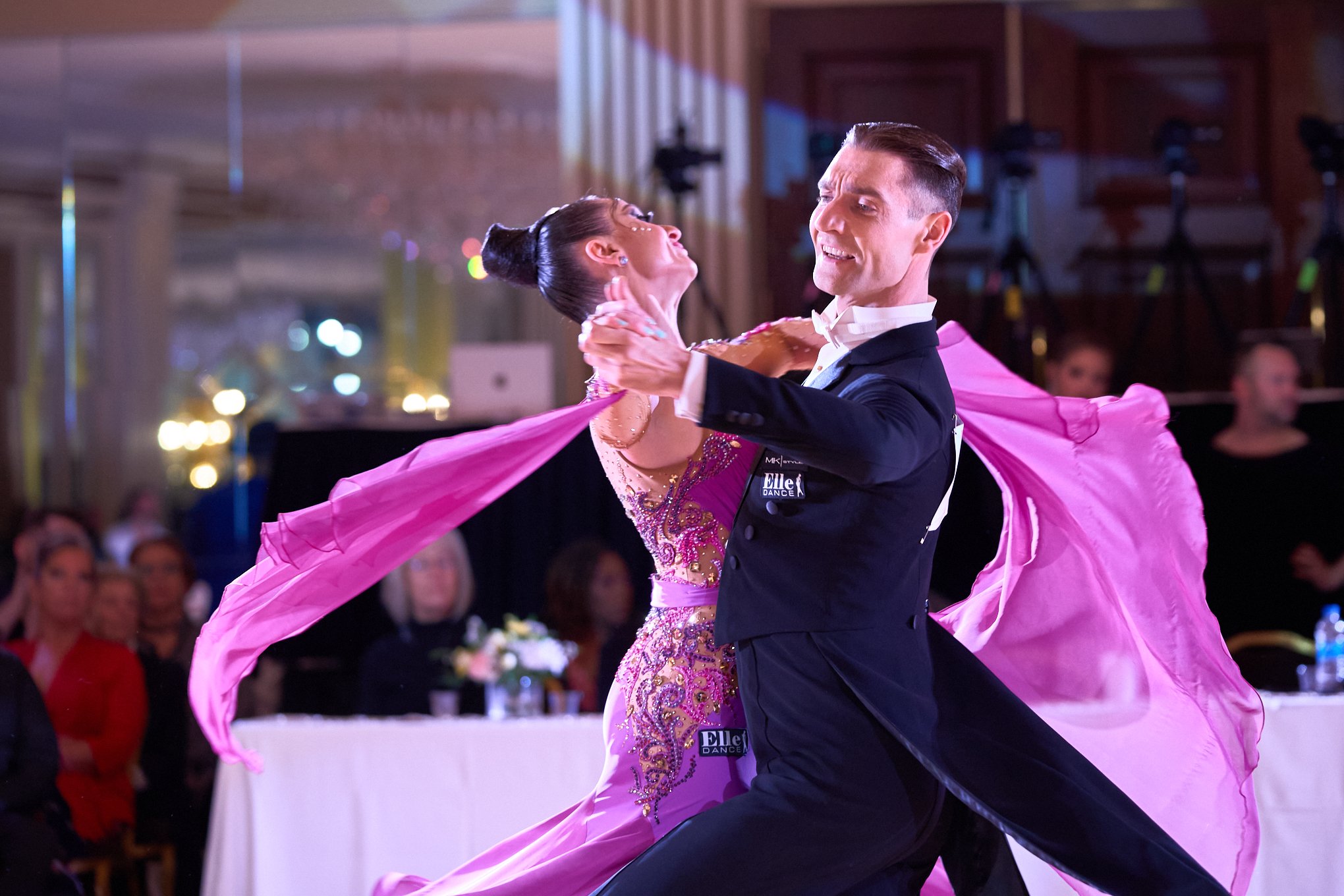
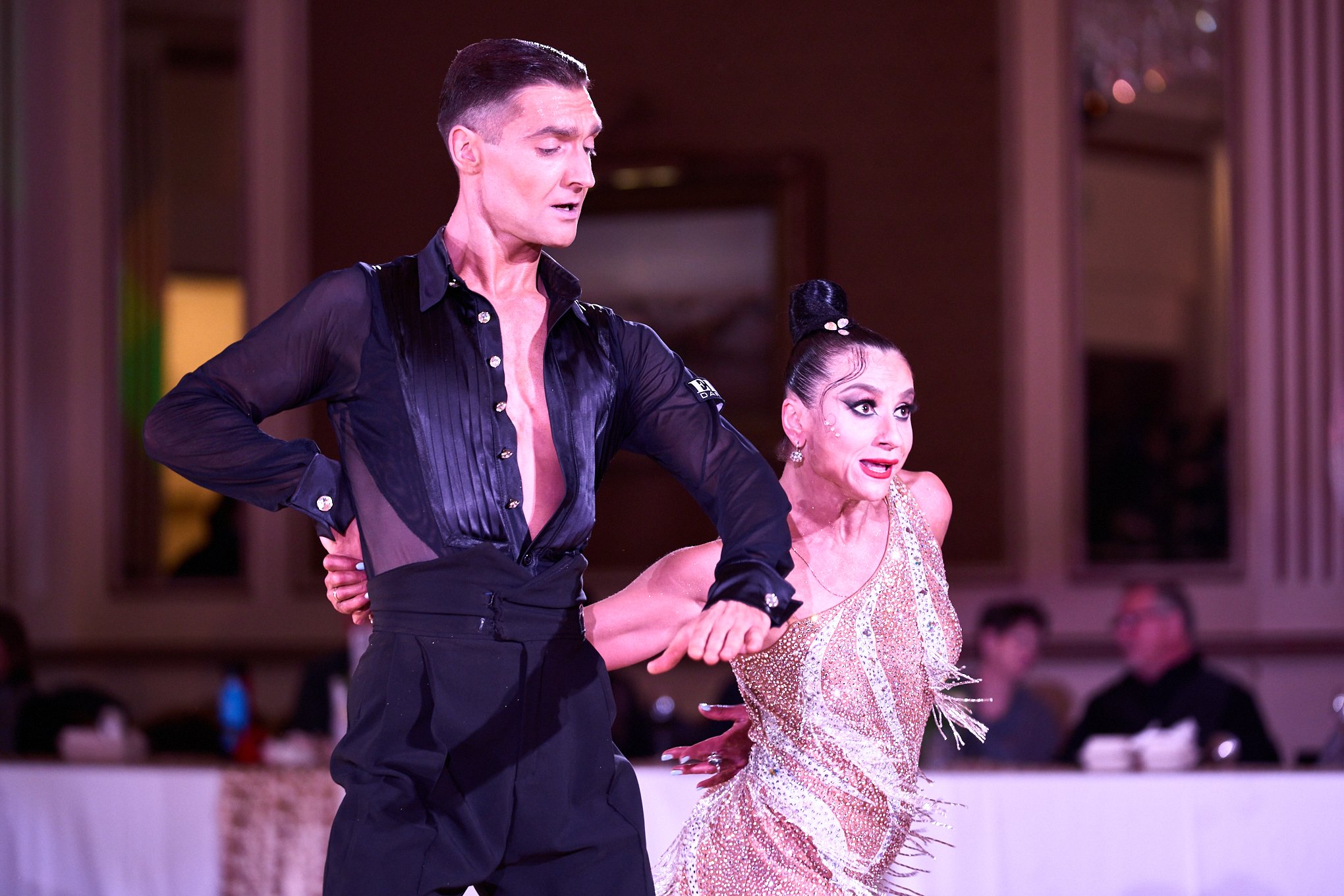
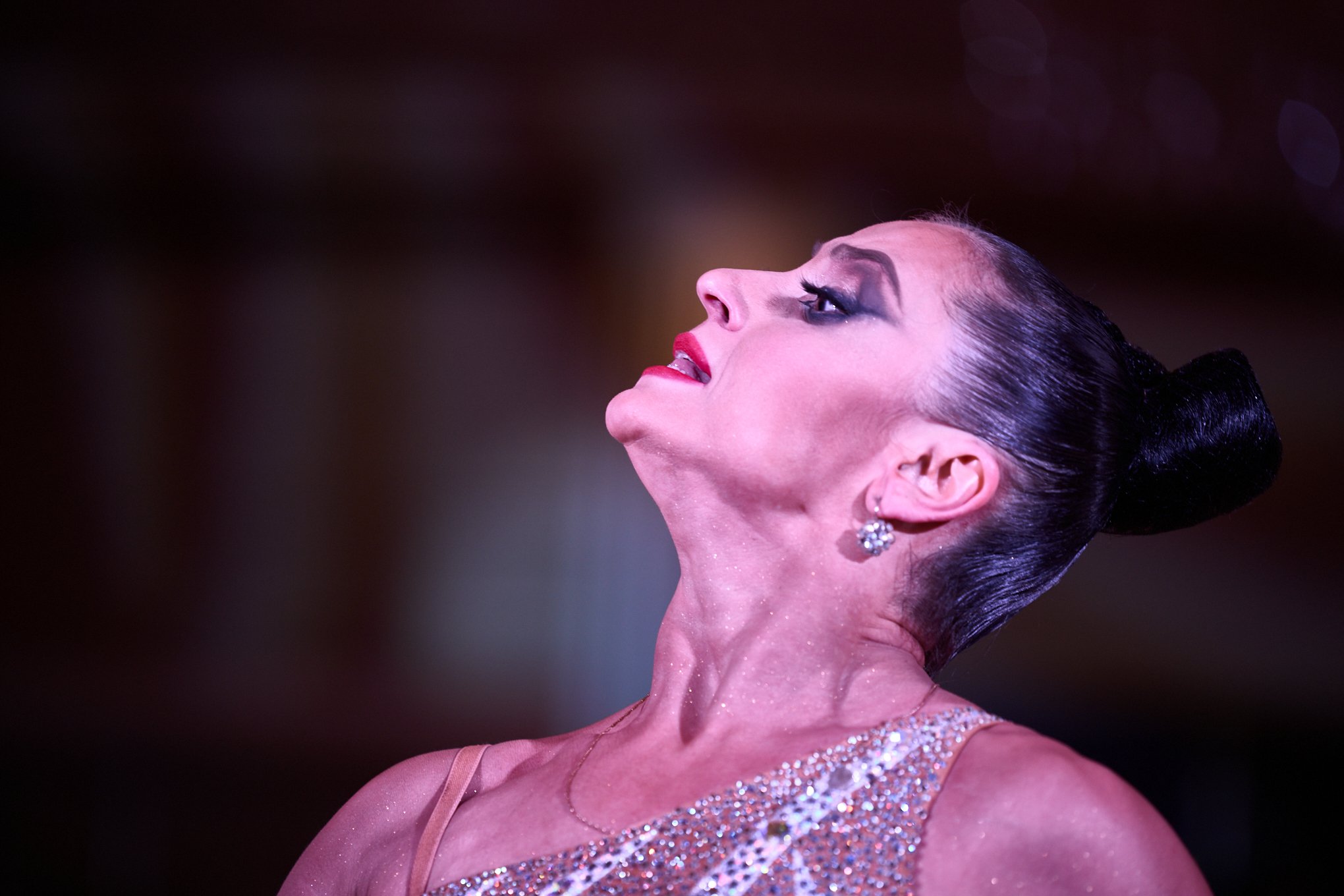


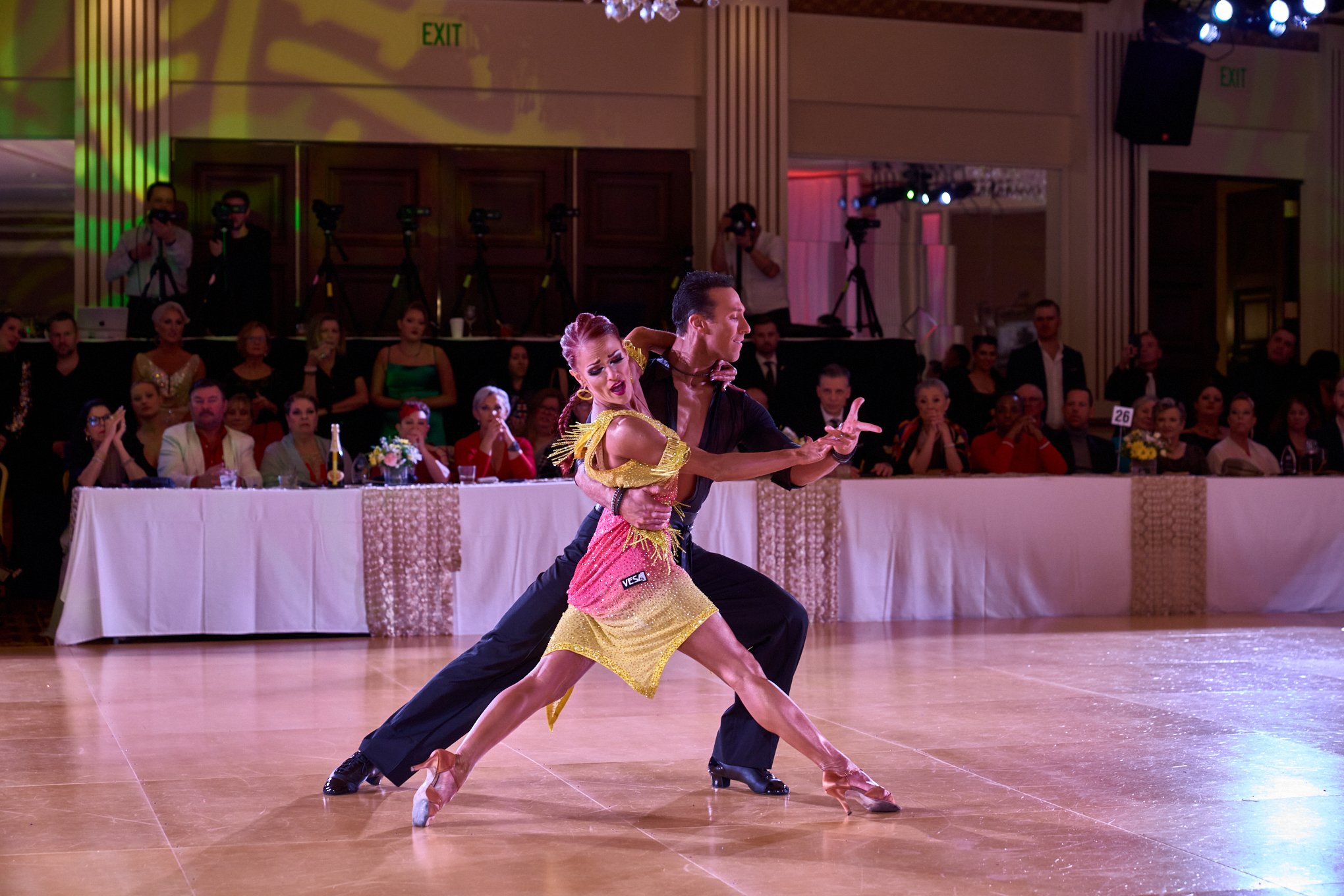
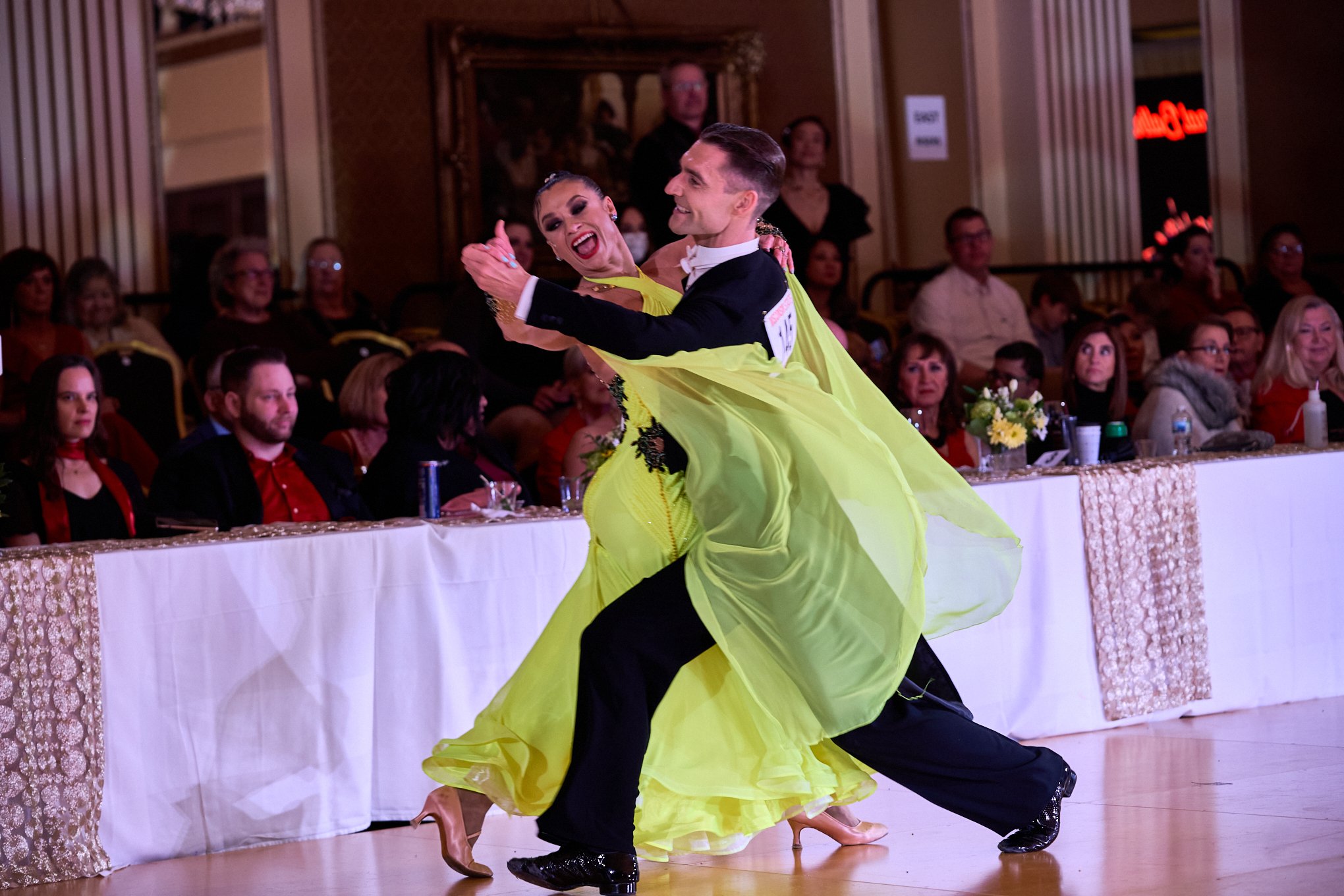
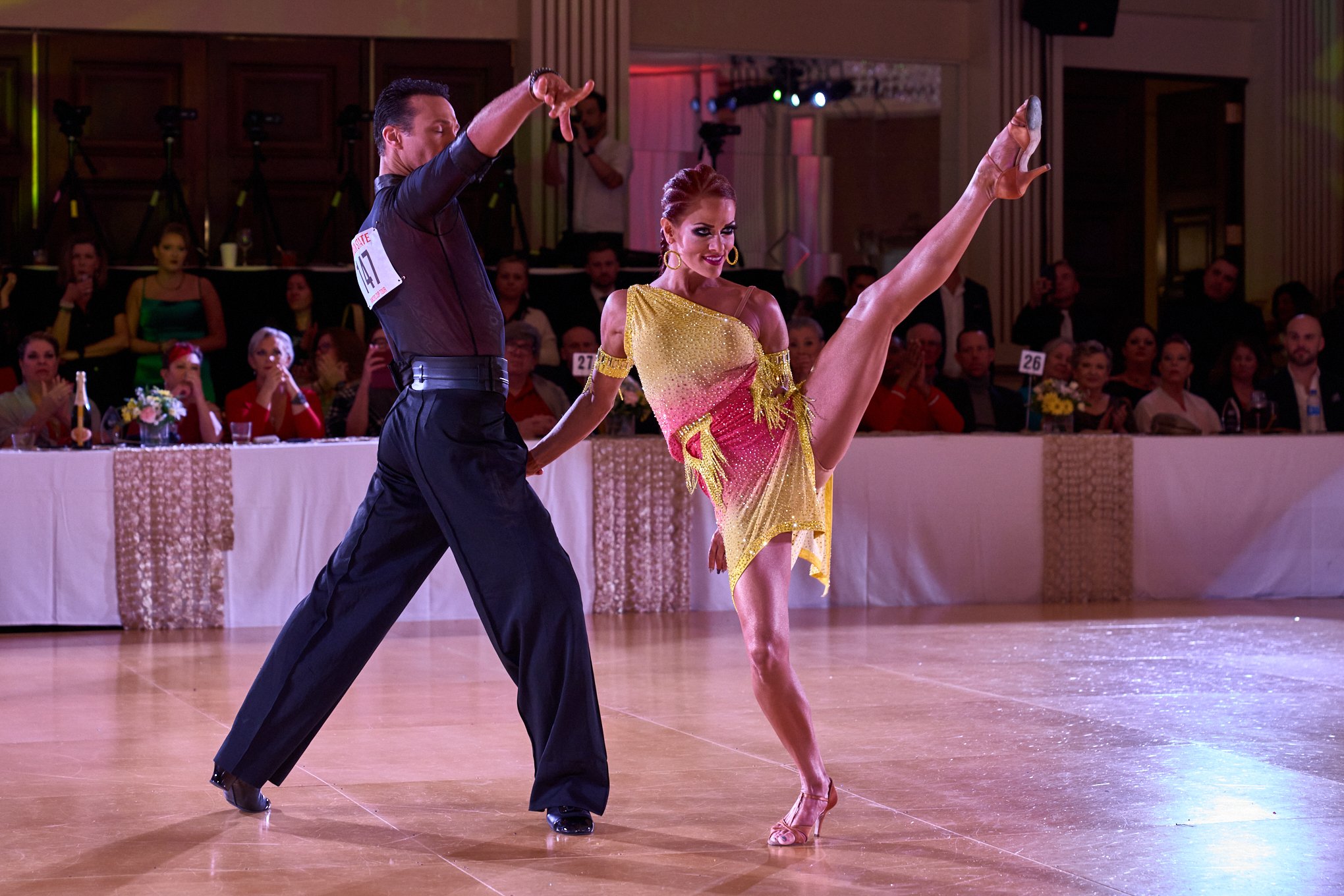
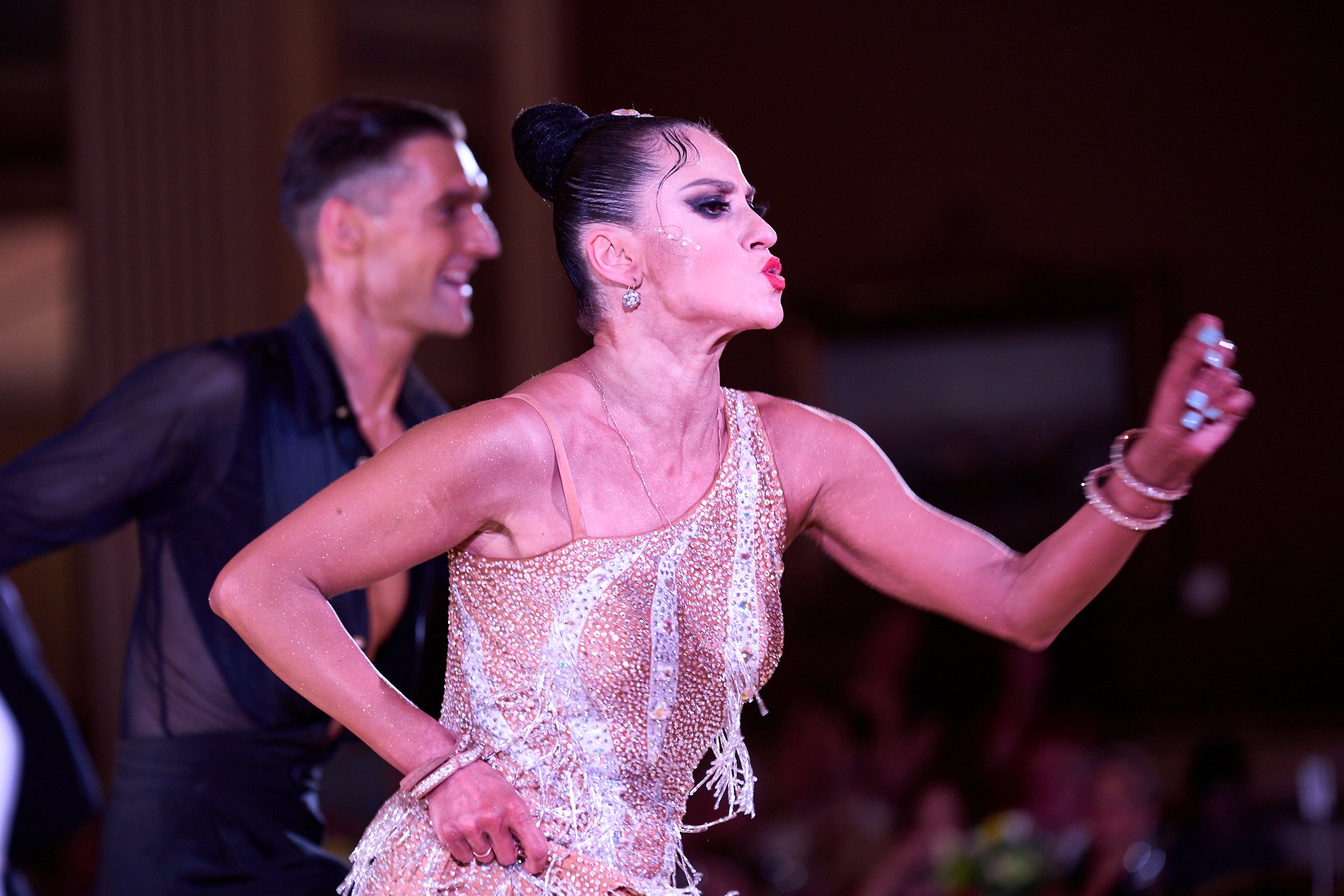

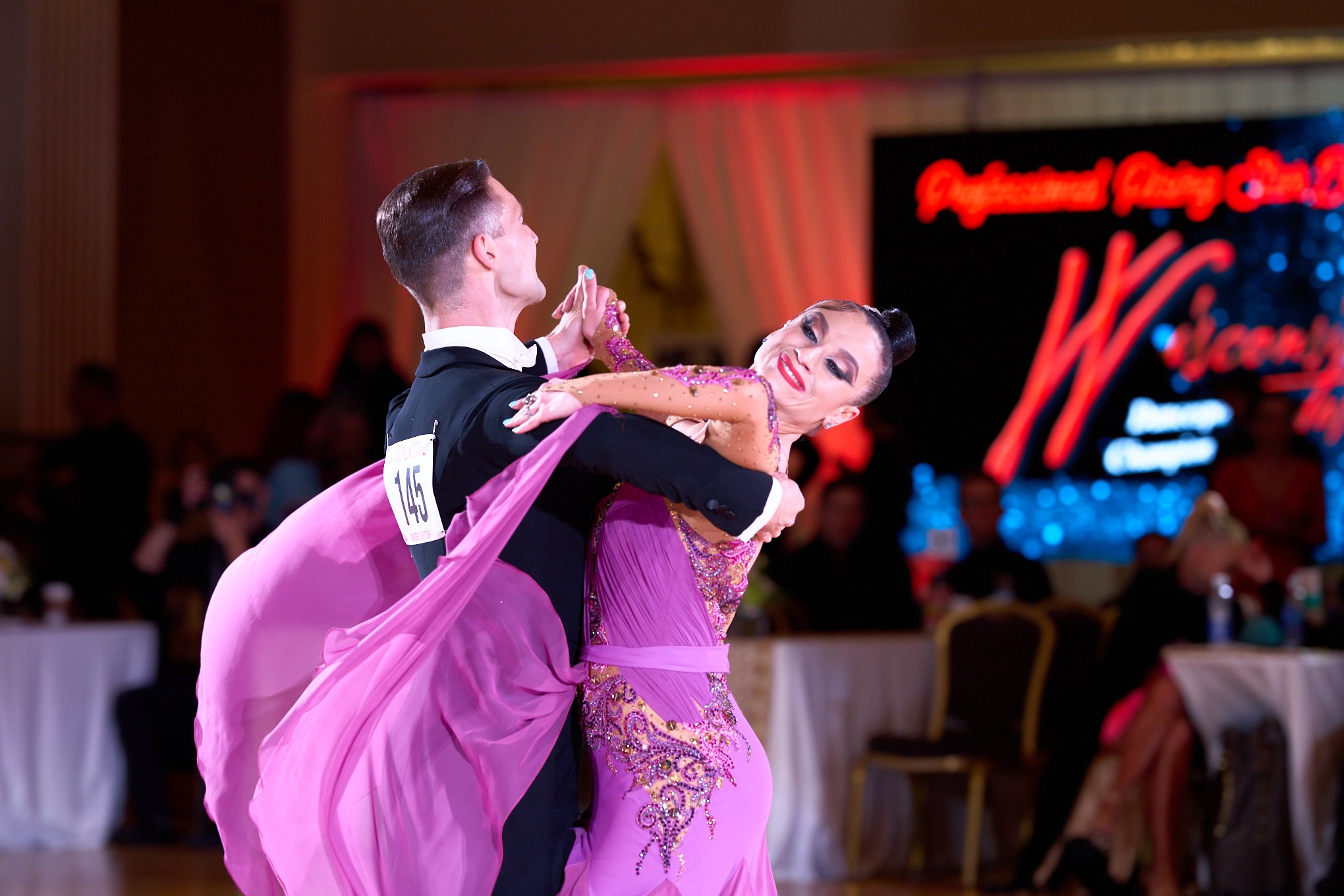
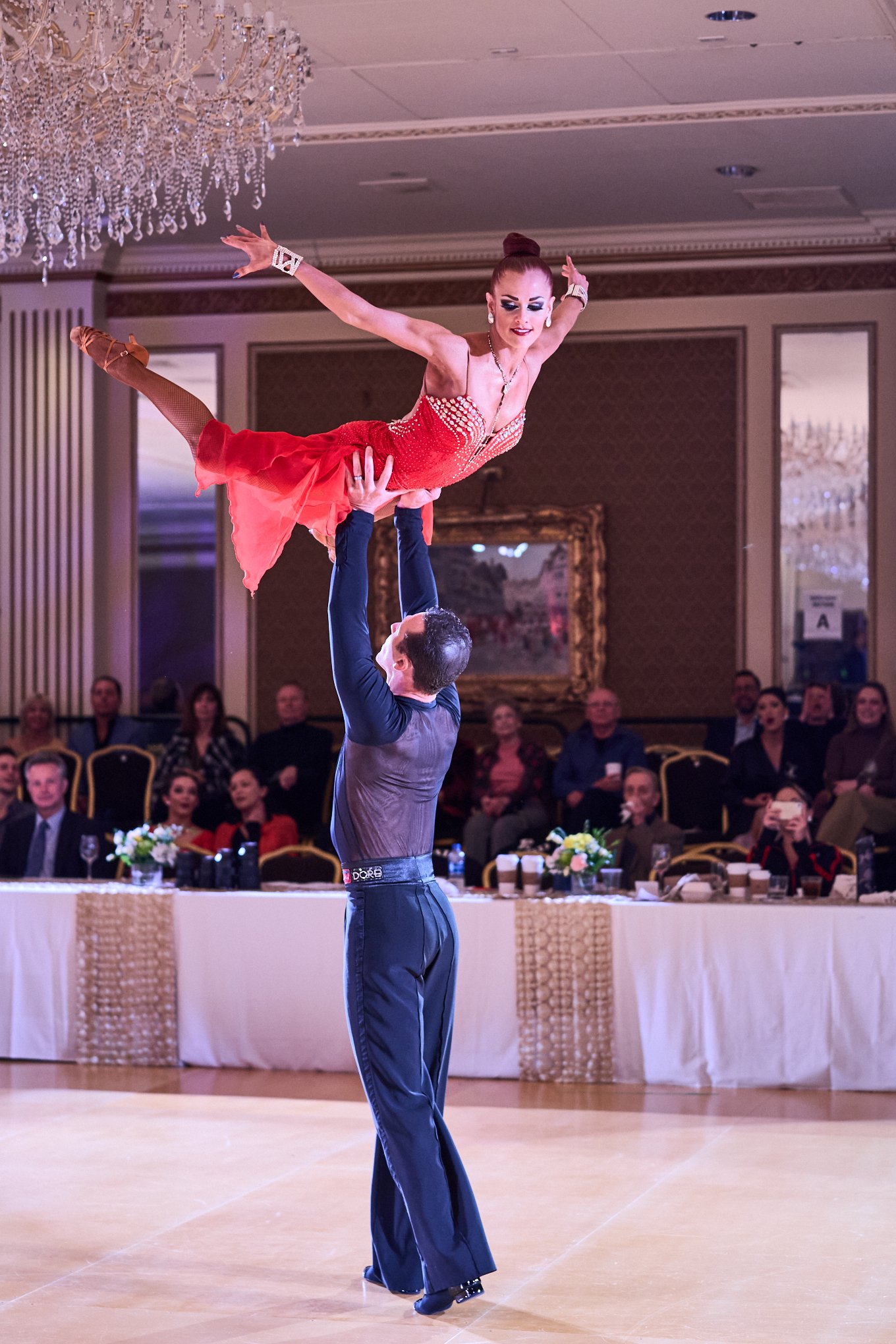
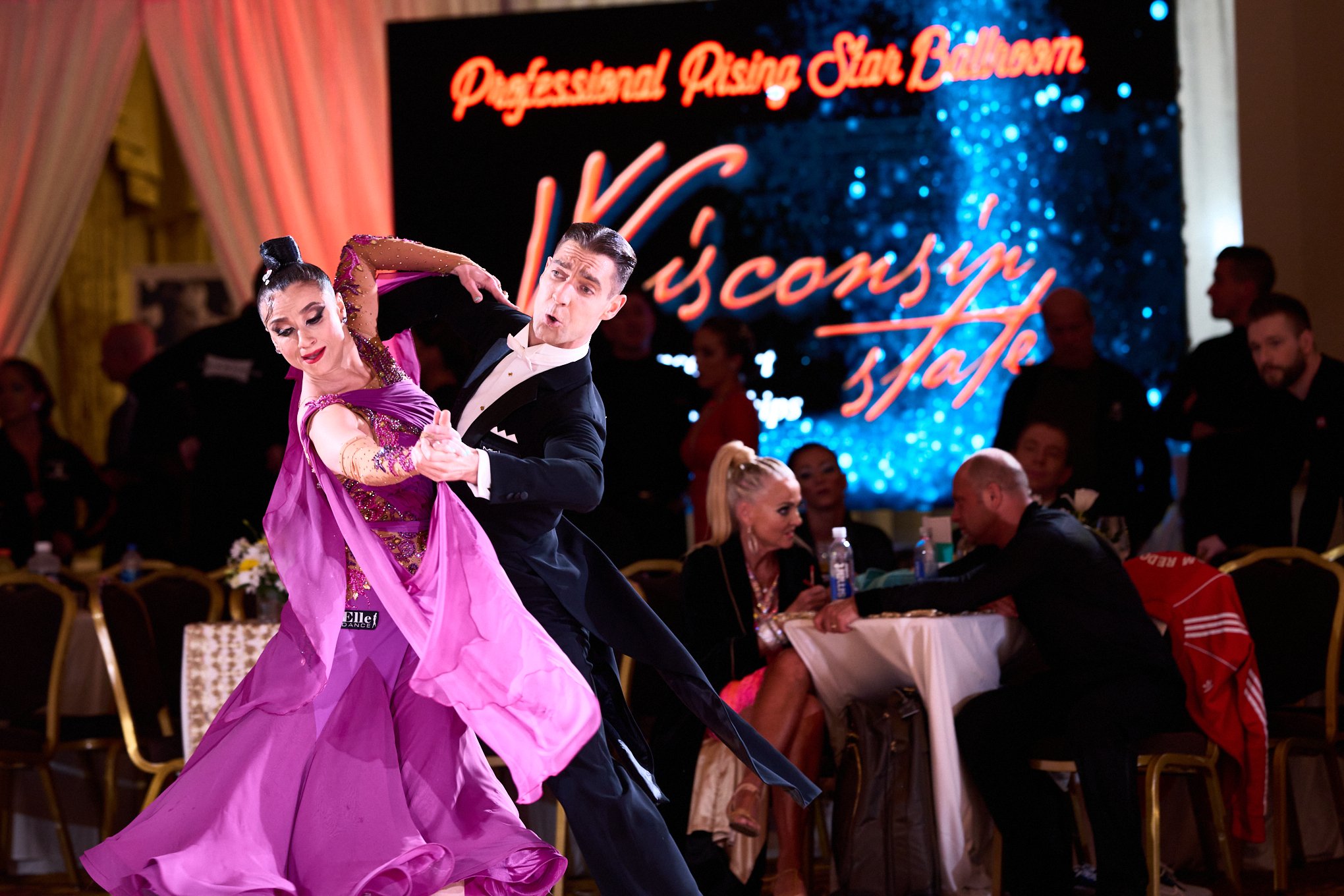

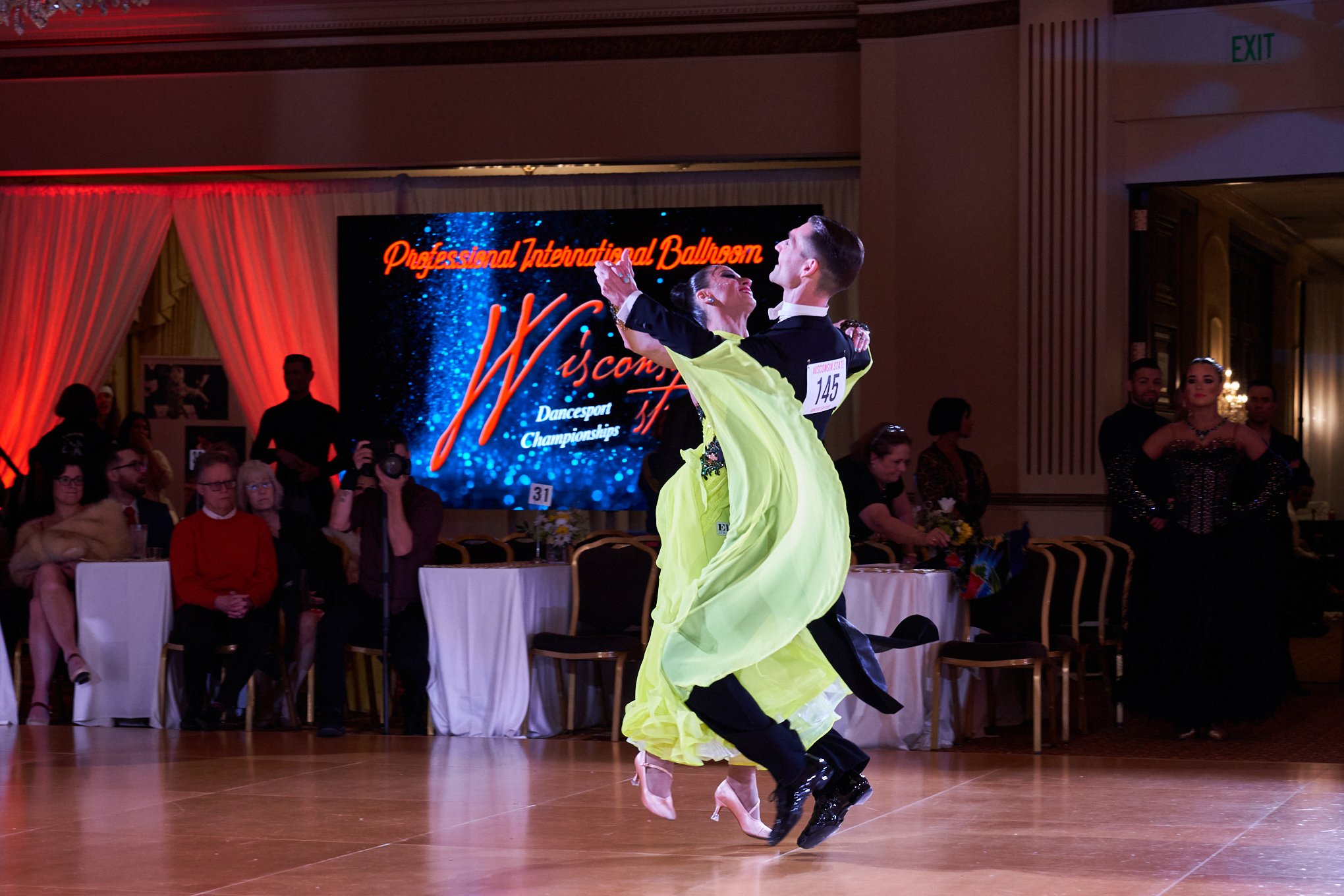
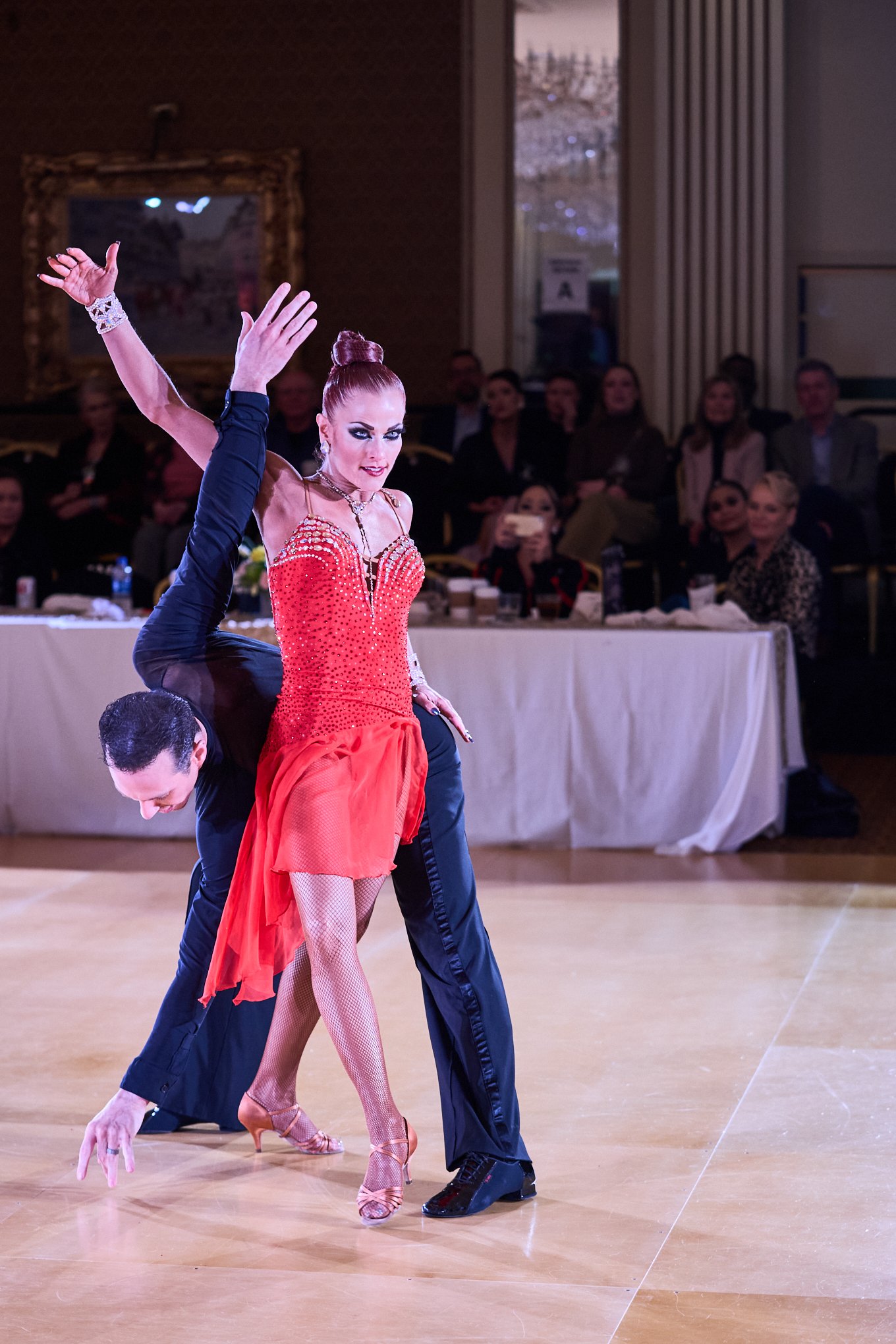

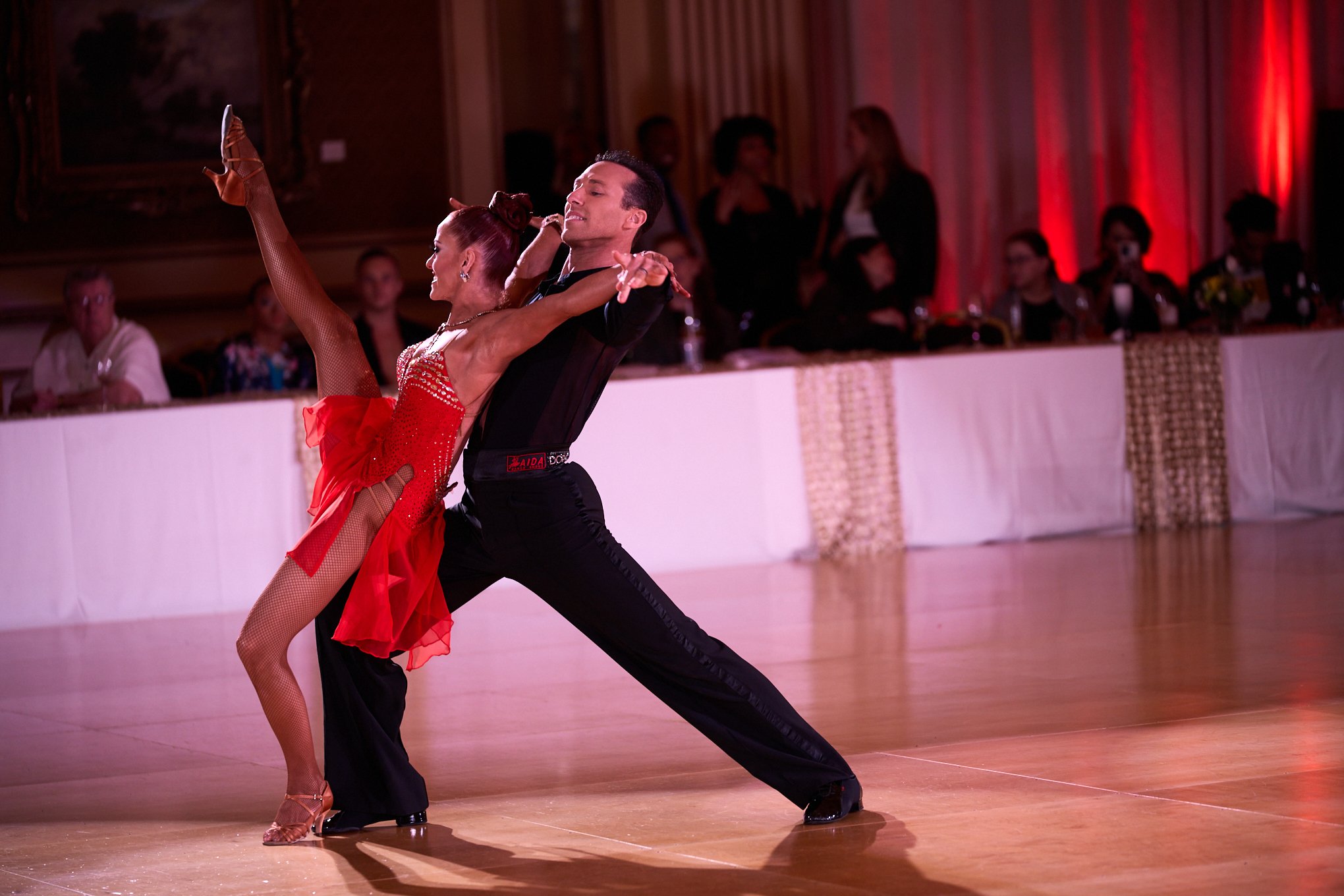



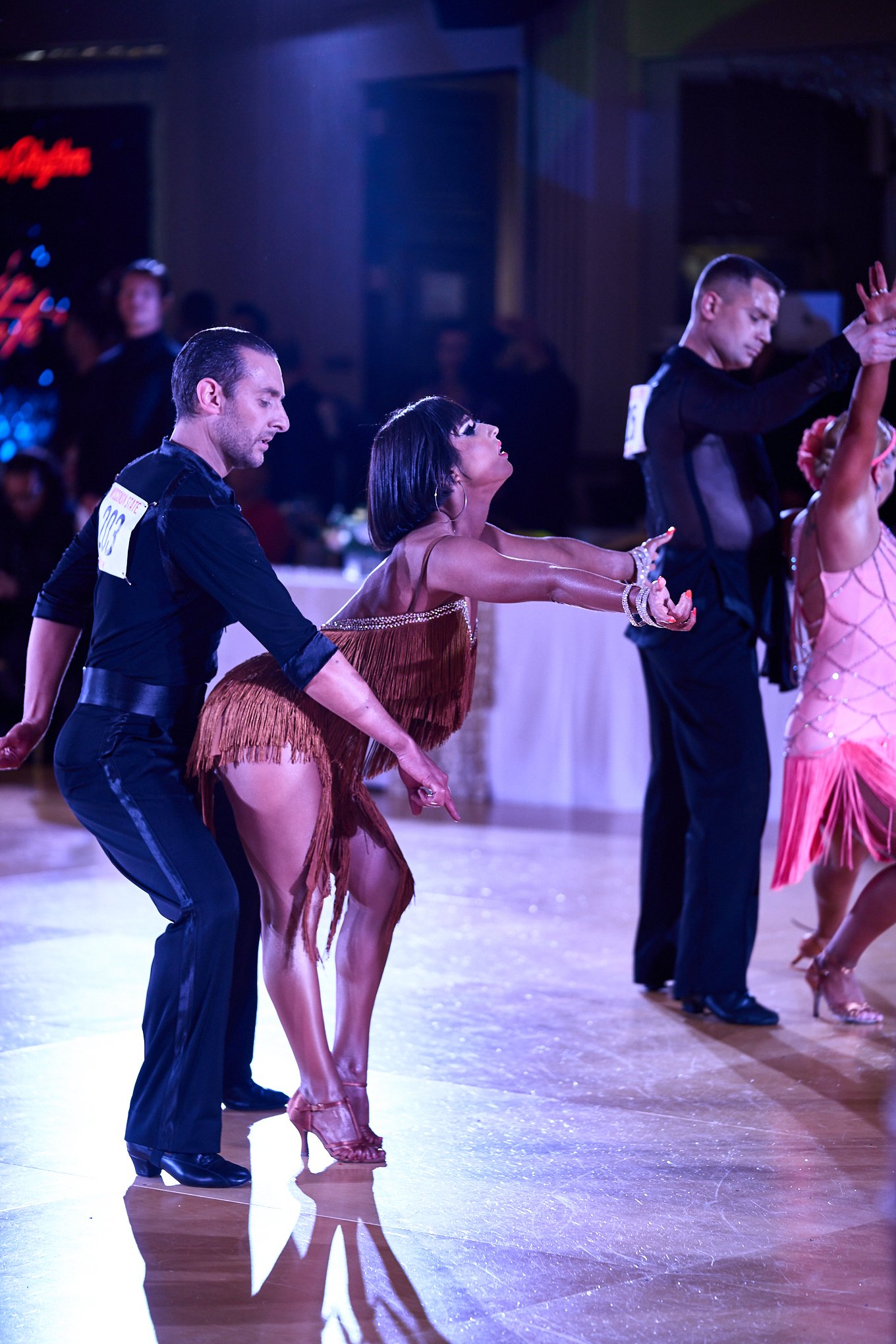
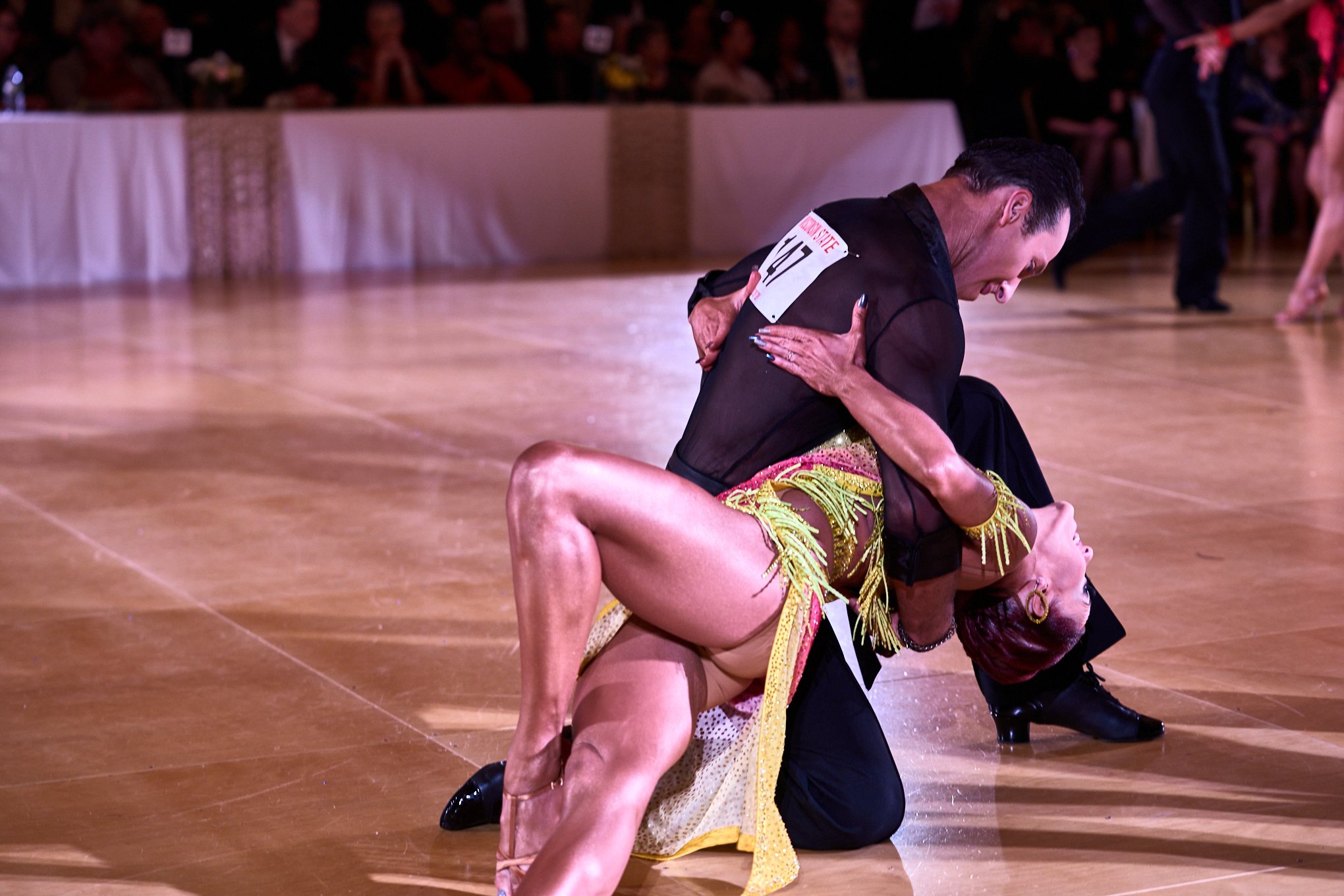
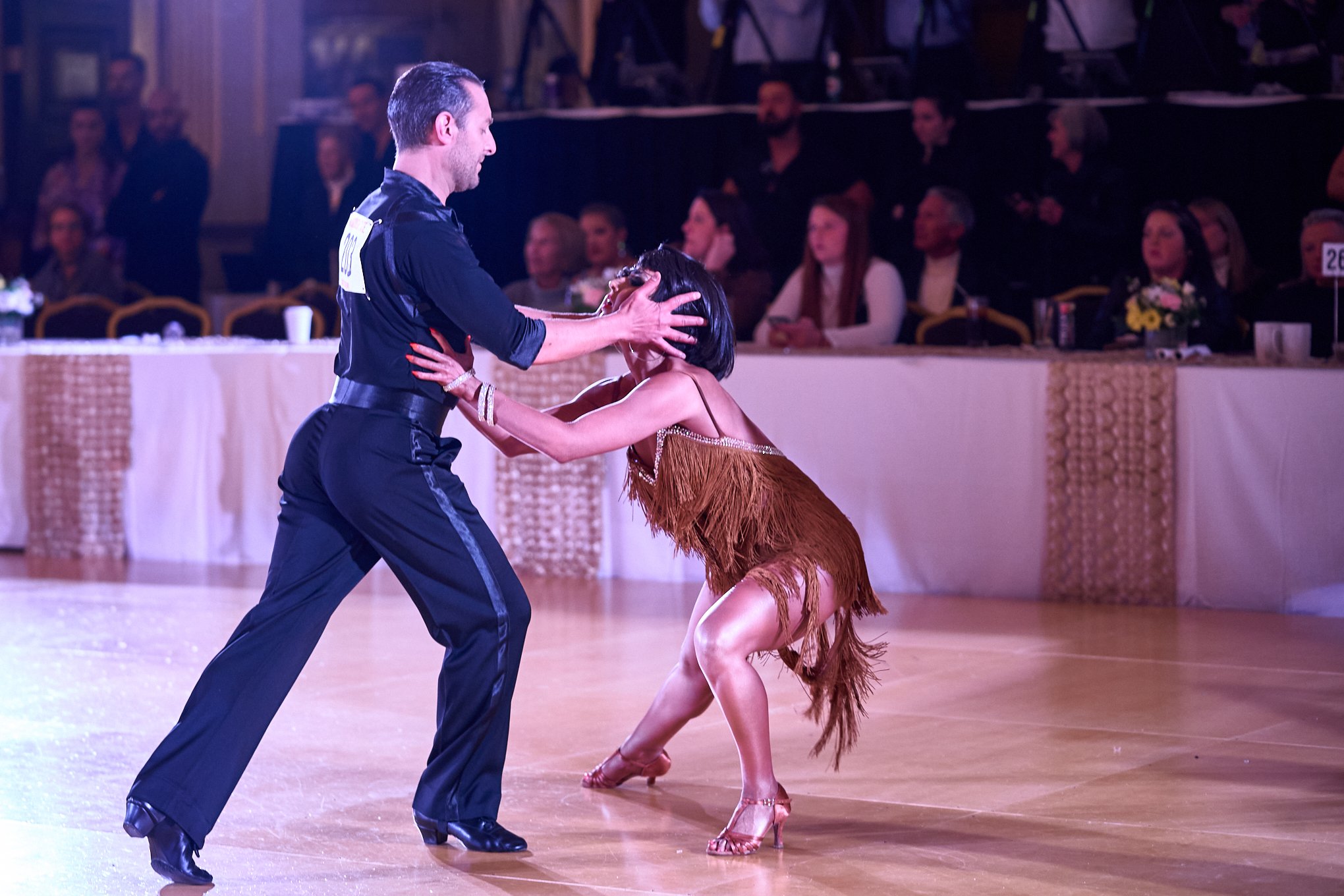
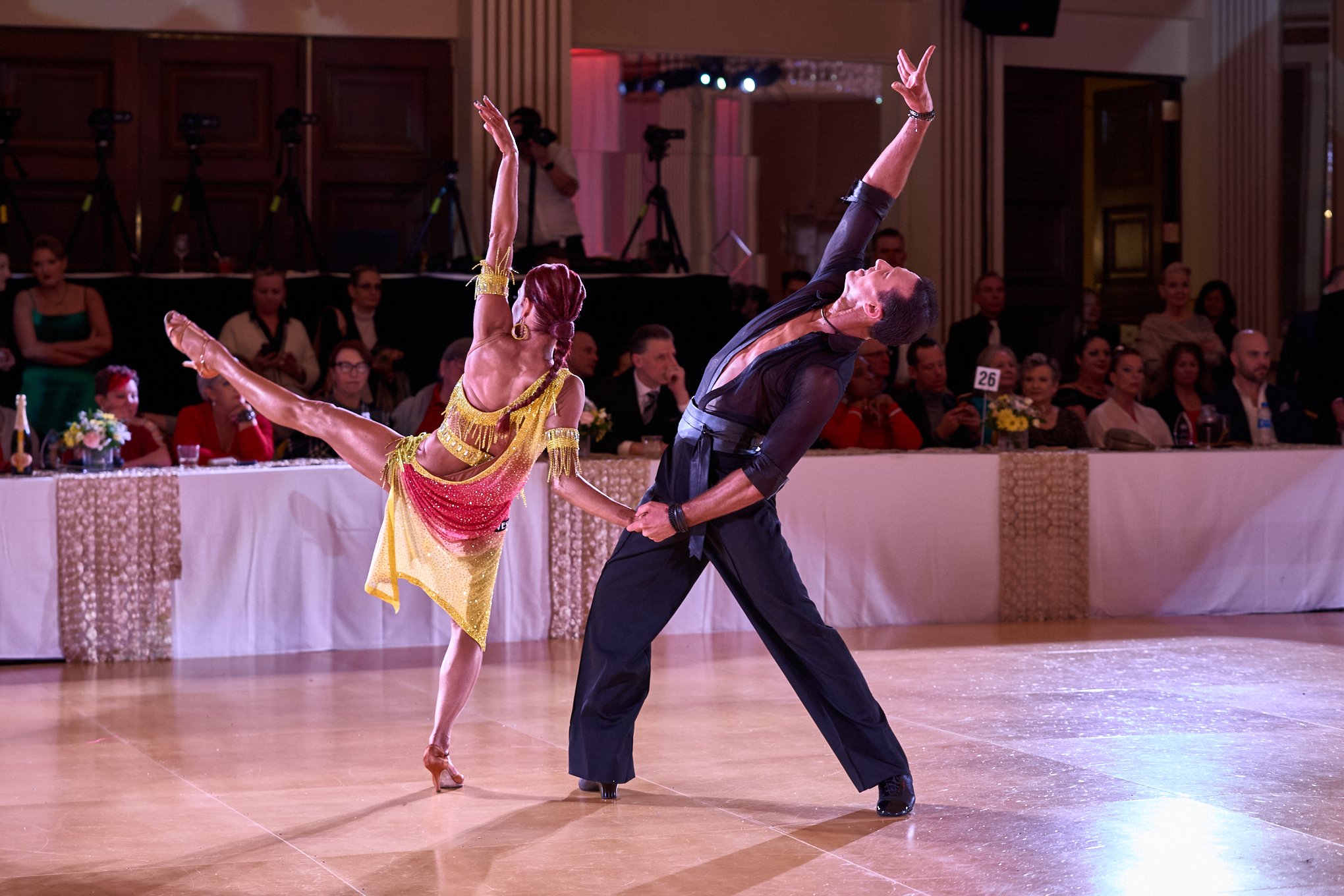
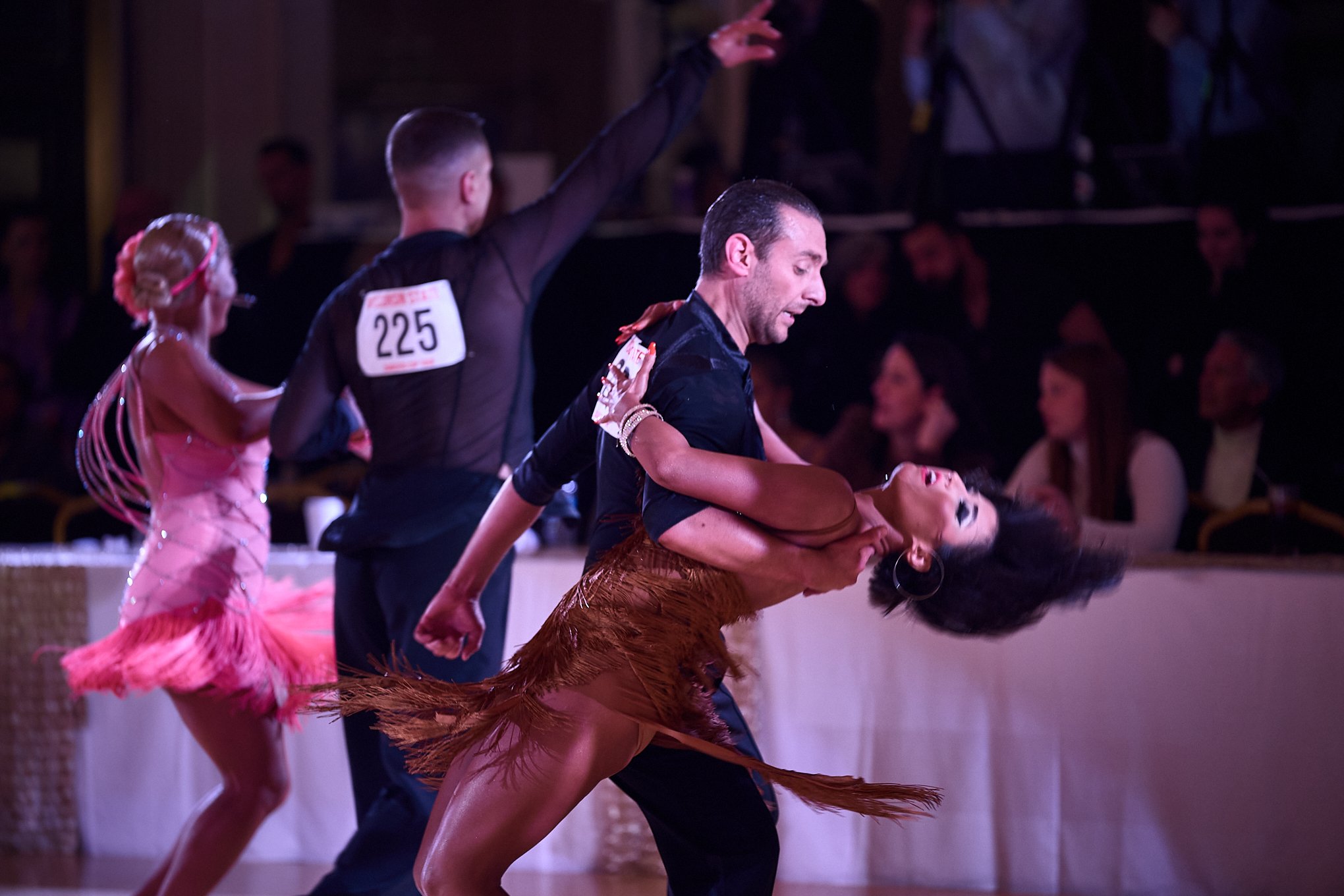

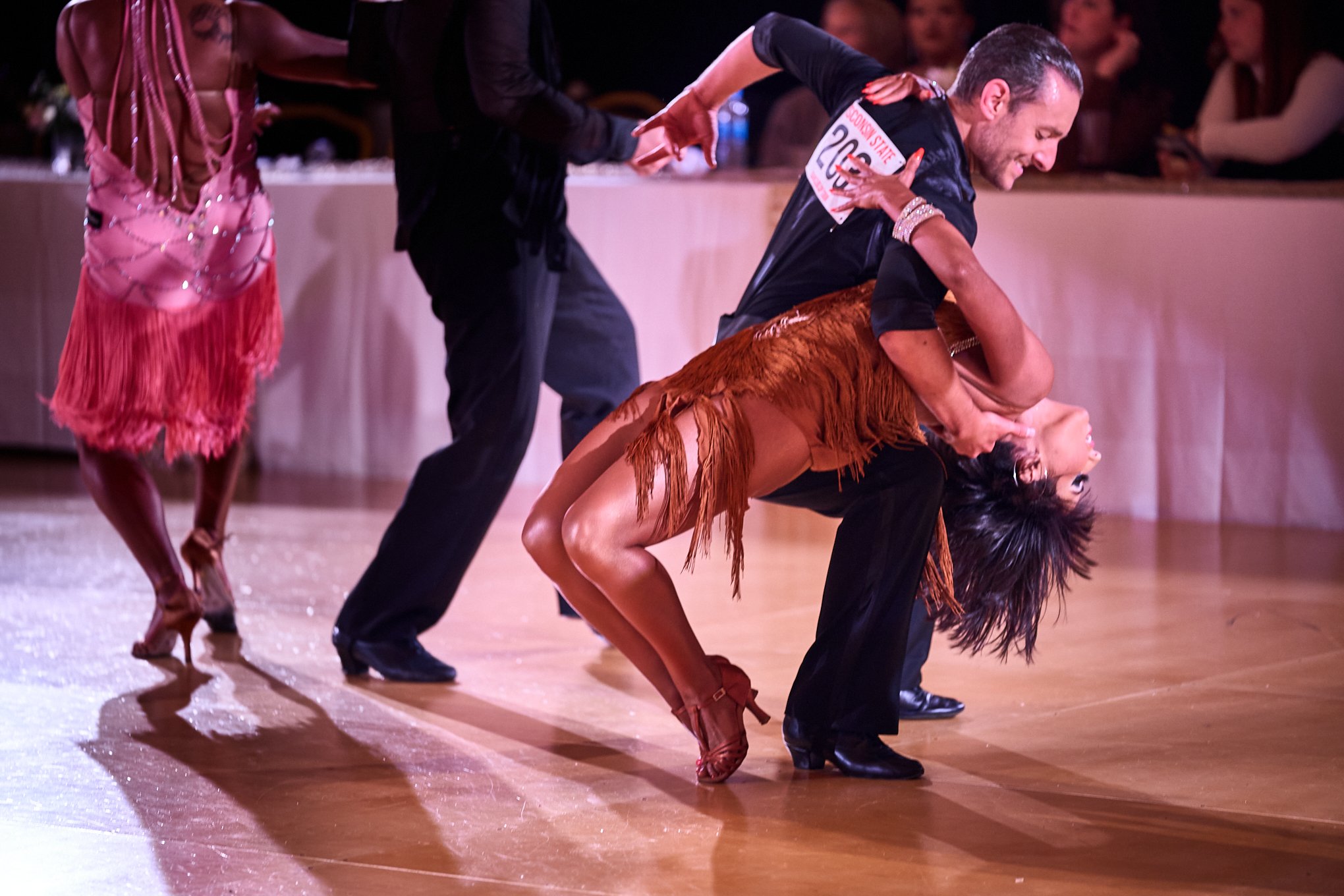
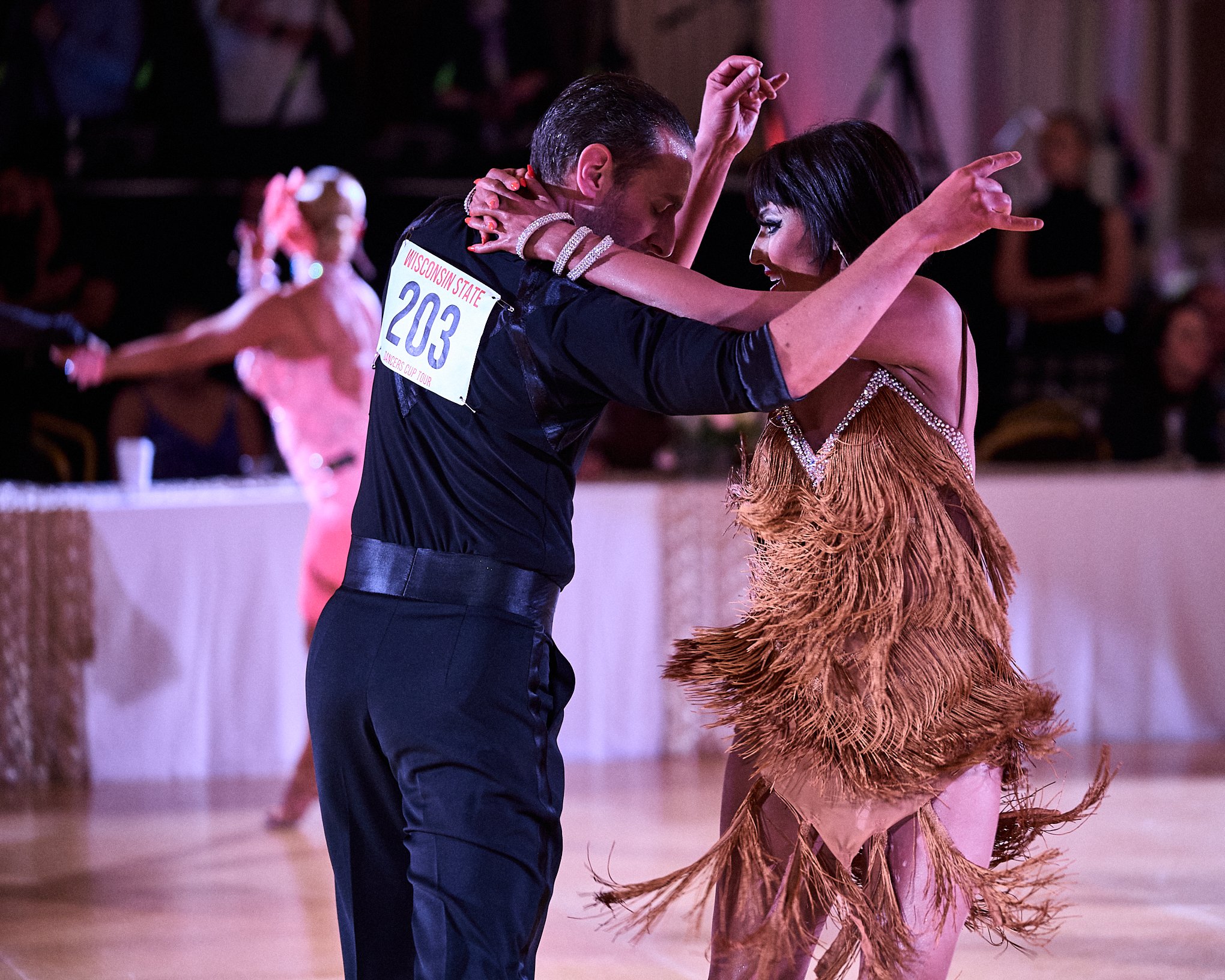
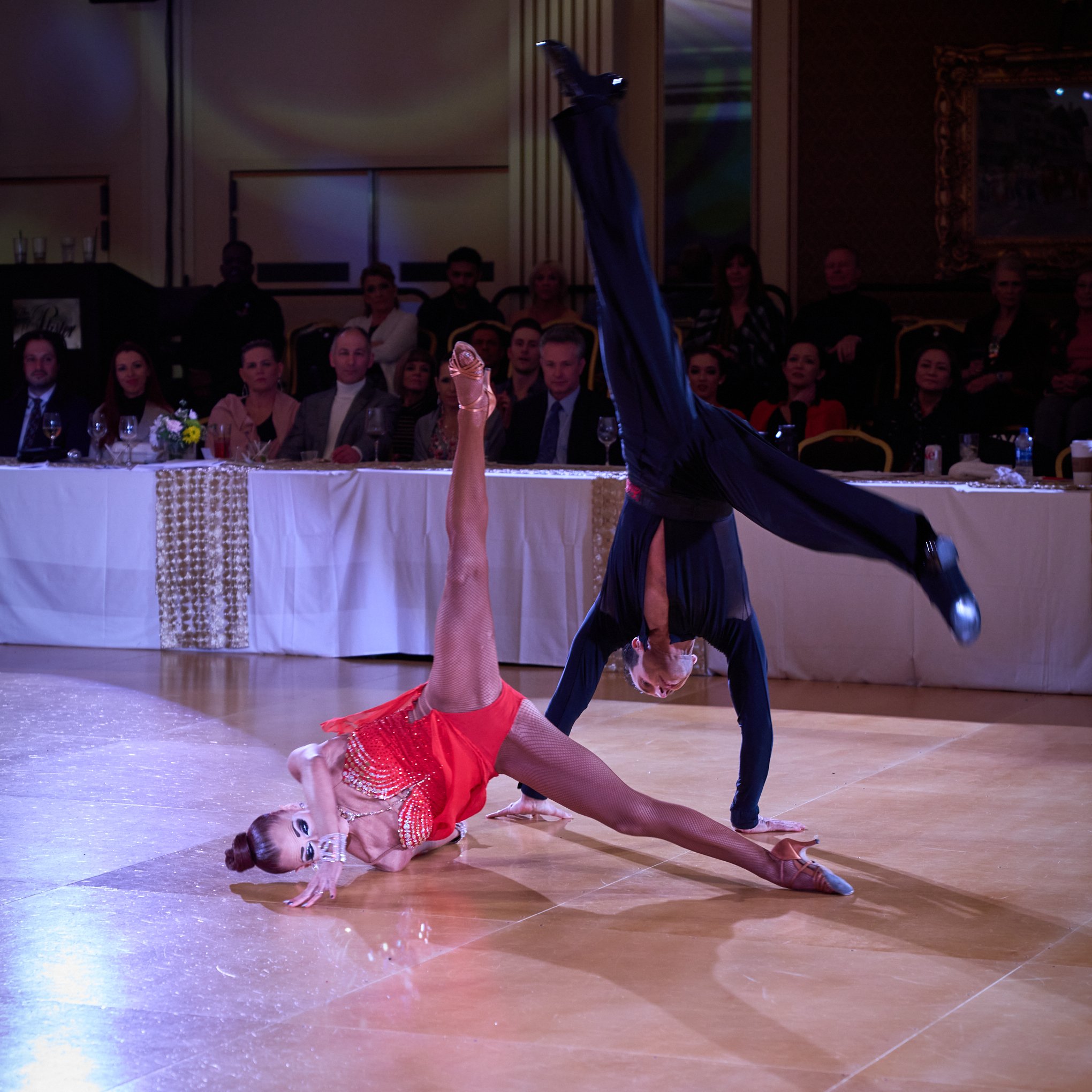
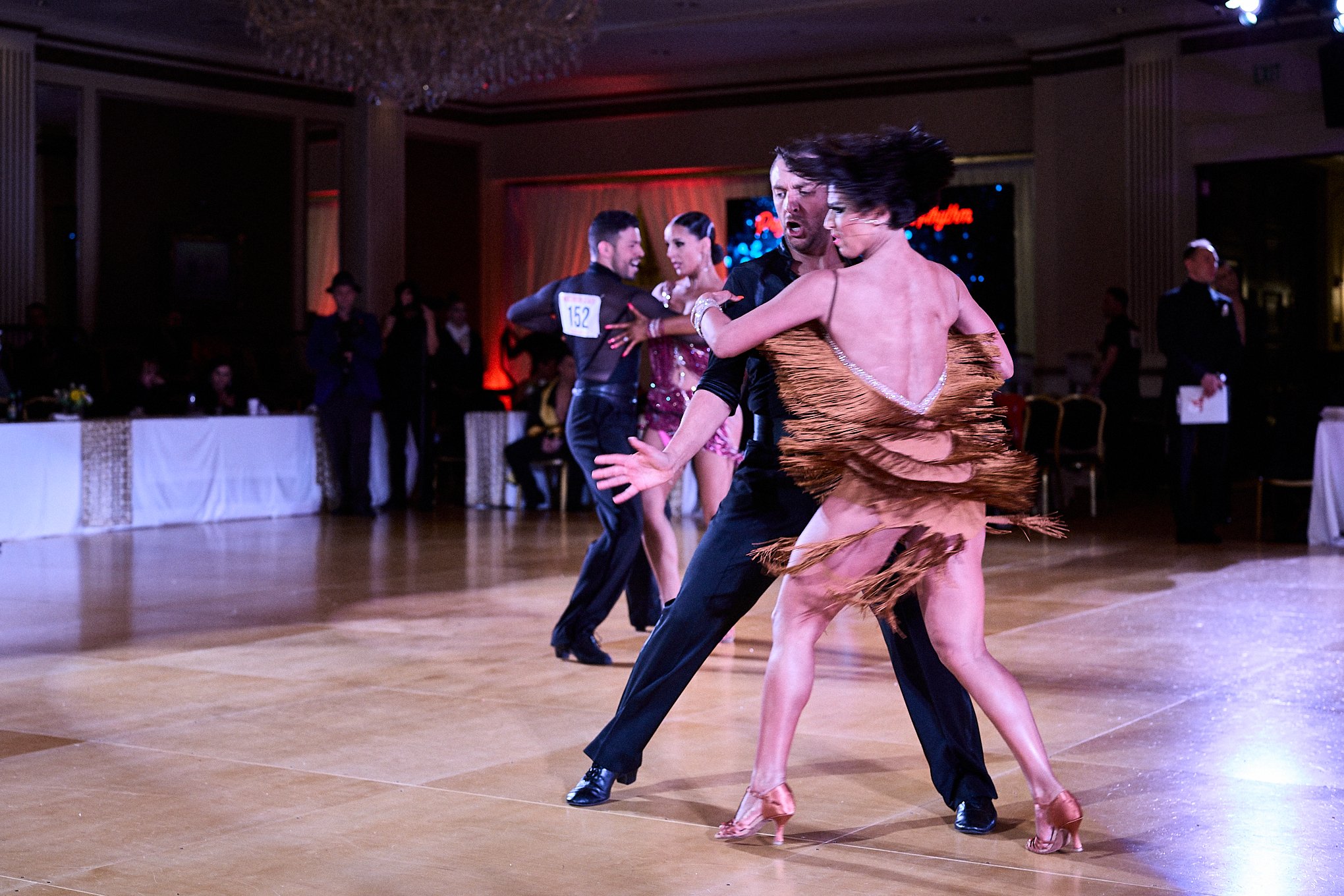
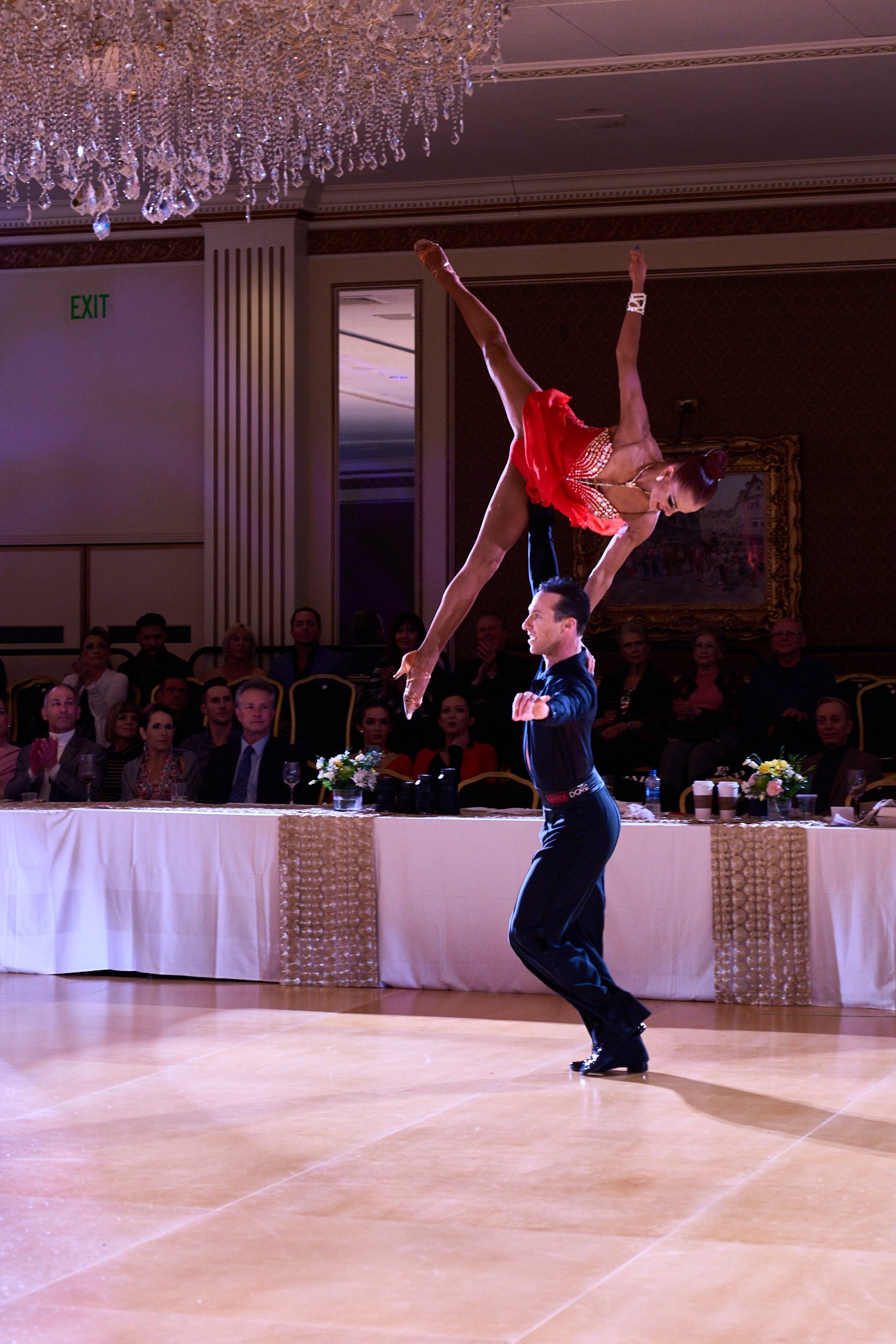
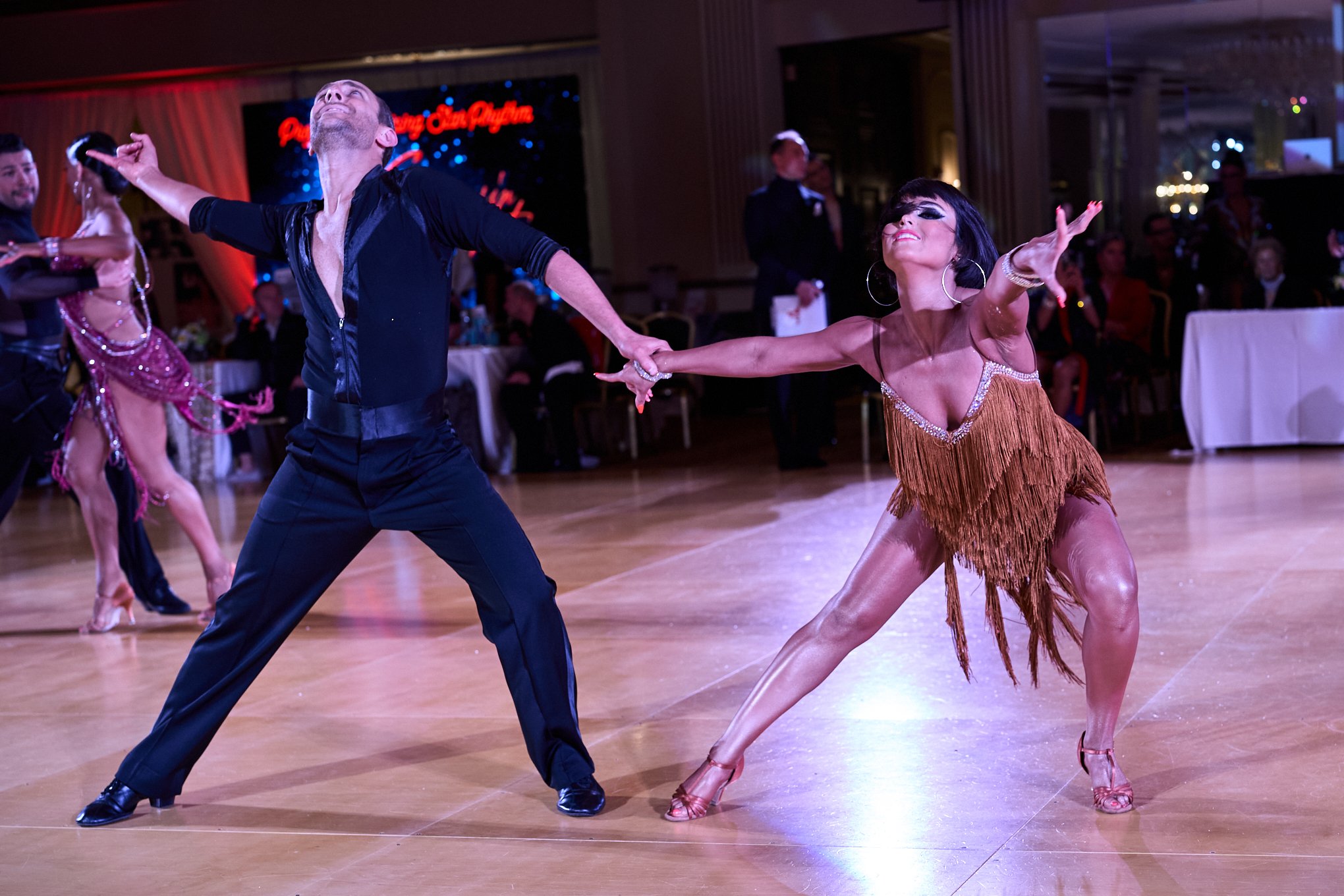
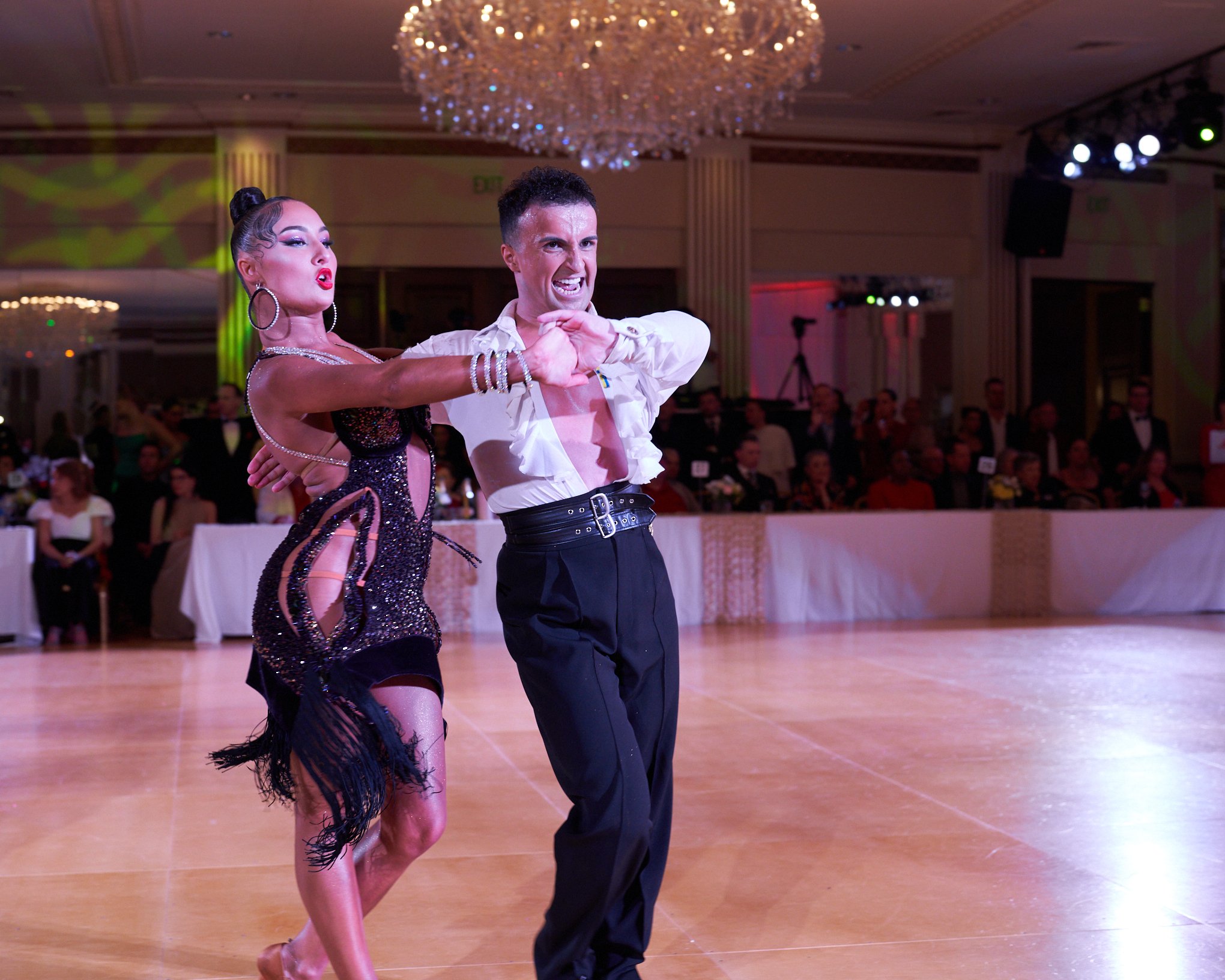

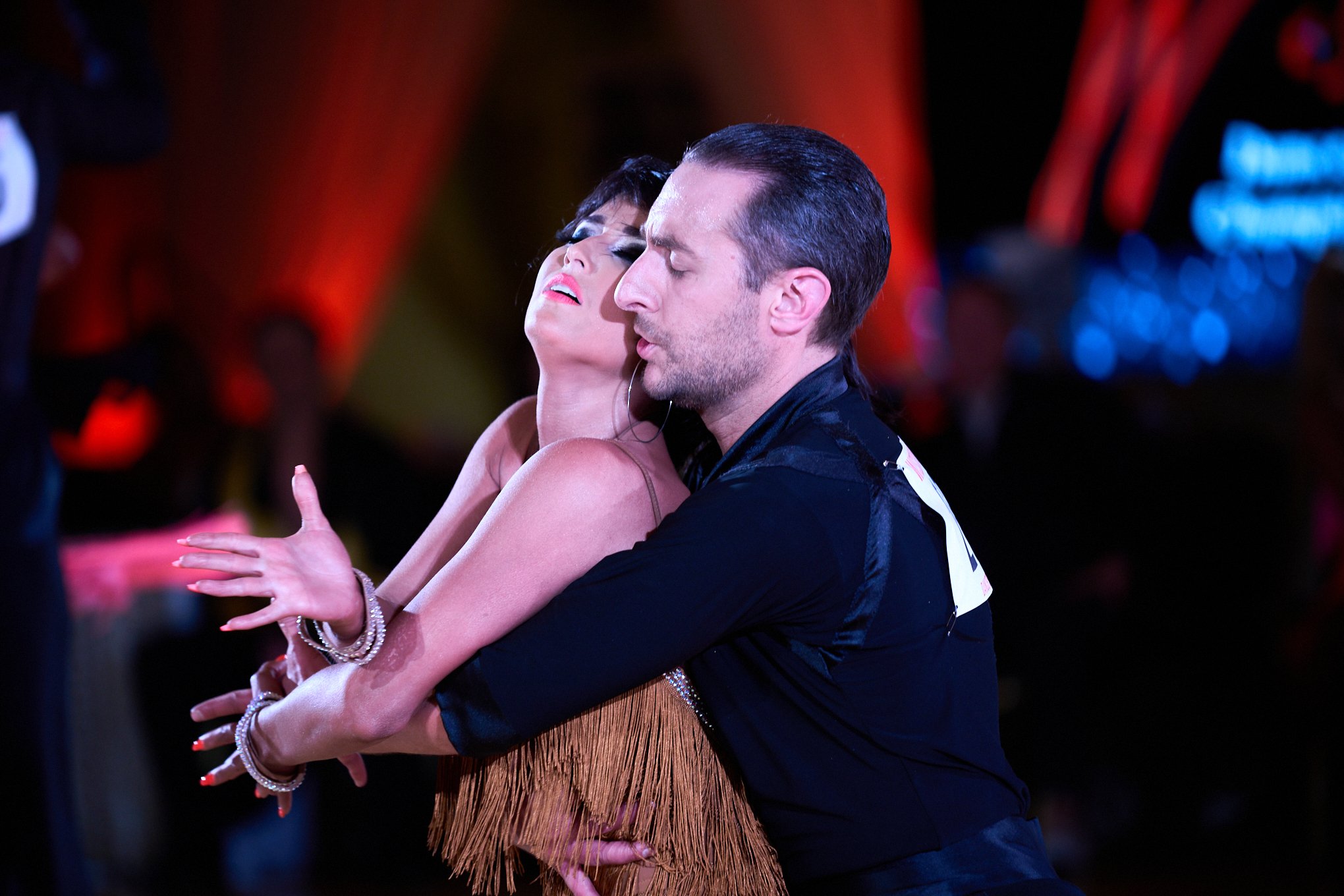

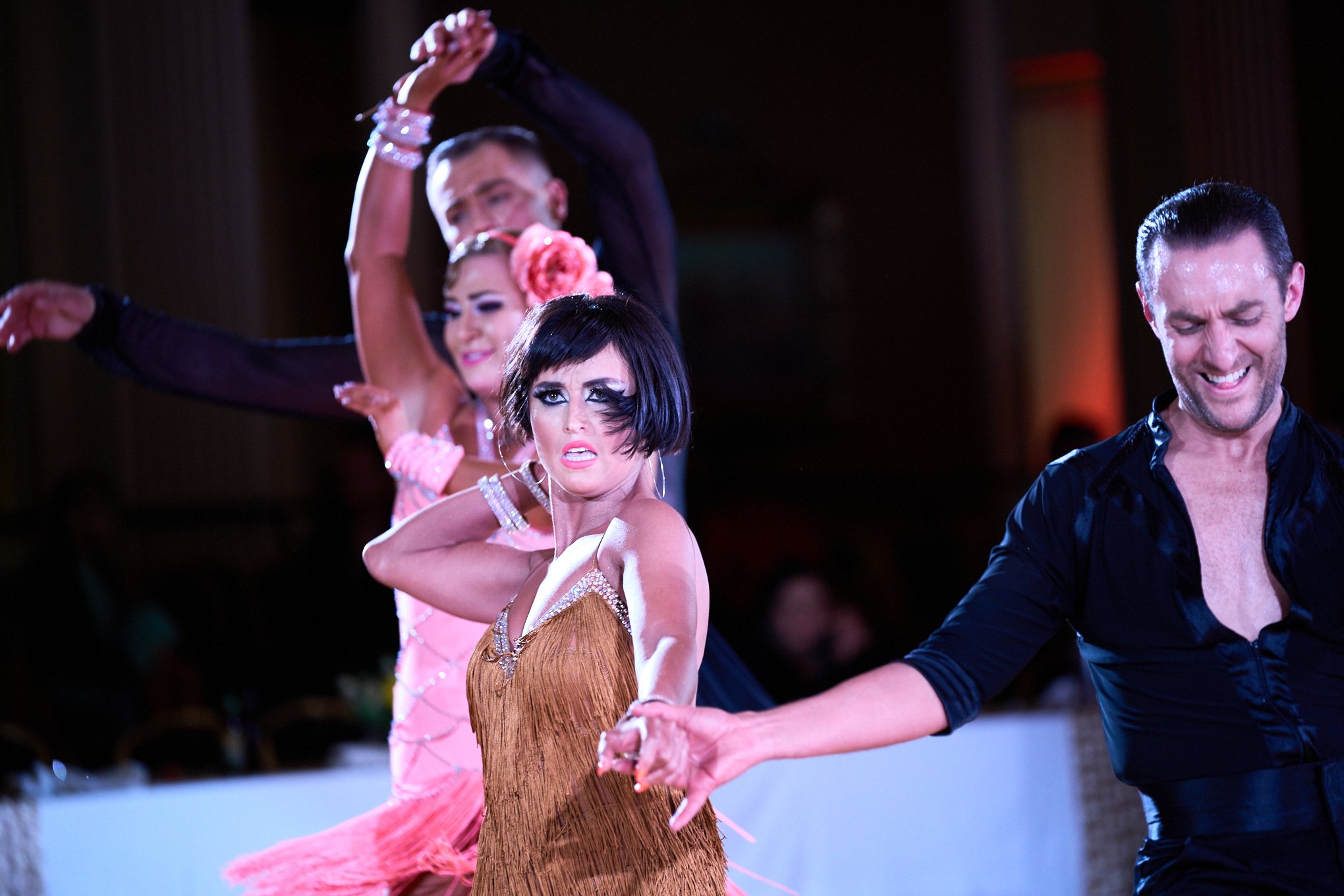
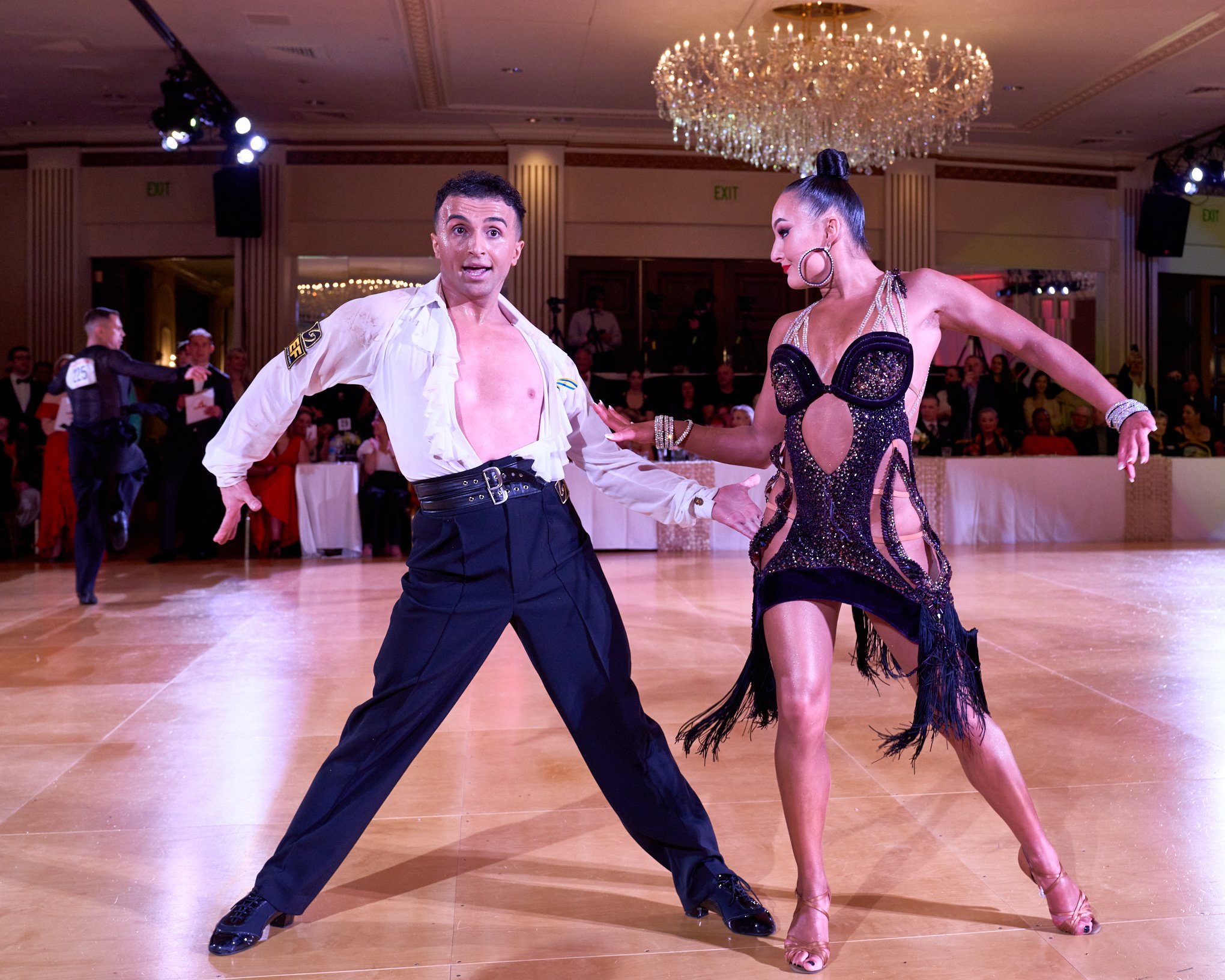


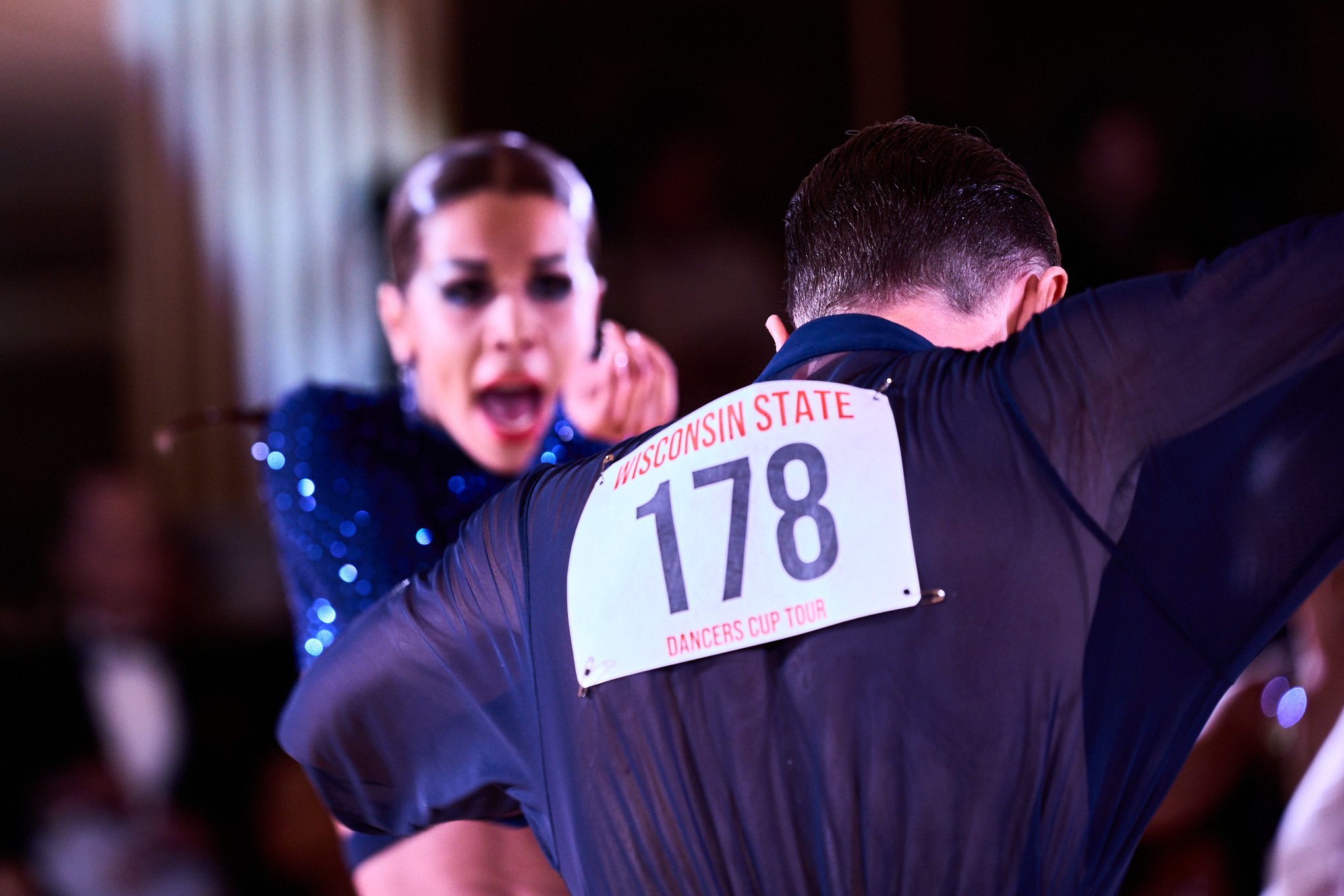
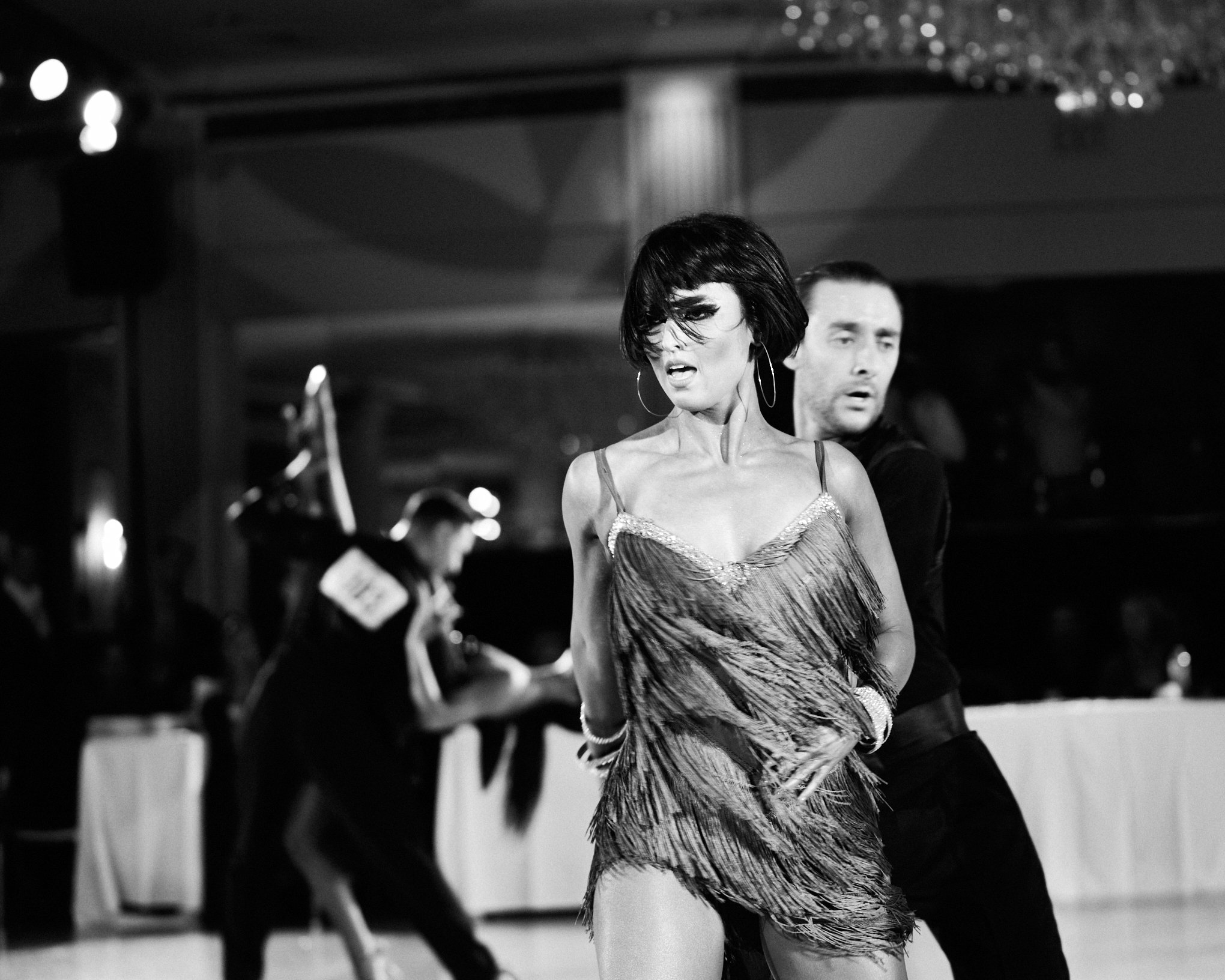
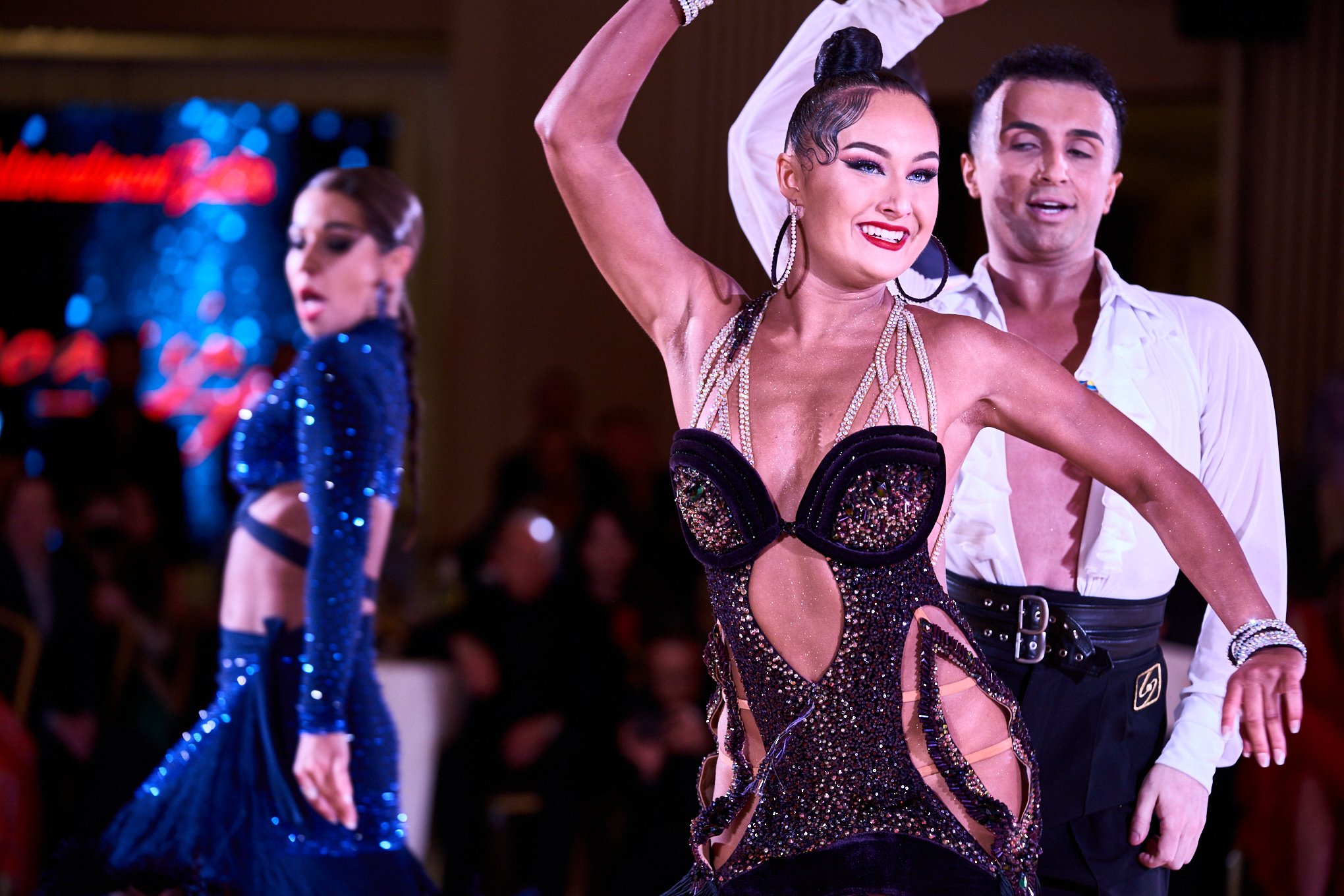
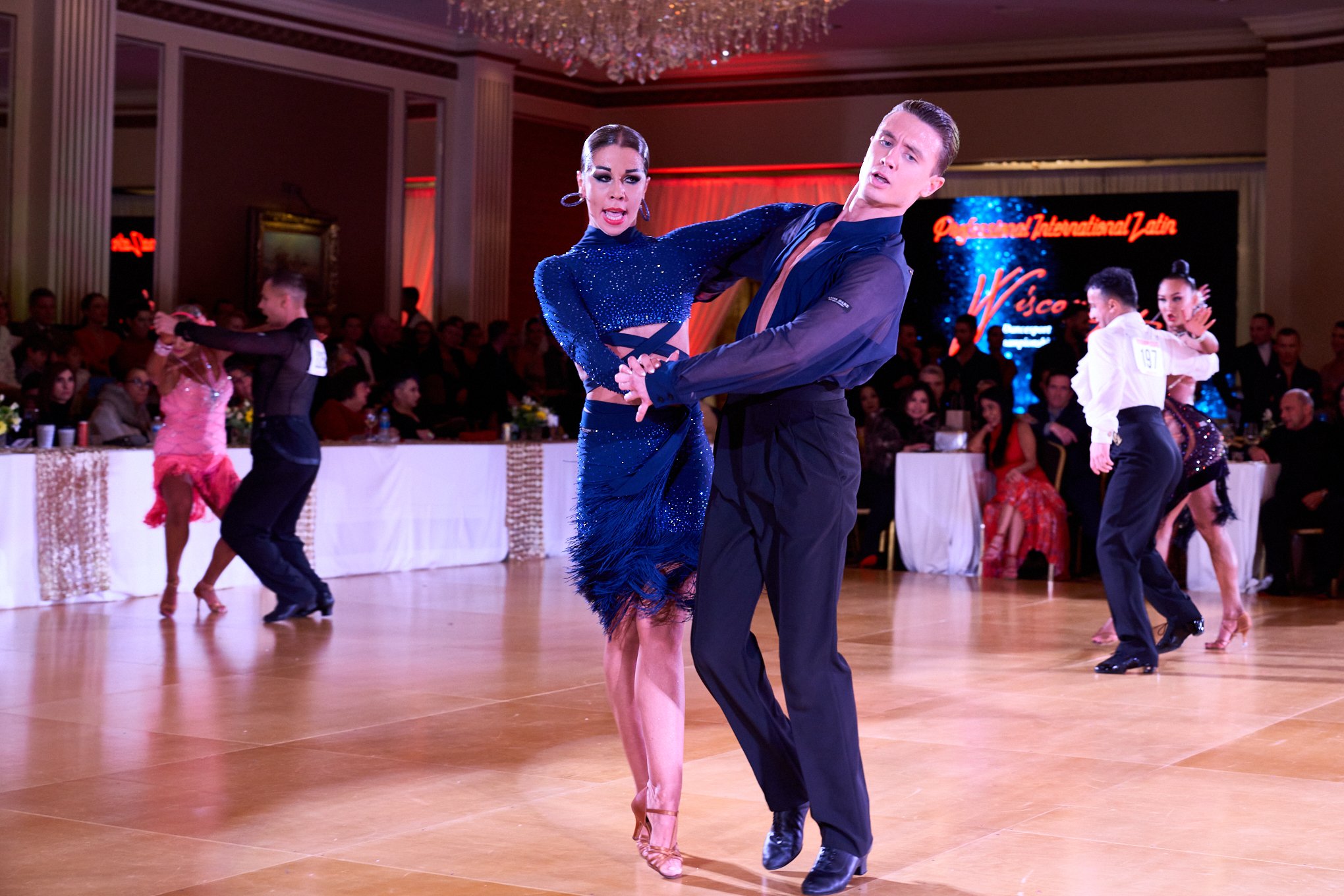



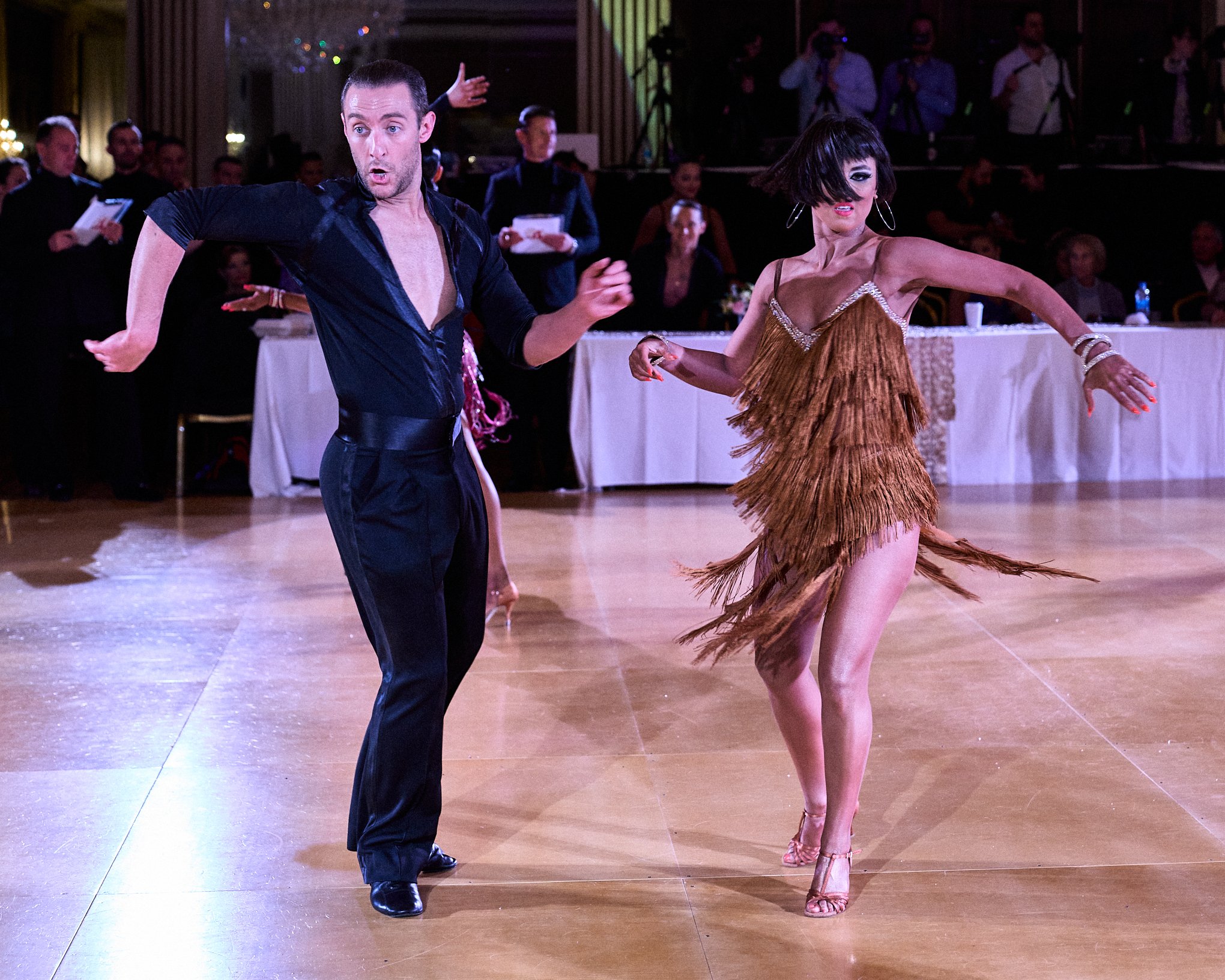
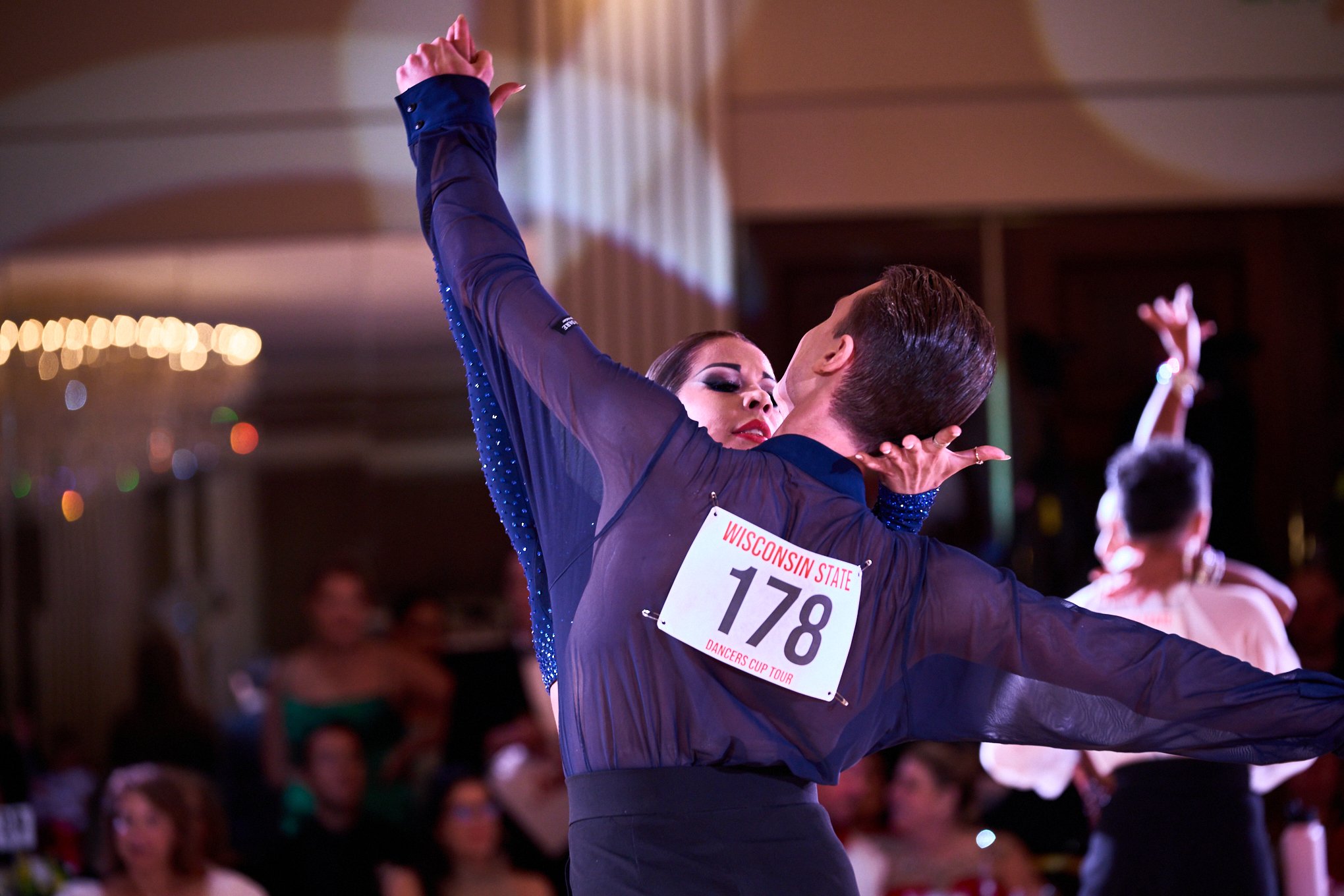
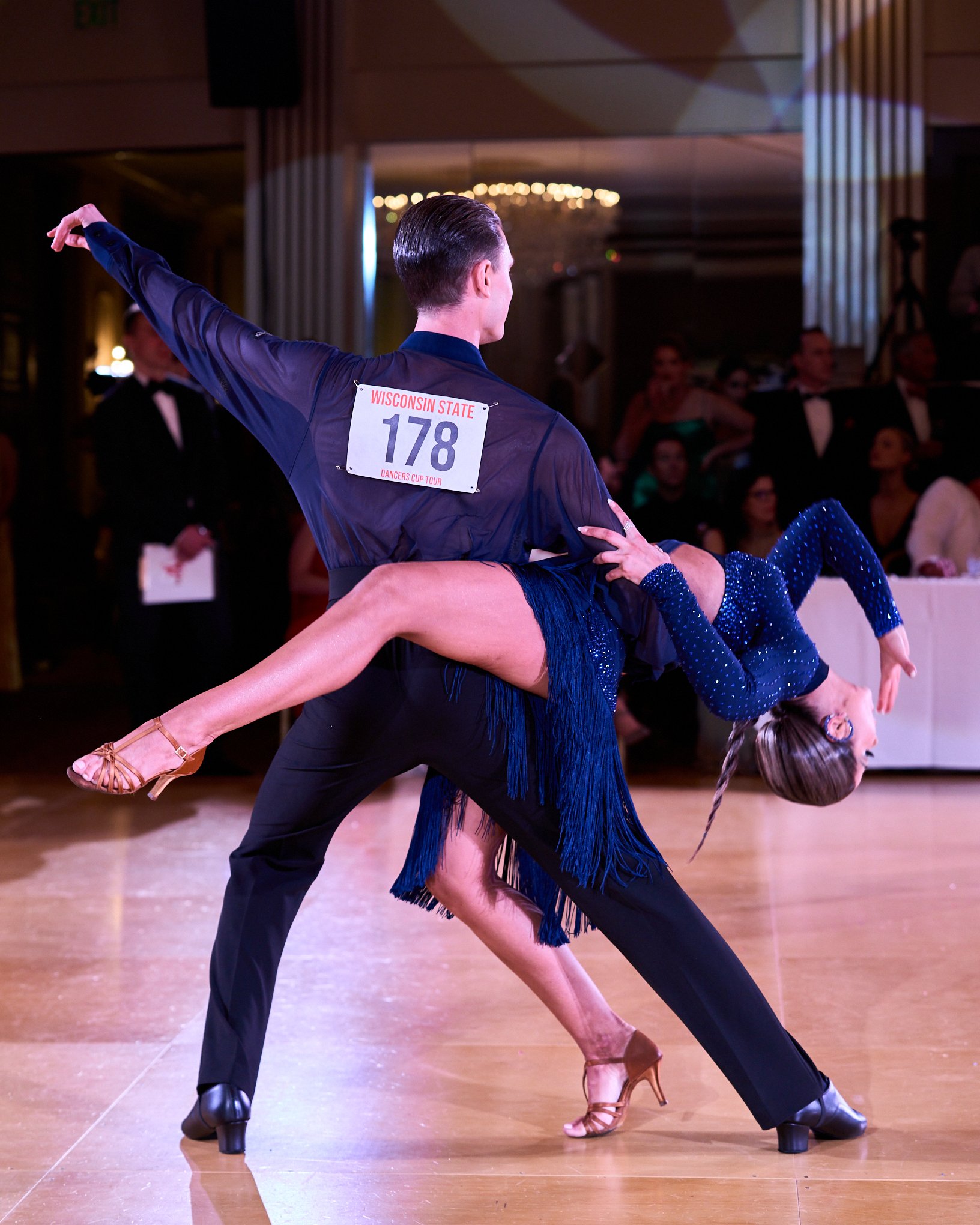
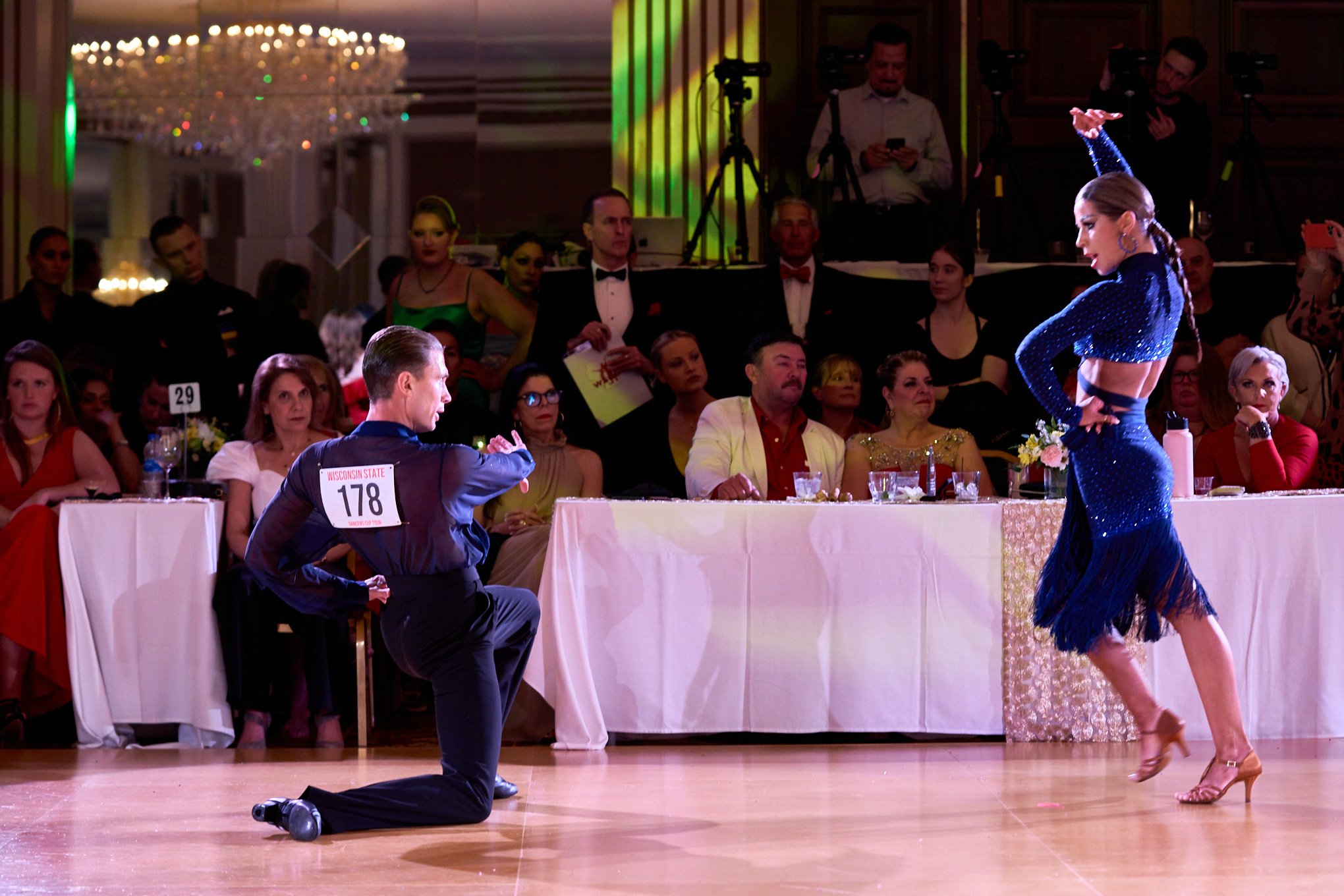
“Our first dance, the waltz…”
“It’s one thing to make a picture of what a person looks like, it’s another thing to make a portrait of who they are.” - Paul Caponigro
The Wisconsin State Dance Championships (WSDC) is just around the corner. After a two-year hiatus because of the COVID-19 pandemic, dancers from around the country will gather once again in the elegant Pfister Hotel in Milwaukee, and I will be among them both as a competitor and as a photographer. I have paid several thousand dollars for the privilege. Whether I make any of that back from my photography remains to be seen.
So why do I do this? In my lifetime I have been a half-way decent swimmer, surfer, skier, bicyclist and a reasonably competent martial artist. I added dance to my repertoire of physical activities in 2015, a year after the passing of my wife. All of these activities have one thing in common: Liberty. At their best, they offer moments of freedom from the internal dialog that steps between us and the experience of life in the moment.
Jean-Paul Sartre wrote in Being and Nothingness that consciousness was an inherently negative experience. That is, it’s always looking outward, discovering itself by what it is not. It seeks the immediate experiential awareness of a tree or a rock, which simply are. The closest humans get to that, he said, is in moments of ecstasy or extreme pain. Perhaps. But I think the activities I’ve participated in come close at times for those who pursue them with intensity. Competitive ballroom dancing certainly does. When done well, you merge with your partner and adapt on the fly to the changing competition floor, all in sync with the music. When the music stops the flood of endorphins washes over you like a riptide.
This is what I try to capture in my ballroom dance photography. Whether the dancers hit perfect form or not is of secondary consideration. I try to put the viewer inside the partnership. My work recently won three of 10 top spots in the prestigious Pas de Deux Photography Contest, performance division. I will be shooting the professional dancers competing at WSDC, which runs April 20-24 this year. I also am offering portraits, which has been described as the most challenging of photographic endeavors. The great photographer Paul Caponigro said, “It’s one thing to make a picture of what a person looks like, it’s another thing to make a portrait of who they are.”
Stay tuned to see how things turn out. But it will be a few weeks before I get things edited. I will be competing in the Emerald Ball Dancesport Championships in Los Angeles, which runs April 26-May 1. (I won’t be shooting the event.) I will take a brief vacation to visit with some family members and friends afterward. I expect to get the WSDC editing done upon my return to Minnesota, though I might rush some preliminary edits for those who need images right away.
A bit of news: I am exploring the expansion of my photography business to ballet schools and competitions in and around the Twin Cities. I’ll keep you posted on how that progresses. If you’re interested, please contact me.
Meantime, I remain available for portraits, marketing photos and headshots. Drop me a line if you’re looking for some professional images, shot on location or in the studio.
Movement is life
The most difficult thing for me is a portrait. You have to try and put your camera between the skin of a person and his shirt. — Henri Cartier-Bresson
In the span of 30 days I will have gone from the fabulous Pas de Deux Photography Conference in Austin, Texas, focusing primarily on ballet dancers, to the Gateway DanceSport Championships in St. Louis, focusing on professional international and American ballroom dancers, to the annual convention of the American Judo and Jujitsu Federation — held virtually this year because of the pandemic — focusing on traditional, mostly unarmed battlefield techniques, to the Wisconsin State Dancesport Championships, focusing again on professional ballroom dancers and on dancers who want their portraits made at the historic Pfister Hotel in Milwaukee.
I have taught Danzan Ryu jujutsu for several decades, and I have studied Aikido, a more refined derivative of jujutsu, for many years as well. Since 2015 I have studied ballroom dancing, with a dash of Argentine tango, salsa, swing and similar styles. These activities have more in common than you might suspect. They each involve moving energetically with a partner without compromising your balance. I am not suggesting that they are the same, however.
Martial arts generally involves gaining the upper hand over an opponent, while dance eliminates such one upmanship. Yet both aim for the same thing: Maintaining balance in one’s self and in relation to others. But that’s just technique. The purpose of that technique is to facilitate accurate communication with another.
When I photograph dancers and martial artists I look for intensity, poise and form. I recognize those characteristics because I have been there, if only briefly and occasionally.
My photography is up close and personal.
When I make a portrait I also look for that intensity, poise and form. It’s often evident in the subject’s eyes, or in their posture.
I am taking portrait appointments year-round in the Twin Cities and at the Wisconsin State Dancesport Championships, held April 20-24, in Milwaukee. My time at the competition will be limited, however, as I am also competing.
Contact me directly to reserve some time if you’d like a portrait.
Tango
Remember, it takes two to tango.
The world lost two great souls in the past week. Of course, it lost many more than that, but I’m referring to two people I know who built a legacy through character. One is the Rev. Zenko N. Okimura shihan, seventh dan. The other is Prof. Jane Carr, tenth dan. The terms “shihan” and “professor” in this case are synonymous honorifics, indicating a certain level of mastery in the martial arts. The term “dan” means step, and it refers to their ranks in their respective arts, Aikido and Danzan Ryu jujutsu.
The late Rev. Zenko N. Okimura shihan, 7th dan.
You might be wondering why I am writing about them in my photography blog. It’s because each of them left an impression on my life. I won’t list all of their accomplishments here or explain what they mean to me. It’s irrelevant to anyone other than myself. But with their passing I turned to my photo archives to find what images I might have of them. Shortly after they passed over the threshold to whatever lies beyond, I stepped through the photos, pulling up memories that connected me to their spirits. I am so grateful to have those photos, even the blurry ones.
Photography serves many purposes. It creates keepsakes, ranging from snapshots to portraits. It creates art, pointing behind the image itself to provoke reflection in the viewer. It offers documentary evidence of a time and place, a historical record, if you will. Best of all, it offers communion.
The late Prof. Jane Carr, tenth dan.
At the end of February I went to the Pas de Deux Photography Conference just outside of Austin, Texas. The name of the conference derives from a ballet term that refers to a dance duet. In this case, it refers to the interplay between the dancers and the photographers. The conference drew together some of the best dance photographers in the world with hand-selected dancers ranging from youth to adults. The masters of this genre shared their techniques with those of us who came to learn. They demonstrated their skills in live shoots and talked openly about their motivations, their goals, their failures and their successes. Dancers were paired with photographers for photo walks inside the hotel (it was freezing and wet outside). On the last day, when the sun finally broke out, we got some photo walks around the beautiful grounds of the Hyatt Regency Lost Pines Resort and Spa. I left the conference invigorated, feeling that I had tapped into a community of creators — dancers and photographers alike — who seek to explore the connection in the pas de deux that can make photography meaningful.
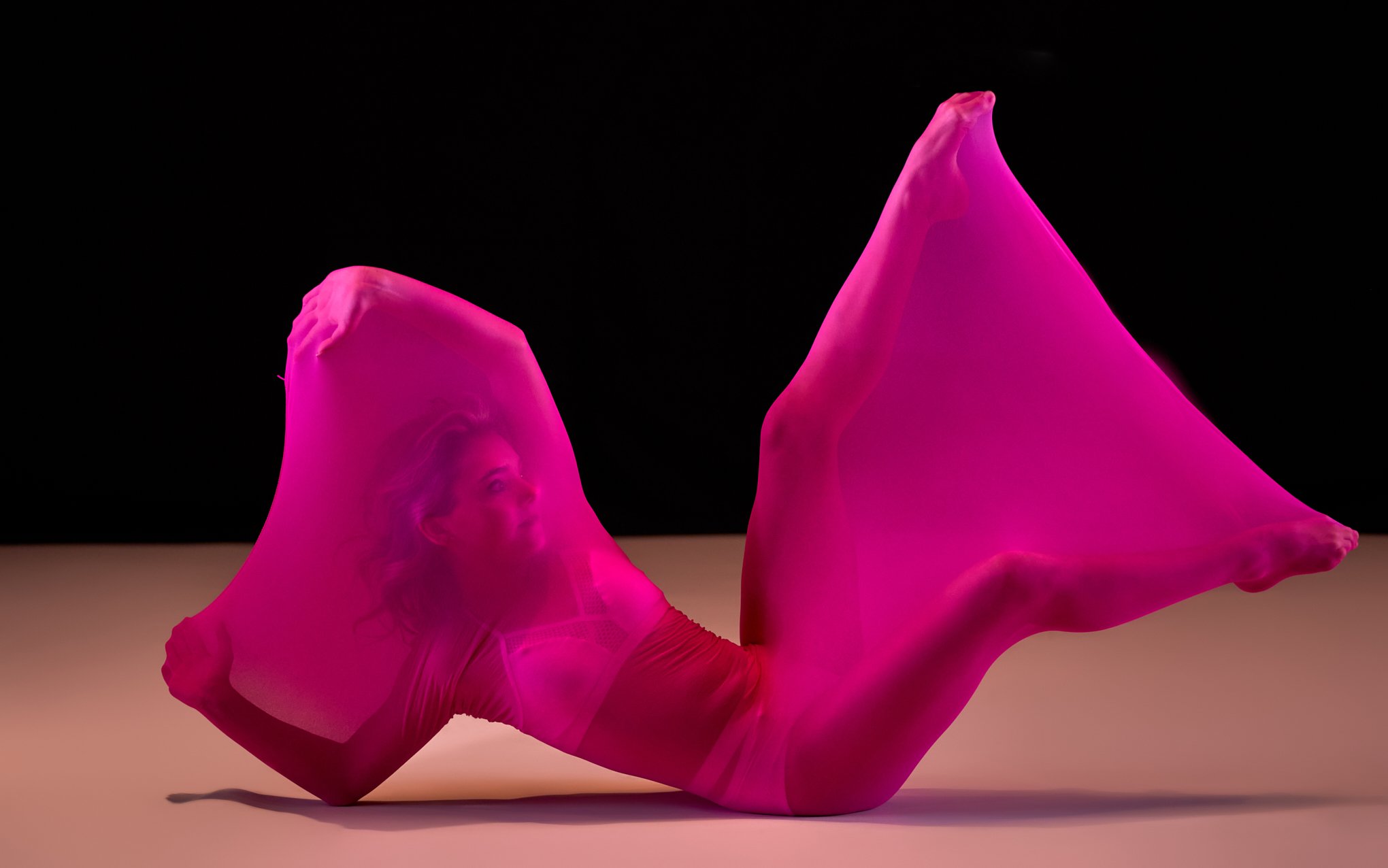
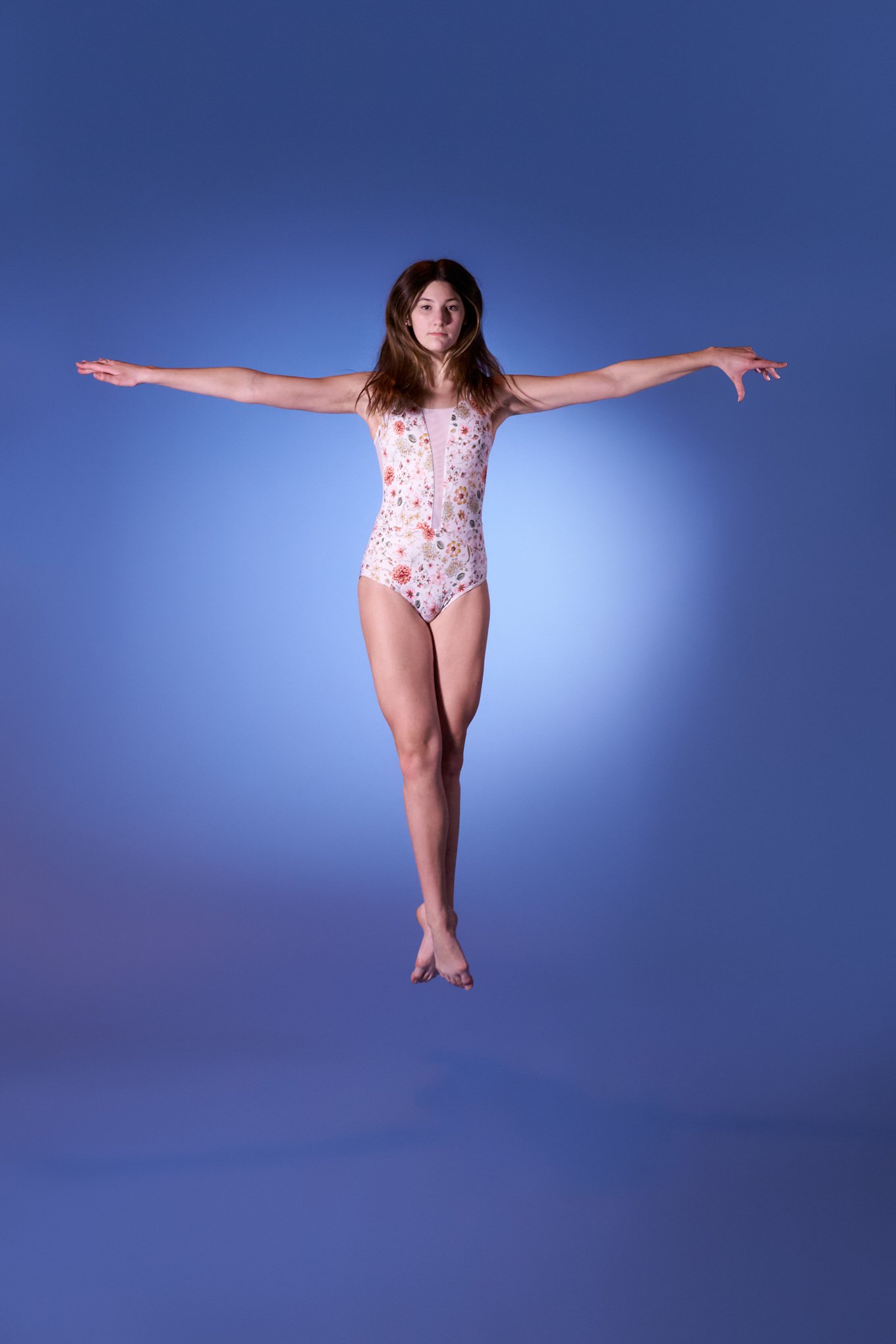
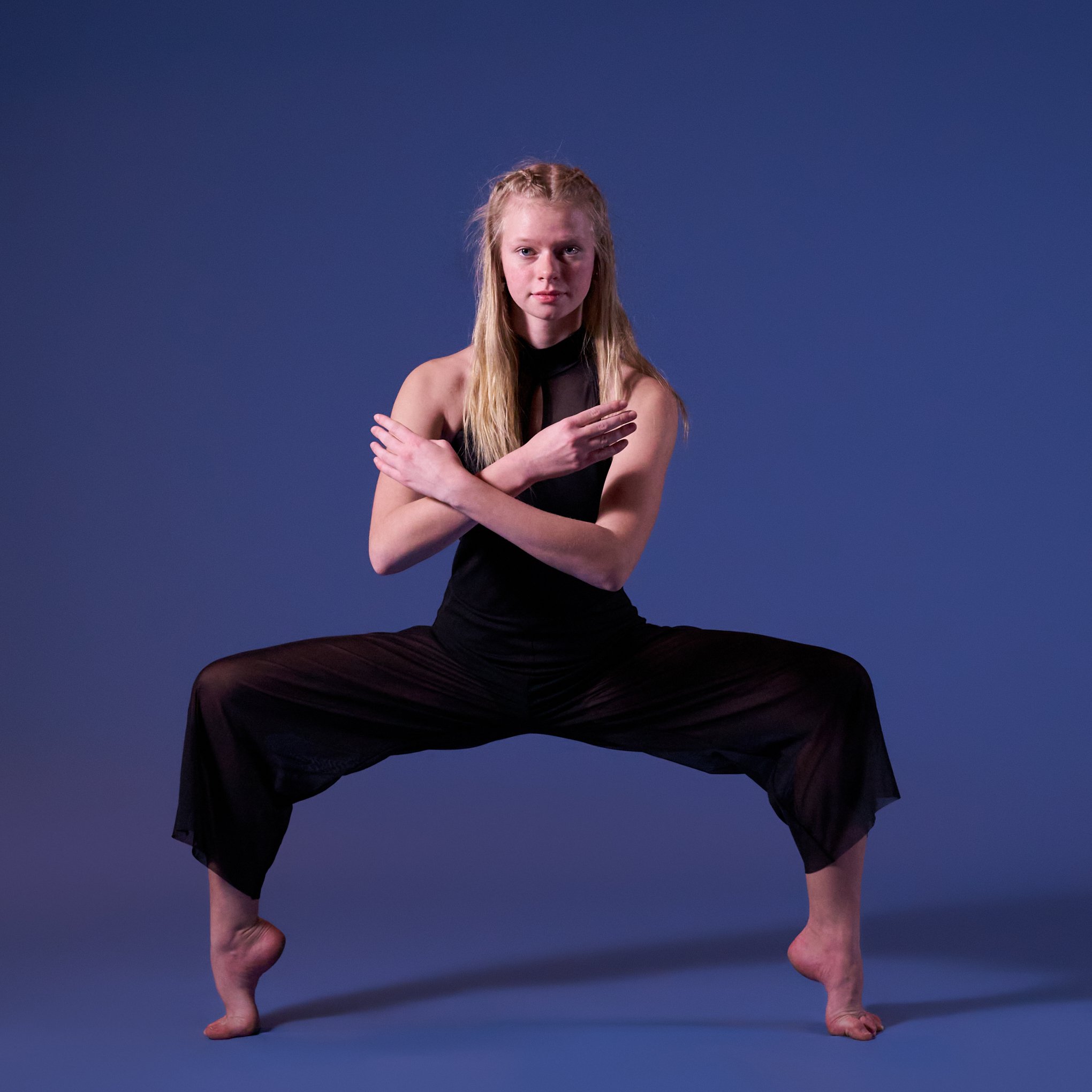
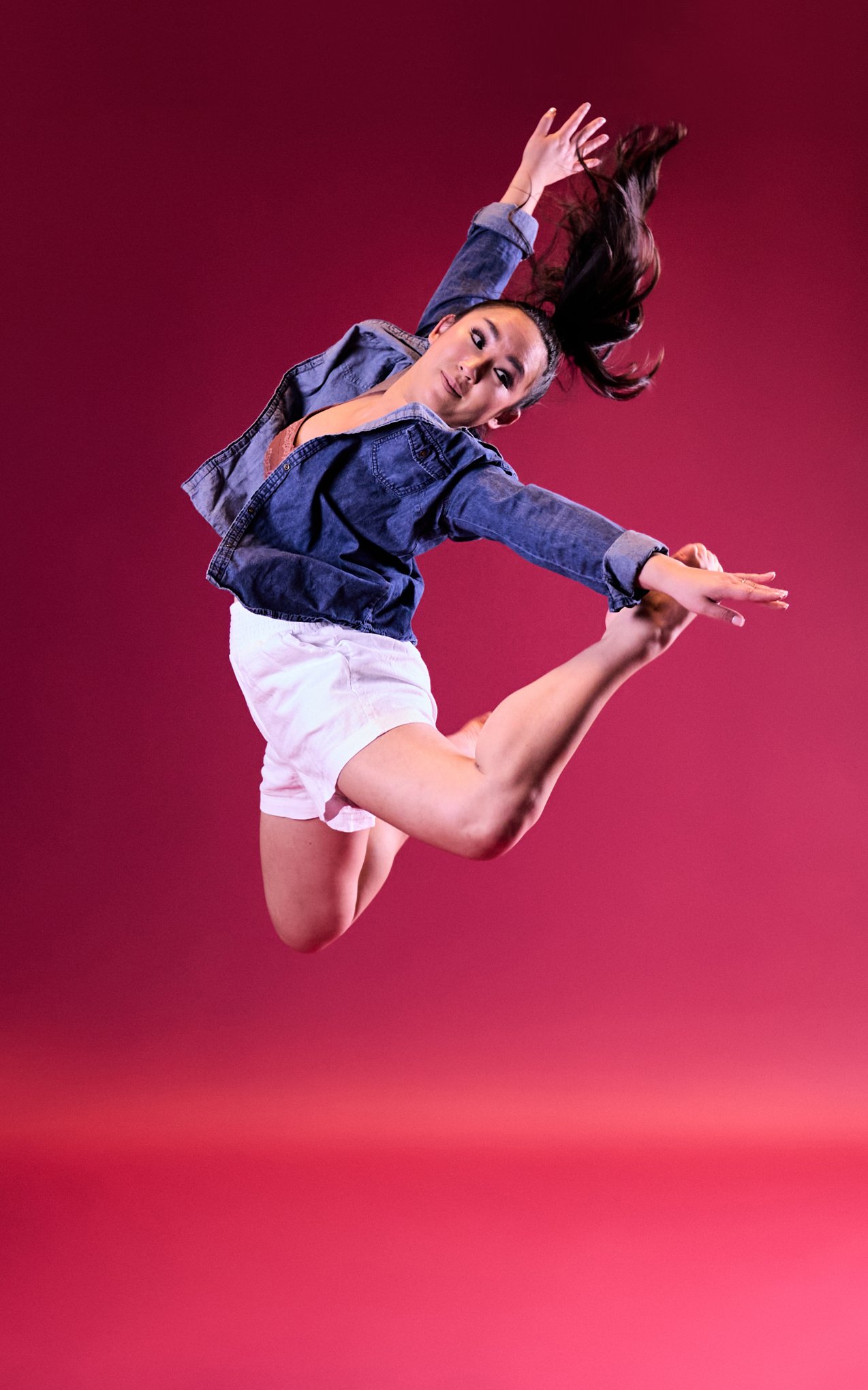
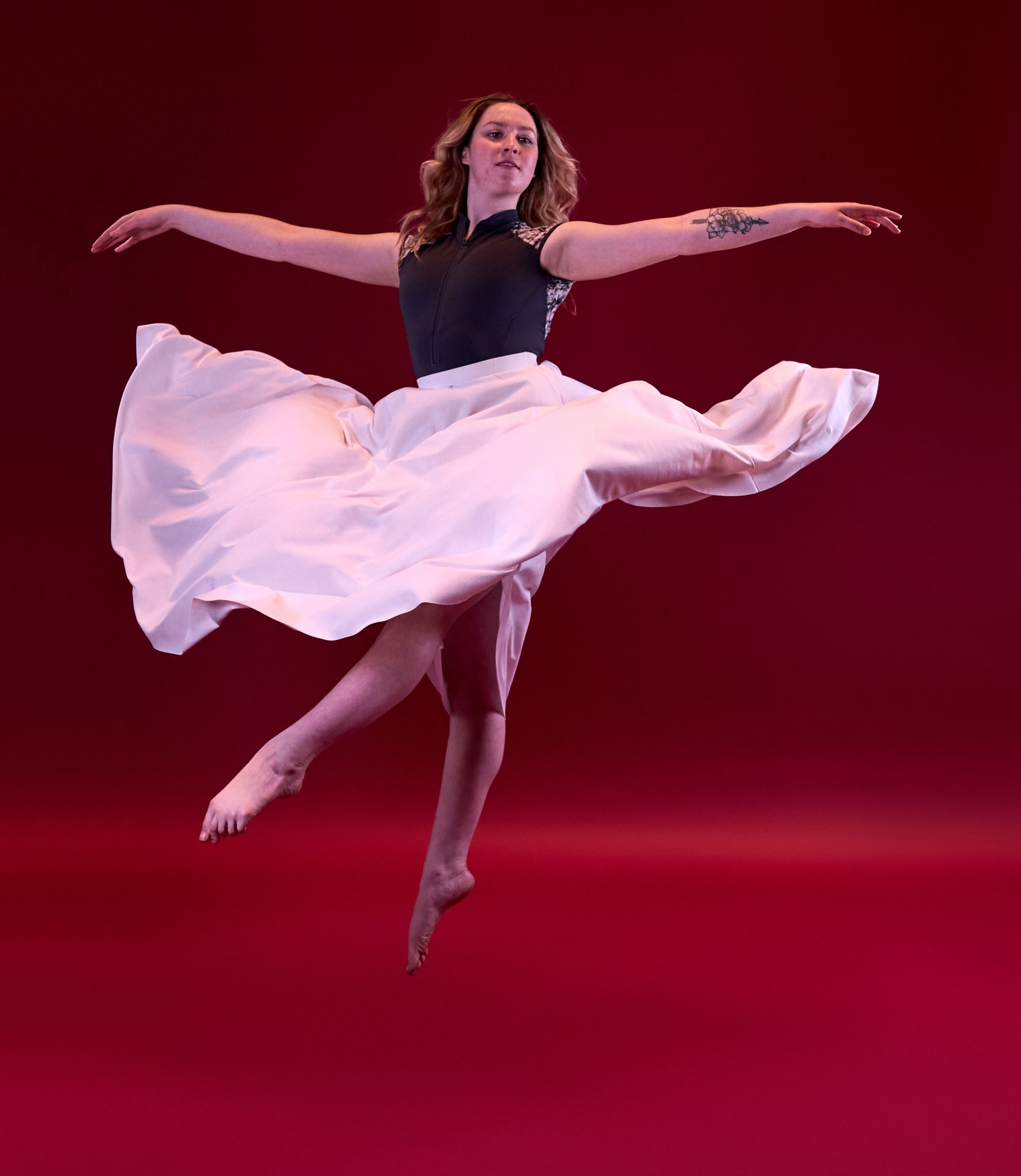
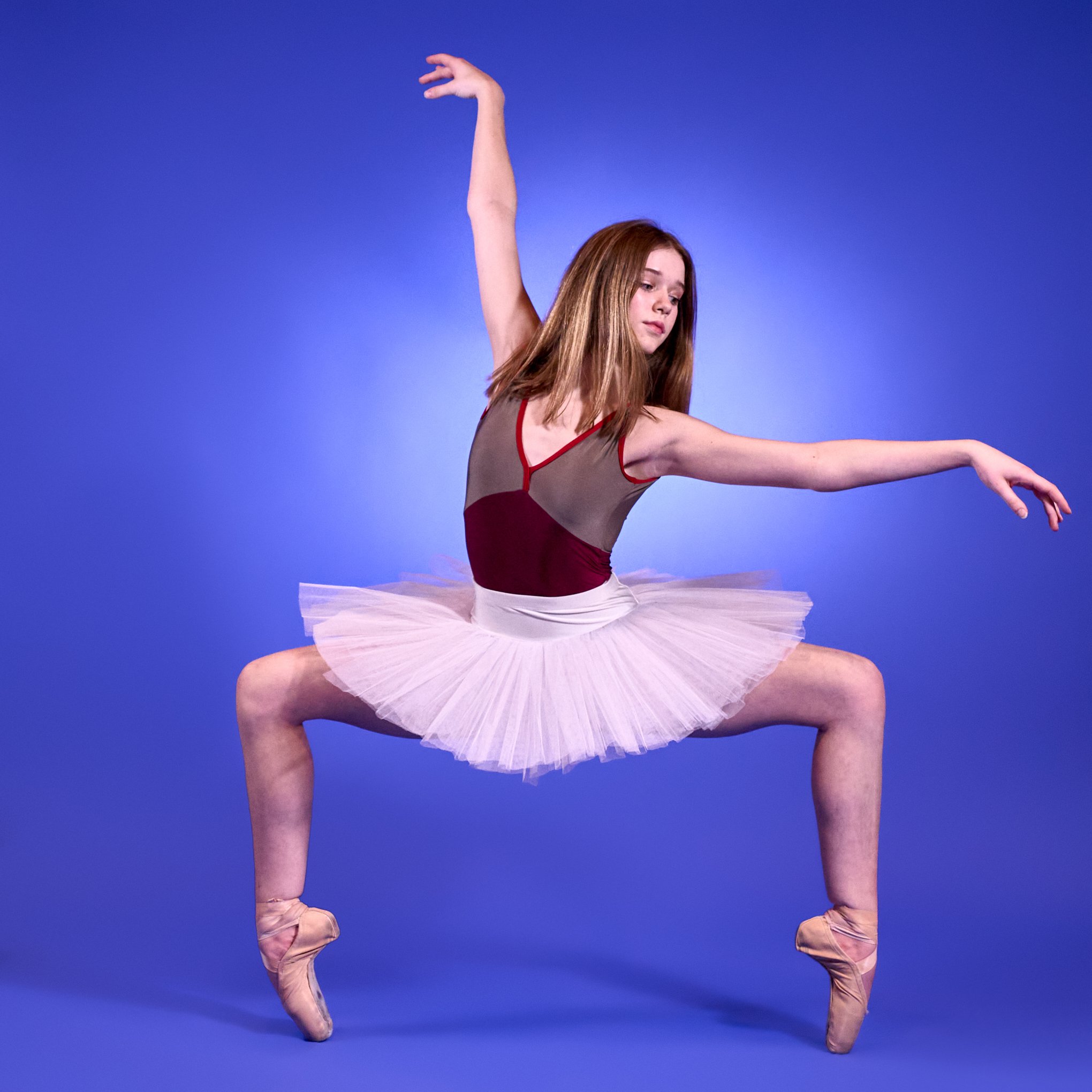
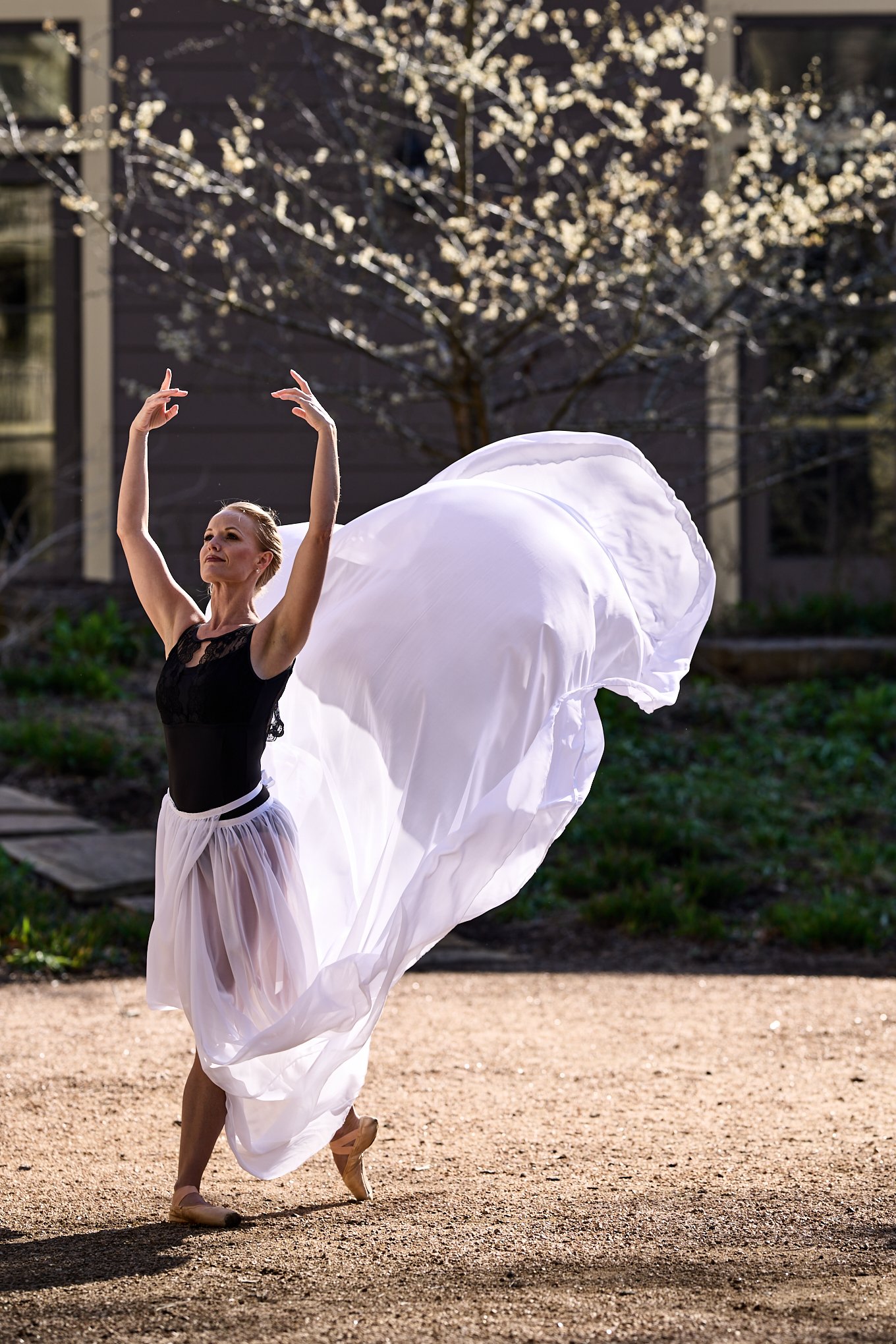
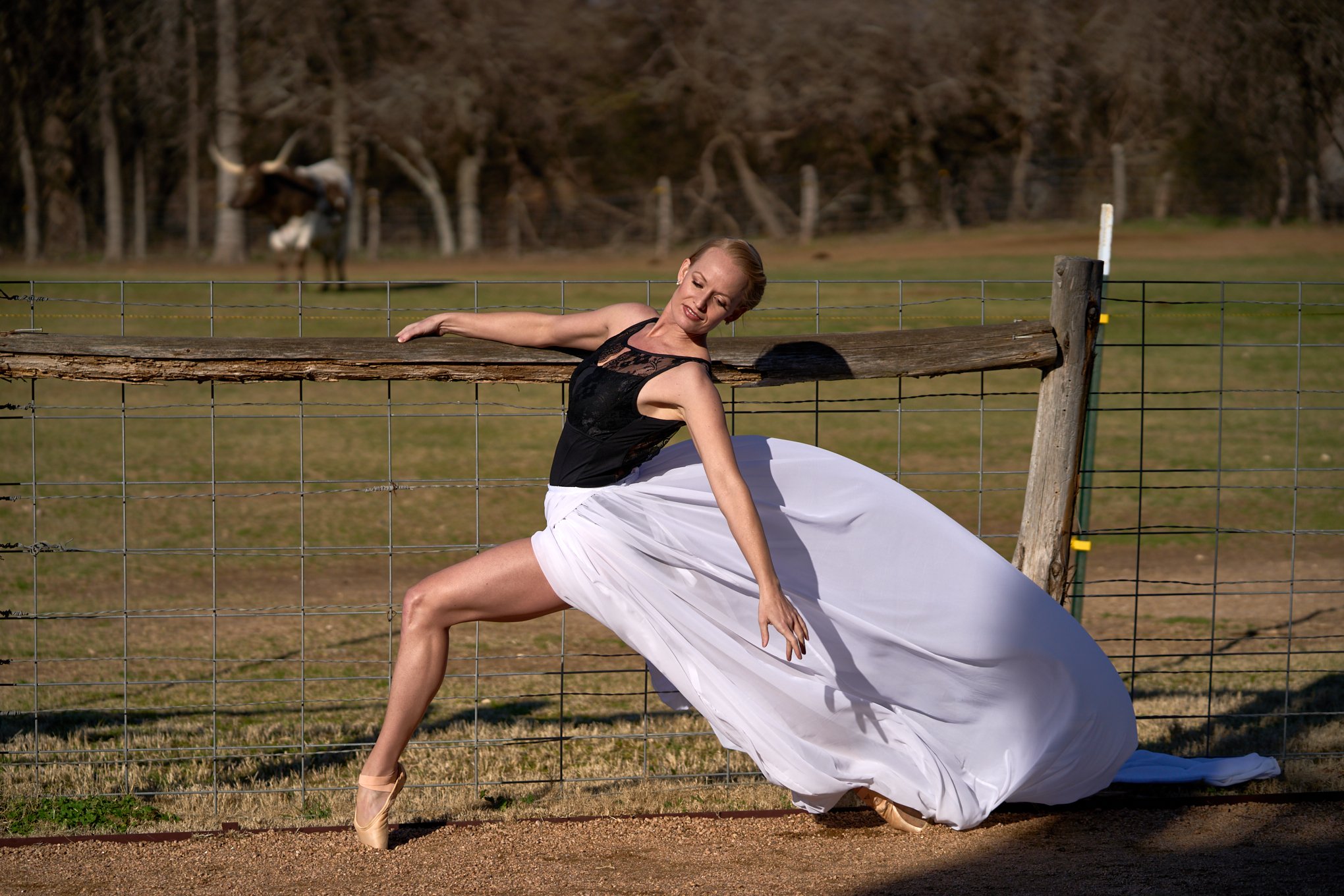
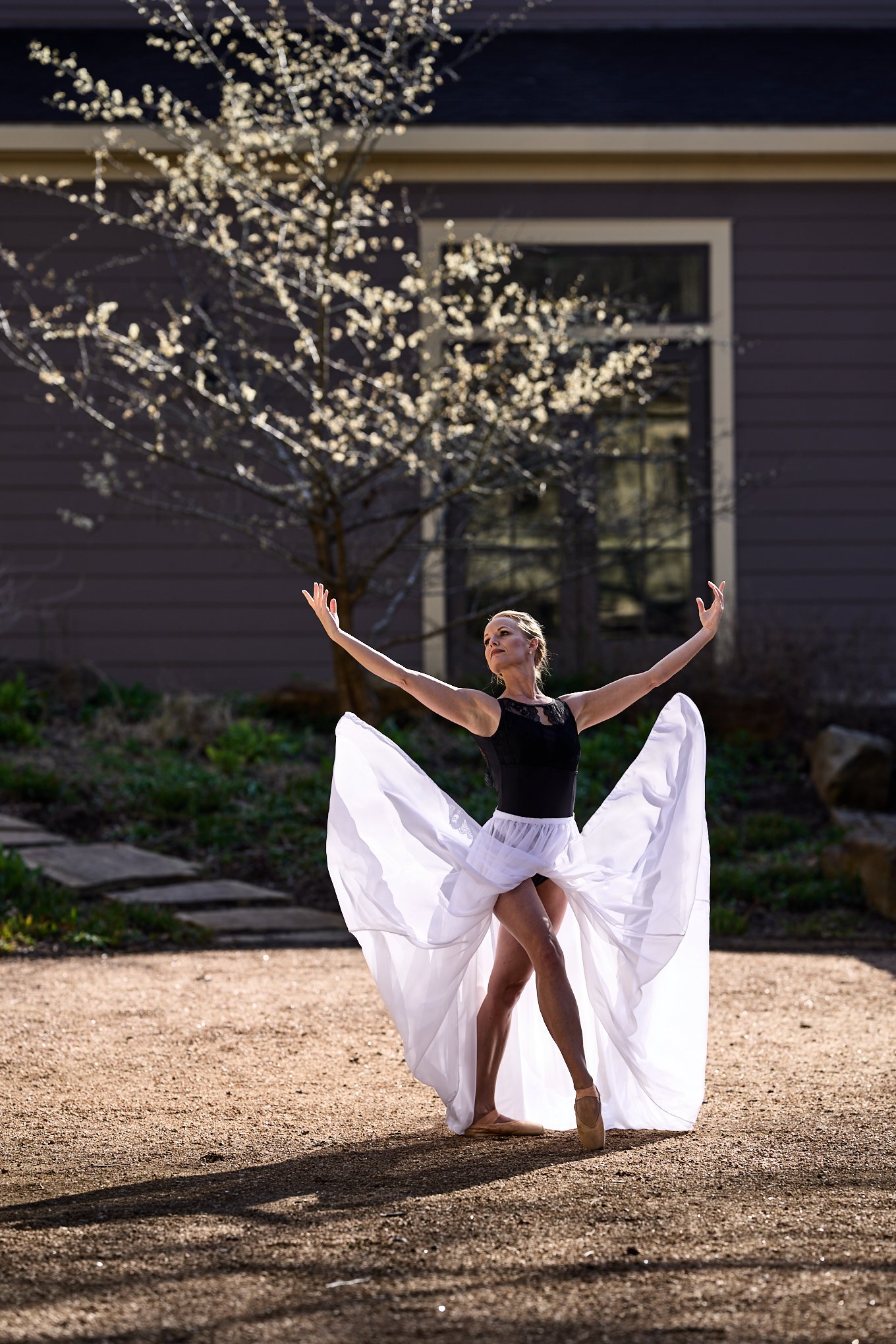

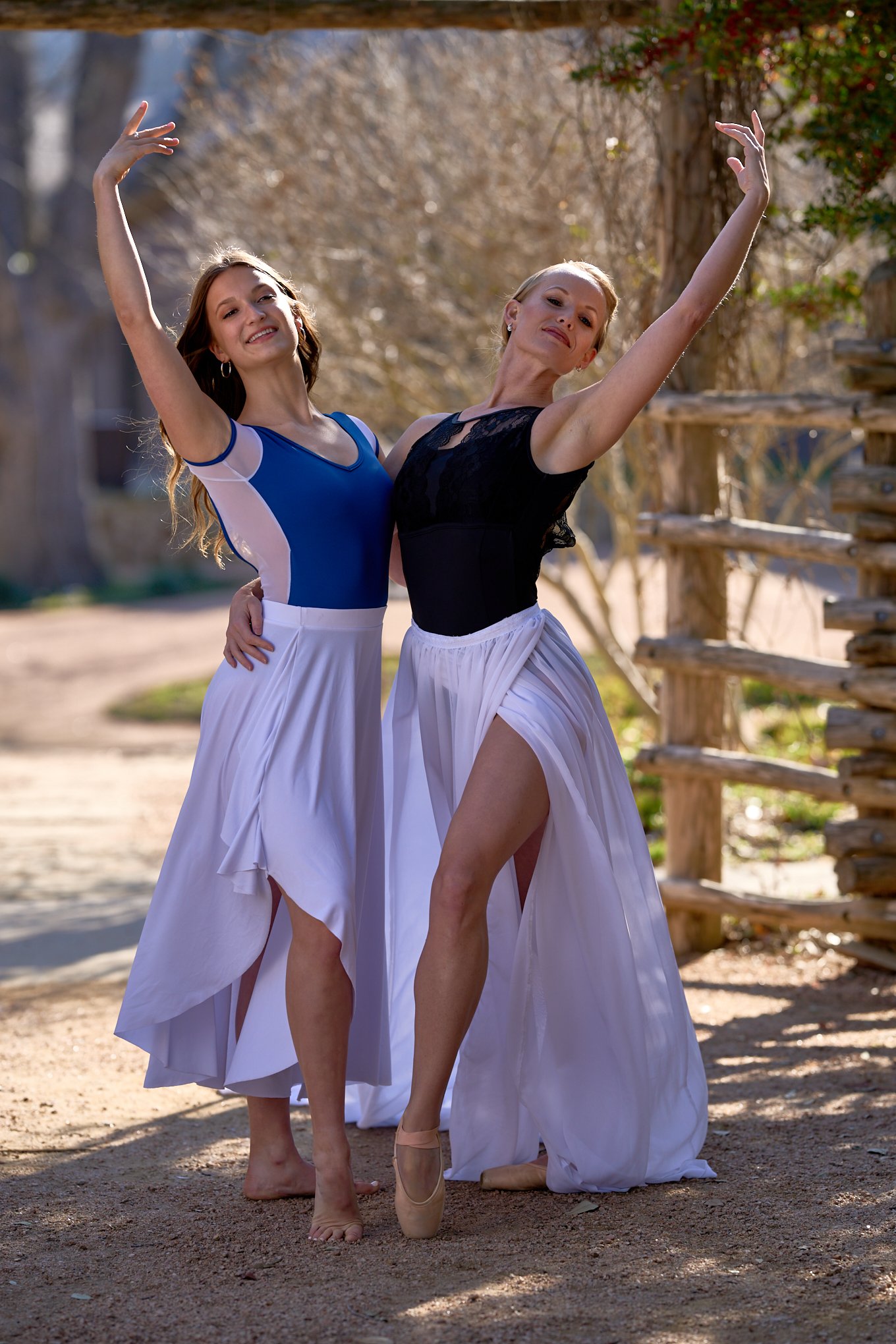
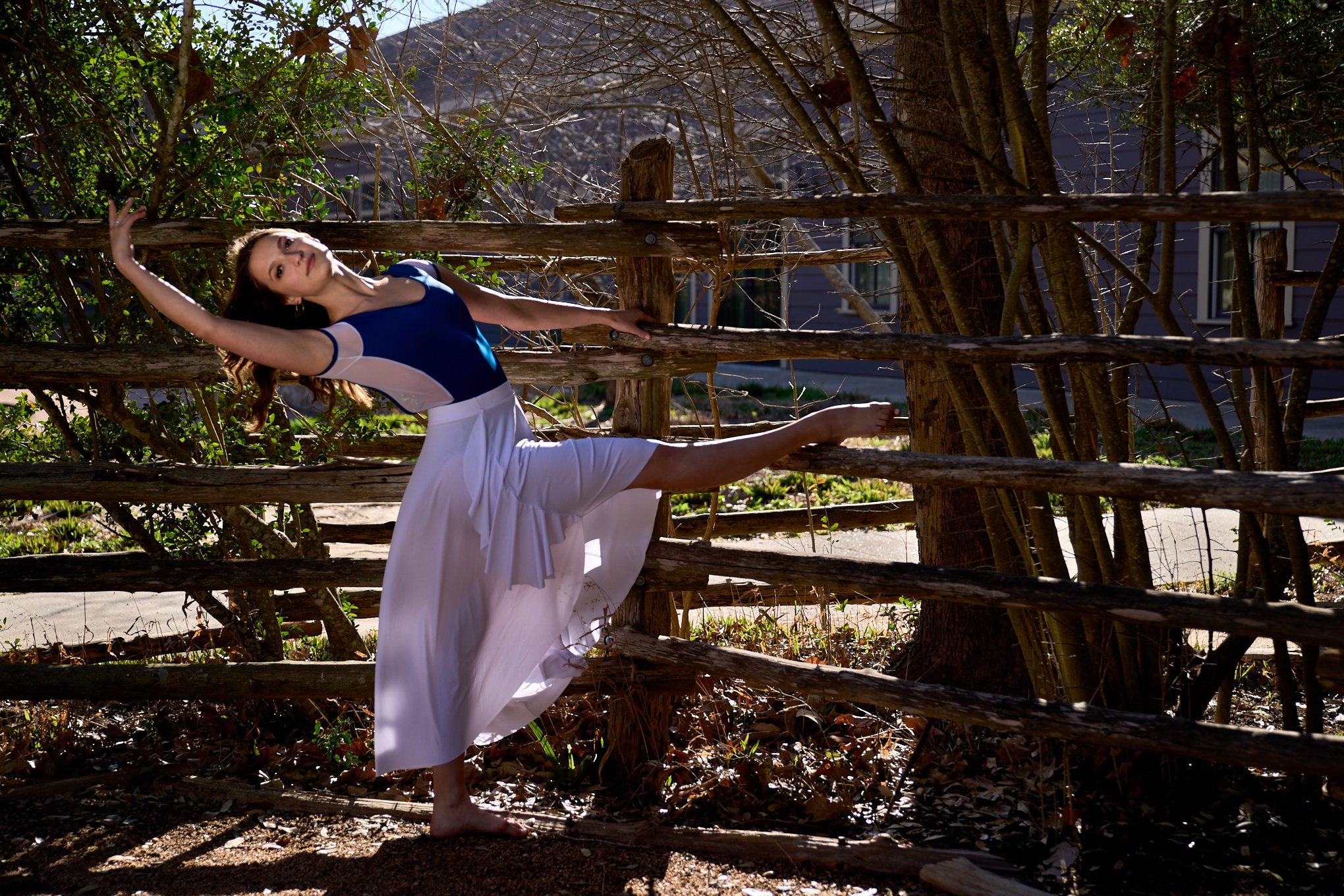

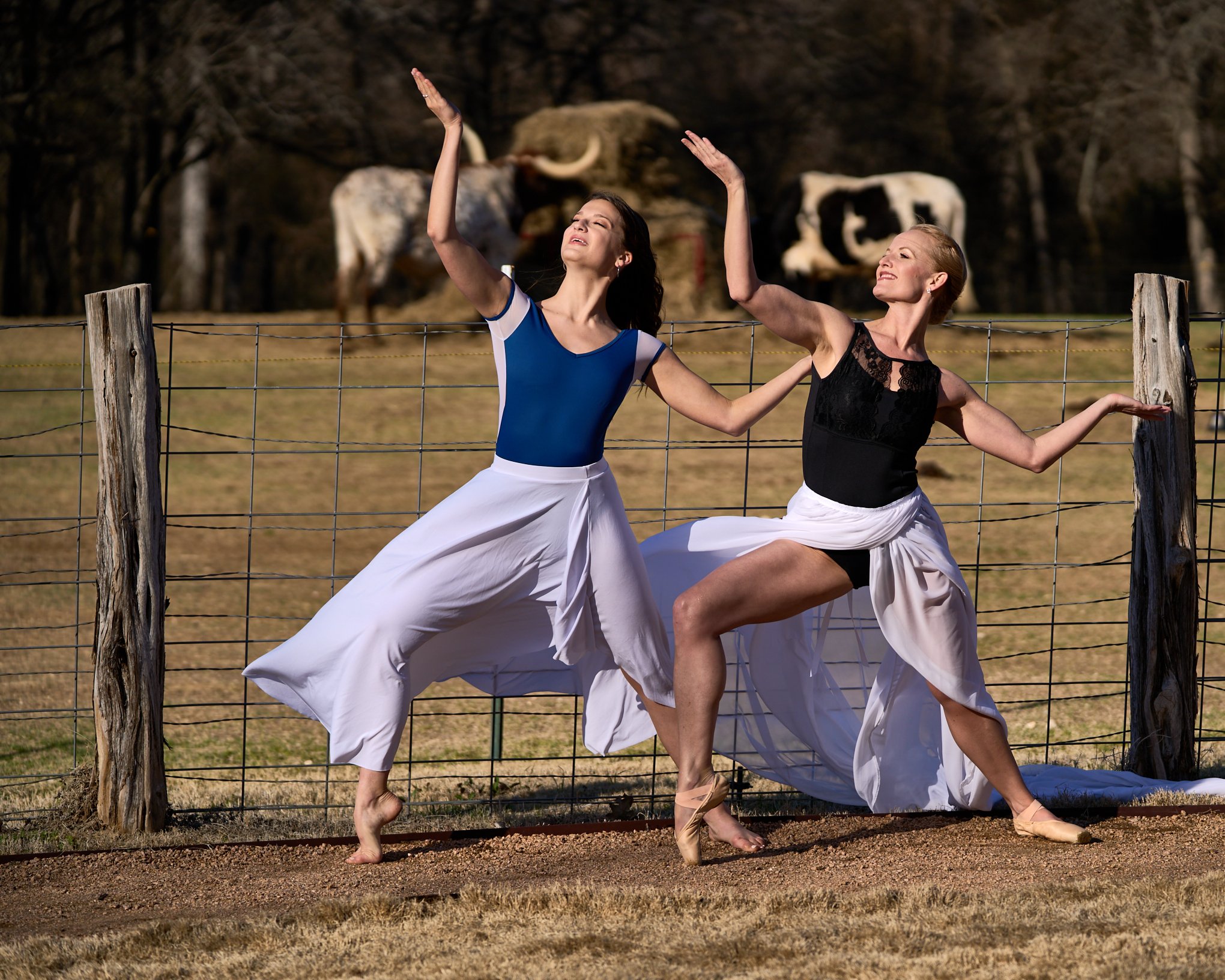
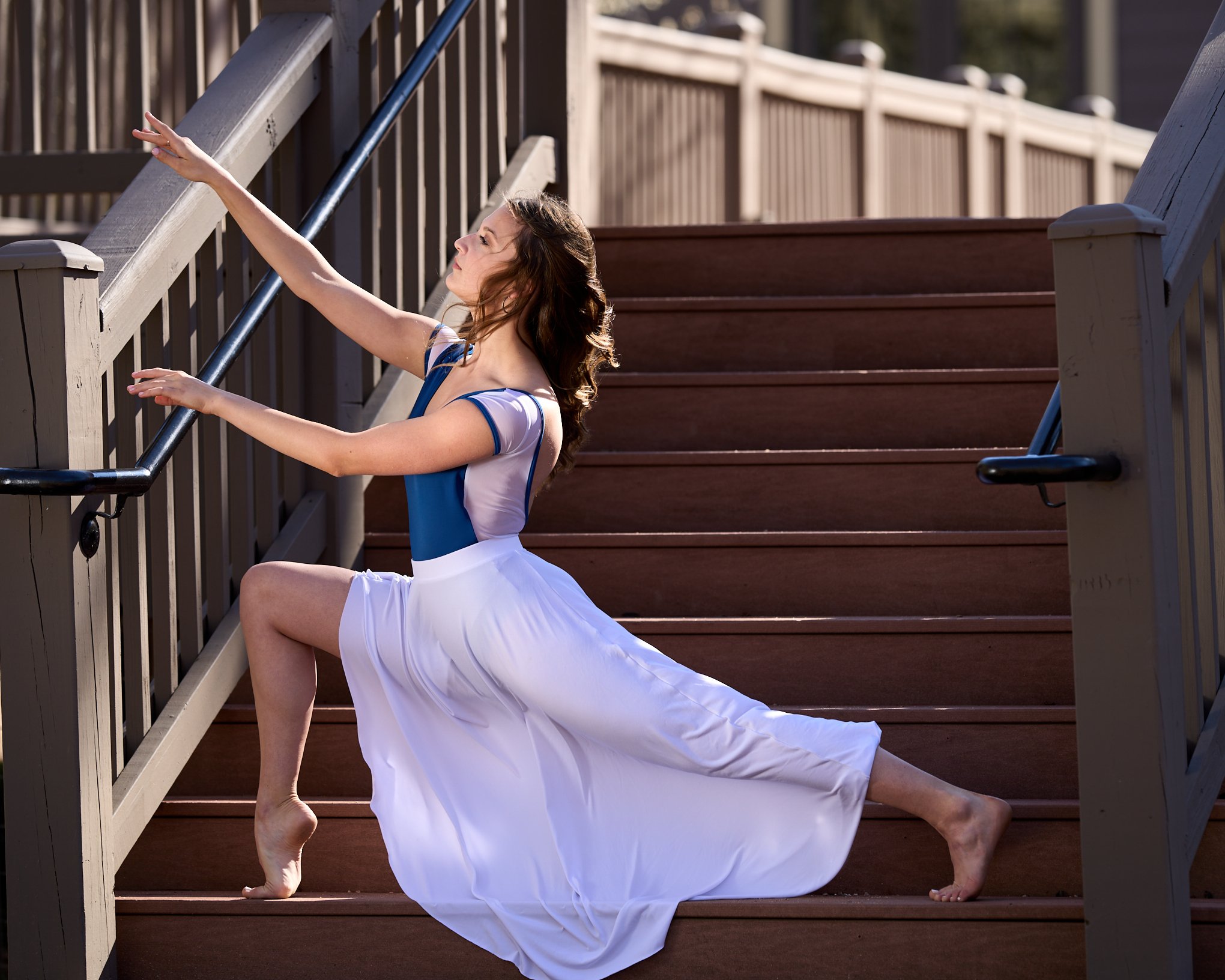
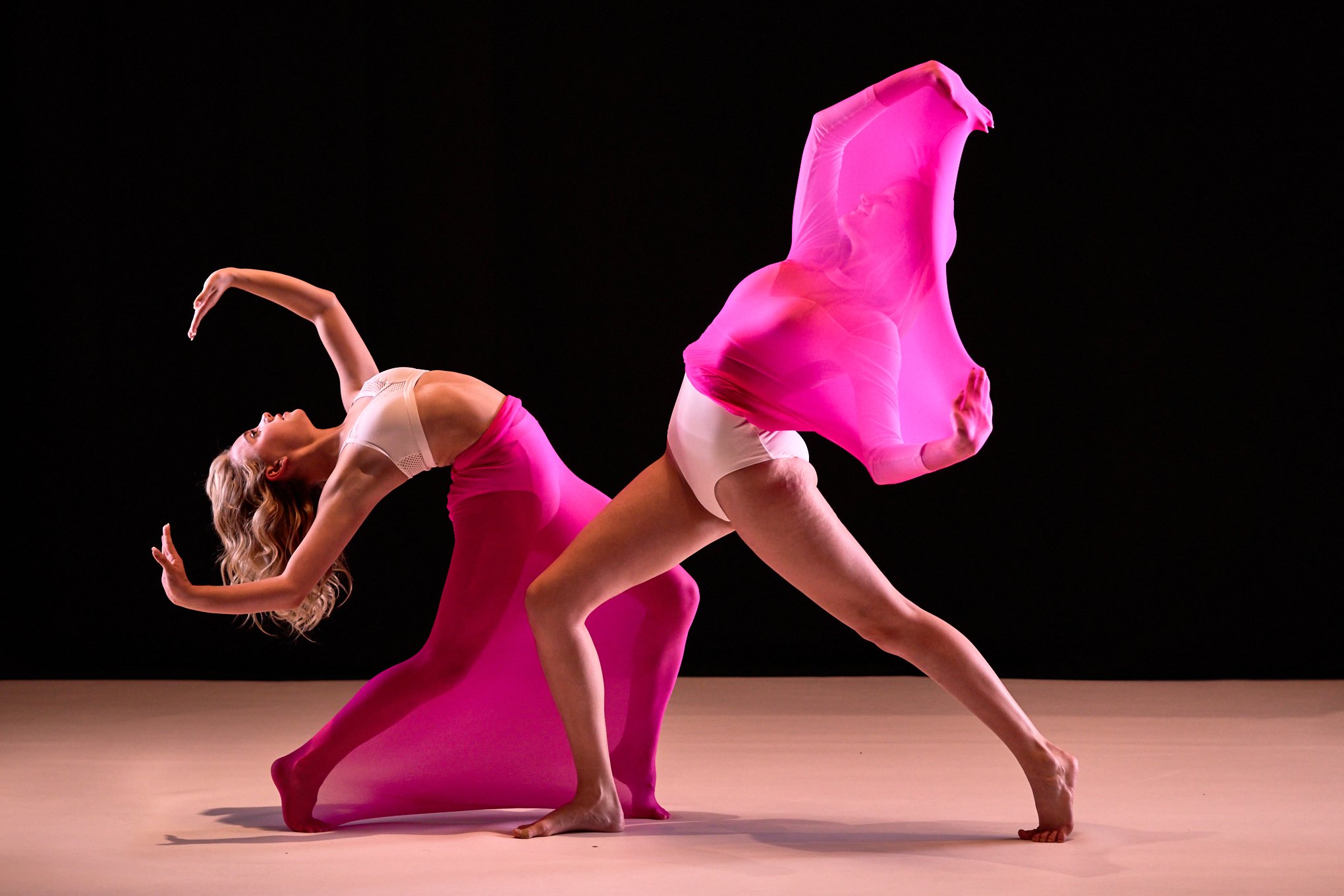
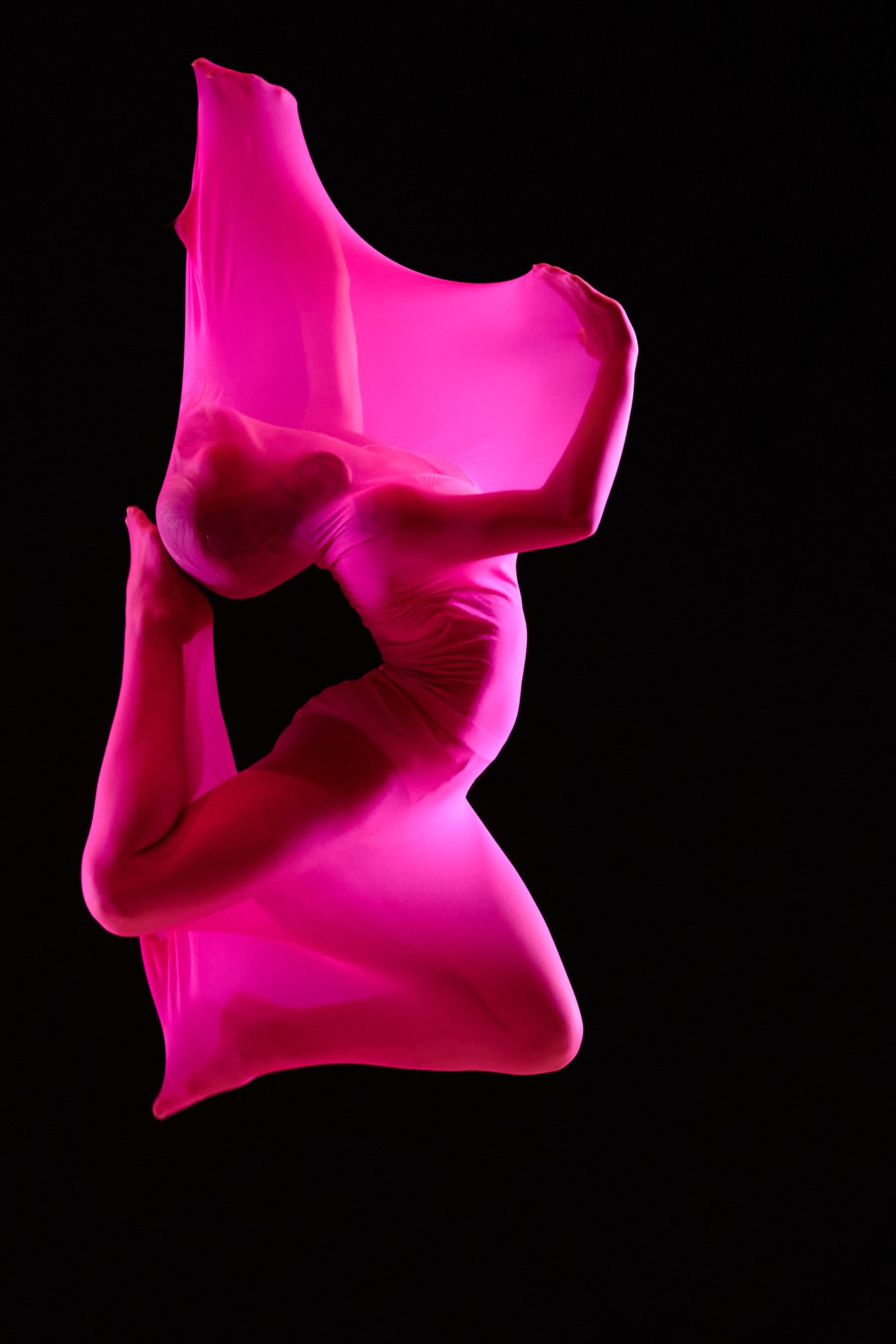
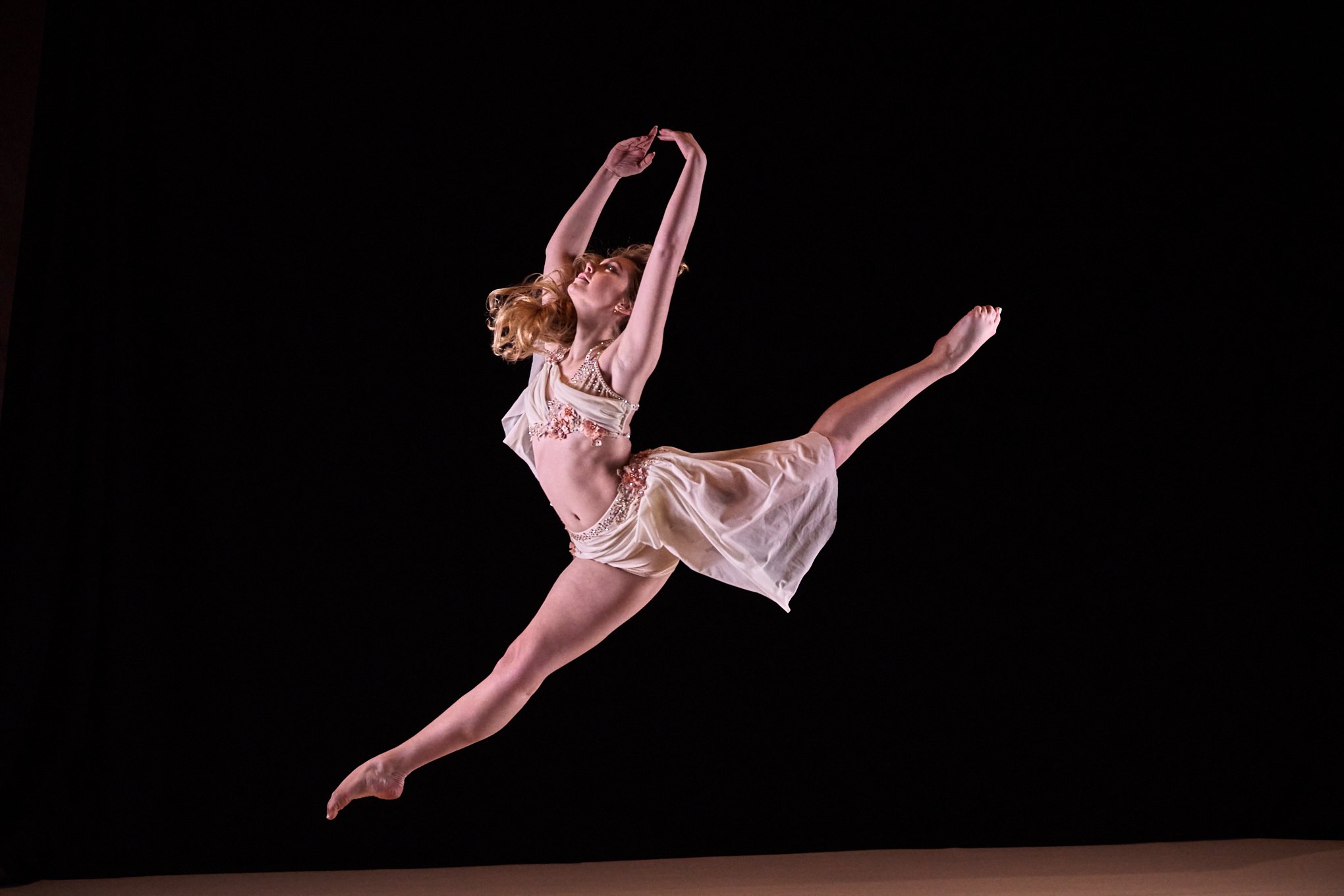
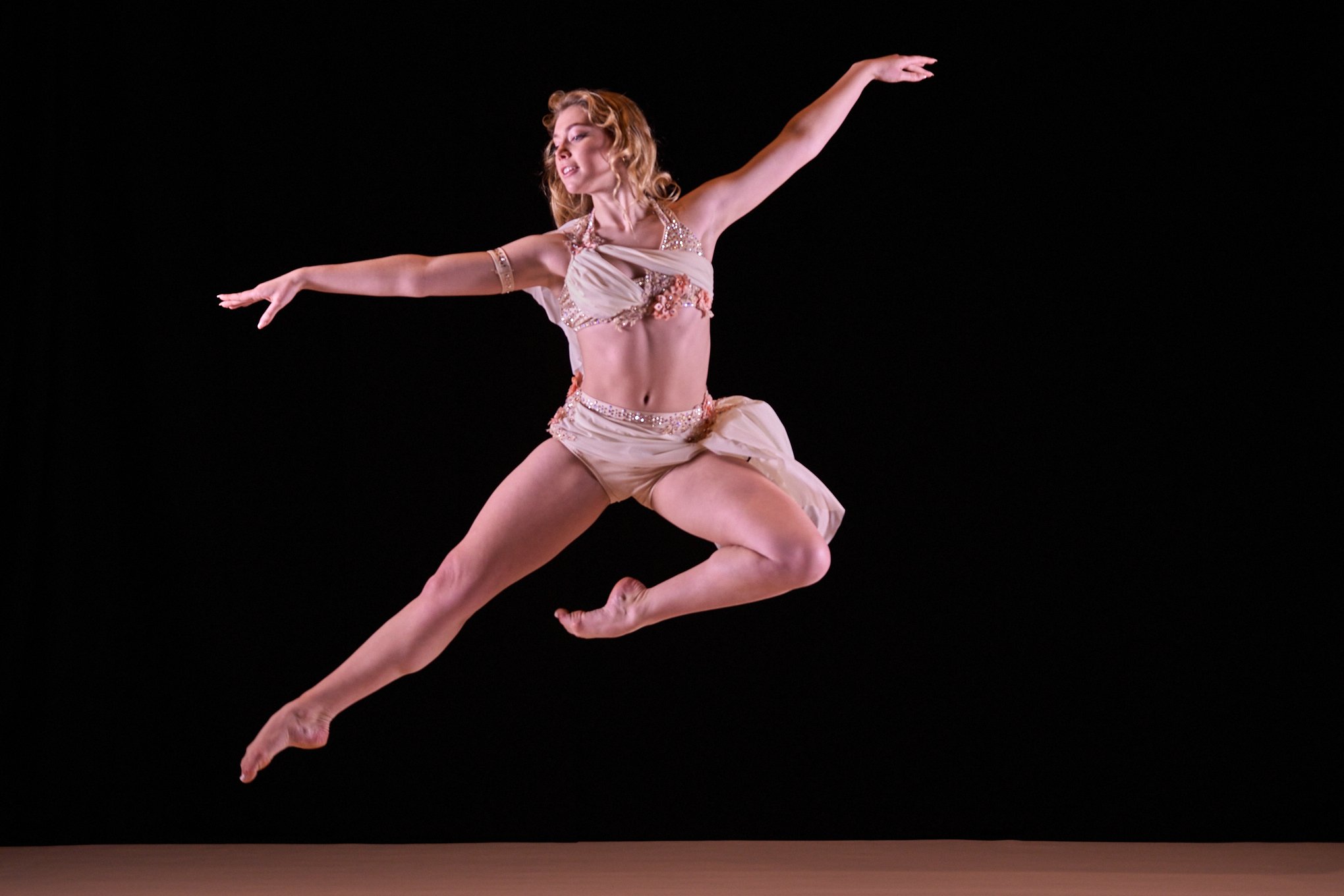
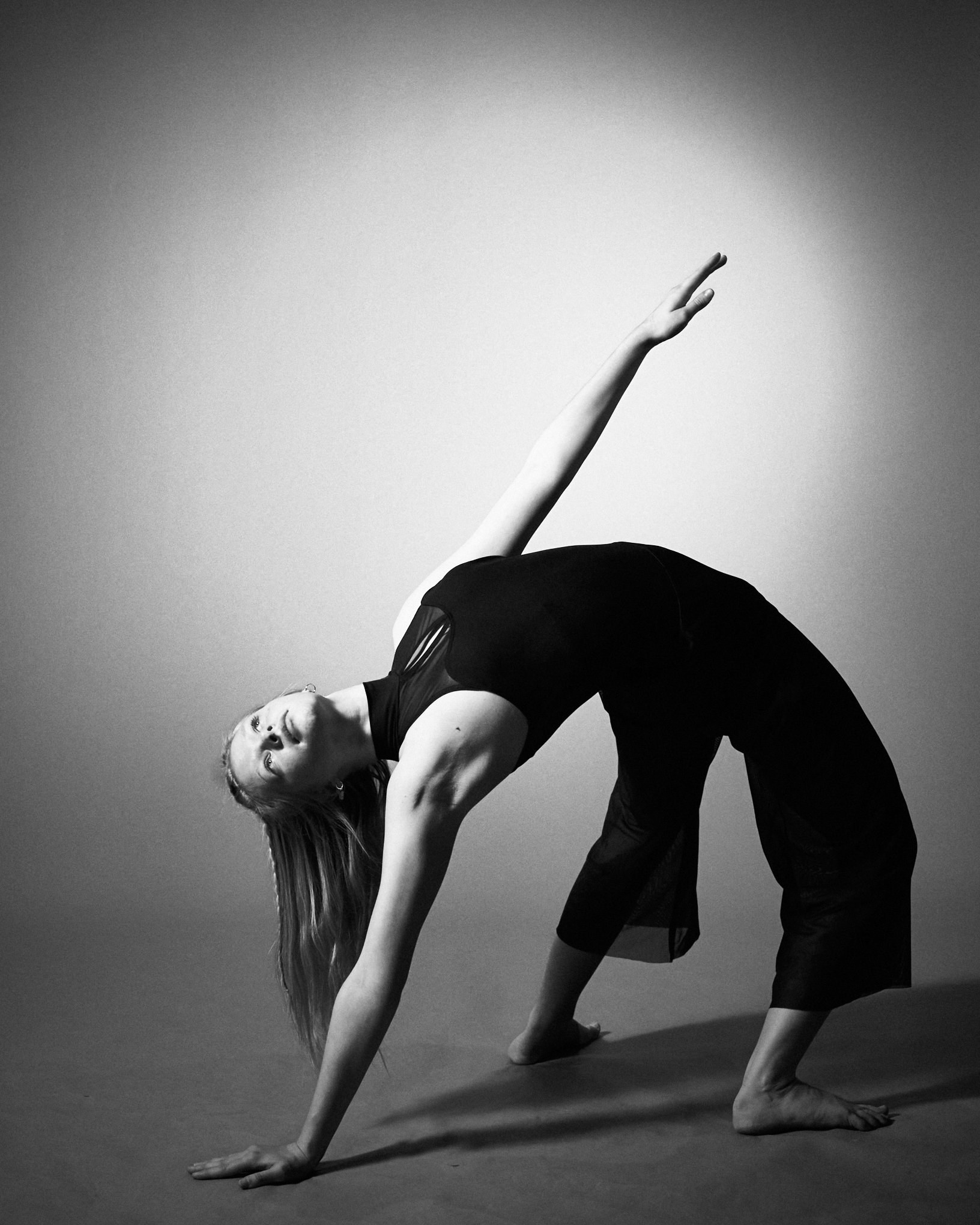
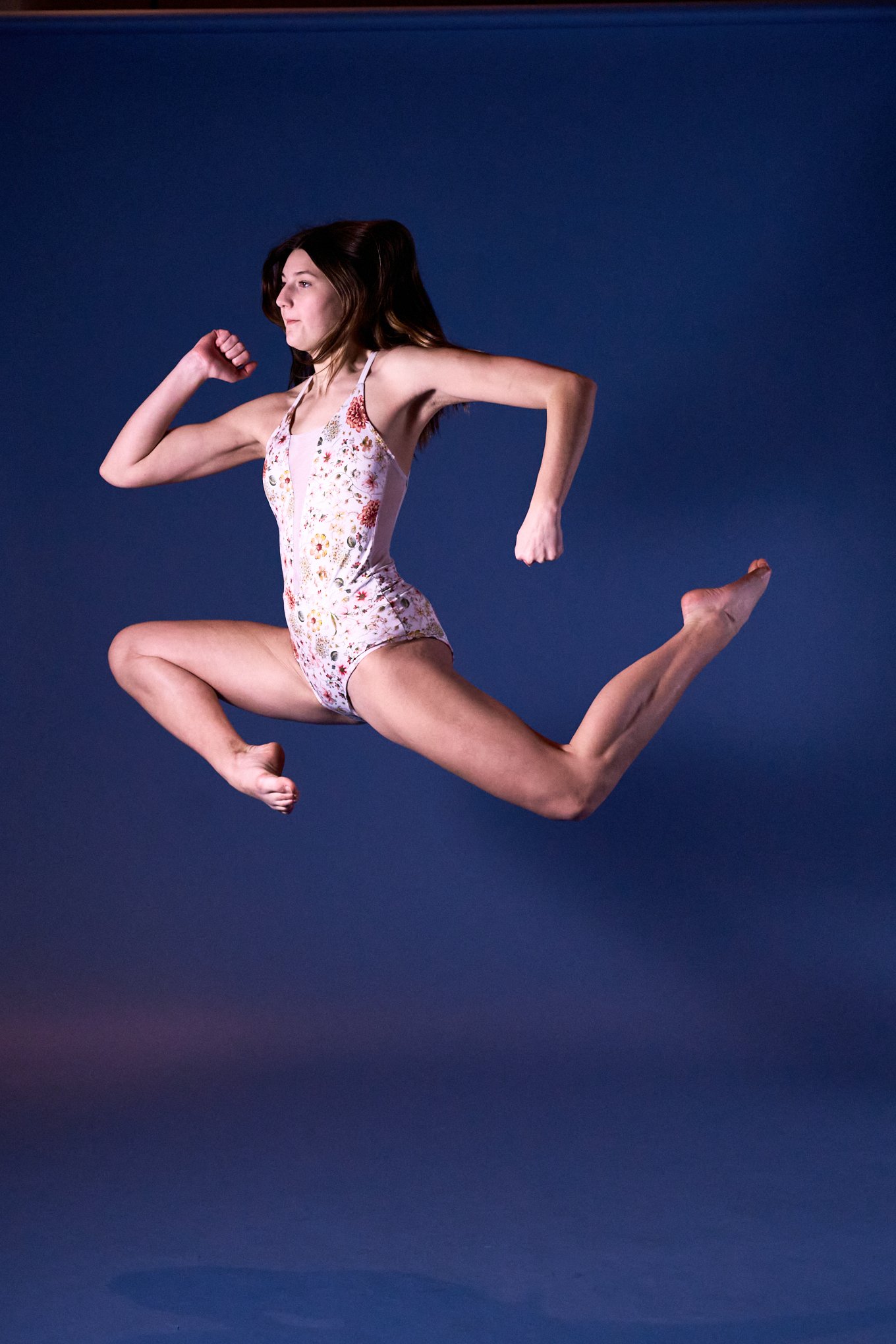
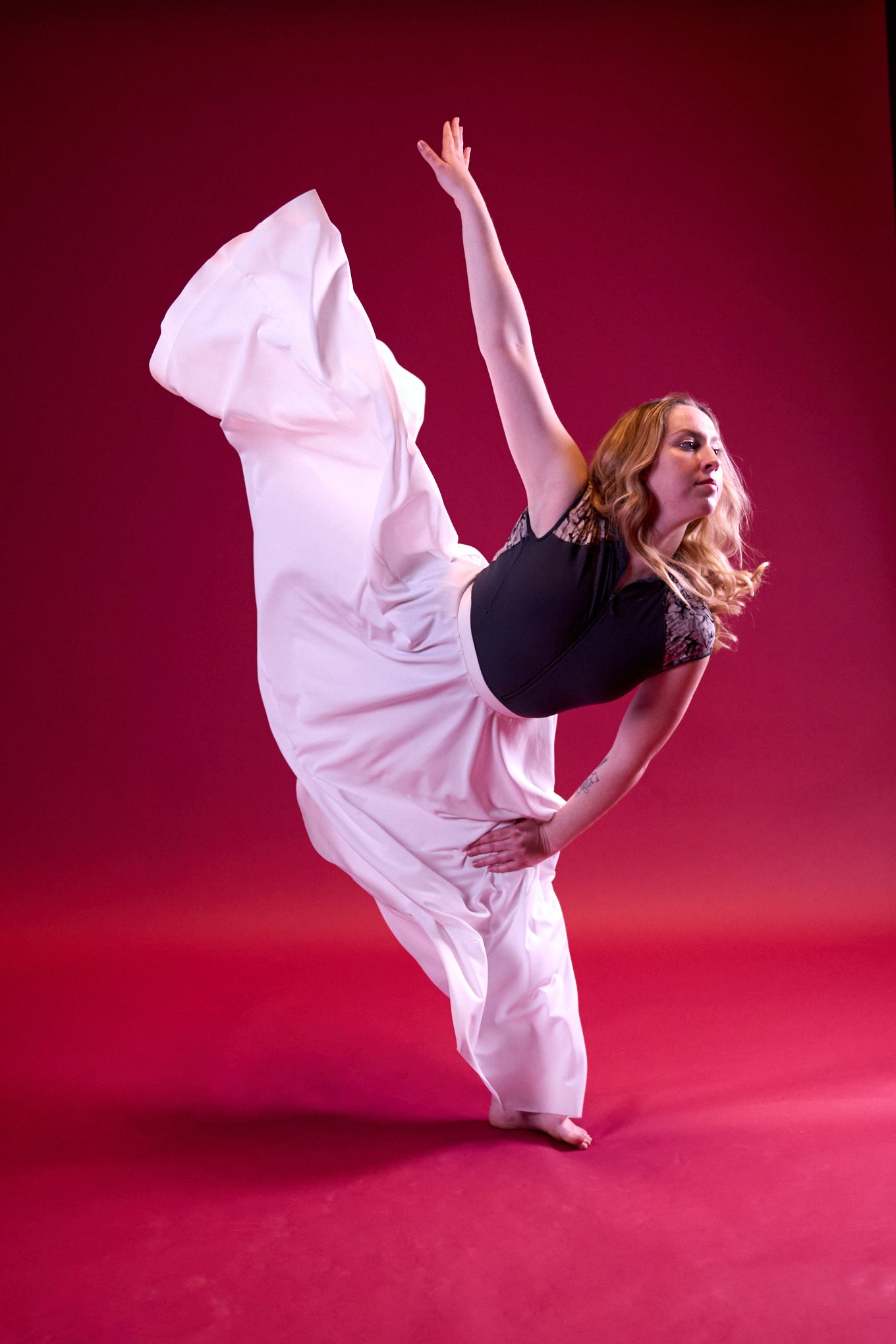

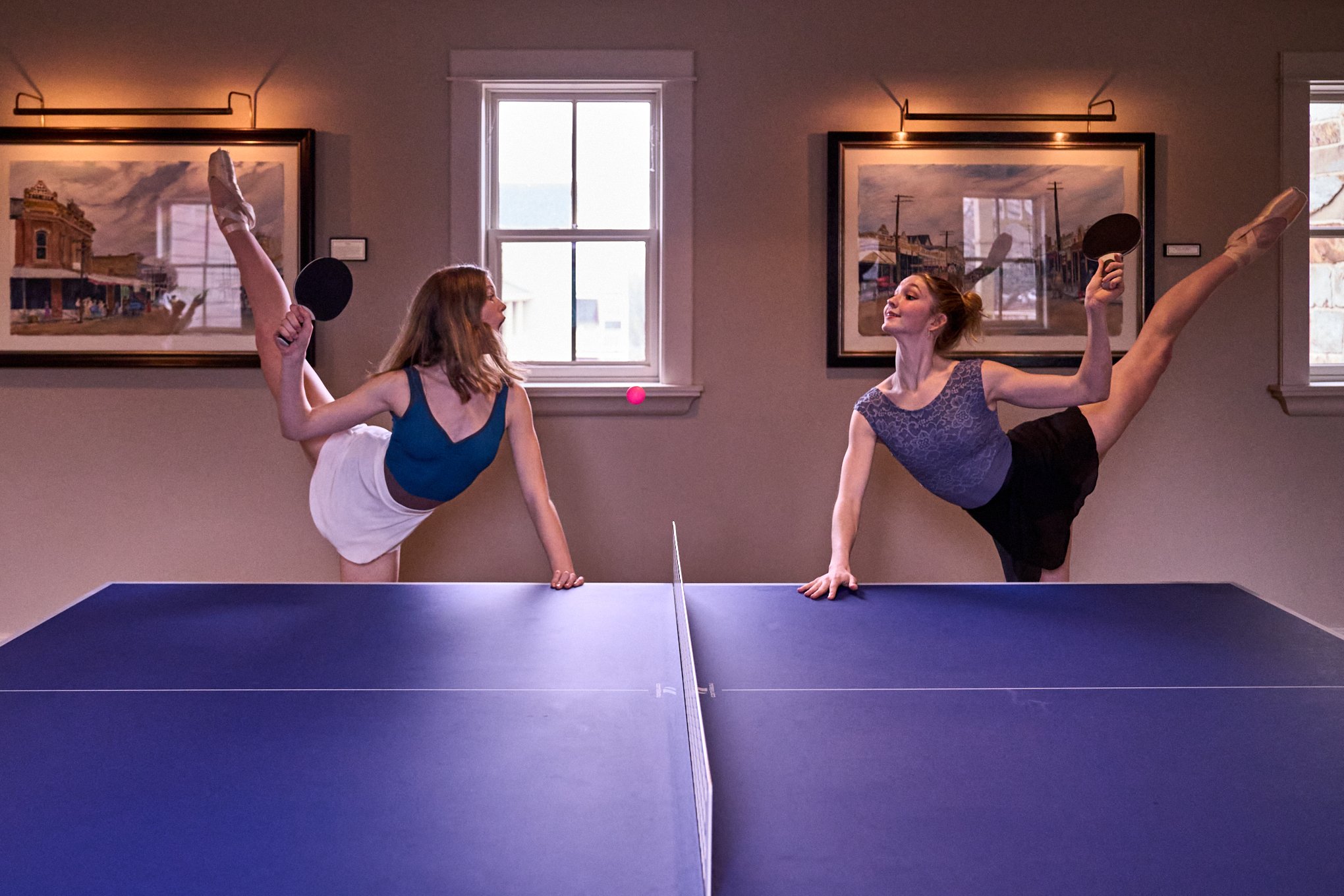
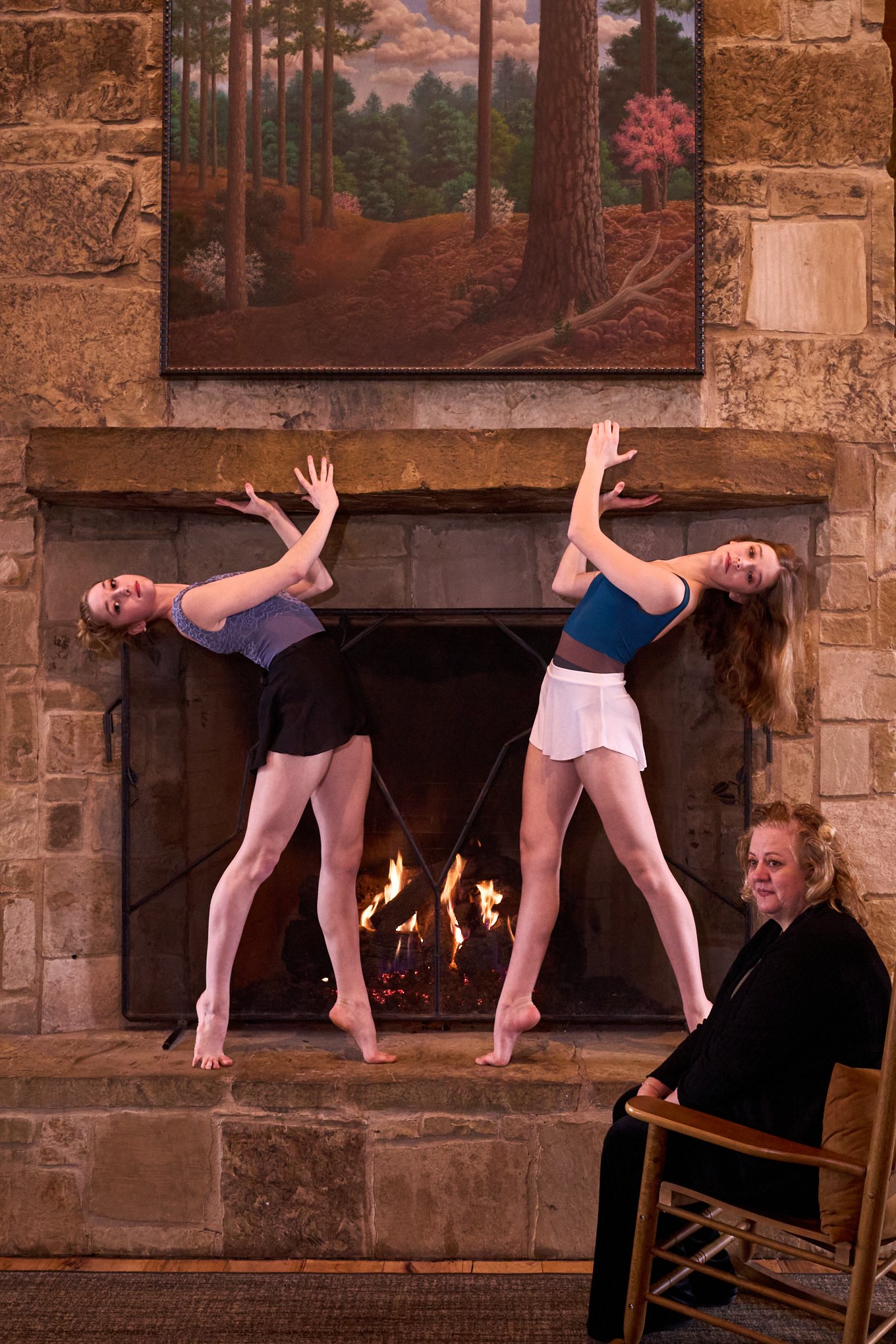
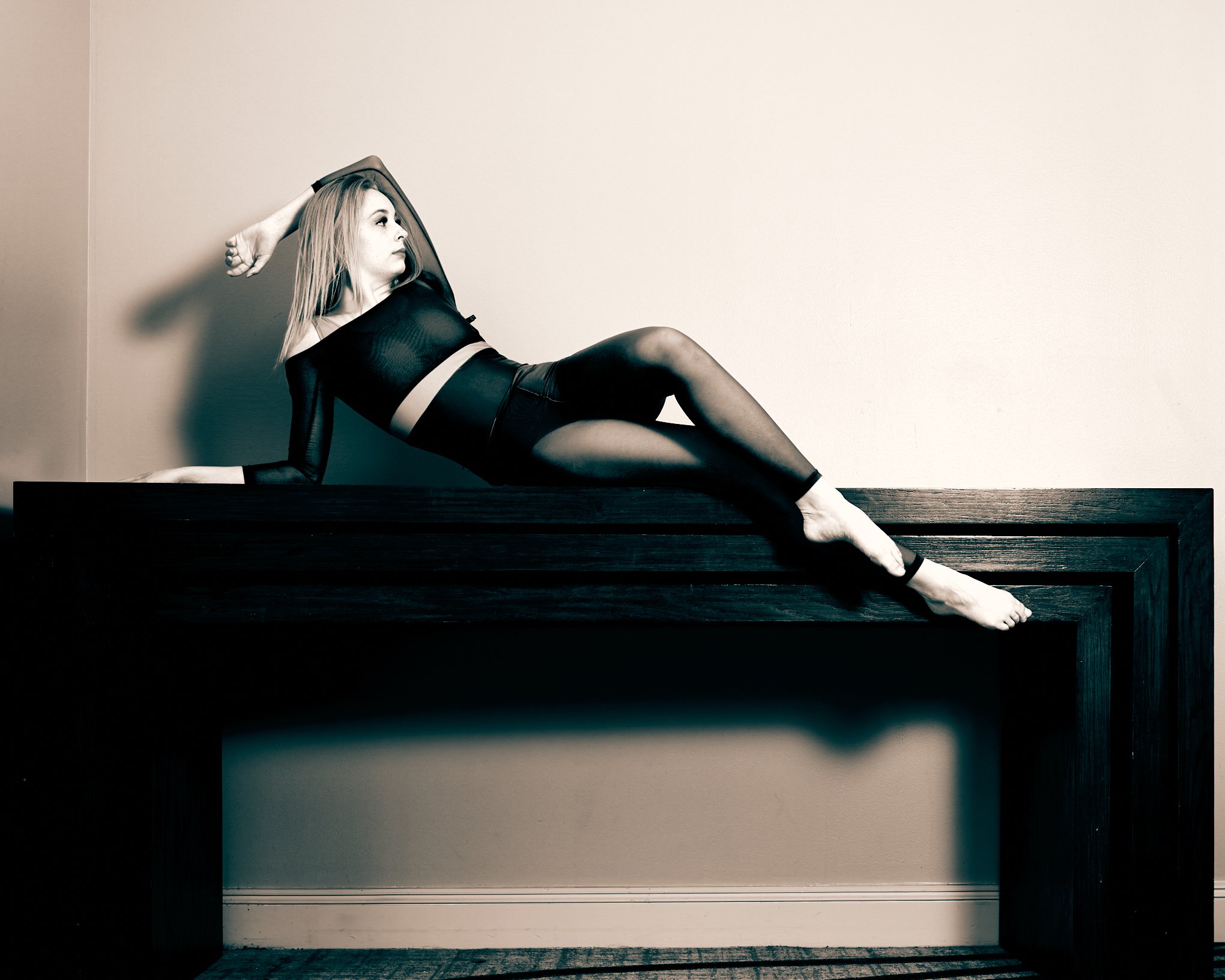
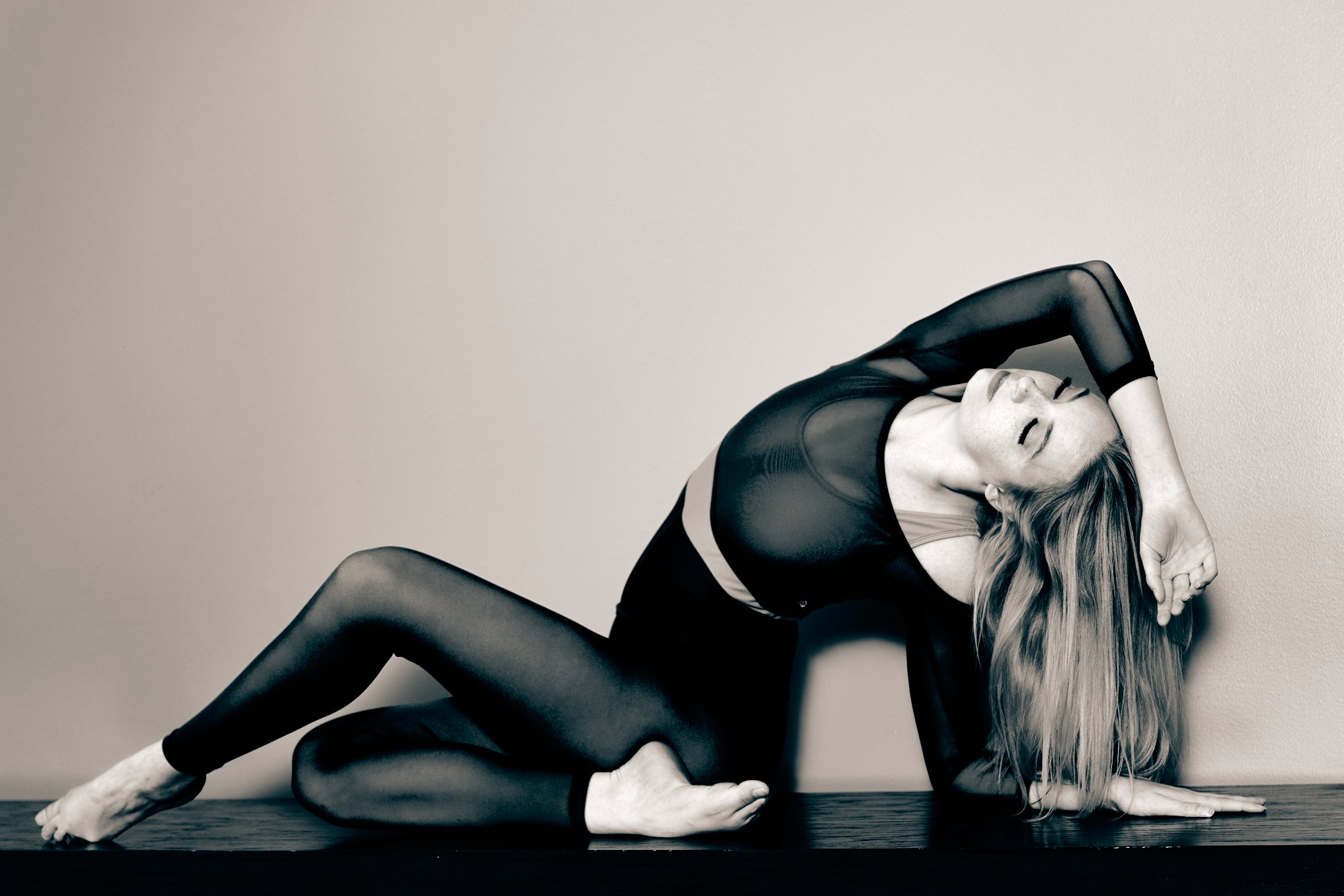
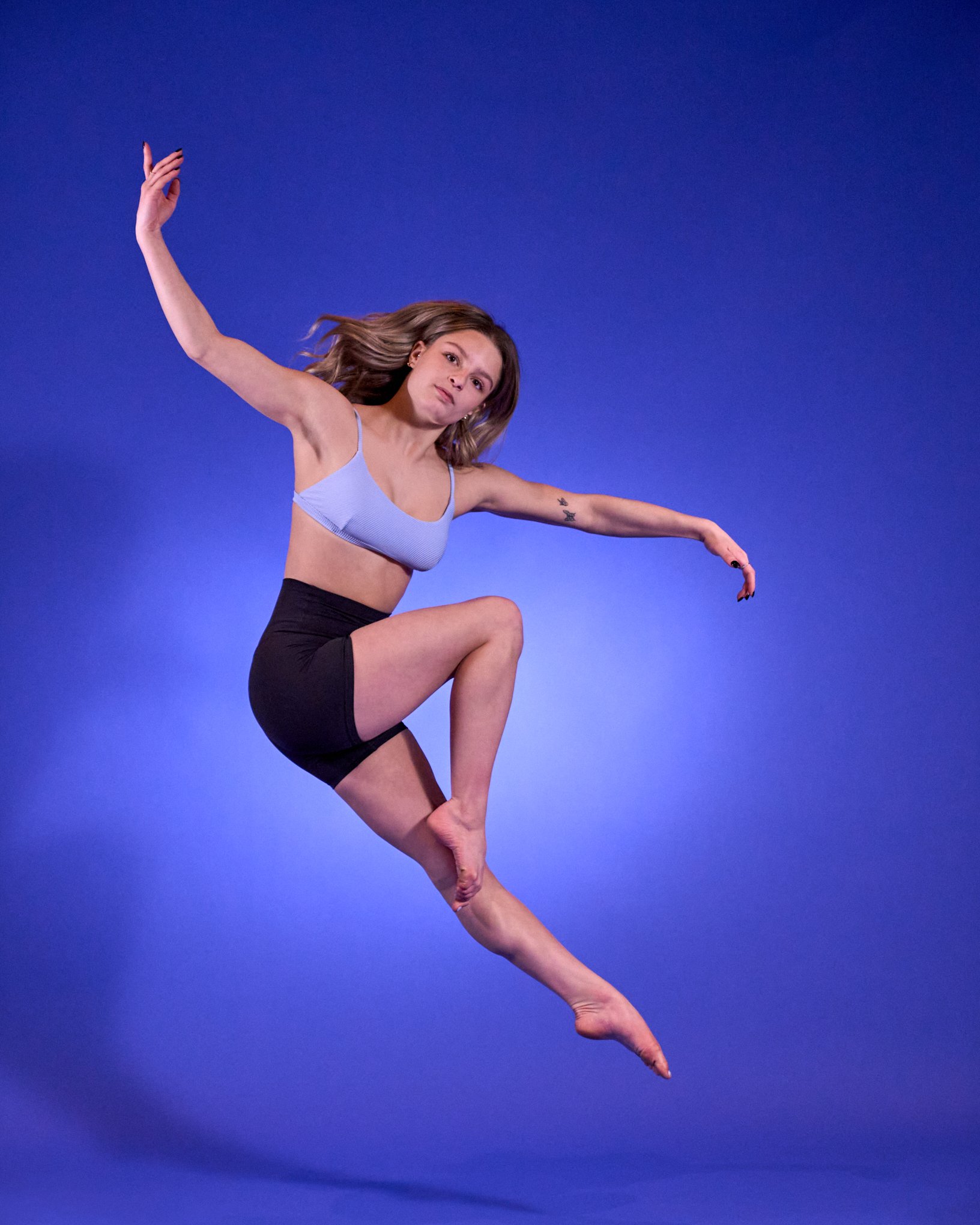
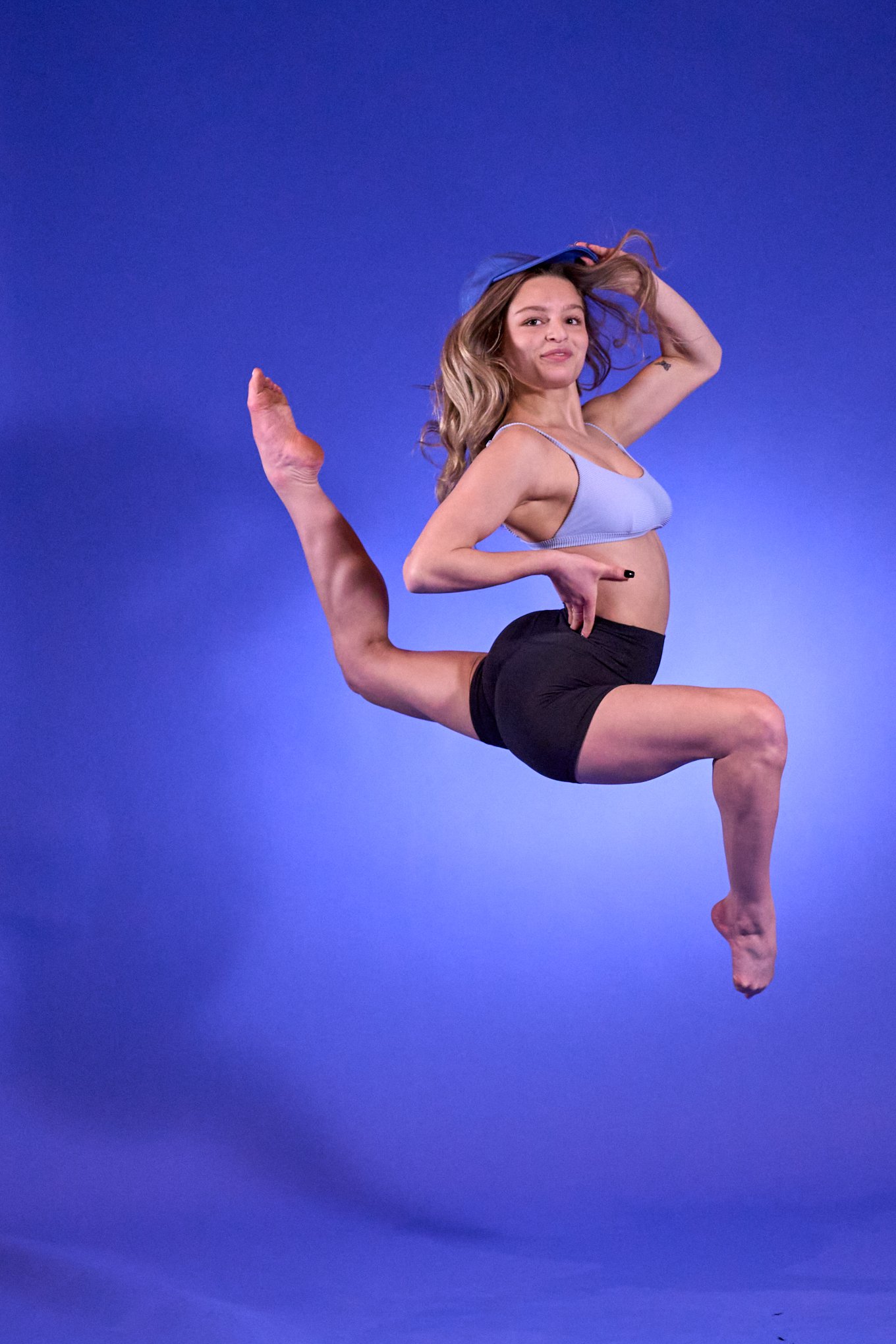
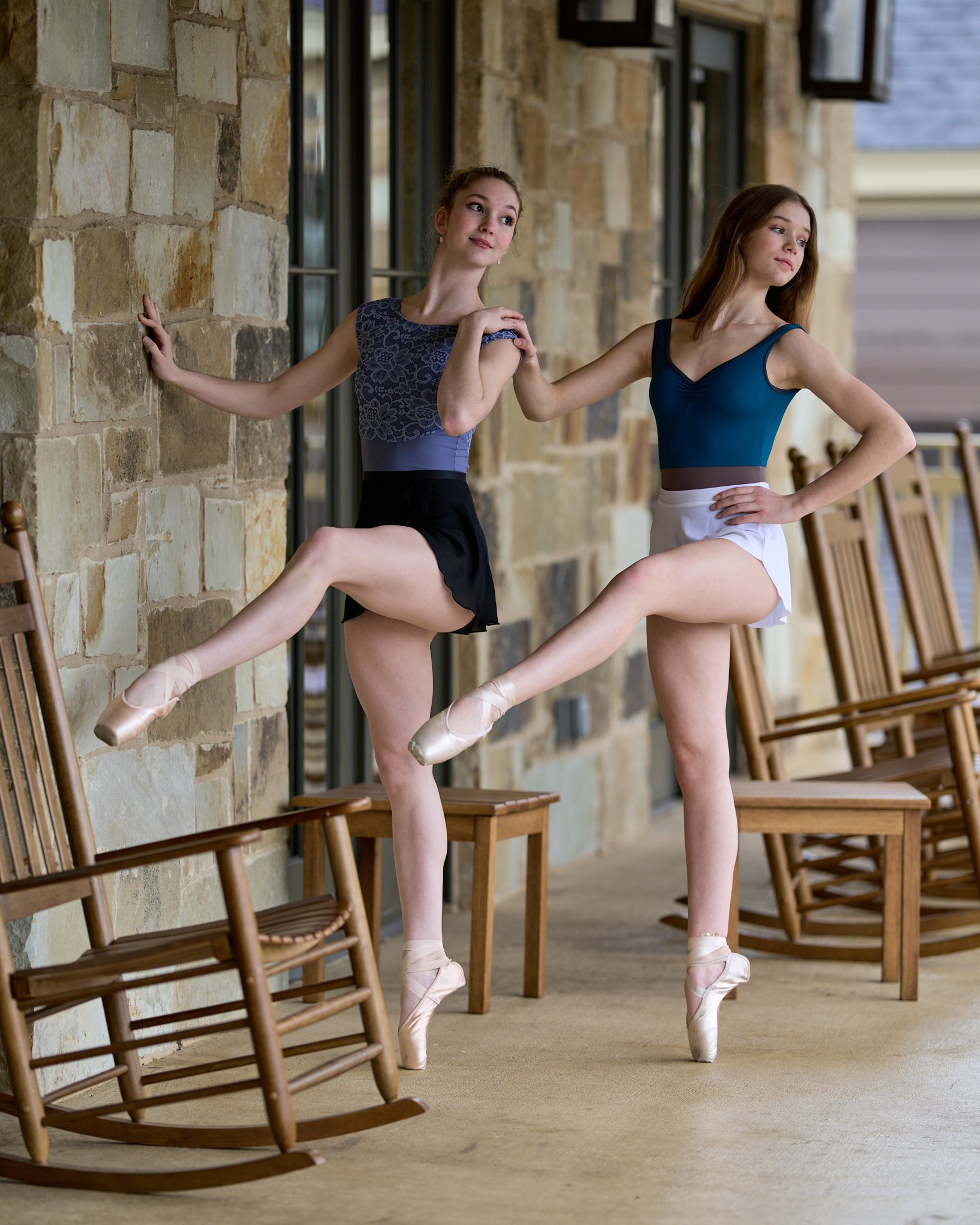
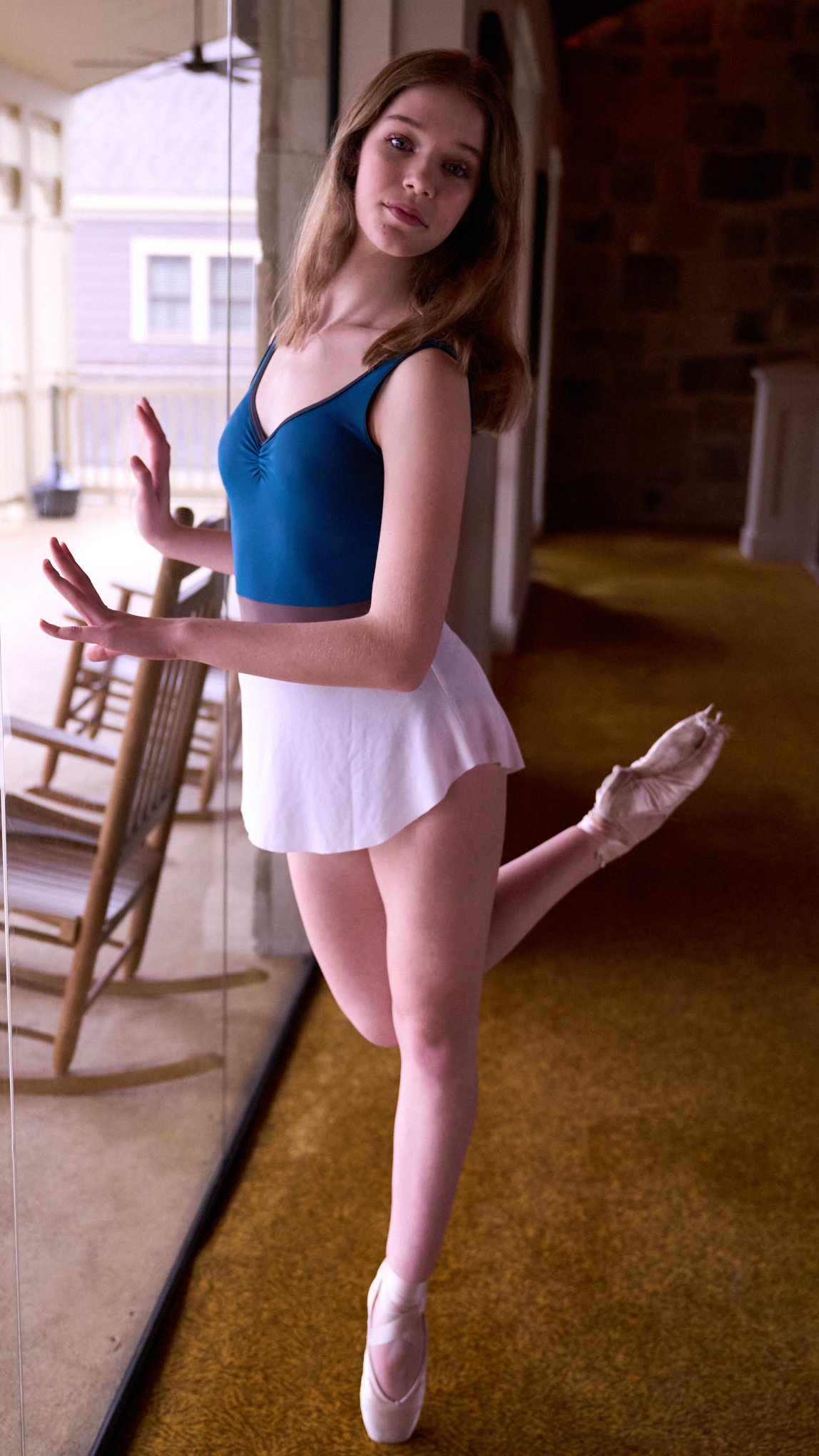
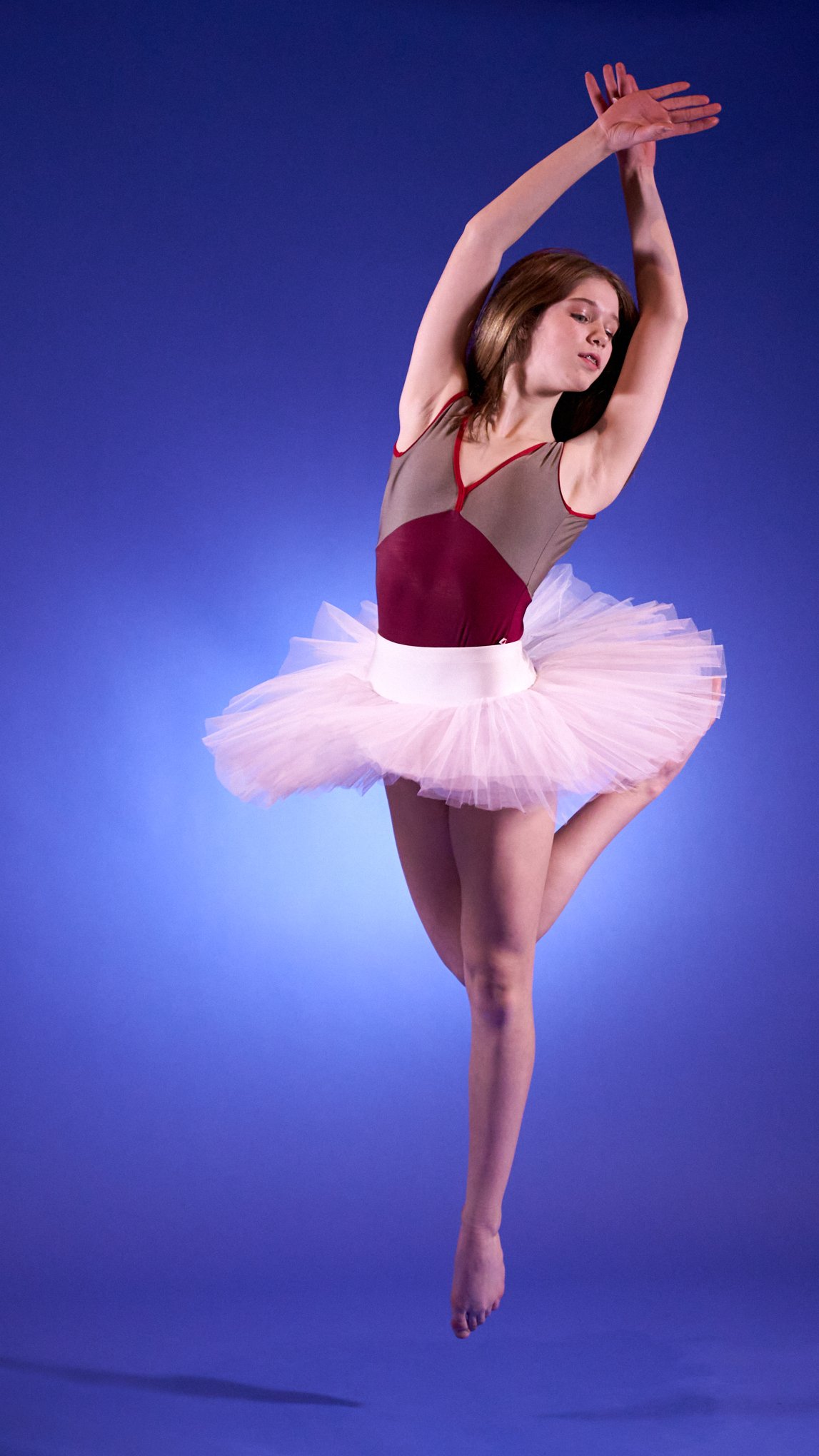

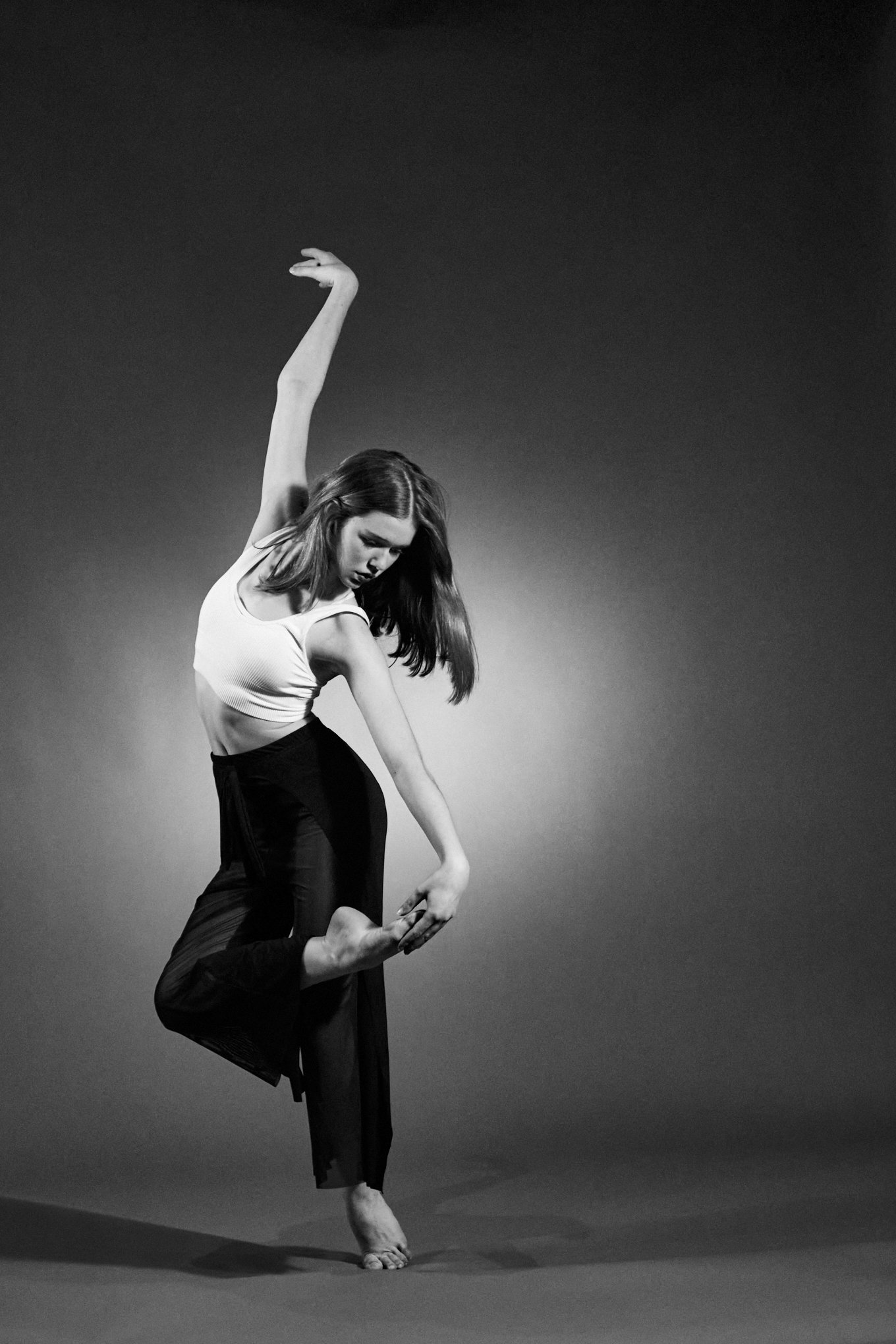
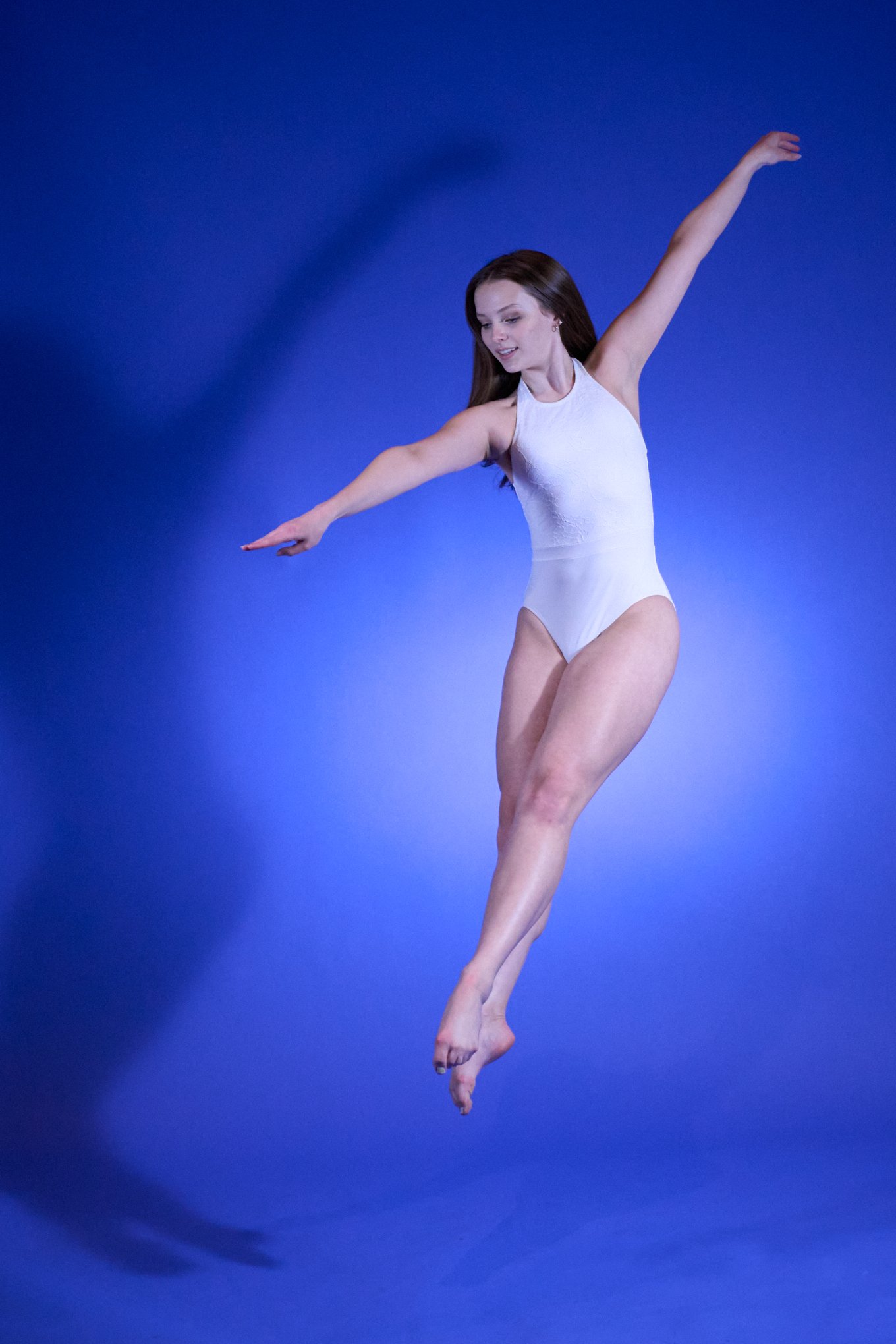
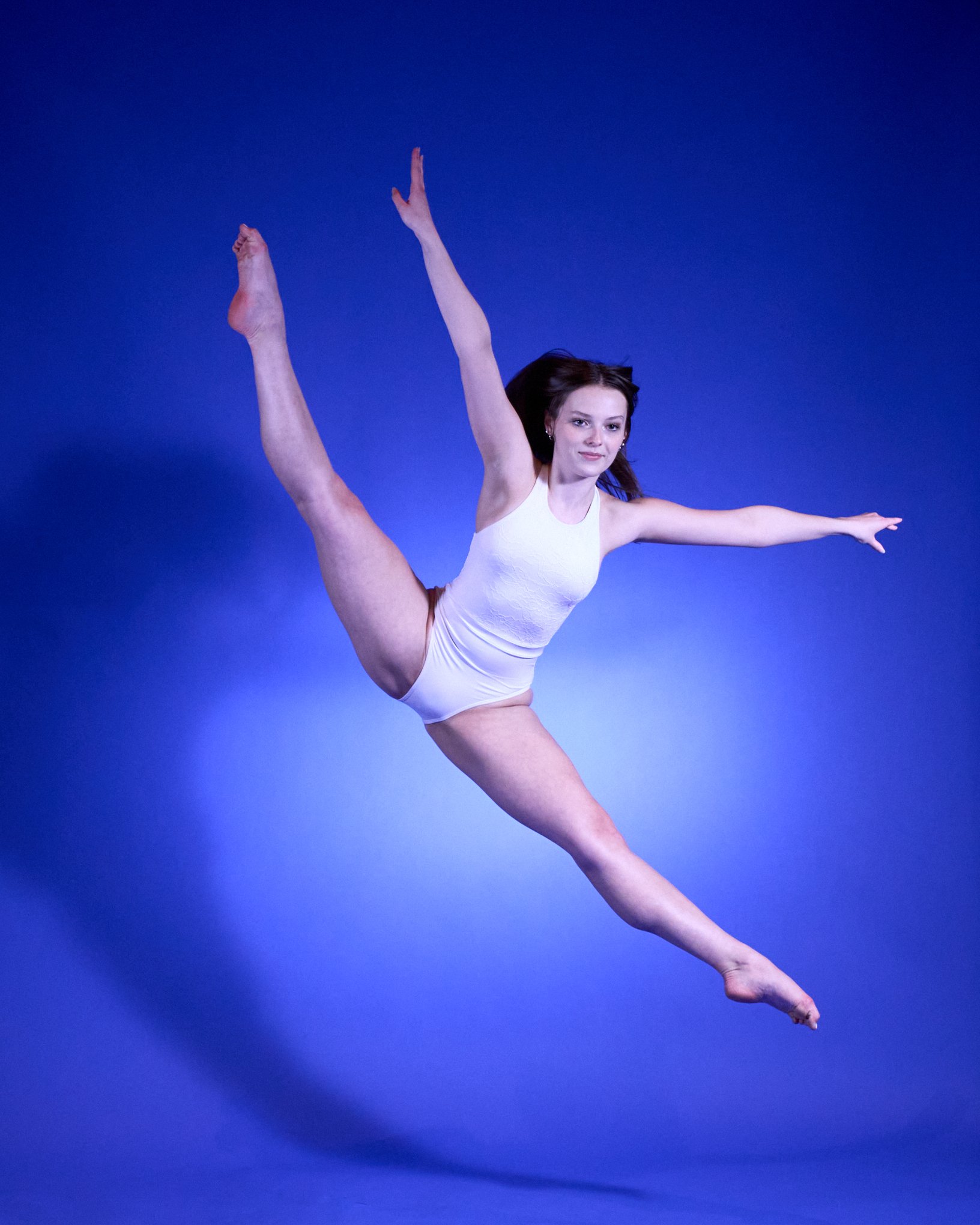
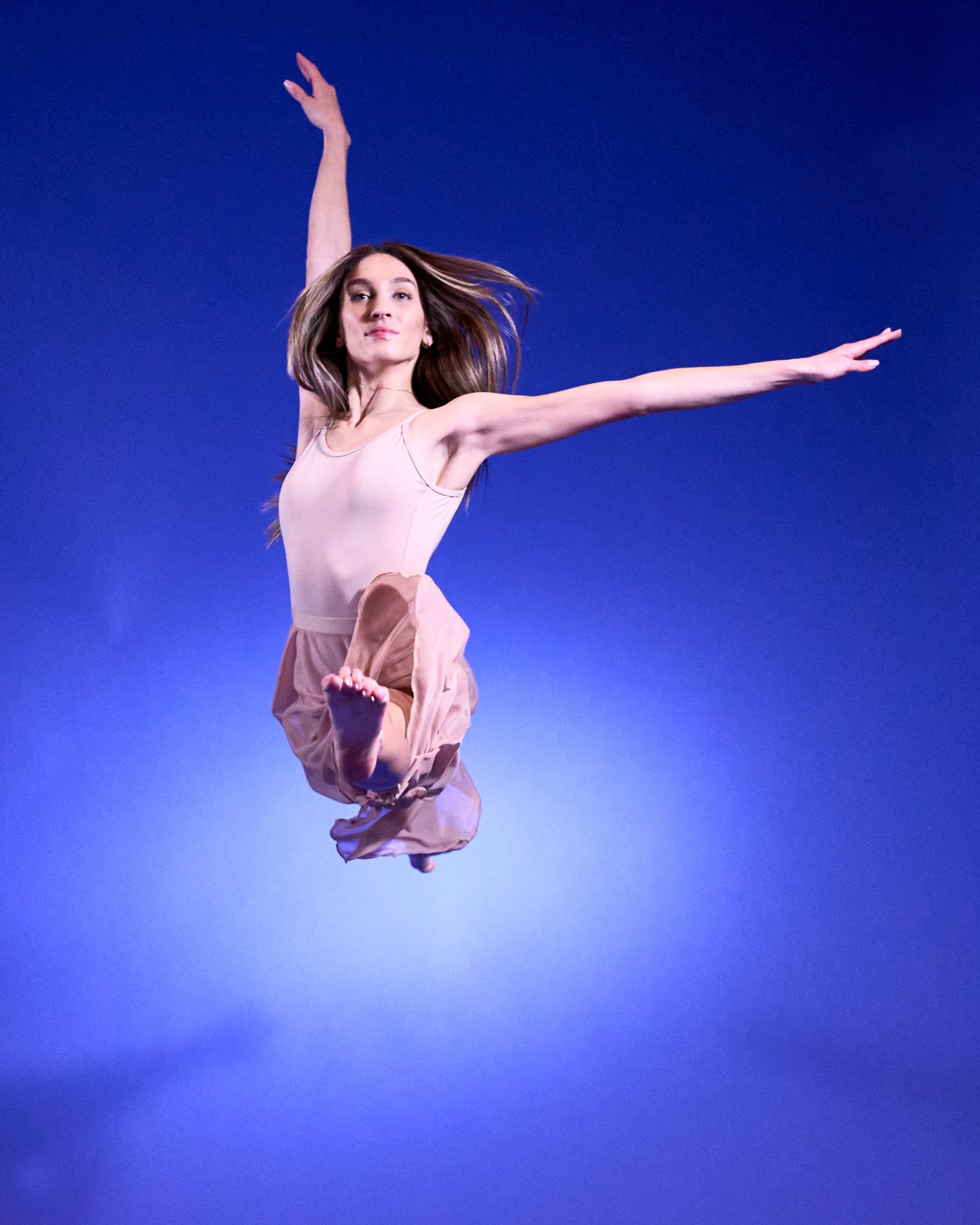

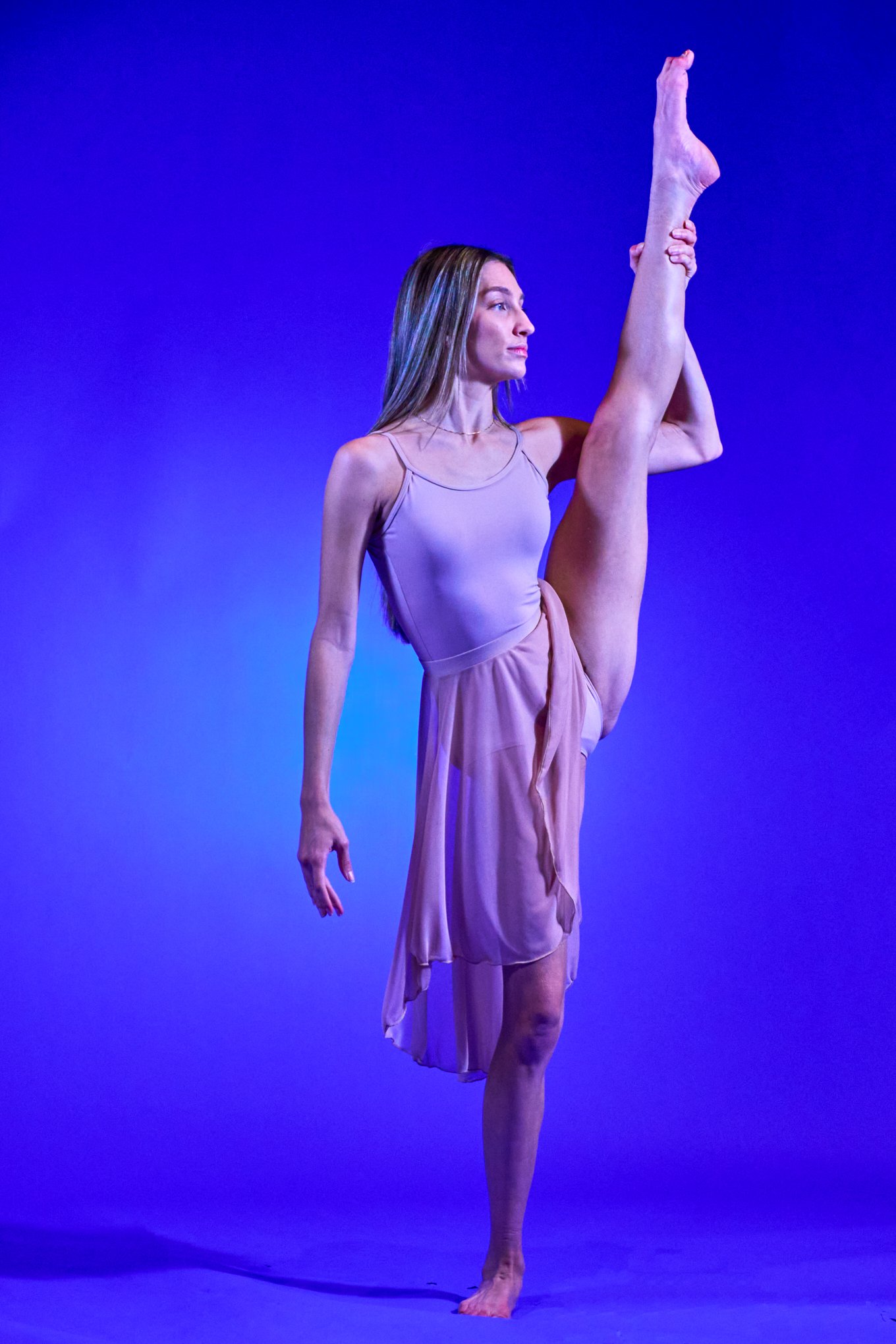
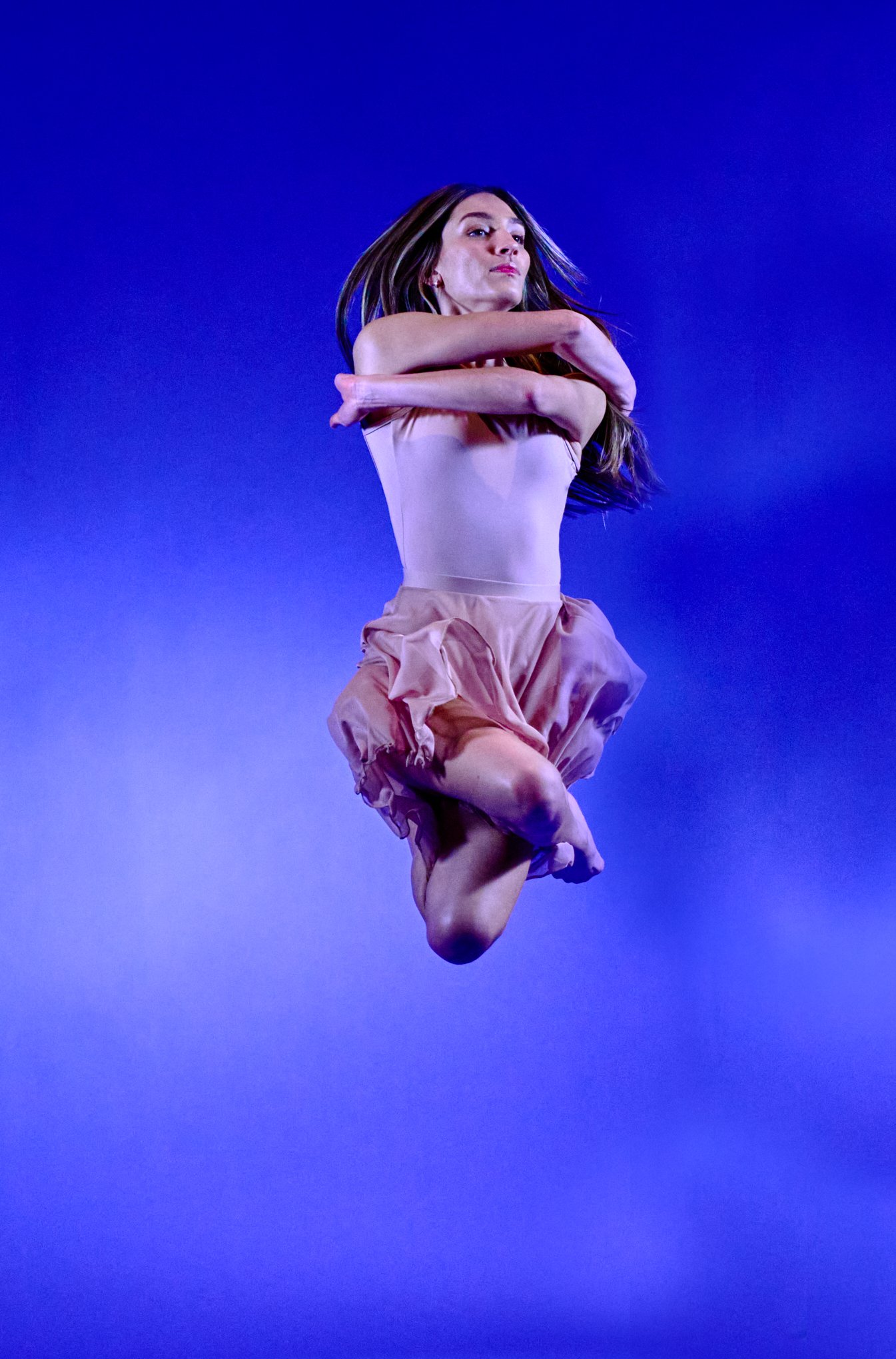
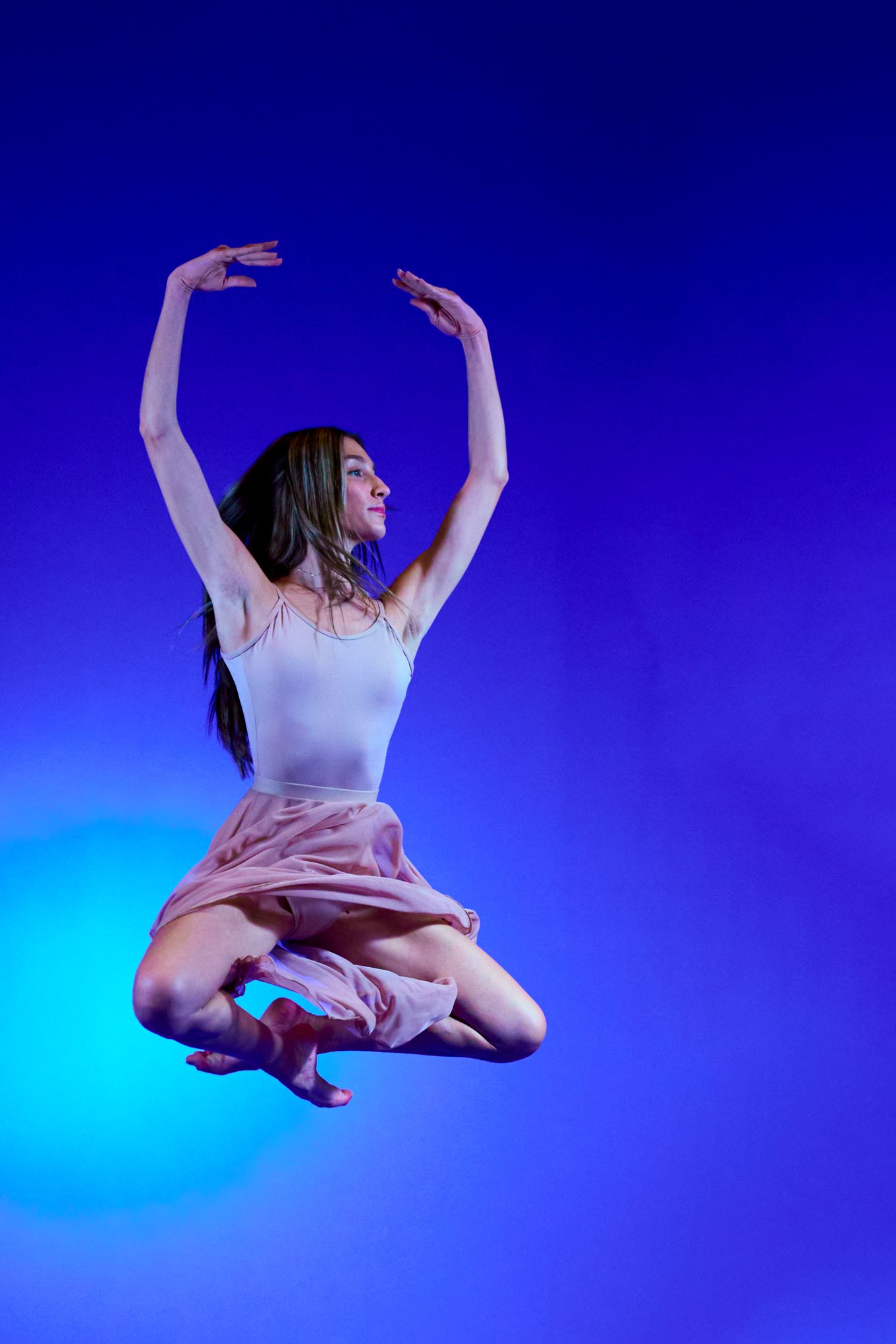
When you select a photographer for your portrait, look for that connection in their work. Did they capture the interaction between the subject and the viewer? If there was more than one subject in the image, did the photographer explore their connection or did they simply record a flat record of the shoot? Interview your prospective photographer. Ask what they are looking for in a portrait. Ask to see examples of images where they hit the mark, or came close to it. Leave time at the end of your shoot for the photographer to explore some creative ideas that may or may not work for you. Take some chances.
Remember, it takes two to tango. When the time comes to rummage through photos of you or your loved ones, you will be glad that you hired a professional photographer who took the time for a pas de deux. Savor the interaction.
Finding balance
“Fall down seven times, get up eight.” (Japanese proverb, Nana korobi ya oki).
@corynn.h
Enter when pulled; turn when pushed. This is how the great judo player Kyuzo Mifune summed up the essence of his art. If that advice was limited to judo contests it would be a tragedy.
Balance is the cornerstone of resilience in life. In judo, every throw requires that you break the balance or the posture of your opponent before executing a technique. So judo — the way of suppleness — is ultimately about maintaining that balance. I was reminded of this when I got an email this morning announcing that a family emergency would keep the great Joe McNally from attending a dance photography conference this week in Austin, Texas. I was scheduled to have Joe review my portfolio. He is a master of his craft and I have been looking forward to this for months. Of course, I hope that his family emergency resolves positively. My personal disappointment is nothing compared to whatever he and his family must be going through.
Now what? I will breathe deep and move on. The Pas de Deux photography conference is packed full of opportunities with great photographers. I will make good use of my time there, come what may.
Prof. Tom Hill throws Robert Kaufer with uki otoshi (floating drop).
Photography happens at the speed of light. Invariably, something goes wrong. Professional photography meets those challenges and resolves them. Of course, sometimes we fail. When that happens, the only thing to do is admit it, analyze what went wrong and try again. Fall down seven times, get up eight.
Nicole and Michelle Valencia
Yesterday I resolved one of those failures. I took family photos awhile back and they came out great. But we had limited time in a rental studio and we forgot to make a separate portrait of the mother and daughter. I told them I would be happy to shoot the two of them in my home studio at no charge. After they went through the images of the entire family and picked out those they wanted printed, we had a successful portrait session.
When you’re looking for a professional photographer you should be clear about your expectations. Ask what happens if things go wrong. No one can guarantee that you will like how you look in a photo. But if you like the photographer’s work, then chances are you will look great to those who know you. If disaster strikes — such as a family emergency, a technical catastrophe with the photographic equipment, forgetting a requested pose — you should expect a professional to make things right.
Grand jeté
When a body moves, it's the most revealing thing. Dance for a minute, and I'll tell you who you are.
― Mikhail Baryshnikov
The Encyclopedia Britannica defines a jeté as a ballet leap in which the weight of the dancer is transferred from one foot to the other. The grand jeté is a leap into an airborne “split.” It’s a fitting term for my latest activity as a photographer. Until now, I have trained my vision on ballroom dancing and its myriad forms. I recently decided to add ballet to my repetoire.
The paintings of ballerinas by Edgar Degas made a profound impression on me as an elementary school student when I began studying oil painting. Later, as a young adult, I attended some ballet performances and left utterly spellbound by the technique and the storytelling. Yet somehow I had never photographed a ballerina until recently.
Later this month I will attend the Pas de Deus photography conference in Austin, Texas. The organizers accept and encourage photographers of all types of dance. But it’s obvious that most of the instructors work primarily with ballerinas. Just check out the work on Instagram by Lois Greenfield, Rachel Neville, David Hofmann and Andrew Eccles, to name a few. Even Alexis Cuarezma and Joe McNally, who shoot a wide variety of subjects, have stunning photographs of ballerinas. So I figured I should try my hand at this genre before attending the conference. Then my daughter gave me a copy of The Art of Movement, a coffee table book with more than 300 photographs that took my breath away, and it kicked me into action.
I began by shooting a young ballerina and ballroom dancer I know personally. Her work ethic, technique and personality come through in everything she does. You can see my photographs of her on the ballet page of my recently updated web site. I am now reaching out to ballet schools in the Twin Cities to offer portraits, competition and performance photography. As a ballroom dancer and martial artist myself, I understand that my subjects don’t want to share photos of their “near misses.” A misplaced foot or funky arm position, while not obvious to casual viewers, would embarrass them. This seems especially true of ballet dancers. So I get approval of any ballet photos before I share them publicly.
Please contact me directly if you would like to set up a private, two-hour session. Minors must be accompanied by a legal guardian and someone who is experienced in ballet to help with the posing. I charge a non-refundable booking fee of $550 to reserve a two-hour time slot. That includes rental time at Image Studios in St. Paul, my $375 creative fee, all photographic gear used in the shoot and editing on up to five photos, to be delivered digitally. Additional photos are $150 for one, $275 for two, with a third photo free. Other packages, including prints, buttons, books, mugs, etc., are available as well. Please note, rental fees at other photo studios in Minnesota, Wisconsin and the Dakotas may result in additional charges, to be agreed upon in advance. Sessions shot on location in parks, monuments, ballet studios and personal residences also are available but may result in costs associated with required permits or fees, plus travel expenses outside of a 20 mile radius from my home.
Isn’t it time to create a keepsake that you will treasure and share forever?
A clean, well-lighted place
“I am of those who like to stay late at the café," the older waiter said. "With all those who do not want to go to bed. With all those who need a light for the night." —Ernest Hemingway
Prof. Lamar Fisher looks on as Dan Browning kicks a heavy bag, circa 1977, at the old Nibukikan dojo. Photographer unknown.
When I was a young man I wandered into a martial arts dojo called Nibukikan in Chico, California. I had been taking a “judo” class at the local state university and wanted more. I remember filling out the paperwork to join the dojo and the sensei, Prof. Lamar Fisher, looking me over skeptically.
“Why do you want to take jujutsu?” he asked.
”Self-defense,” I answered. I could see he was hesitating.
“And personal development,” I added.
He mulled over his response.
”Well, I guess we’ll give you a try,” he said finally.
Prof. Tom Hill throwing Bob Kaufer (my lawyer) at a recent clinic in St. Paul. Photo by Dan Browning/Danzante Photography LLC.
Back then, to accept a student for martial arts training was not just a business proposition. You understood that it meant accepting the karma of your student. If the student turned out to be a bad apple, it would have consequences for your karmic ledger.
At the time, I was a Religious Studies major focusing on Zen Buddhism and the philosophy of religion. My plan was to go on to a doctorate program to teach comparative religions, or possibly to law school. I also wanted to write novels, along the lines of Henry Miller and Ernest Hemingway. In other words, I had no real idea about what I wanted to do. I only knew that I was seeking a meaningful life. And if life held no meaning other than living, then I wanted to experience it fully. I eventually landed in graduate school at the University of Oregon in Eugene, where I studied journalism and took elective courses in the English literature program. One course was on the works of Hemingway as an existentialist. I remember in particular his short story titled, A Clean, Well-Lighted Place.
Everything you do in your life affects its trajectory. That story returned to me other day as I enjoyed a cup of coffee at Dunn Bros. coffee shop on Grand Avenue in St. Paul, Minnesota. It draws a steady and regular clientele. And the when the sun strikes its dusty windows it guilds the characters sitting inside. I was reading The Real Deal: Field Notes from the Life of a Working Photographer, the latest autobiographical work by Joe McNally. I had my camera with me. As I a took a break to sip my coffee, I noticed the light wrapping around some men, likely from East Africa, speaking energetically by the window. I snapped a few frames. An older gentleman soon entered the cafe, walking unsteadily with a cane. He sat across from me and set about reading a John Sanford novel, Winter Prey. I remarked that it was the first book I read after moving to St. Paul from St. Louis in 1994. We talked about Sanford, the pen name for John Camp, a former reporter at the St. Paul Pioneer Press who went on to an extraordinarily successful career as a novelist. The man with the cane lamented the depleted state of the once-fine newspaper, which he had delivered as a boy and where I had worked for five years. It was a brief but nourishing conversation, and we each returned to our respective reading.
A John Sanford fan, identity unknown, entering Dunn Bros. coffee shop.
If you made it this far you might be wondering what this column has to do with photography. I would say, everything. When you hire a photographer to make your portrait, you’re buying into their vision as well as their technical skills. Look them up and down, like my old jujutsu instructor. Do you want this person in your karmic journey? If not, move on. The light fades fast.
Hiring a professional photographer is an investment. Have a conversation in a Clean, Well-Lighted Place. Get to know the person you’ve hired to expose you.
Stepping forward…
We can never catch time.
@corynn_h, @olive_moon_dancewear
The Moving Finger writes; and, having writ, Moves on: nor all thy Piety nor Wit Shall lure it back to cancel half a Line, Nor all thy Tears wash out a Word of it. ― Omar Khayyám
My father would quote this passage from the Rubiyat from time to time but let me discover its meaning on my own. As I head into a new year with new challenges and opportunities, I am grateful to carry these words with me.
Photographs freeze time but they cannot stop it. The stream of seasons moves on, chipping away at us until the life force yields to it. Photography provides a window to contemplate its transitory beauty. But an image is a pale representation of the miracle that manifests for an instant then continues on its journey.
We can never catch time.
The New Year is starting out with promise. I will dance in a ballroom competition next week. Then I will travel to Colorado to see an old friend I have not seen since 1982. Then February will bring the Pas de Deux photography clinic in Austin, Texas. Or will it? What will the COVID virus do? Will it close the shutters on these plans, as it shut down restaurants, concerts, parties and other public gatherings on New Year’s Eve? Will it claim the lives of friends, or family? Will it finally catch me? And while we’re worrying about it, will we miss the other dangers coming for us?
I lost my friend Len Ferrington last year, a person I so admired that I once dressed up as him for Halloween. Len made the best of life but spent countless months isolated during the initial COVID lockdown. When the danger subsided he resumed his dancing and his plans for an extended environmental research project in Finland. Then, while riding a bike with his wife, a heart attack killed him without warning. I mourned his death but also the time he spent locked away from the things and many of the people he loved.
There is a very real sword over our heads. We can let it paralyze us with fear or we can move out of its way and try to disarm the warrior wielding it.
I completed my first shoot of a ballerina recently. As she leaped repeatedly into the air, correcting her knee position in one jump, her foot in another, I tried to capture the moment, the sense of weightlessness that carried her upward toward the light and the gravity that brought her home again. Her mother scrutinized her technique, encouraging her and making suggestions. My assistant, Laine Torres Bartley, scrutinized the images as they streamed into my laptop. She searched for flaws in the backdrop and suggested ways to alter the pattern of light and shadows. It was a team effort and the results were stronger for the collaboration. We had just two hours, including setup and teardown, to get things right. I am happy with the results but want to do it again. And again. And again. I want more.
Can we ever get enough? I suppose there may come a time when that happens. There is wisdom to be found in stillness. But for now, I choose movement. If one is to stop time, even for a split second, then one has to move with it.
Transitions
“In family life, love is the oil that eases friction, the cement that binds closer together and the music that brings harmony.” — Friedrich Nietzsche
Time to take stock, and to set some goals going forward.
Looking back, 2021 was a year of healing and emergence, in fits and starts, from the COVID isolation. I started the year recovering from rotator cuff surgery. It wasn’t long before dancing resumed at Cinema Ballroom, gradually moving from no-touch practice and group classes to partner dancing. As my shoulder healed, I was gradually able to heft a camera and to maintain a decent dance frame. (Not at the same time.) I entered some DanceSport competitions and in June began offering my photographic services at several competitions. In May, I took a part-time job selling camera equipment at the National Camera Exchange in Golden Valley, Minnesota. And in late summer, I began teaching jujutsu one day a week at Shinzen Kai dojo. As the year drew to a close I got some headshot, portrait, senior photo, quinceañera and live performance clients. I edited some wedding photos, taken by another photographer, at the request of a friend. She said her daughter, the bride, cried with joy, saying I had saved her wedding photos so that she could now share them. Now, I am lining up a couple of studio dance shots for personal projects.
In short, my three passions — dance, photography and martial arts — have emerged from their COVID-enforced meditation period and are stretching toward 2022.
Looking forward, I plan to begin the year by performing at a dance competition in Bloomington, Minnesota. Then I head to Colorado to catch up with a friend I haven’t seen since 1982. In February, I will travel to Austin, Texas for the Pas de Deux symposium on dance photography. It features some of the best dance photographers in the country. I hope to shoot some ballroom competitions and other live performances throughout the year, and I’m eager to do more studio and location portraits.
I want to briefly talk about my last two photo shoots. I had the good fortune to photograph three generations of a family in a studio session. It presented some challenges, as two of the subjects are disabled, and we had to shoot in an unfamiliar studio. Even so, I think it was successful. I captured the deep, abiding love in this family amid the occasional chaotic interactions.
In the second session, I photographed a couple in their beautiful custom home. I was particularly nervous about this session because I admire both of them and wanted to do them justice. I brought a ton of equipment and used nearly all of it. The location presented some challenges. I wanted to show the couple next to a bank of windows overlooking their yard, but it was especially difficult to get the lighting correct without the lights reflecting in the shot. I remembered photographer Daniel Norton saying in his YouTube training videos that the “angle of incidence is equal to the angle of reflection,” and with some juggling, I was able to get some satisfying images. I am grateful for the trust put in me by those who hired me for their family portraits. they risked their egos, money and time to do so.
This will be my last blog entry for 2021. I wish you all a prosperous, healthy and joyous new year!
Studio time
Don’t underestimate the power of professional headshots to build your personal brand.
Jon Zimmermann
Minnesota offers many great locations for outdoor photography, but when the season turns toward winter, it’s time to pack up and move indoors. That’s no problem for me. I love working with clients in the studio. There are fewer distractions. I can shape the lighting to draw out unique physical features (or to hide them). And the lighting penetrates those windows to the soul.
It’s nonsense to claim that a photograph “captures the essence” of a person. It simply records, in the blink of the shutter, a moment in time. There may be sadness or joy, timidity or anger. But it’s here and gone in flash. It’s the interaction between the subject and the photographer that reveals the moment.
I recently completed a headshot session with Jon Zimmermann. He’s a bank executive and software engineer. I got to know him through ballroom dancing. But I got to know him even better in the hour or so that we spent making his headshot. It’s always hard for me say enough; we’ve got the shot. In fact, we will get several shots worth keeping. Even so, I don’t want to forgo what might happen if we stay just a bit longer. Portrait photographers might sculpt the lighting to emphasize a client’s physical features or to minimize them. Great portrait photographers work to draw out a client’s expressions, using light and shadow to add texture. Every session leaves me wanting more. That said, I respect my clients’ time and energy. Sometimes they might have just a few minutes. Other times, a few hours. I generally like to shoot for about two hours unless I’m doing a plain vanilla headshot.
I am scheduled to shoot a family portrait tomorrow. For me, these are always the most difficult portraits to manage. There are so many variables. Lighting. Personalities. Location. Because of a cold snap, we wanted to find an indoor location where everyone could be comfortable. A couple of the family members have special needs that require consideration. Alas, few indoor public spaces in the Twin Cities allow the use of tripods or lighting stands. One space we liked was booked for a wedding. My small home studio, which is in the basement, won’t work for this group. So we scrambled to find a rental studio. There are a number of them in the Twin Cities at prices ranging from $50 an hour to several hundred dollars an hour. We selected one through an online service called Peerspace, and I believe it will meet our needs. Today I will prepare my equipment and my mind. Will it be enough? Stay tuned.
Meantime, consider booking your own portrait. They make great gifts for the upcoming holidays, and terrific displays for your walls. Don’t underestimate the power of professional headshots to build your personal brand. You can reach me at dan@danzantephotography.com, or by calling 612-655-5020.















































